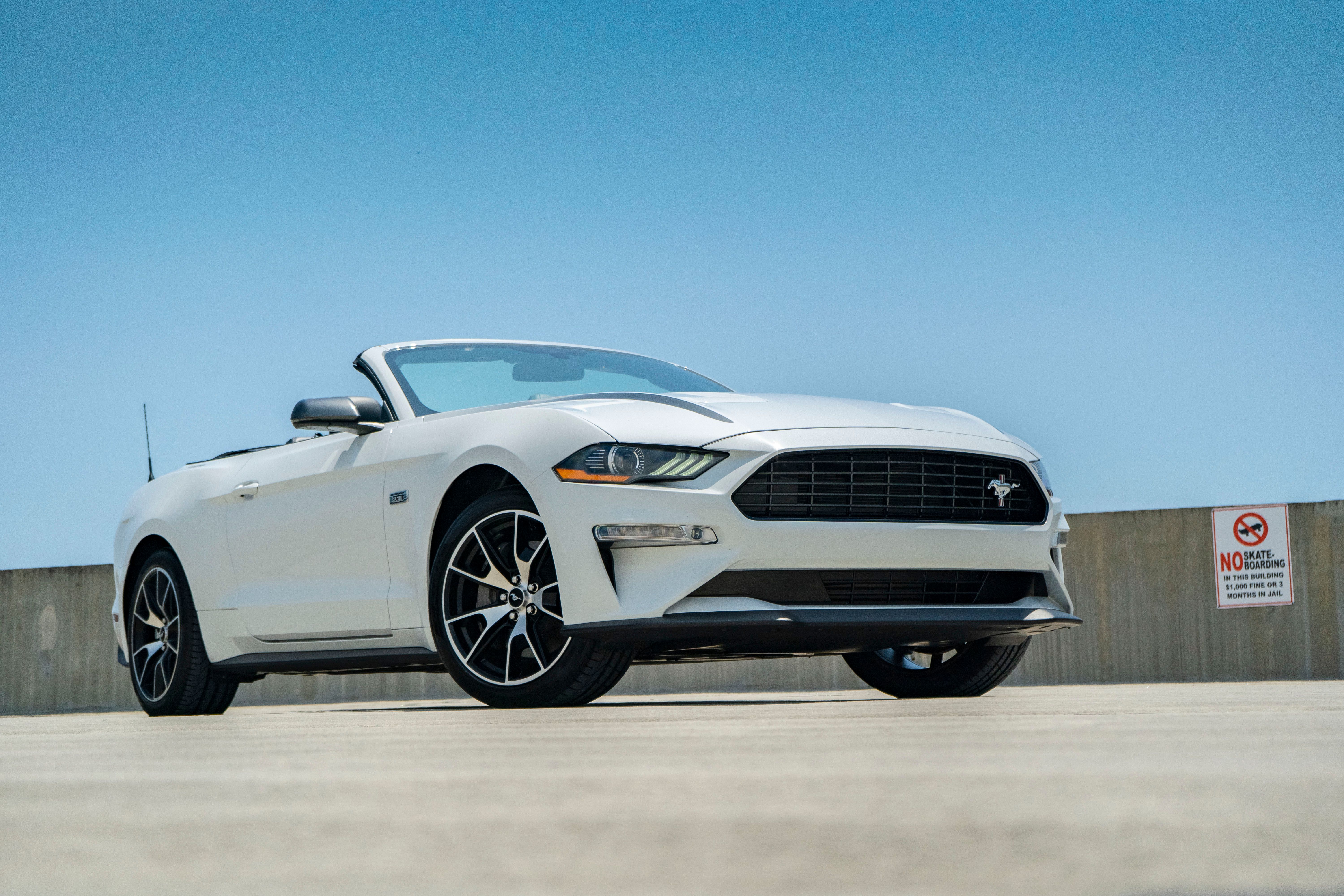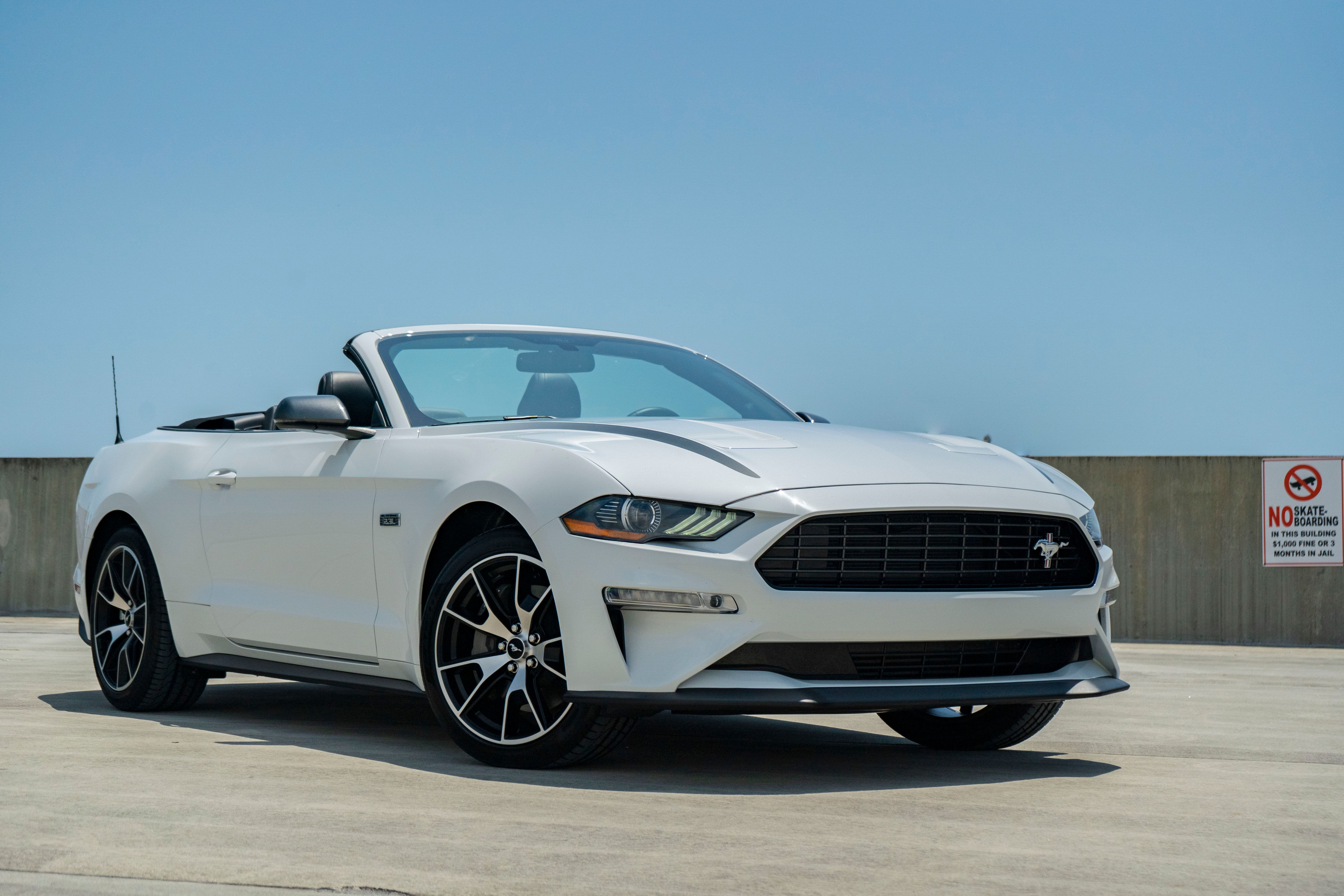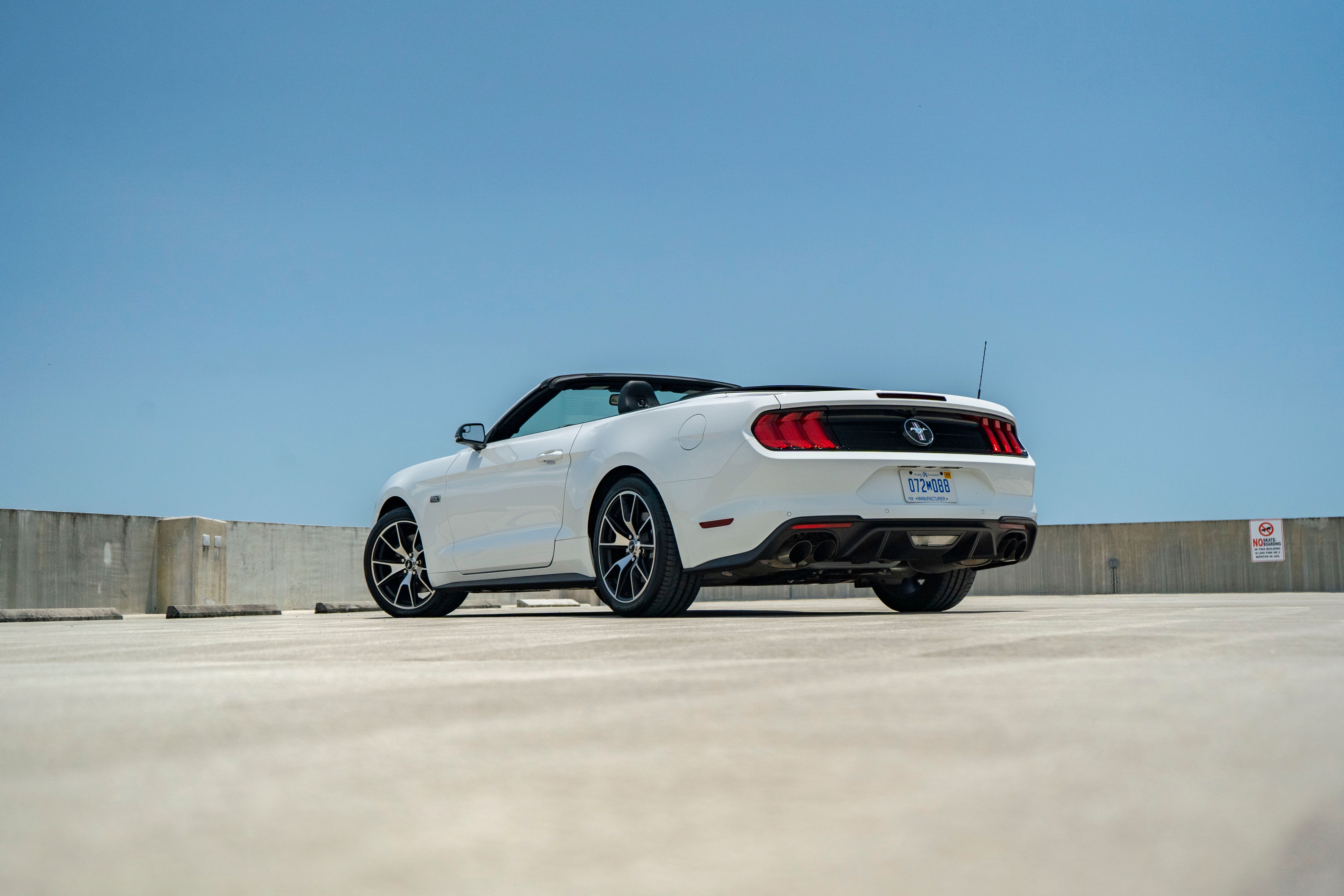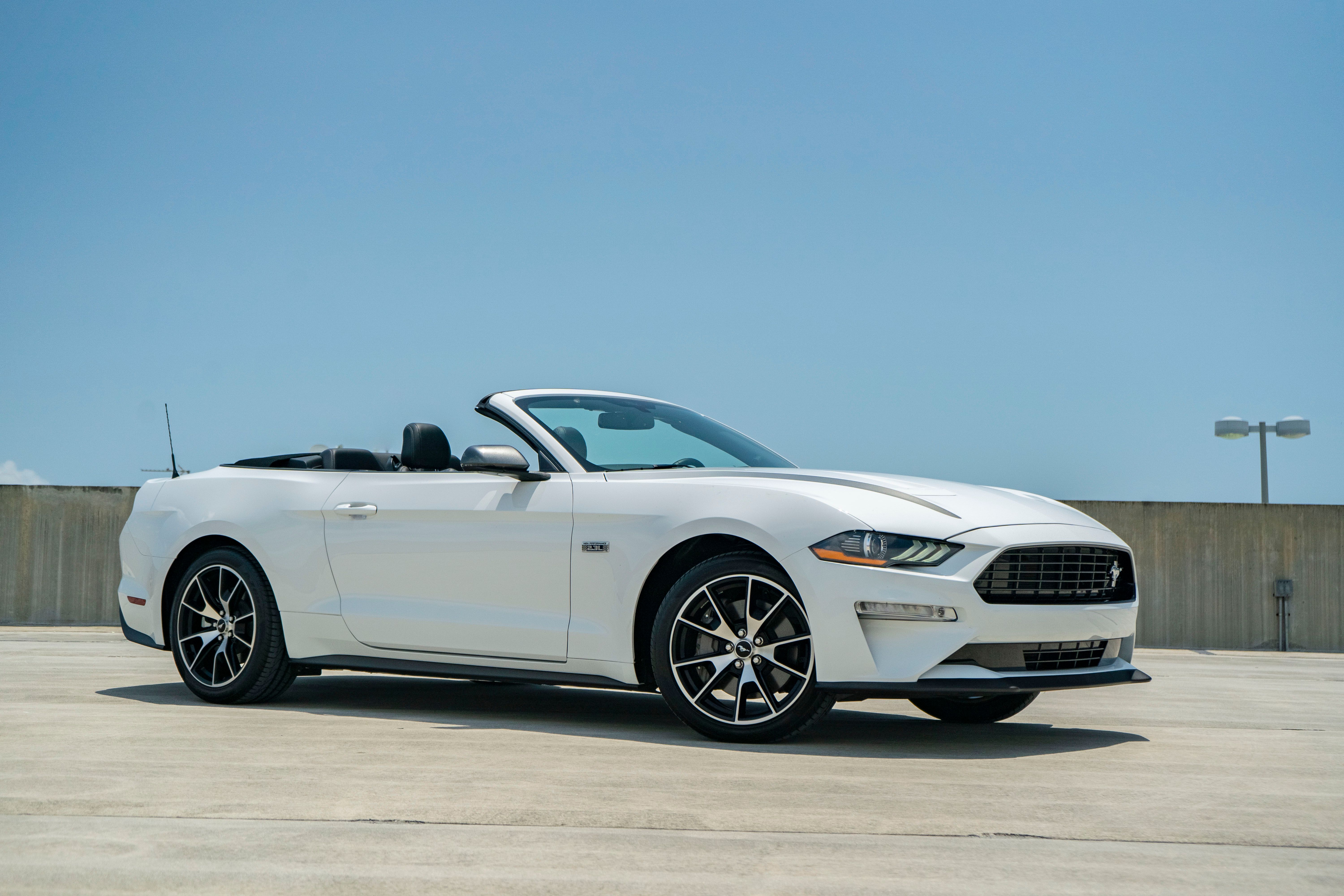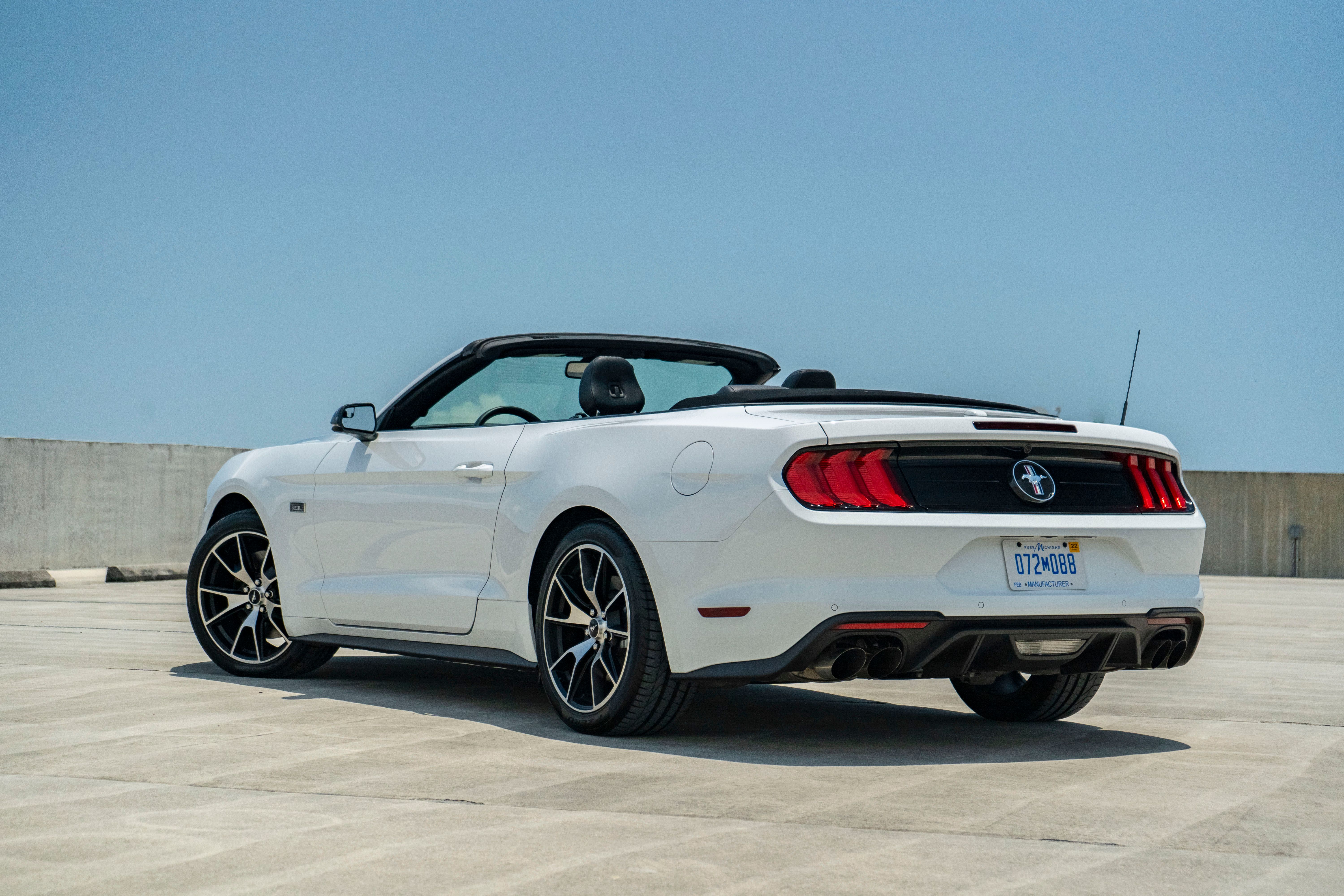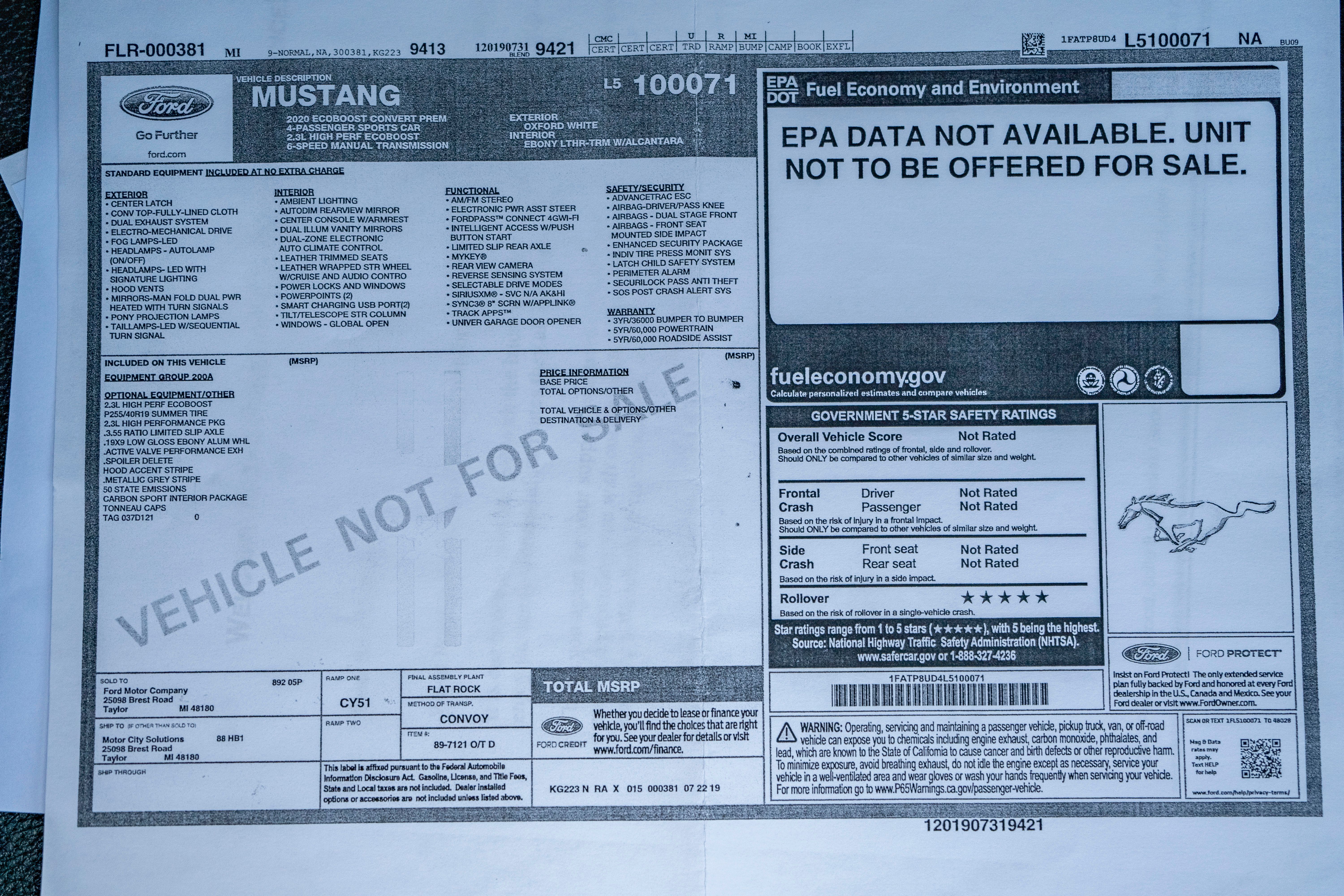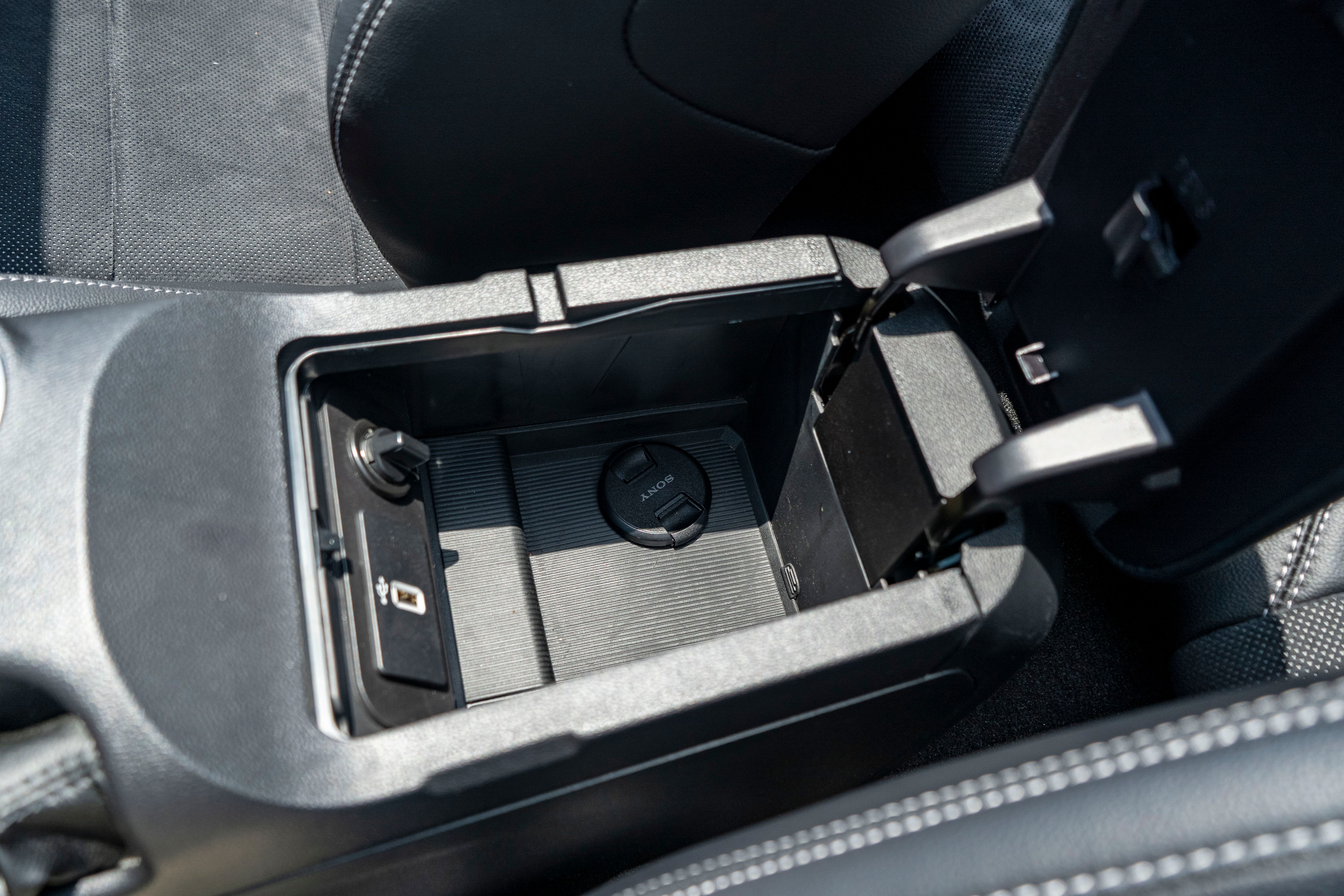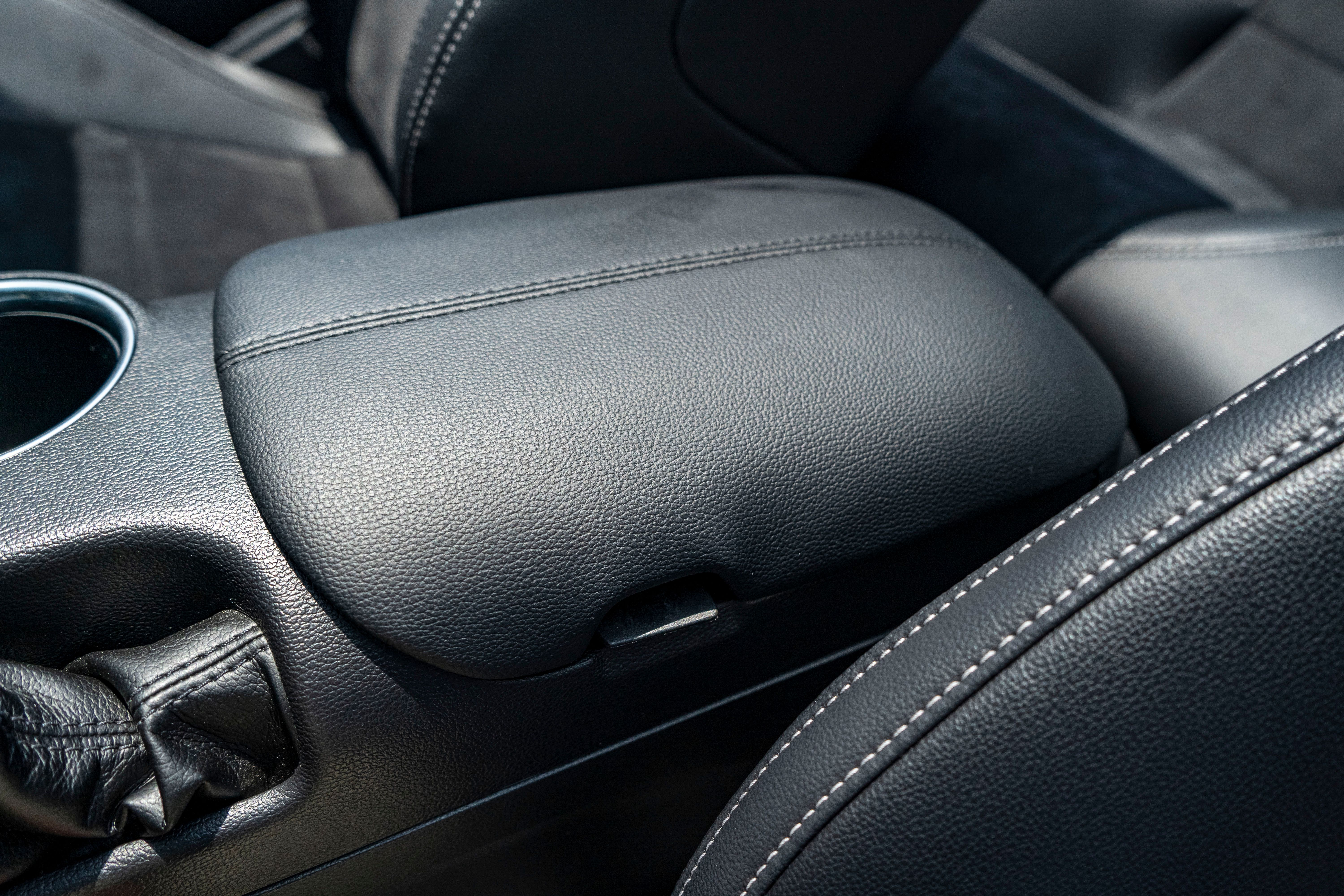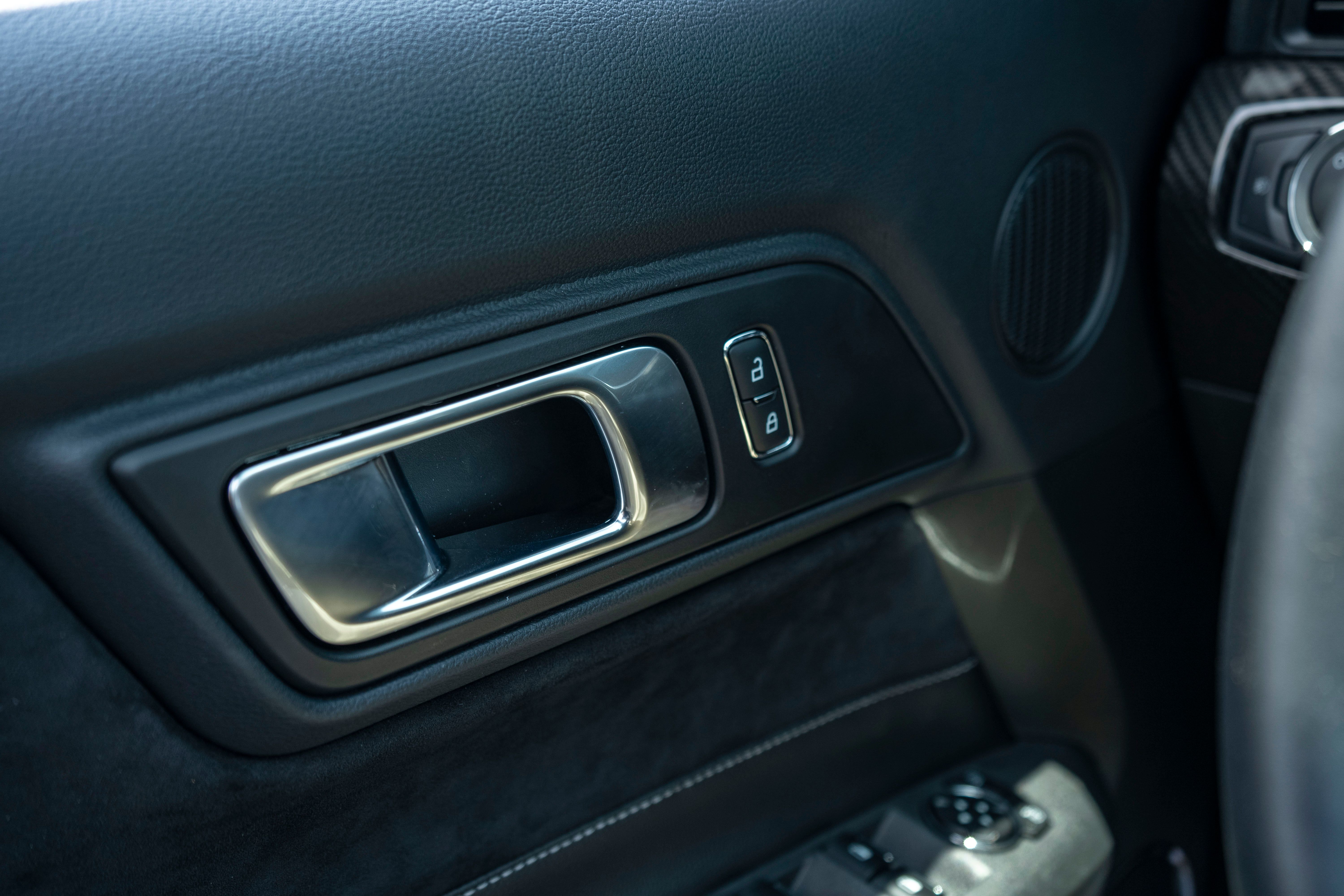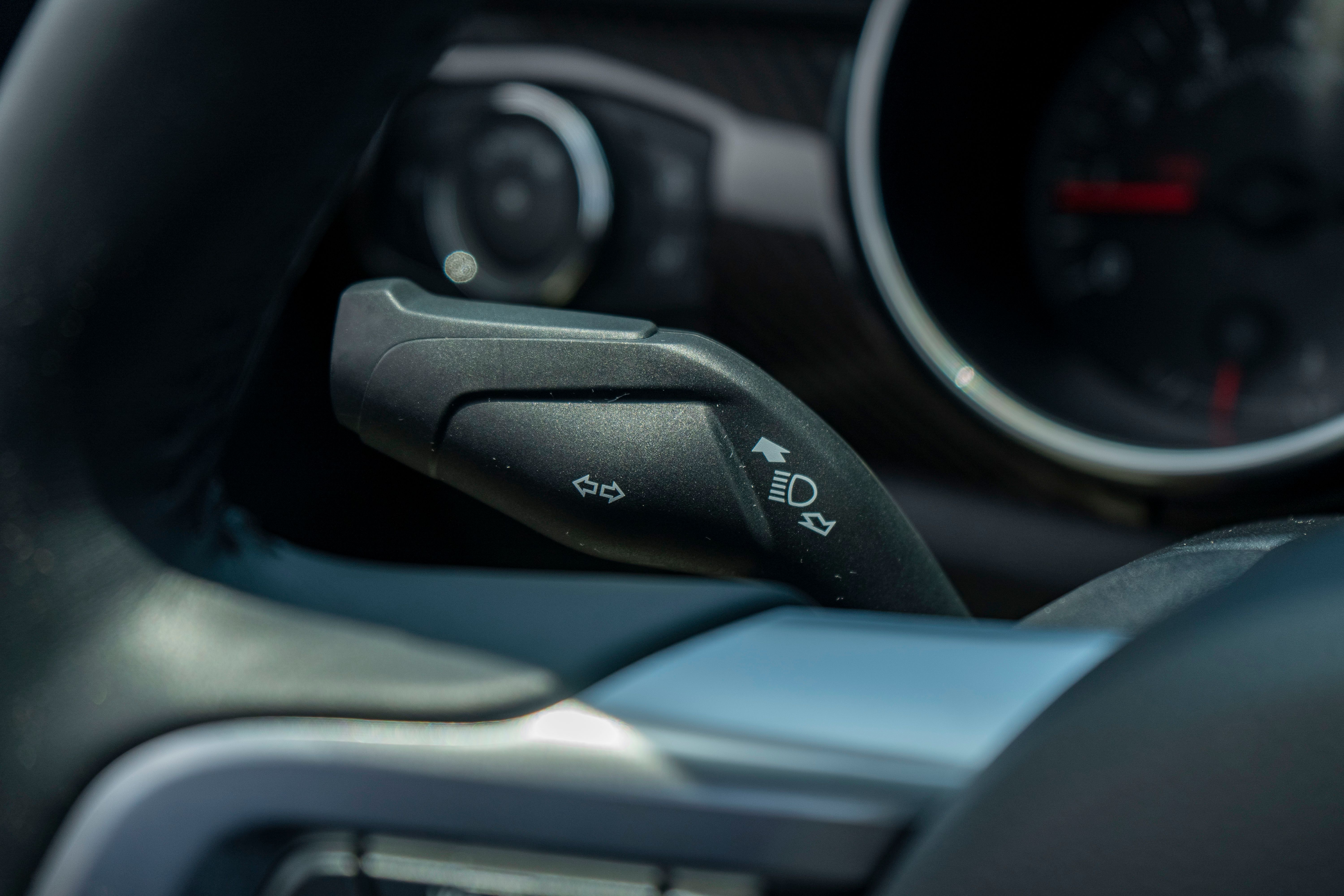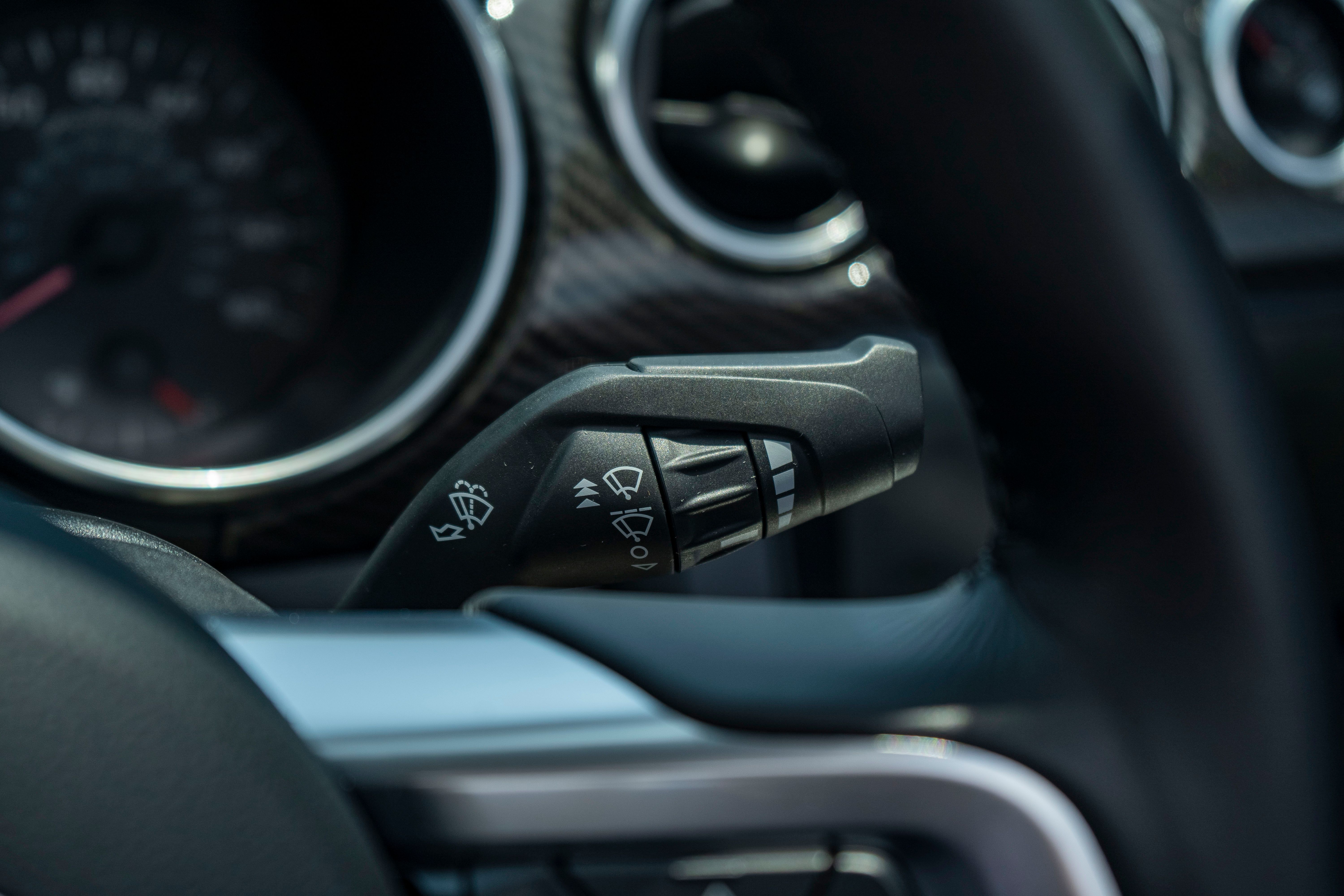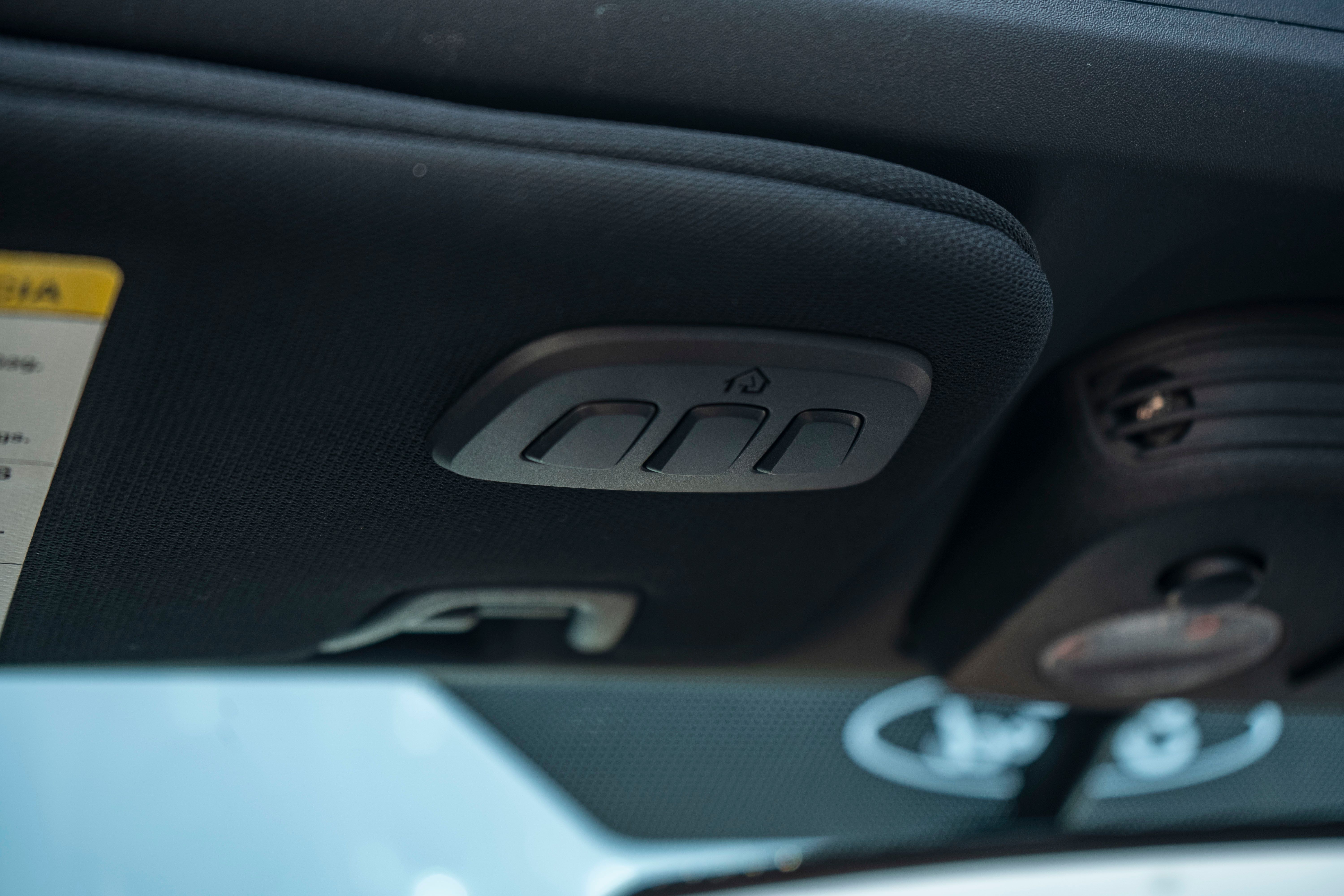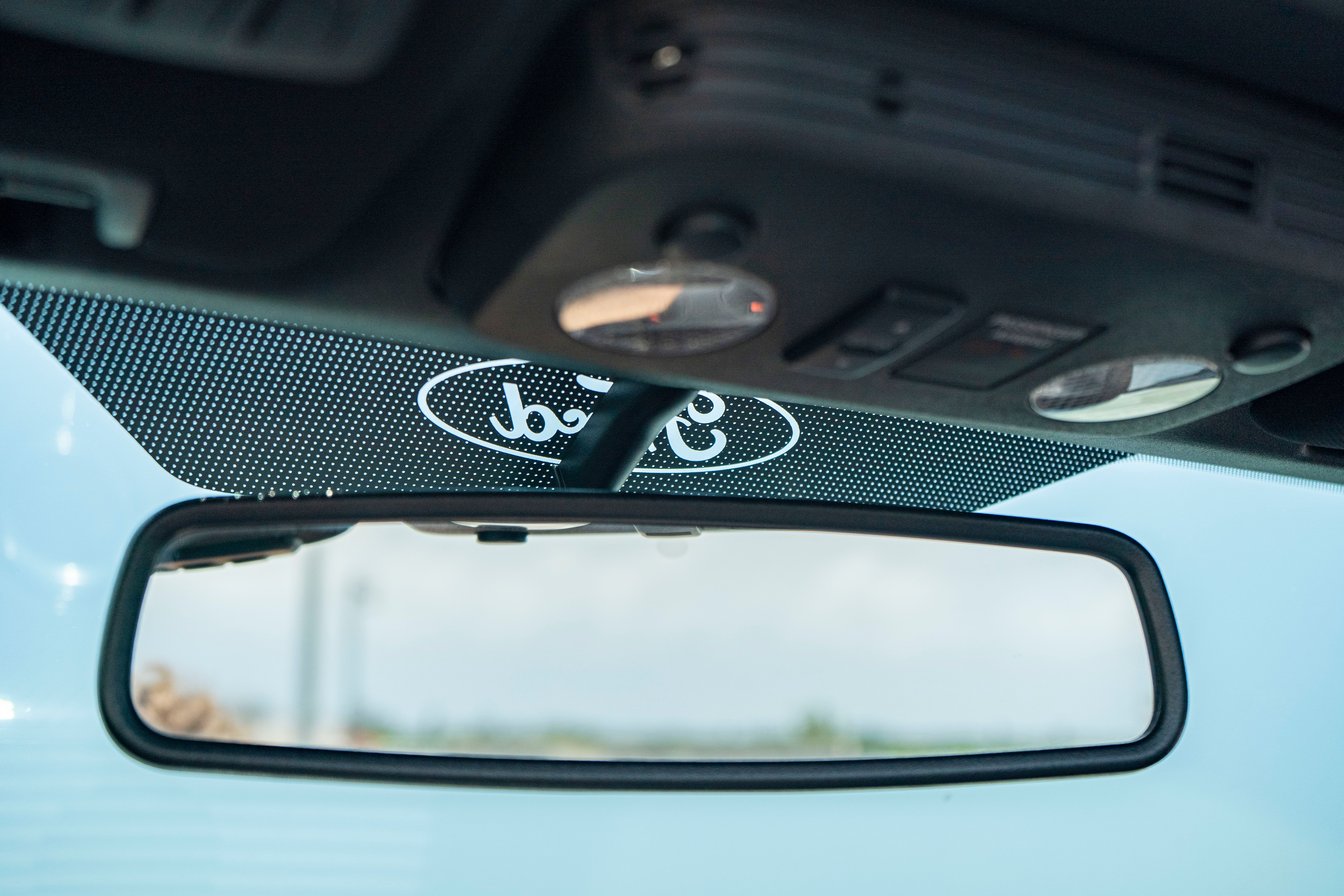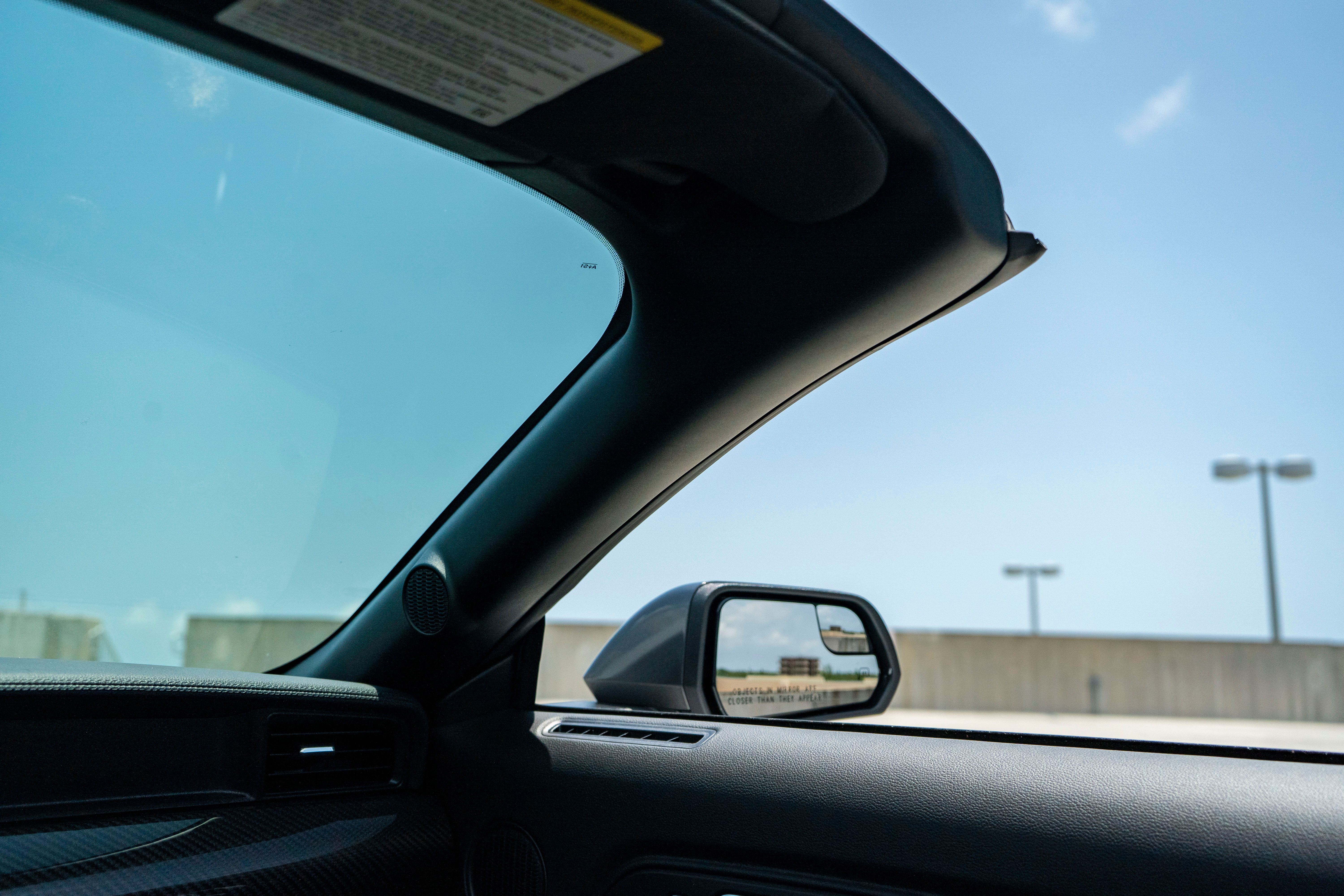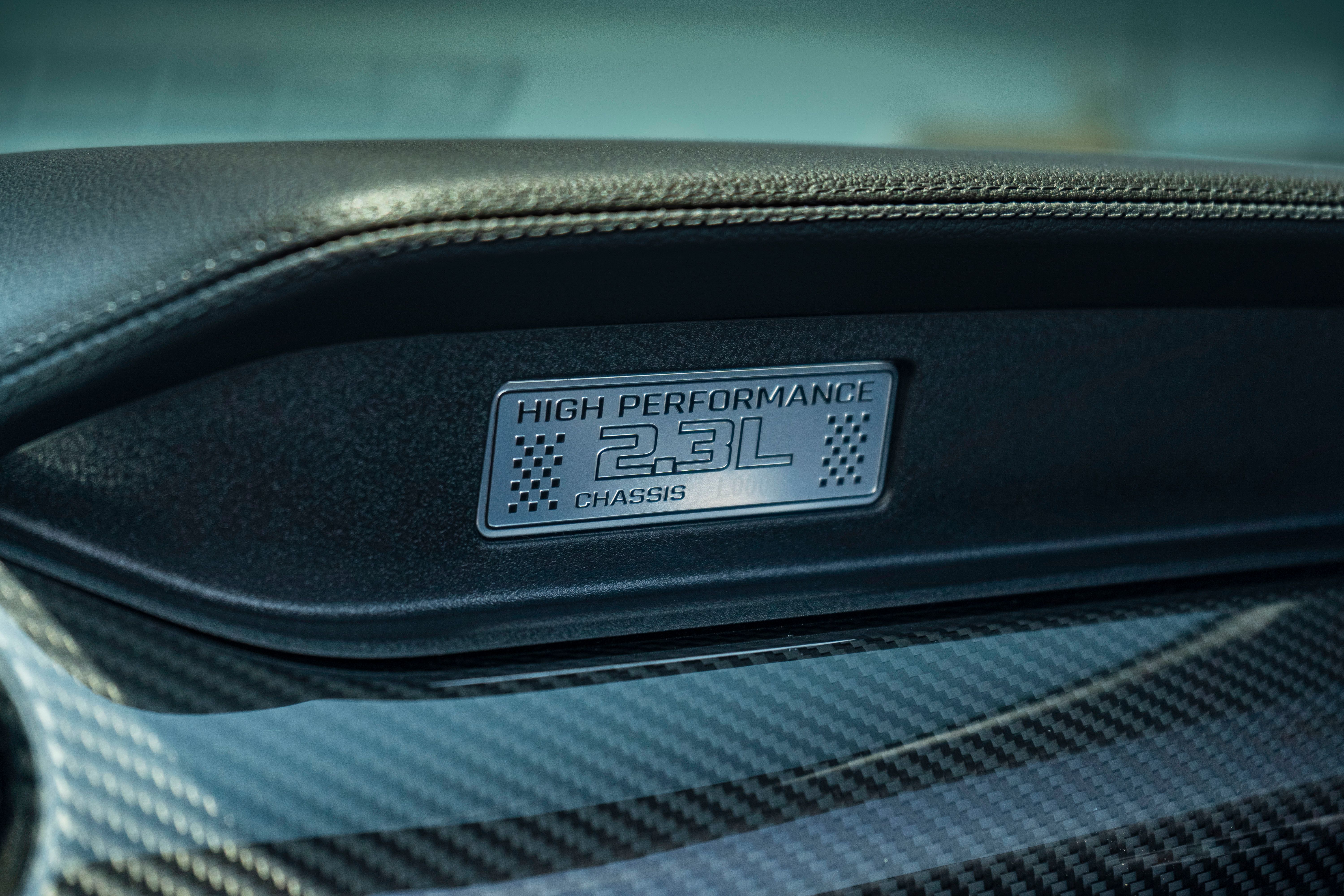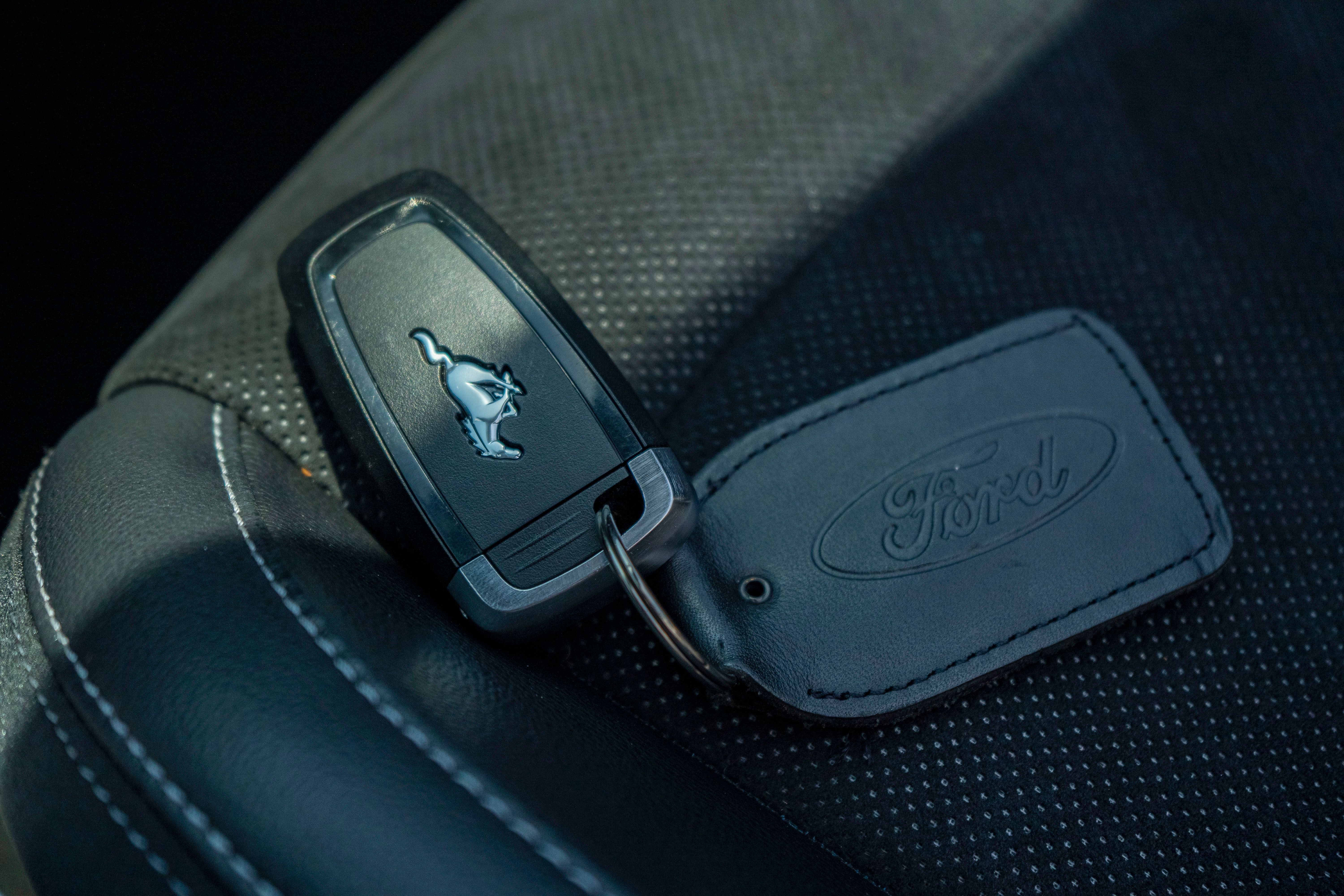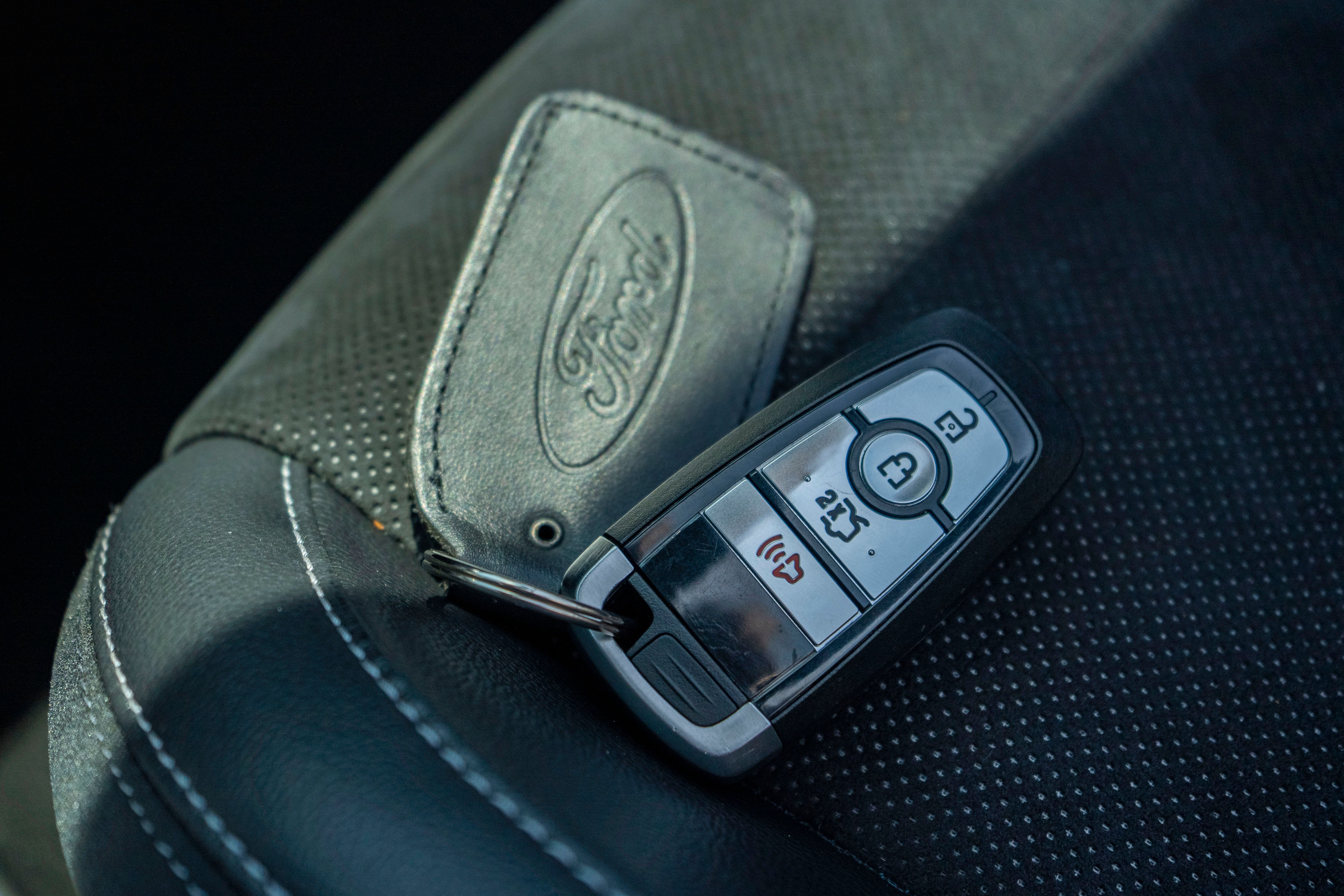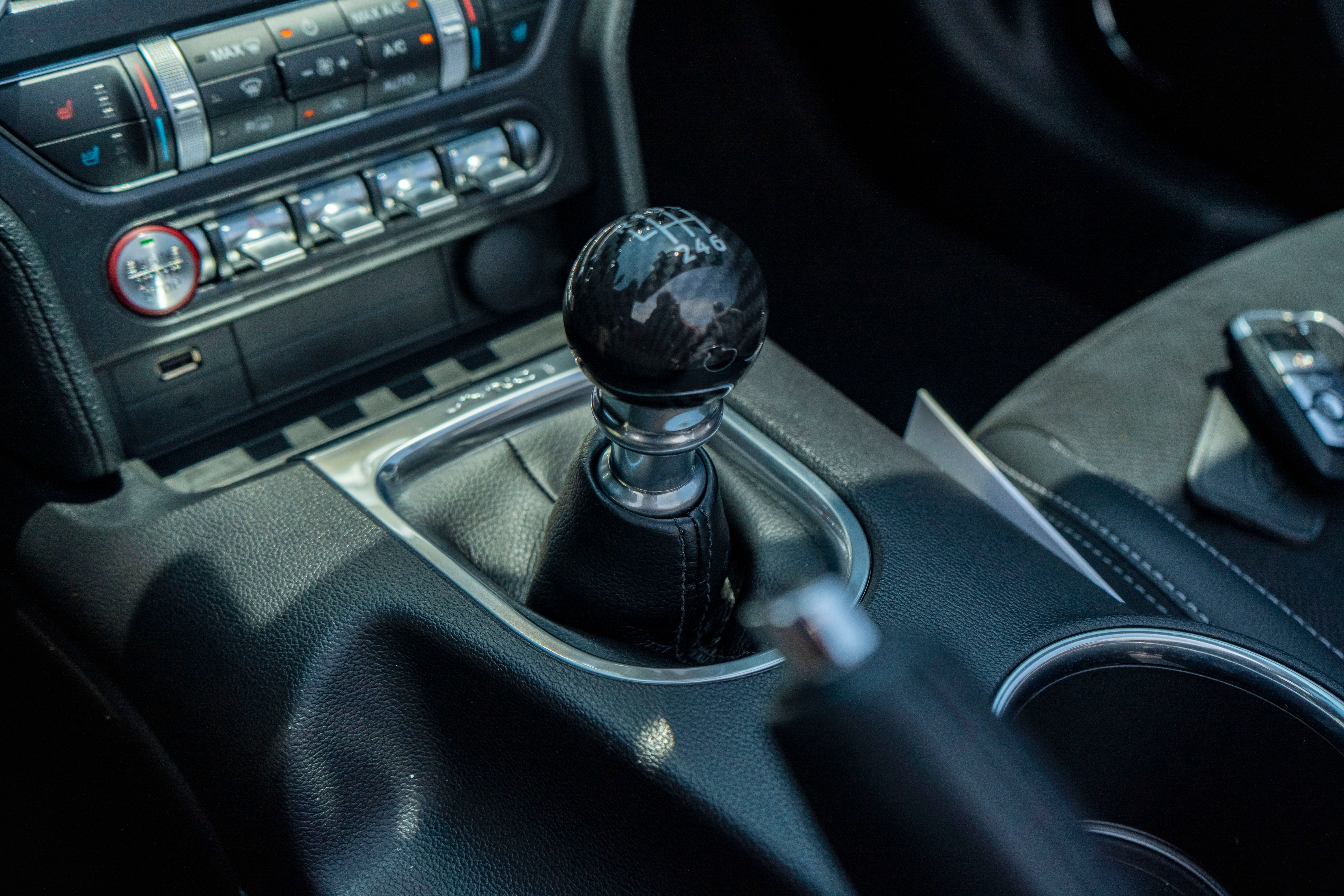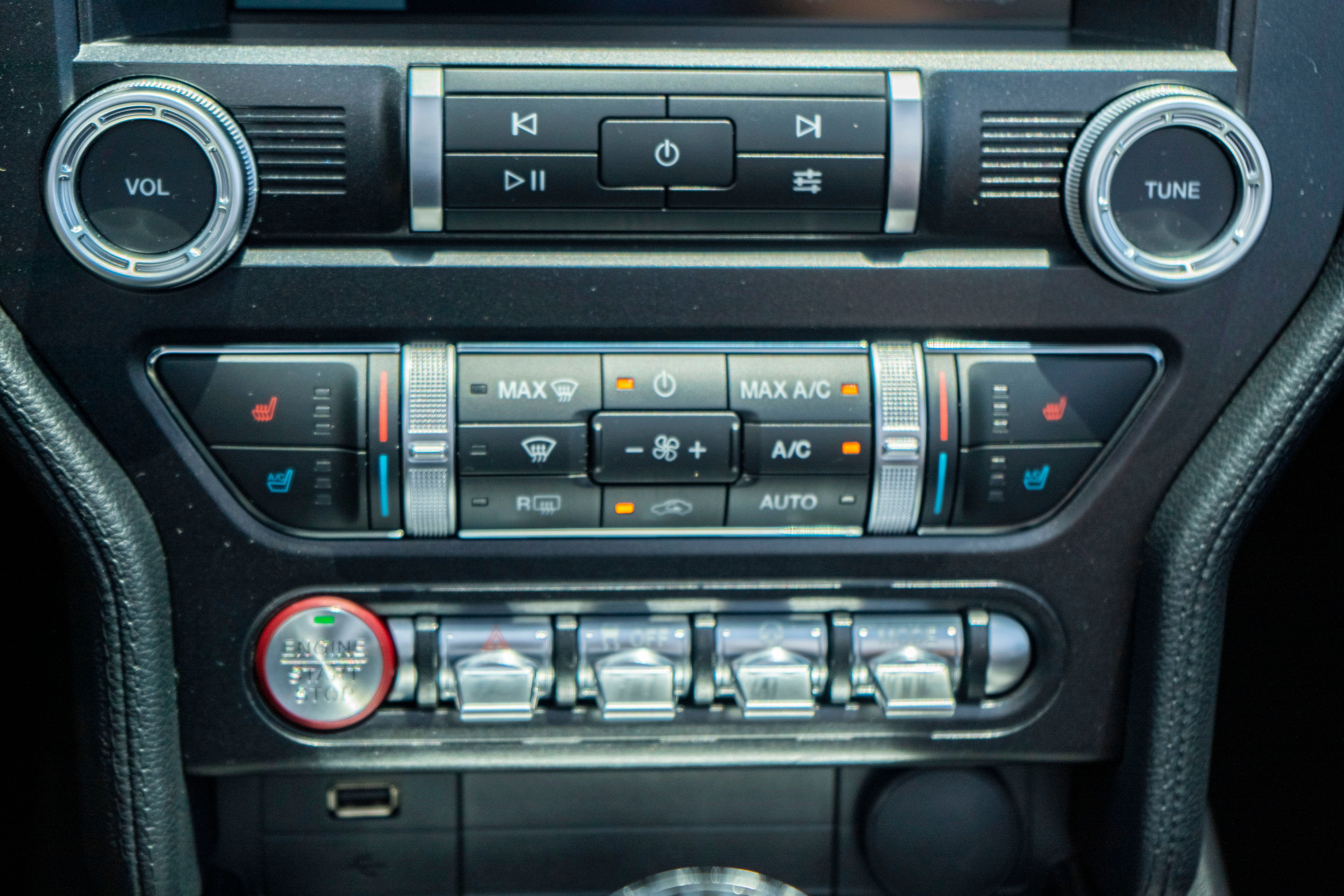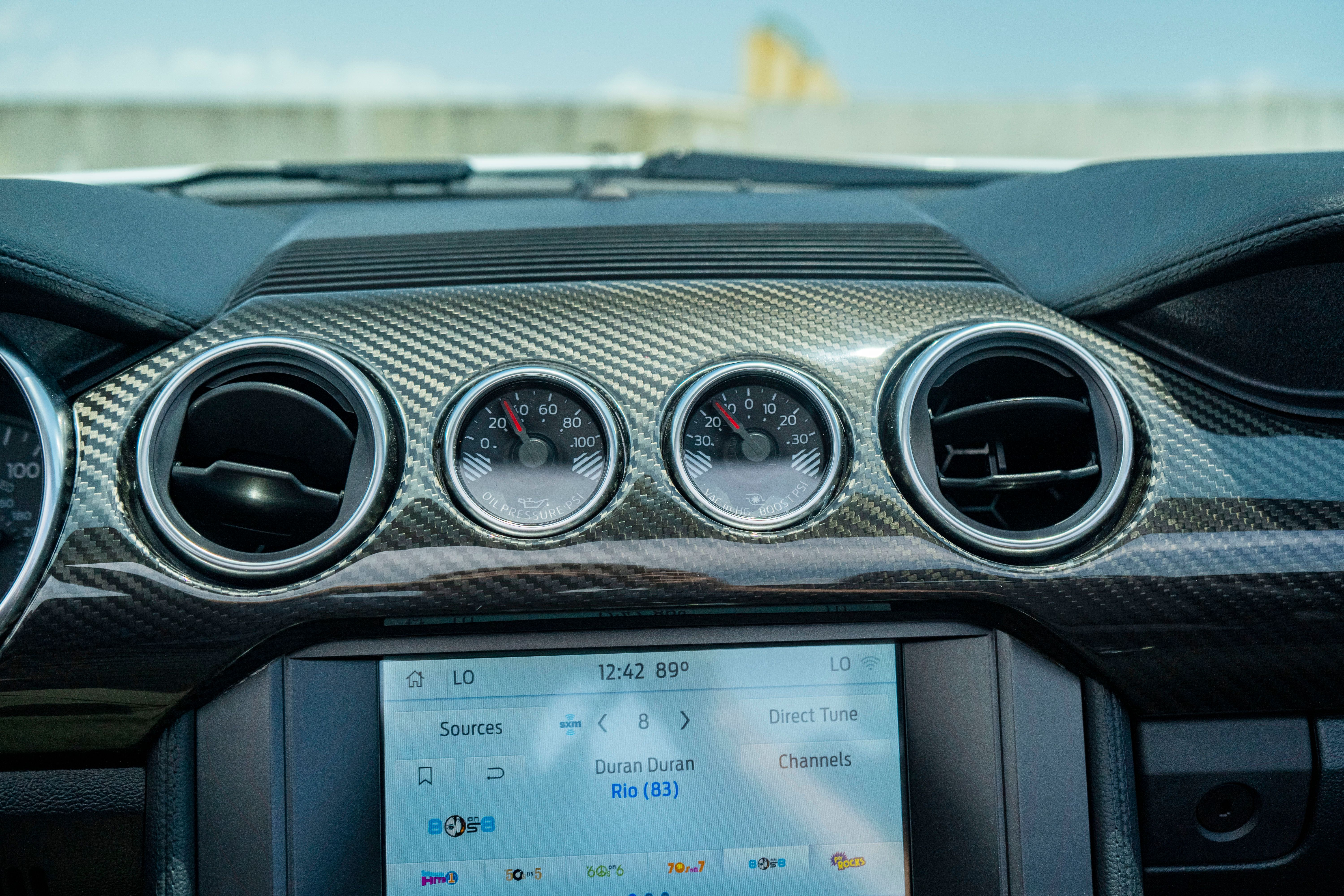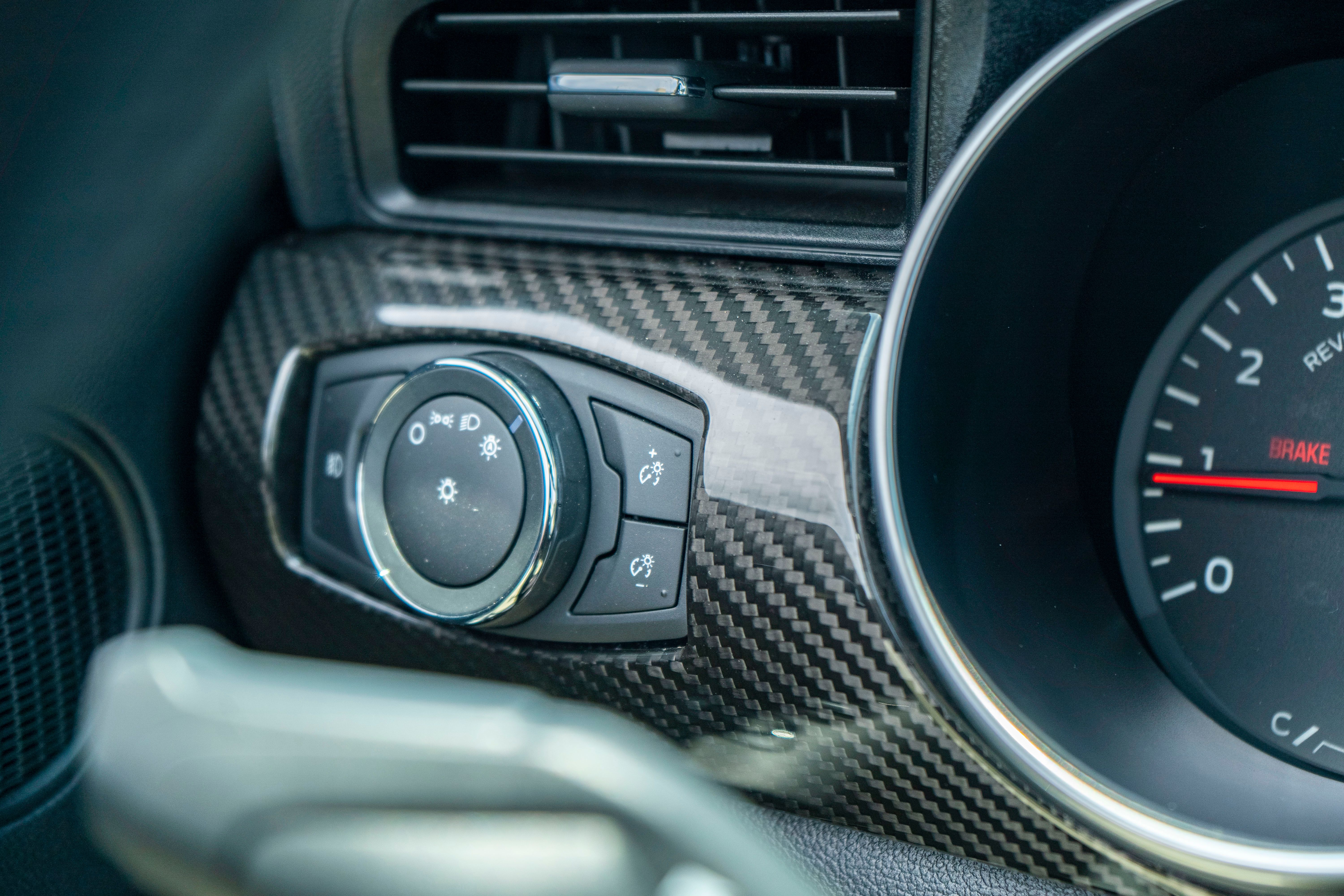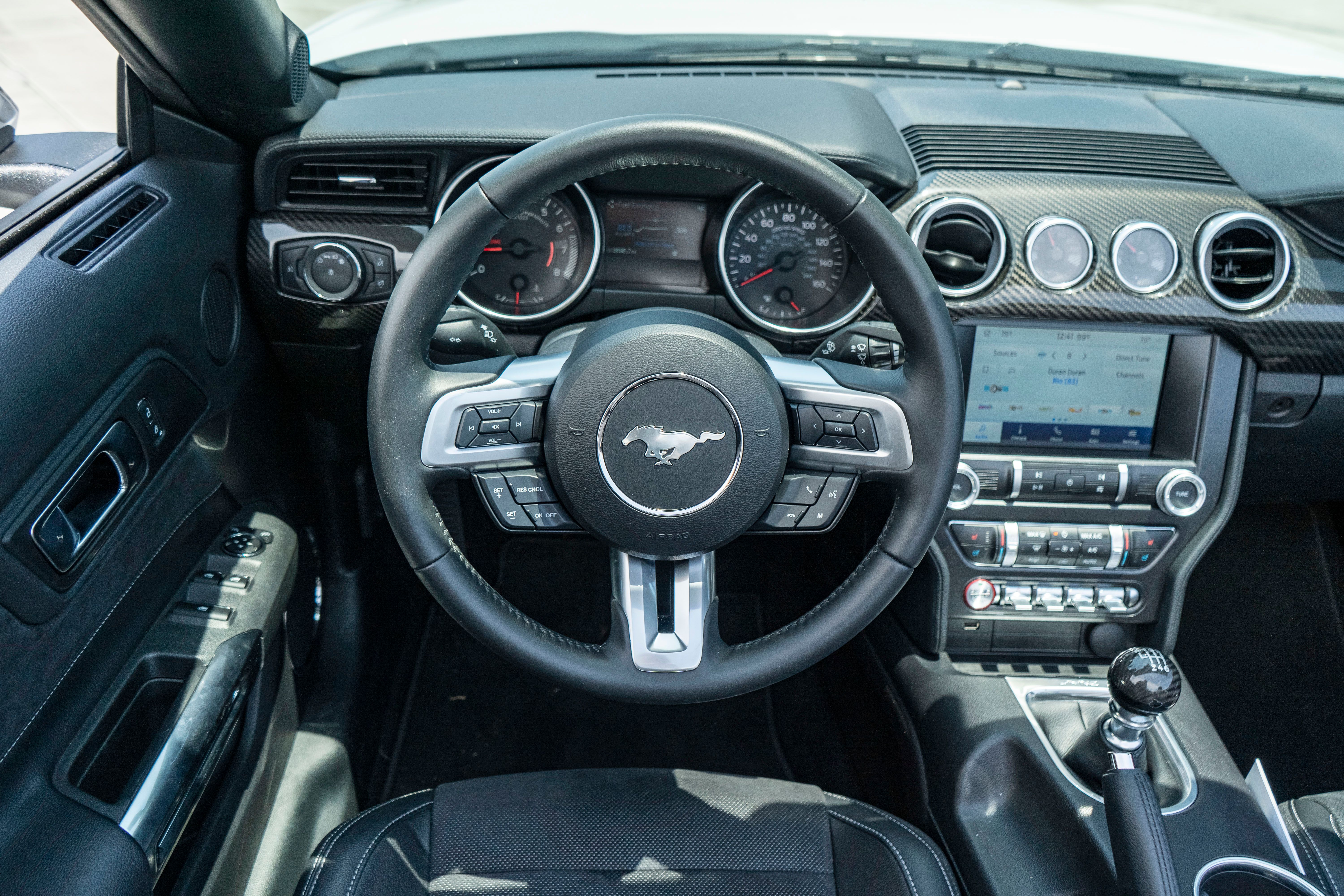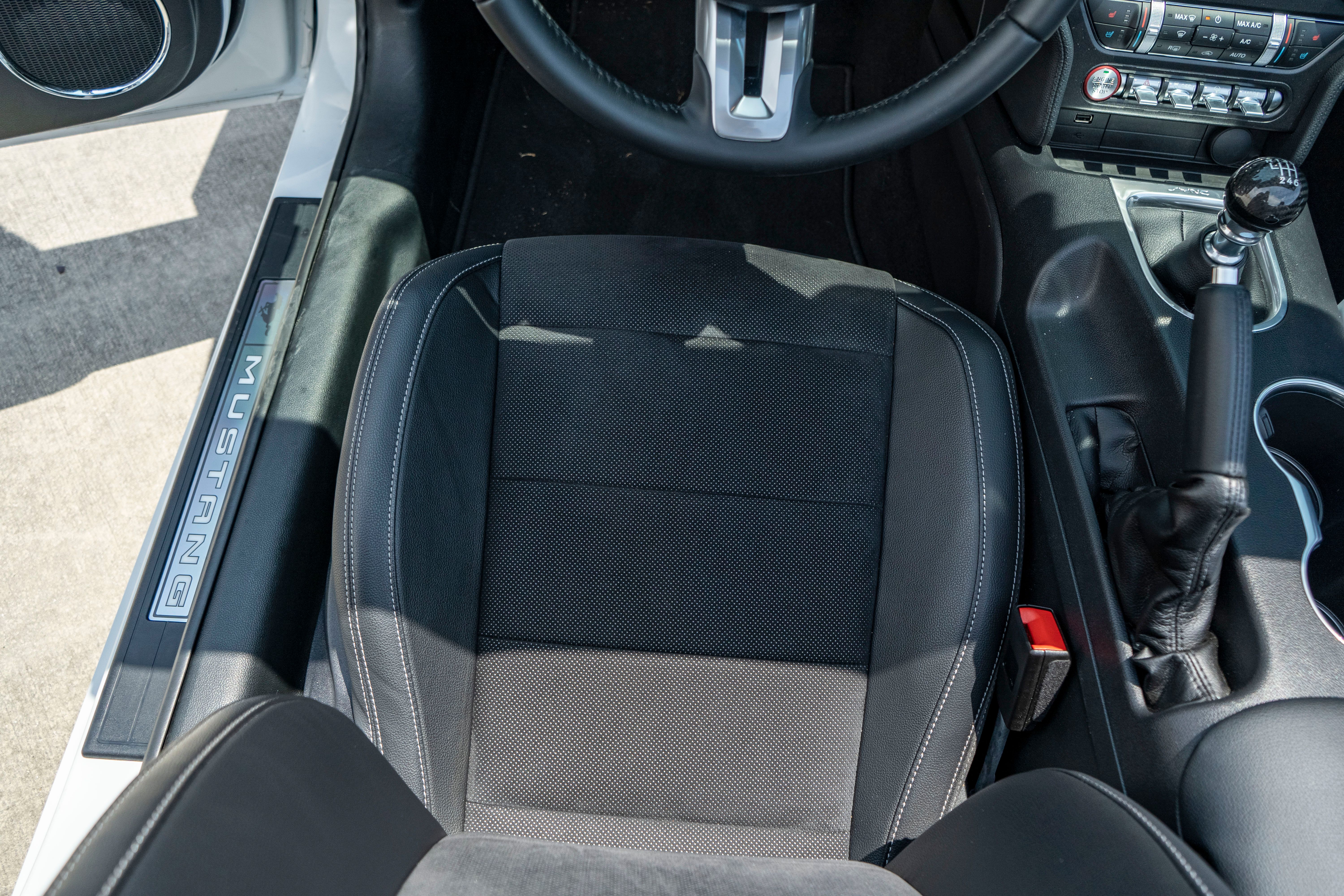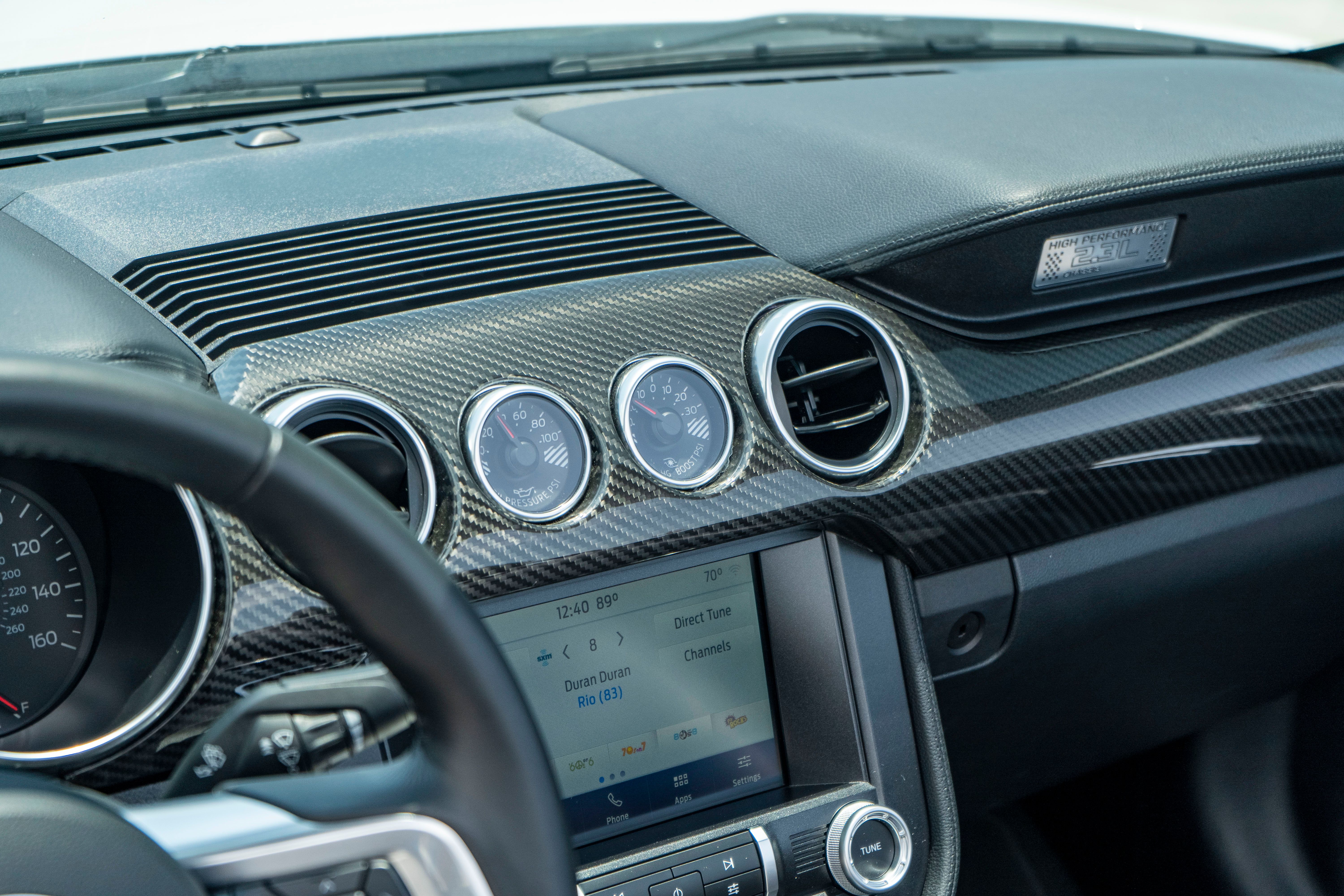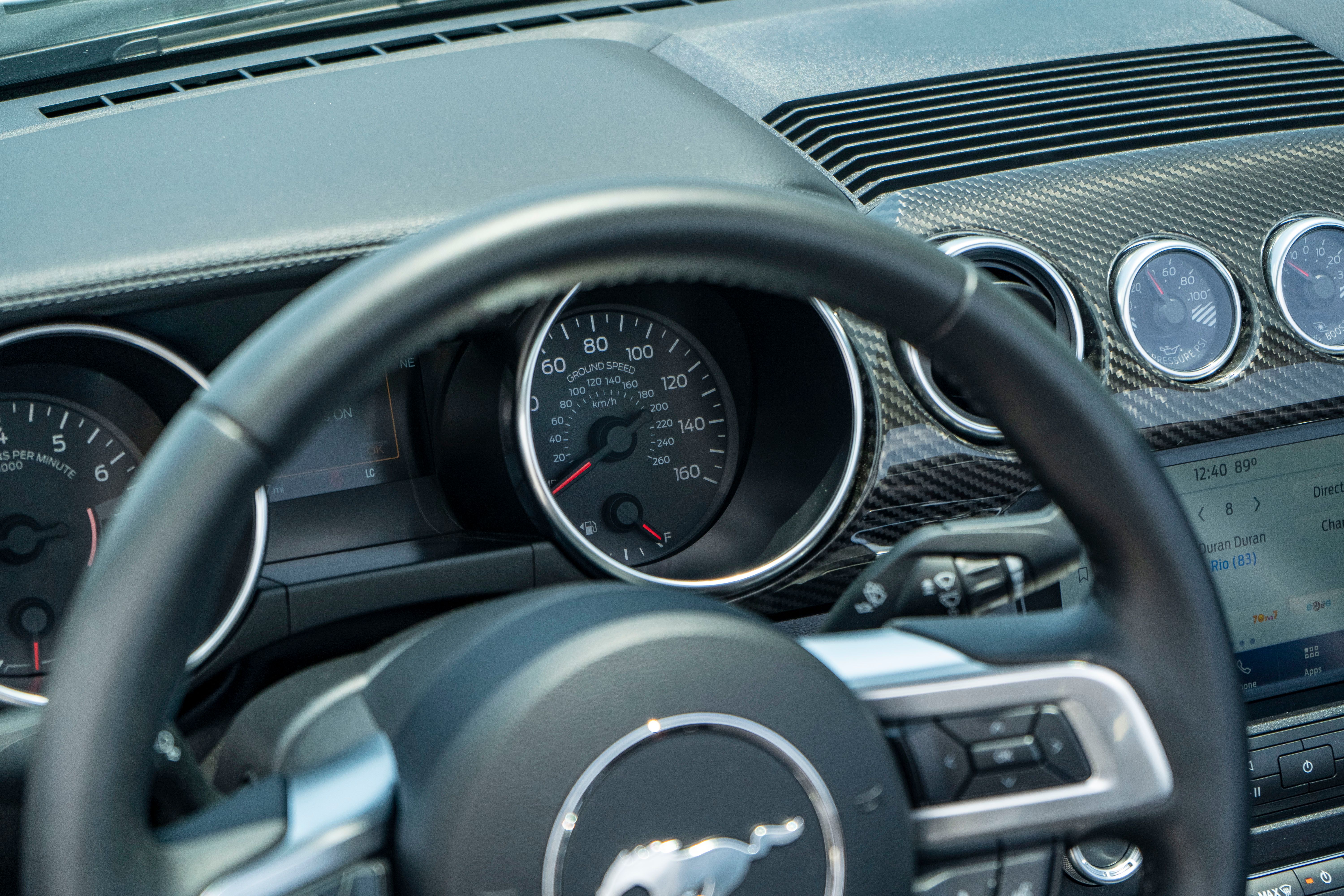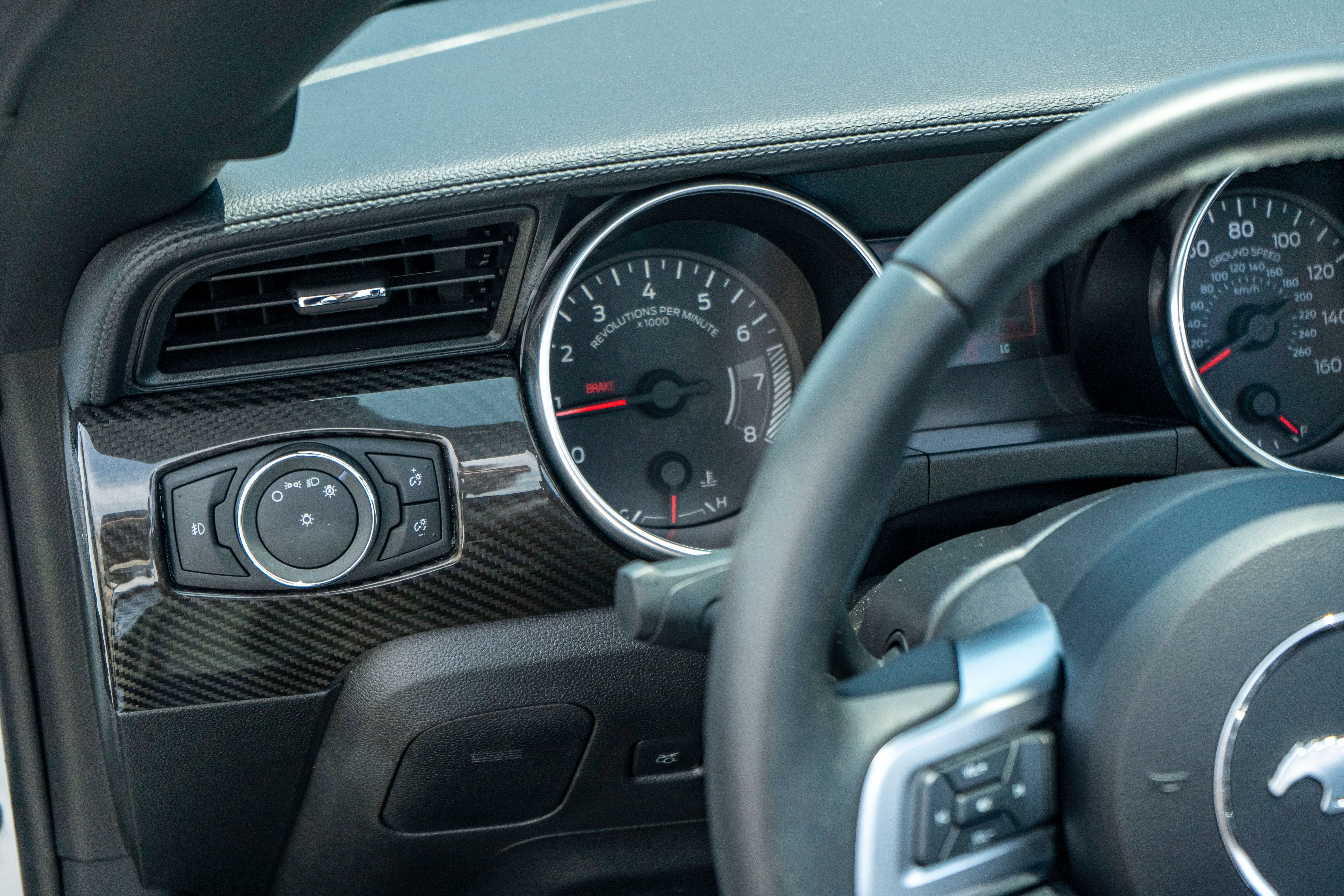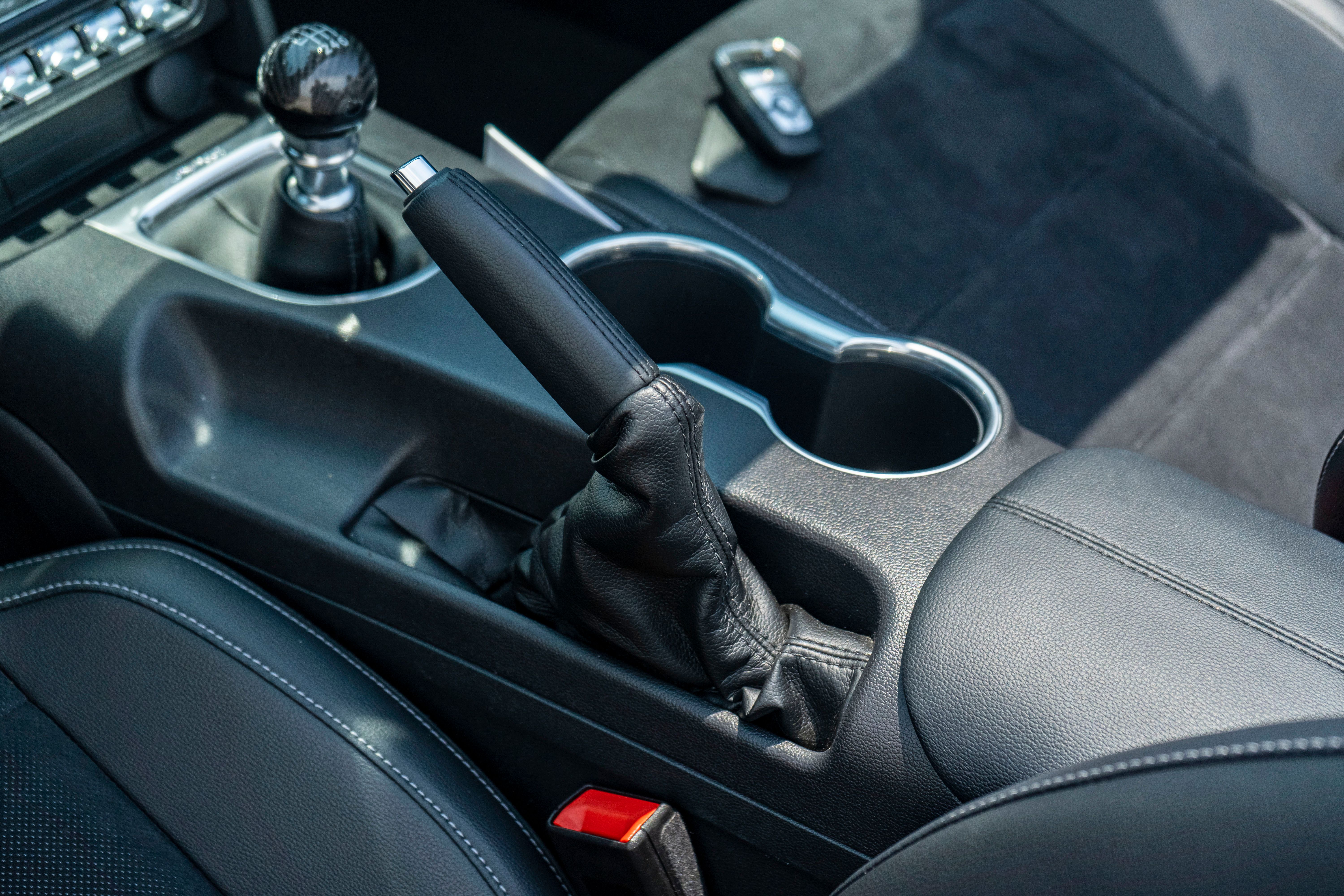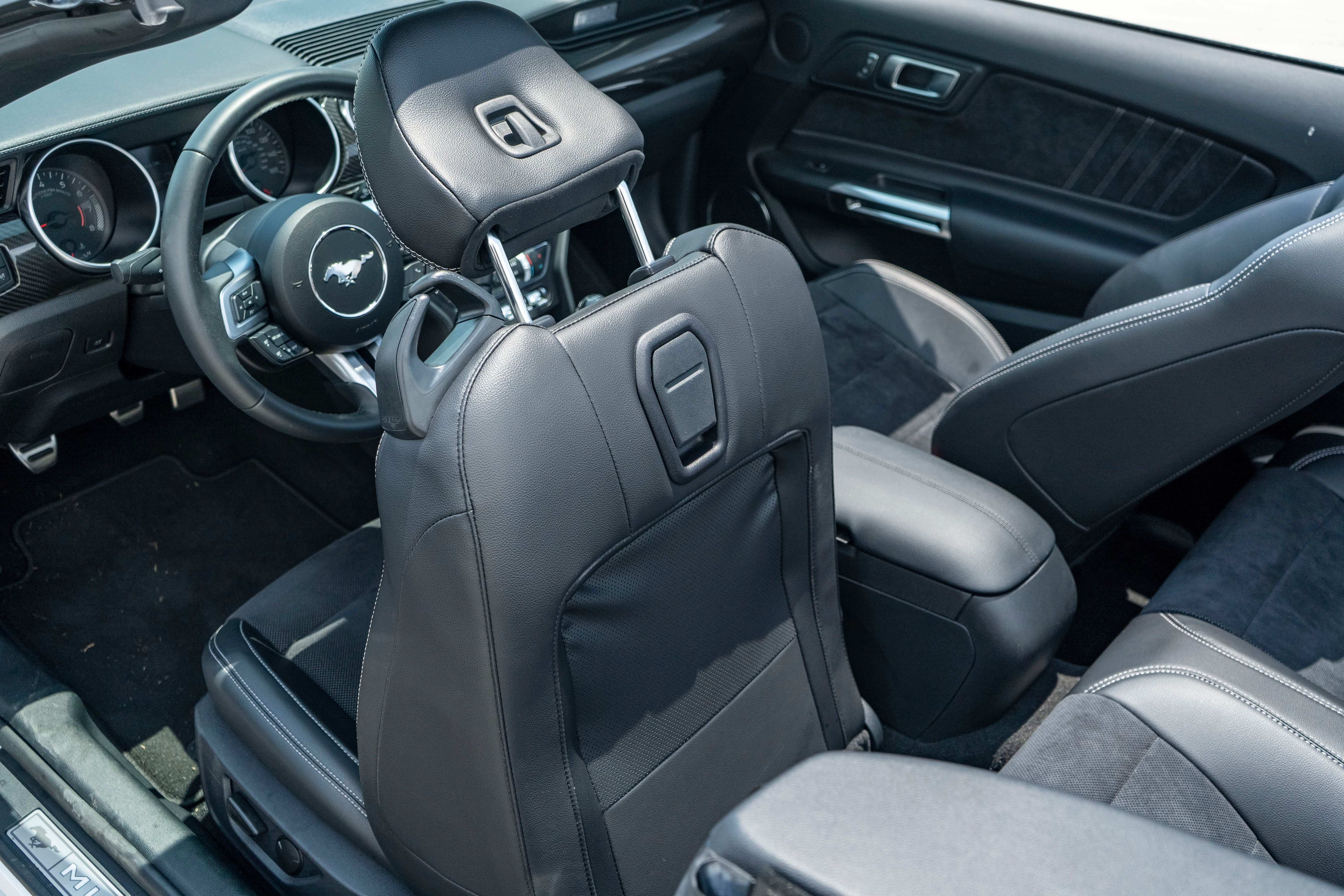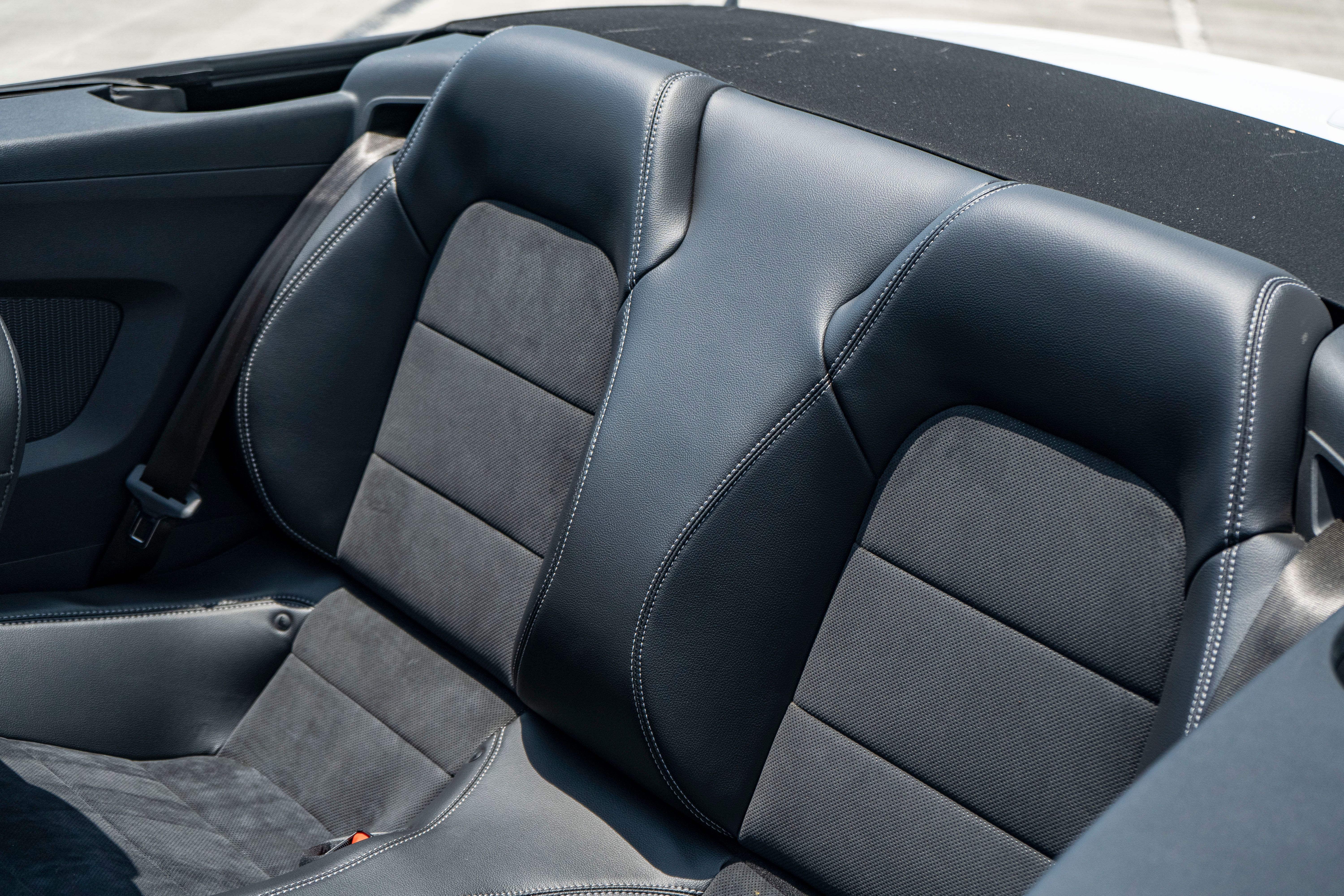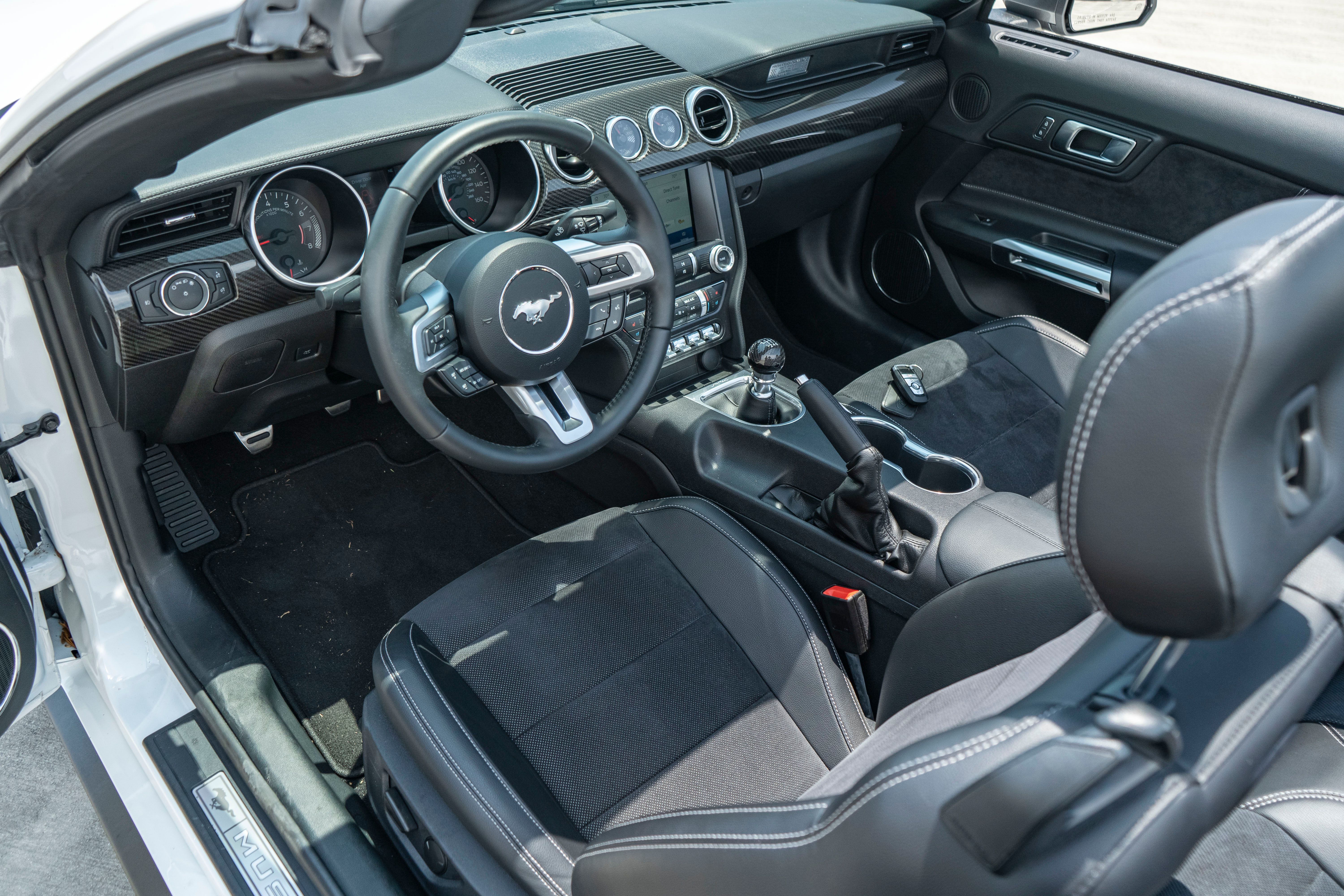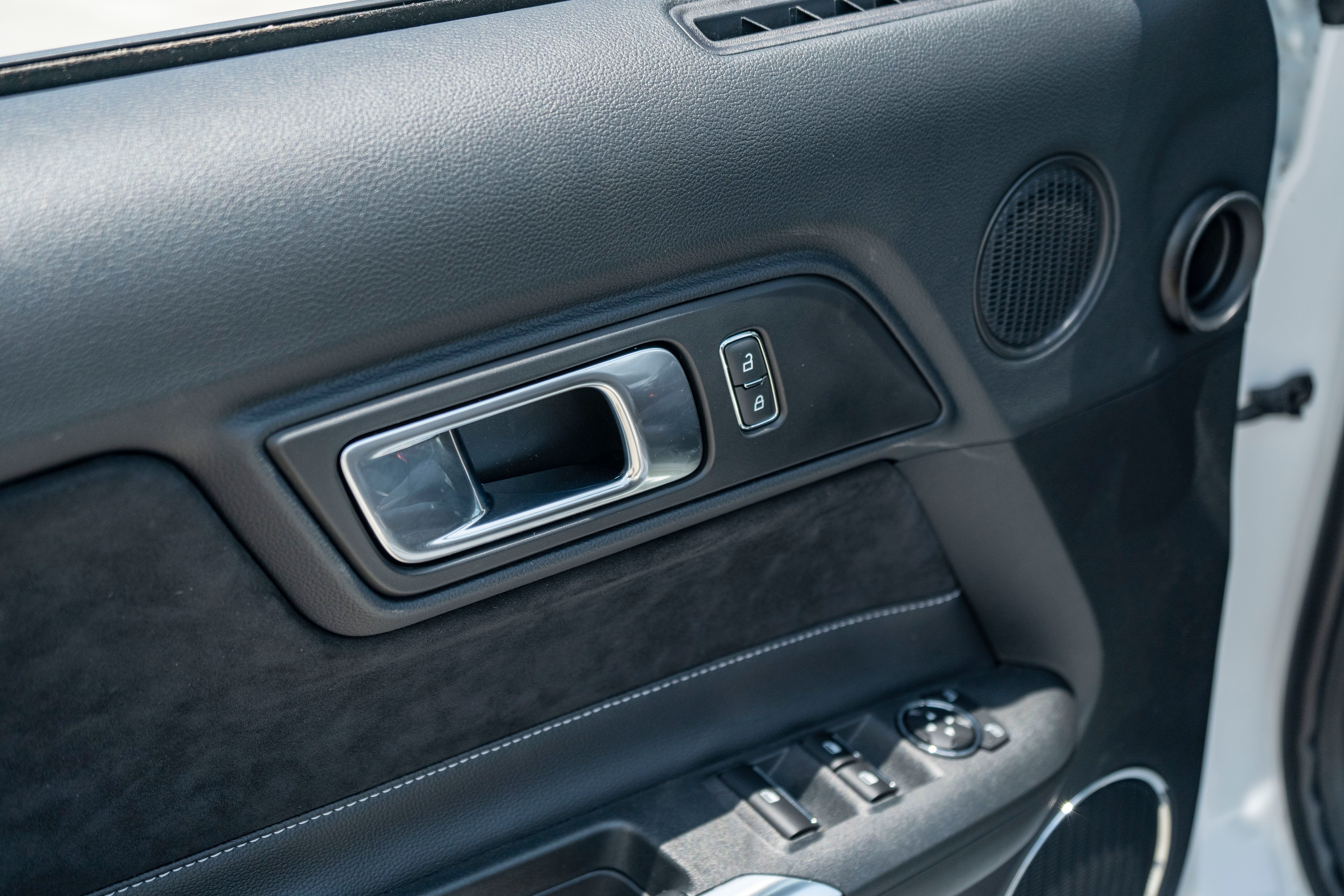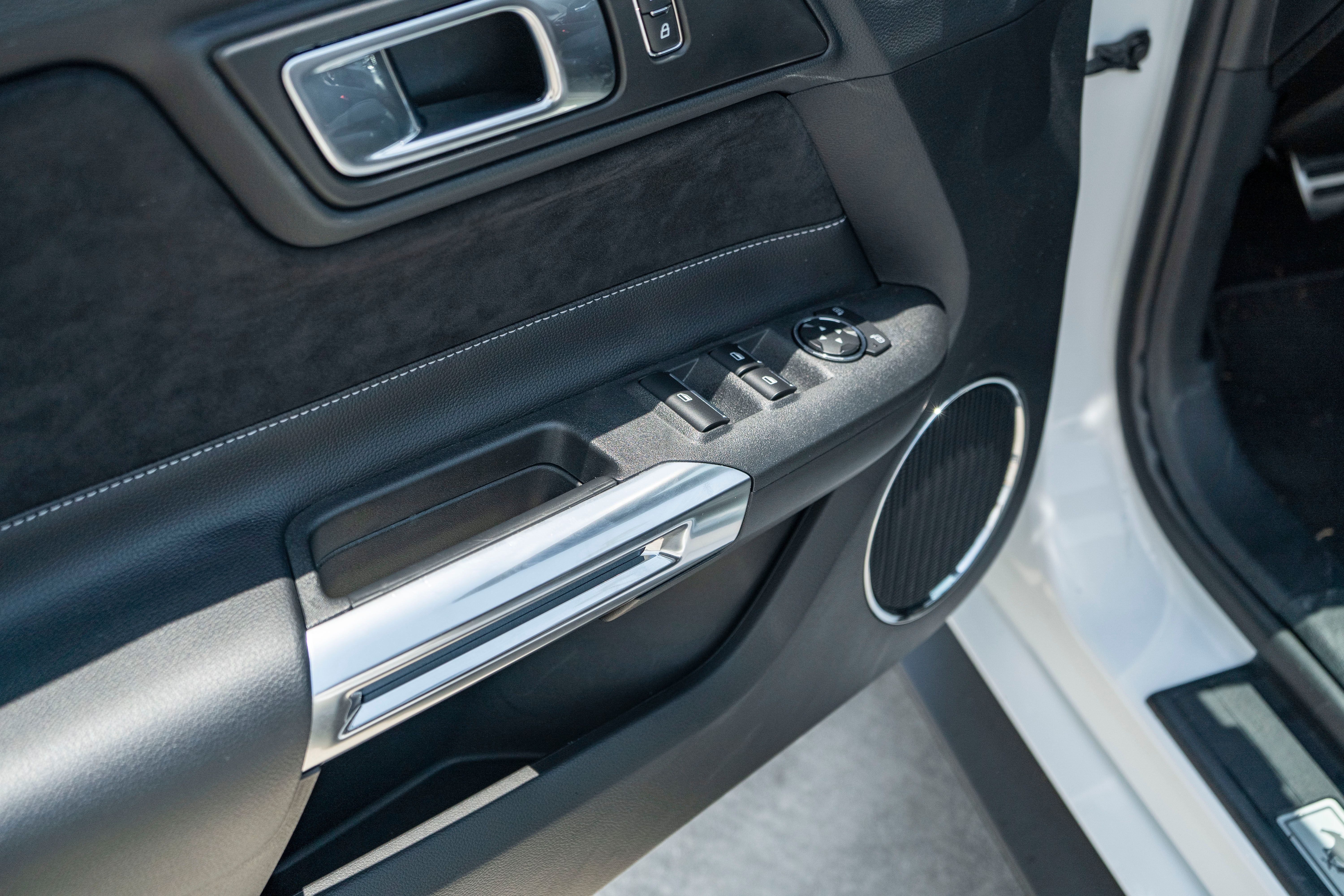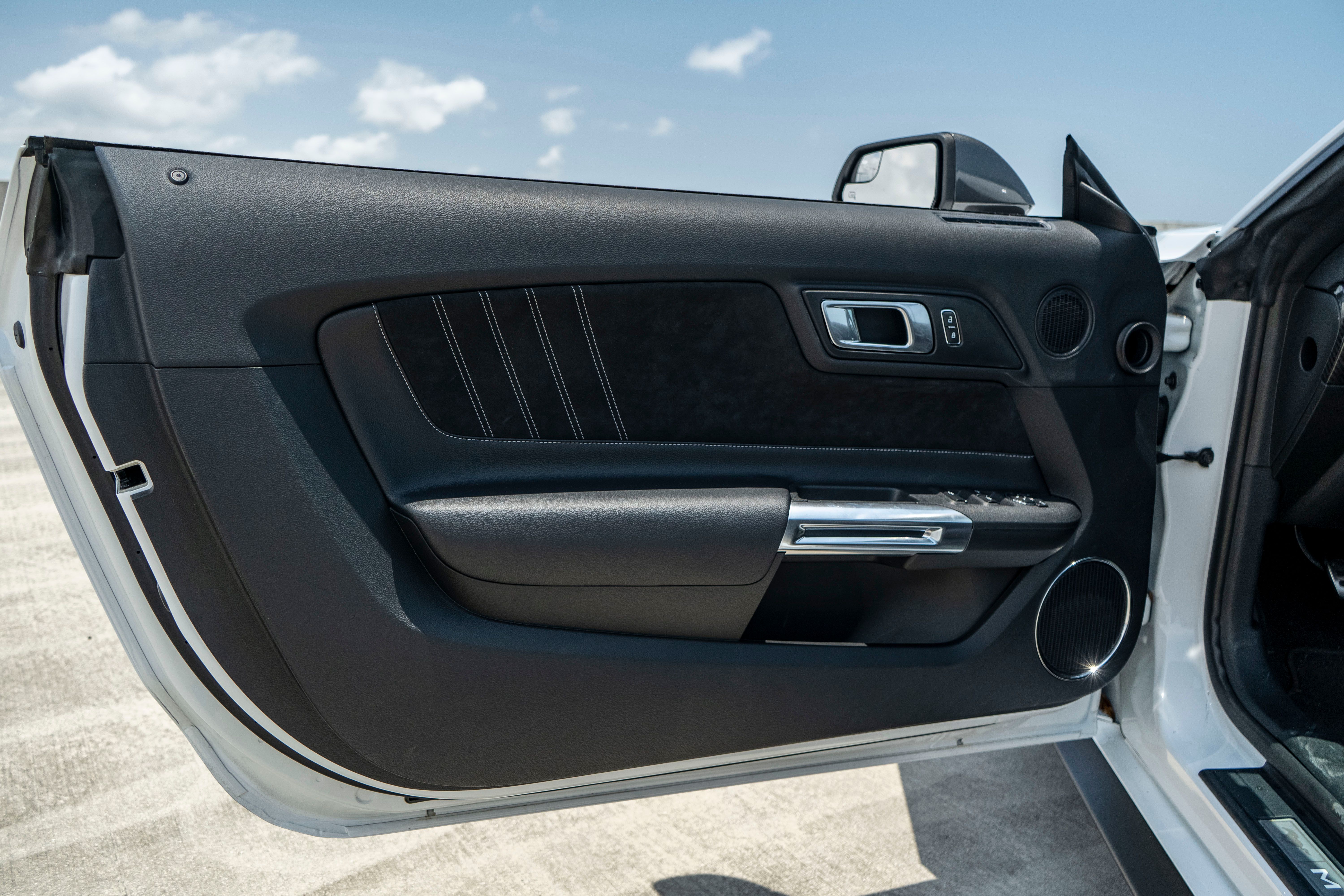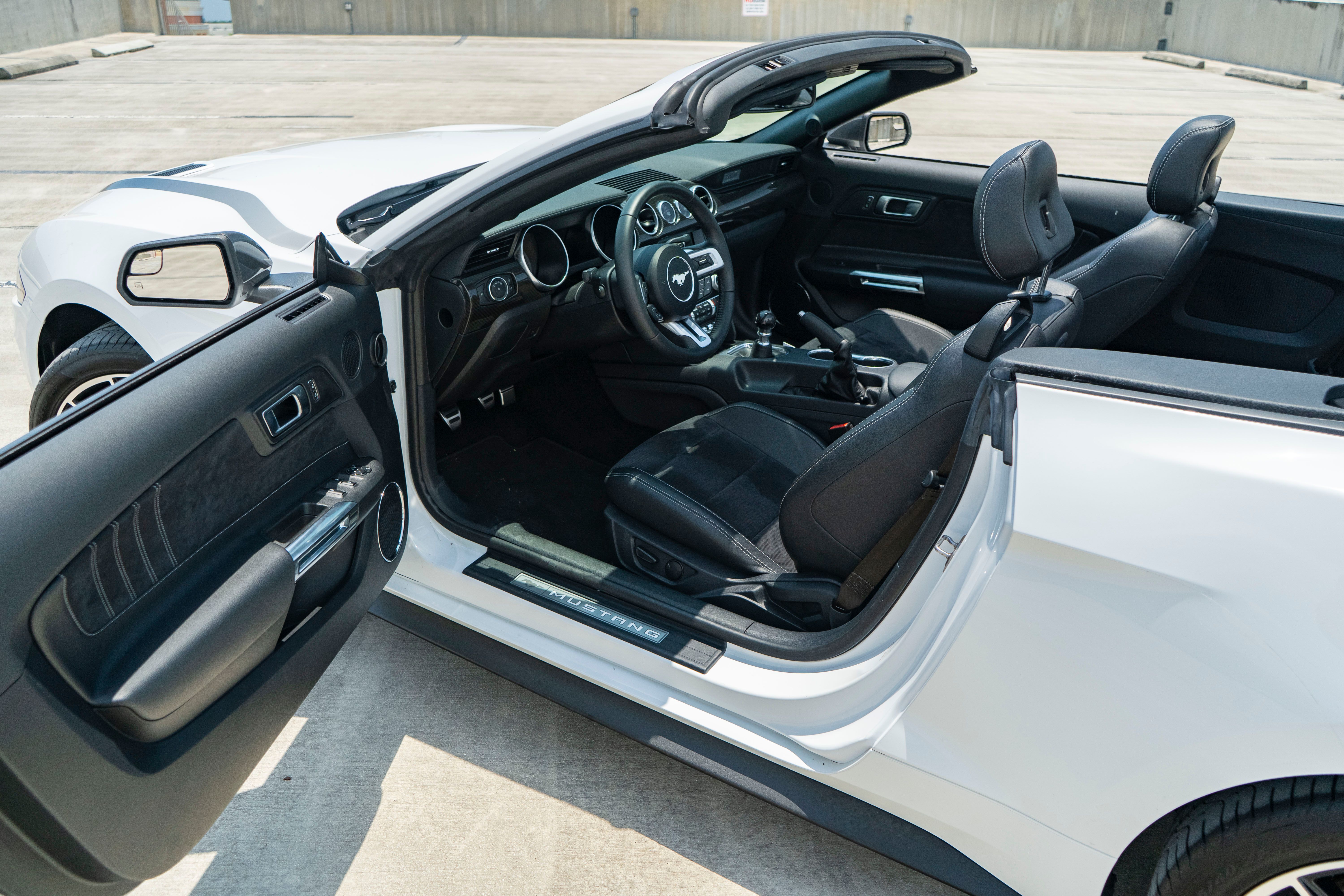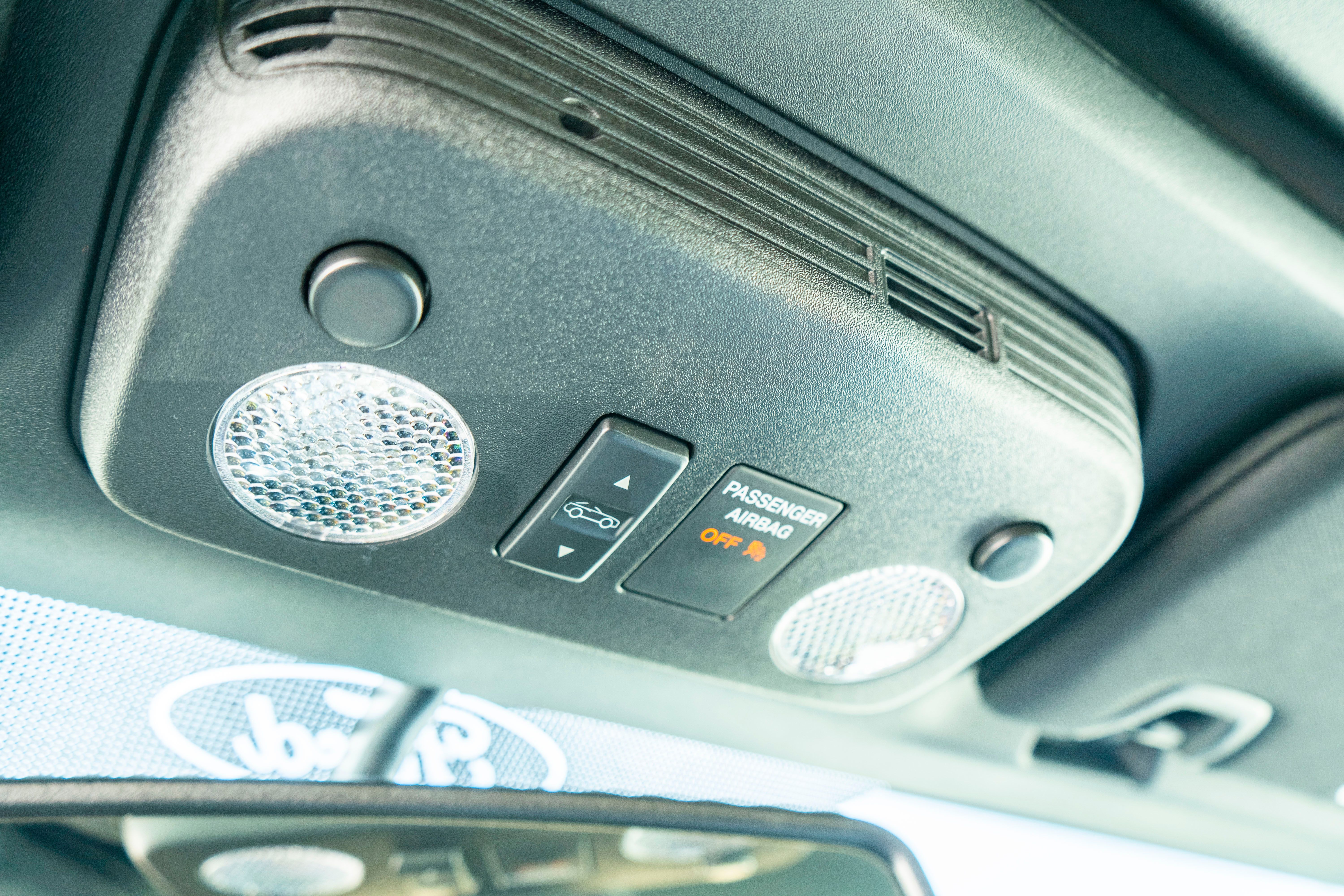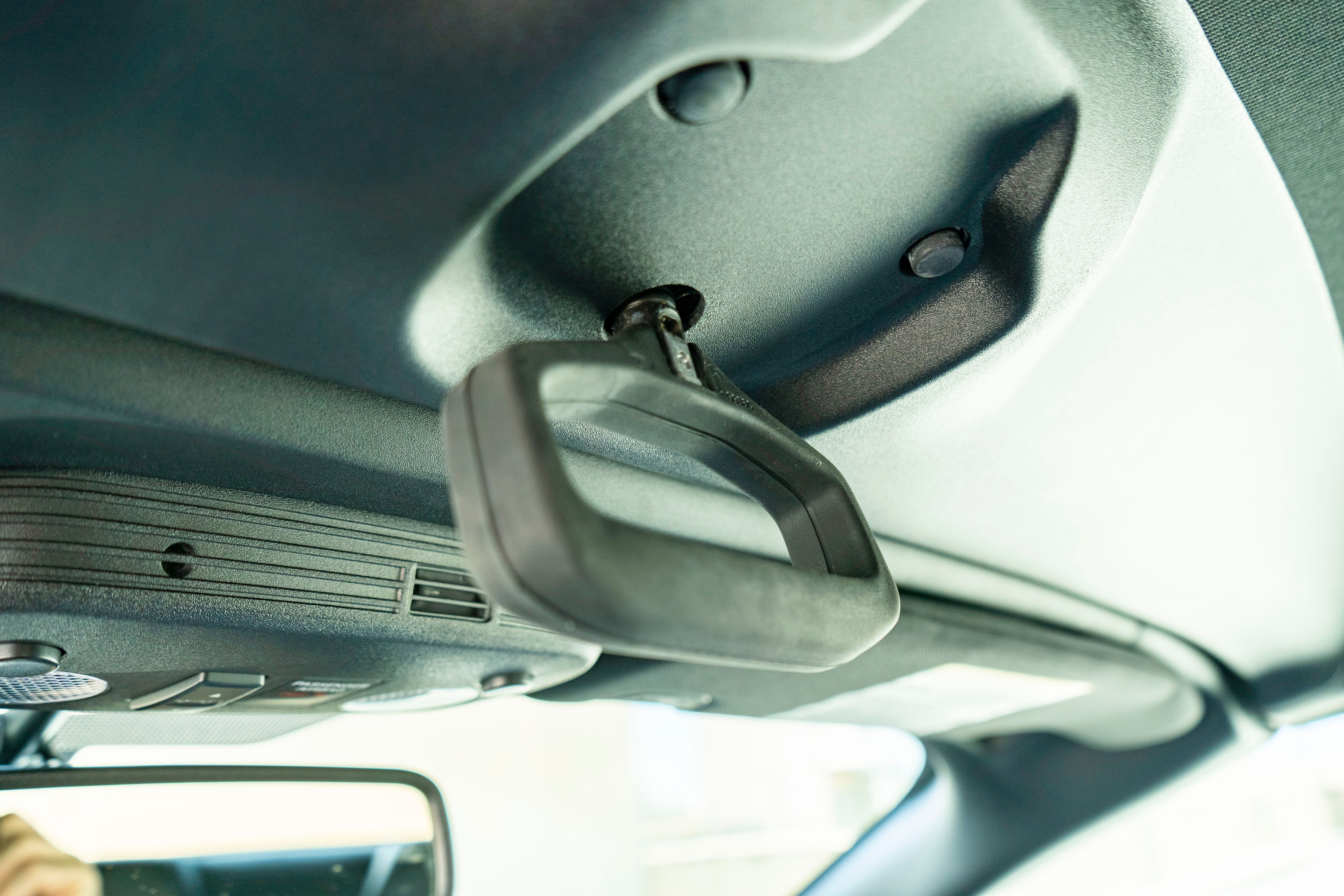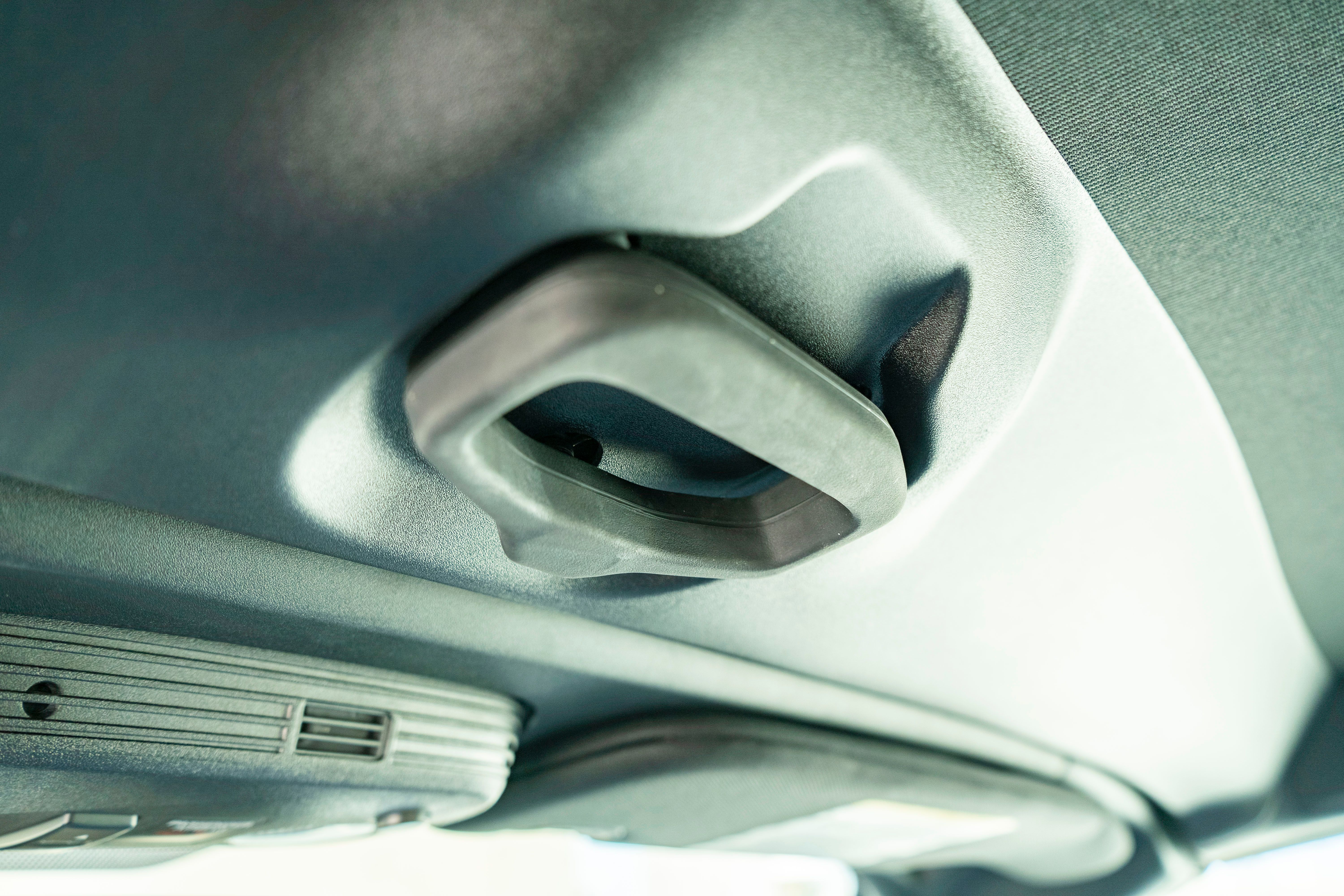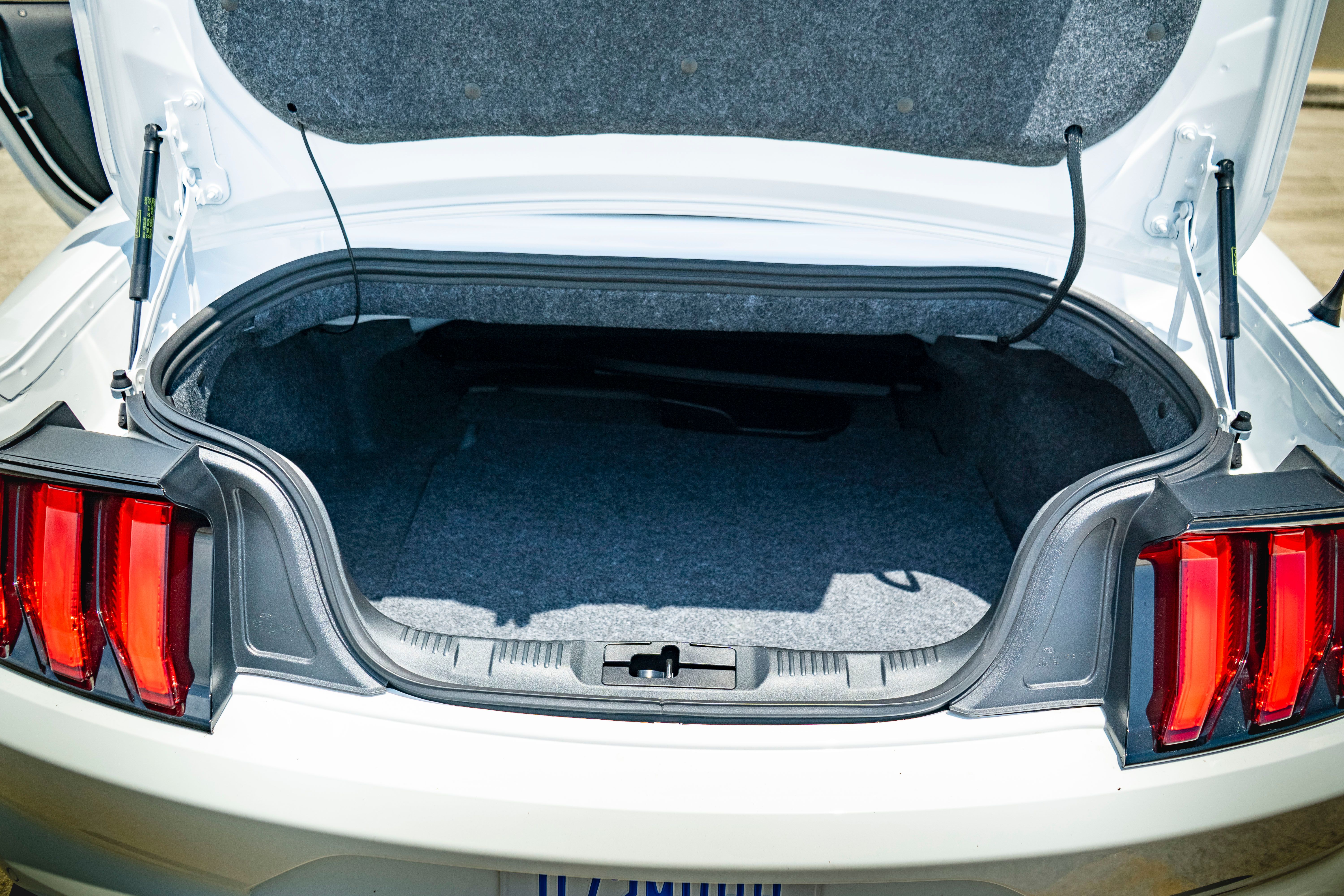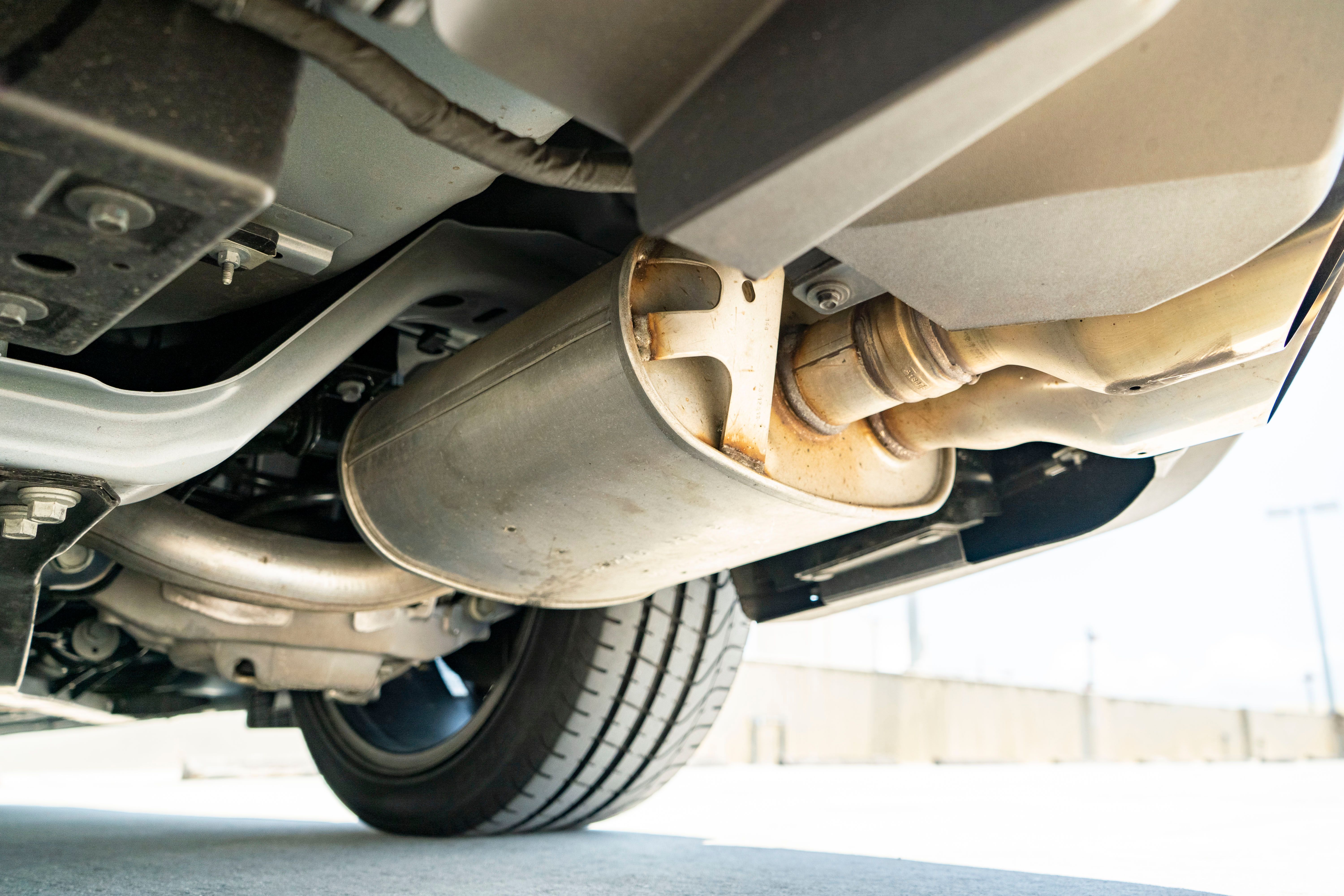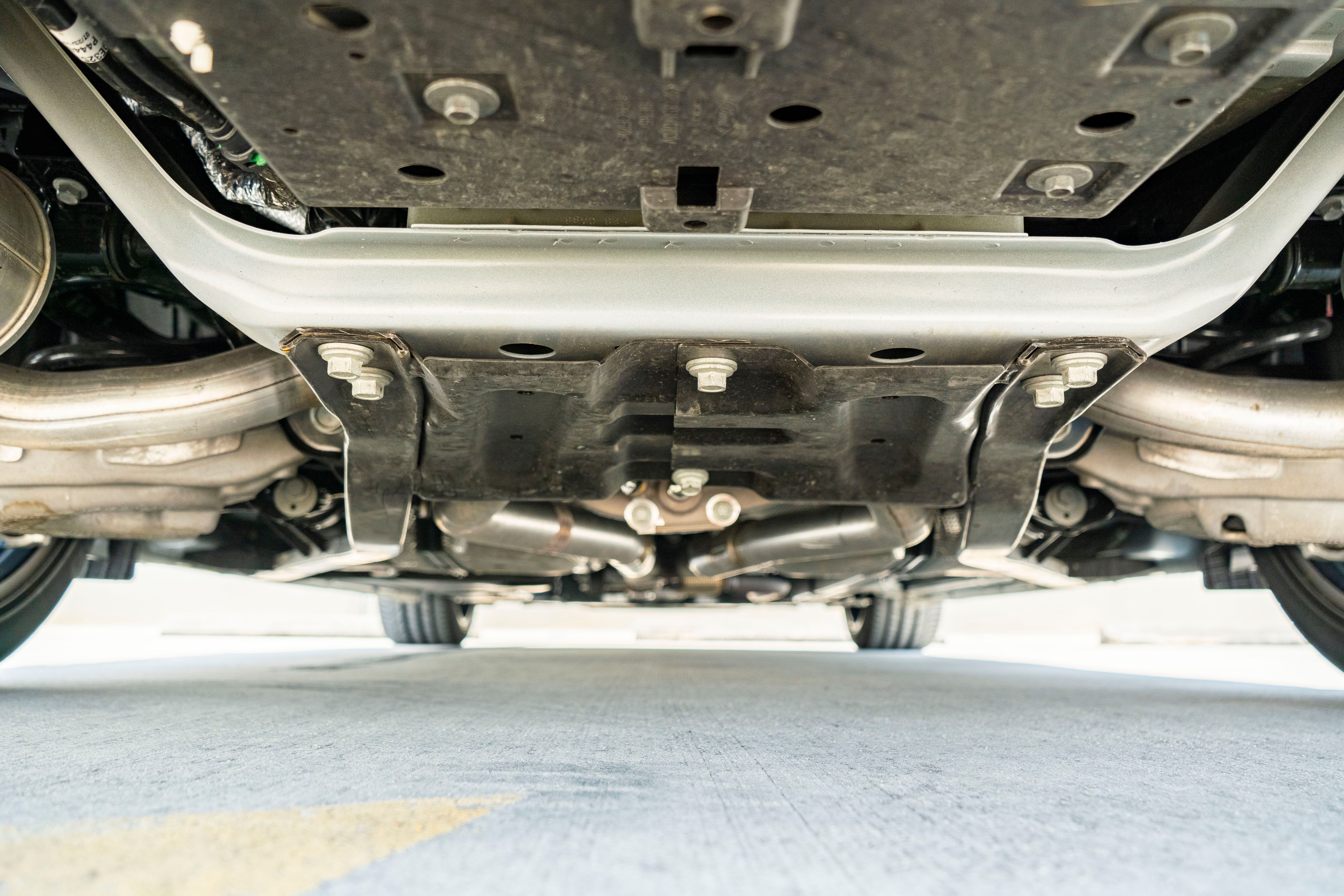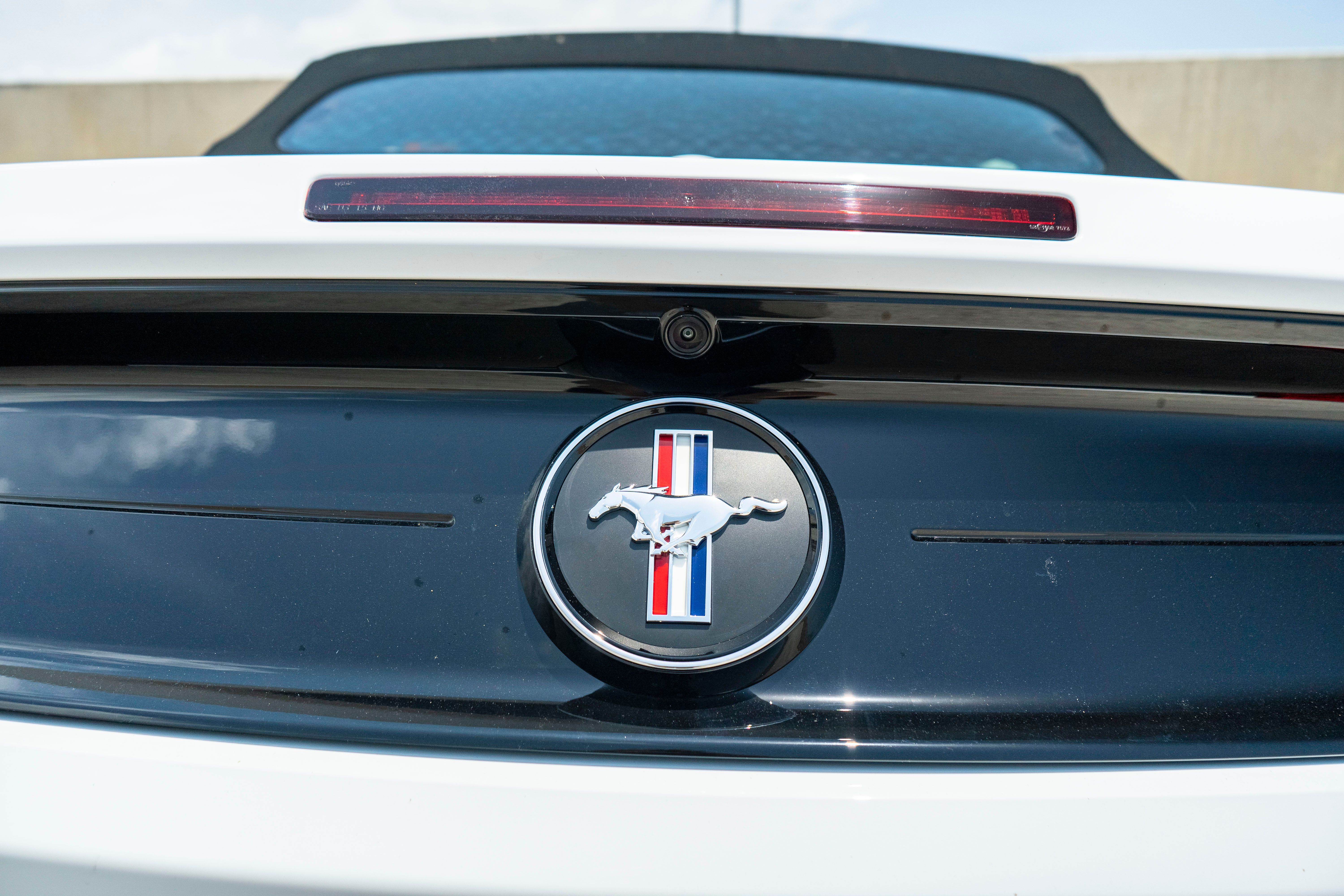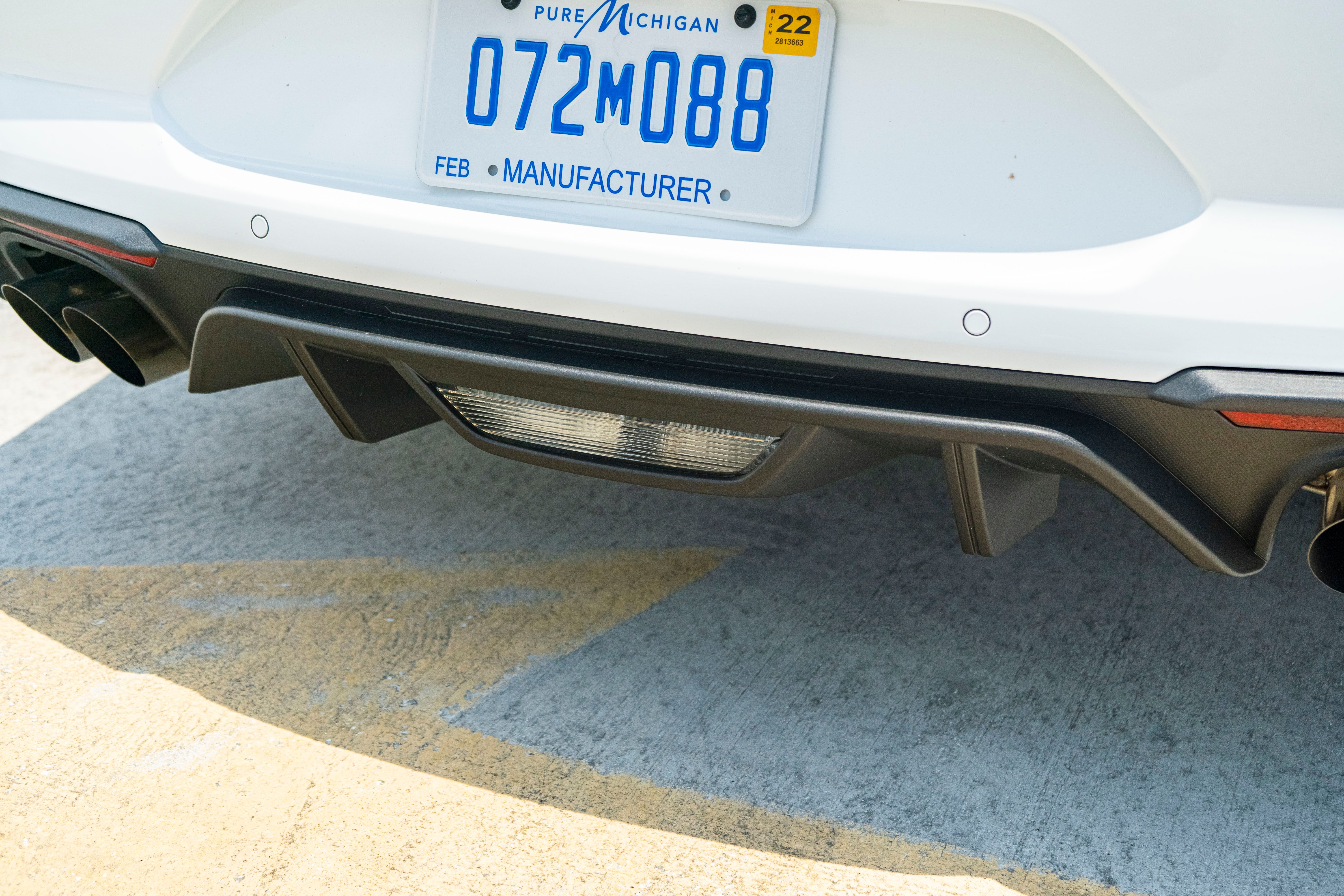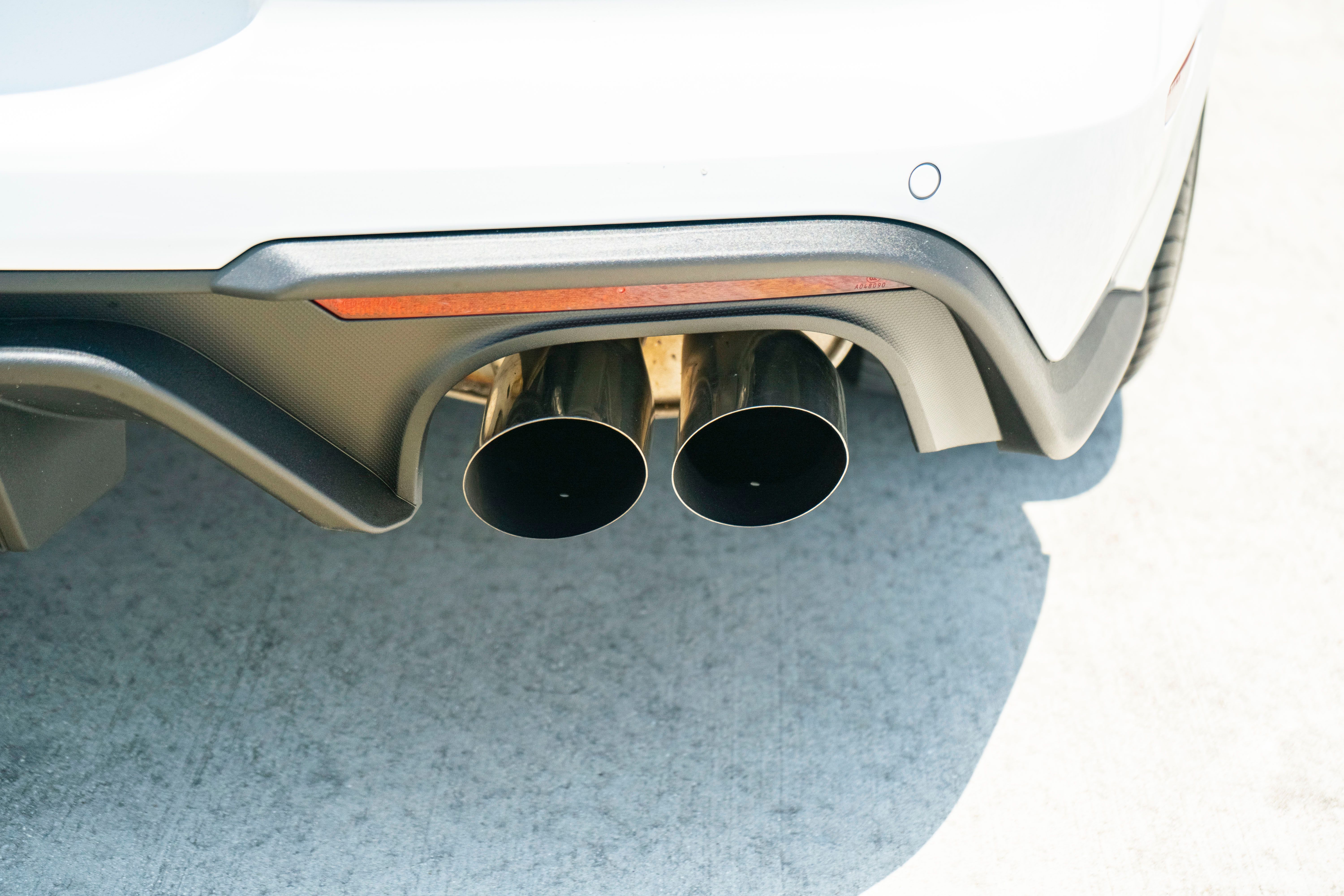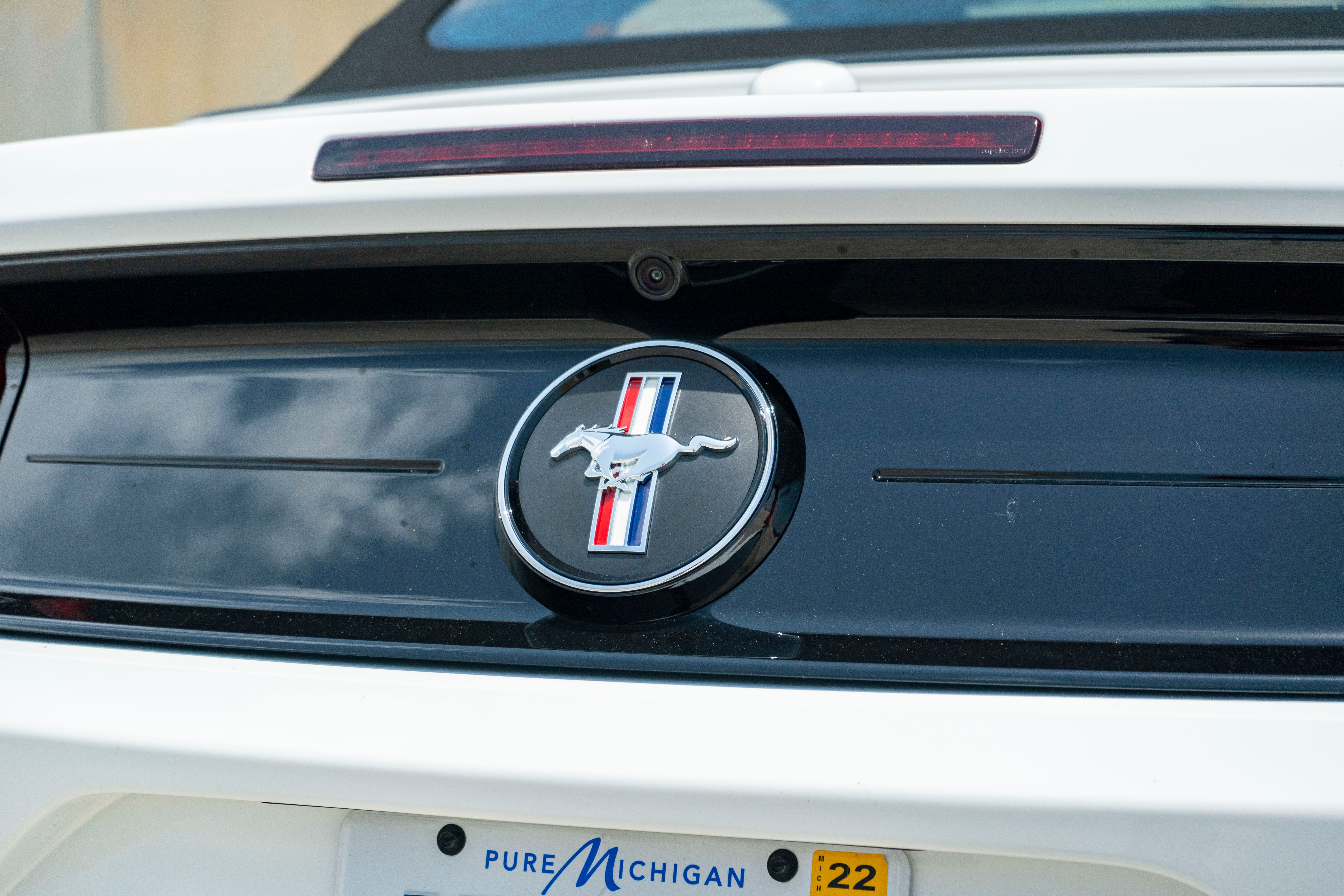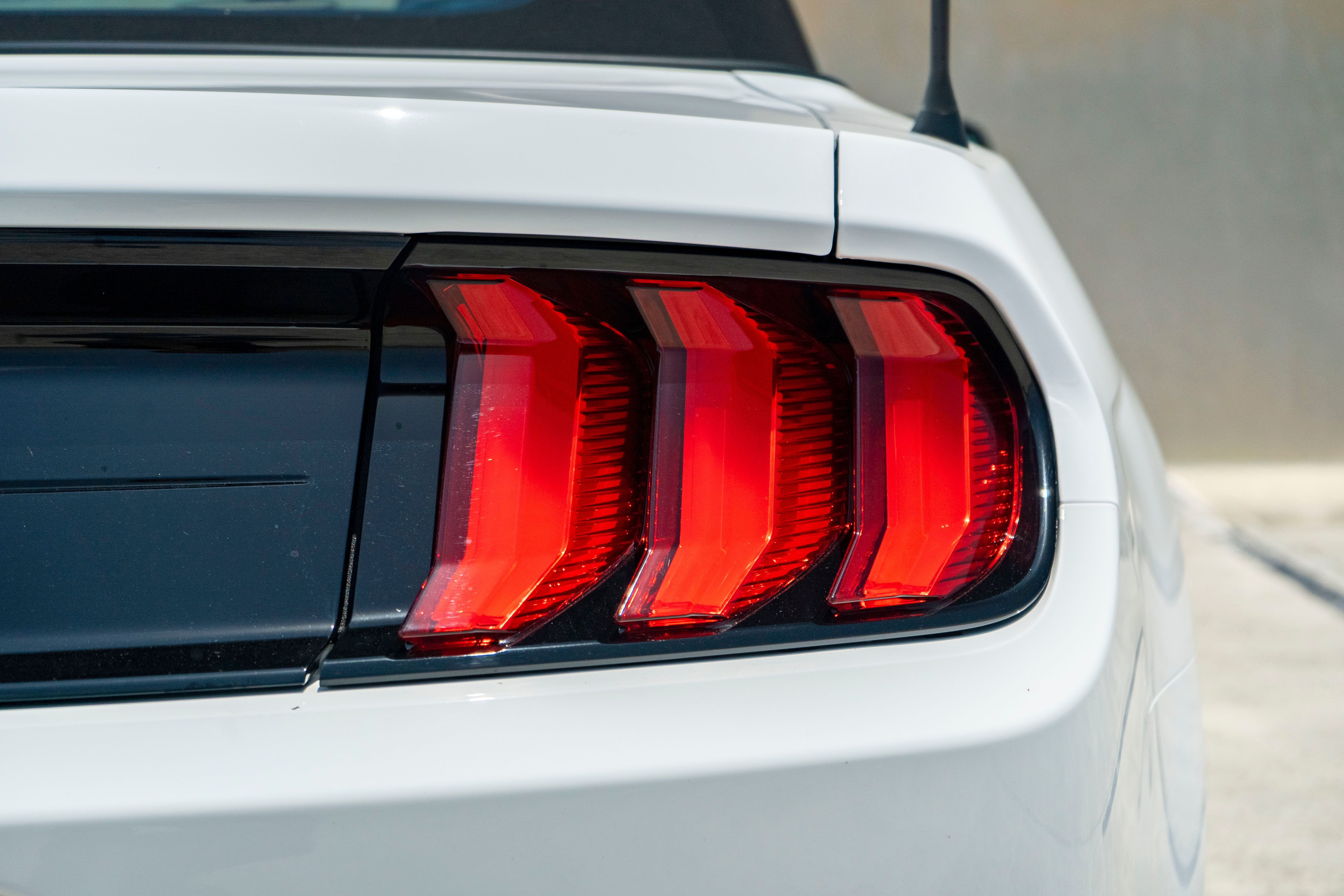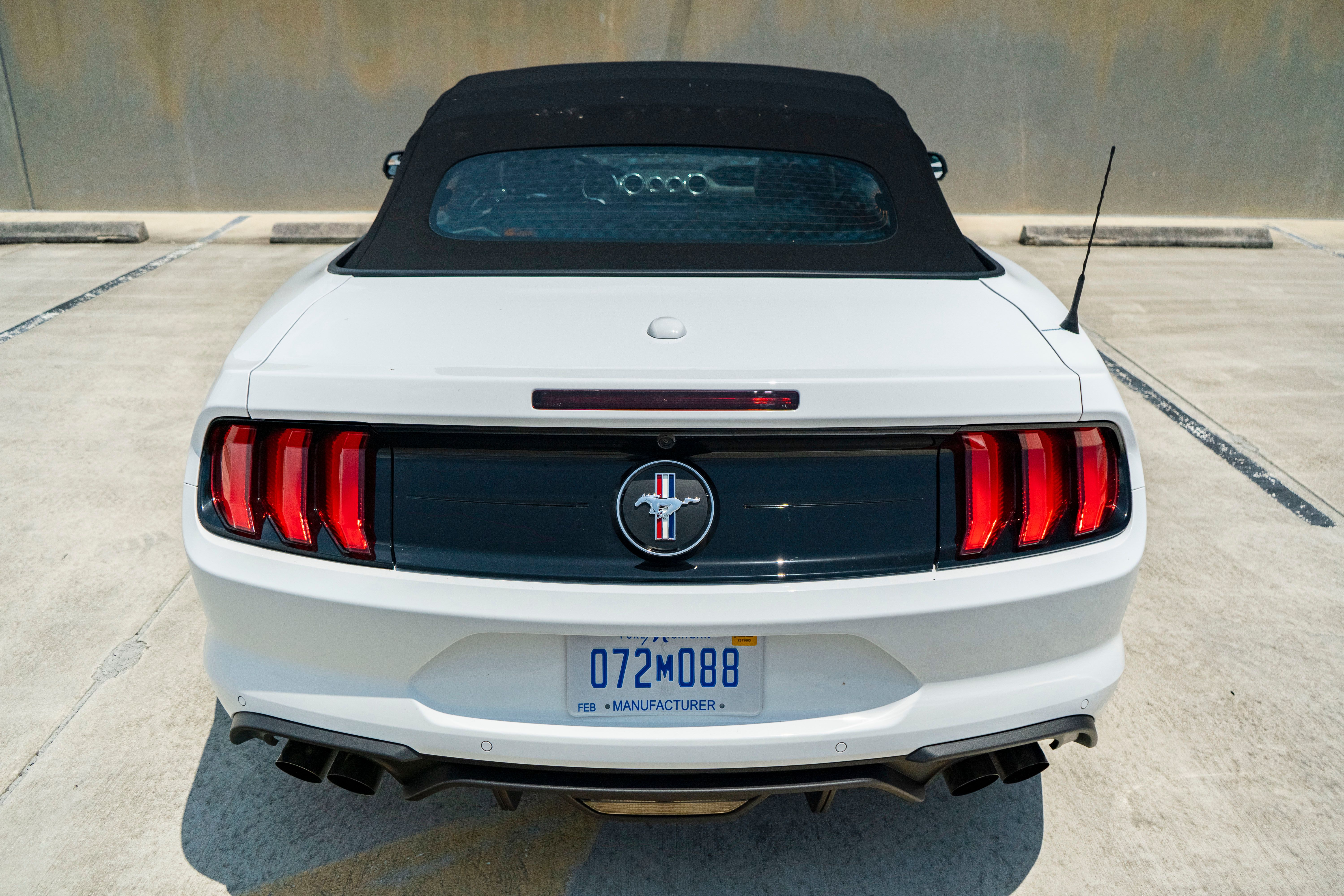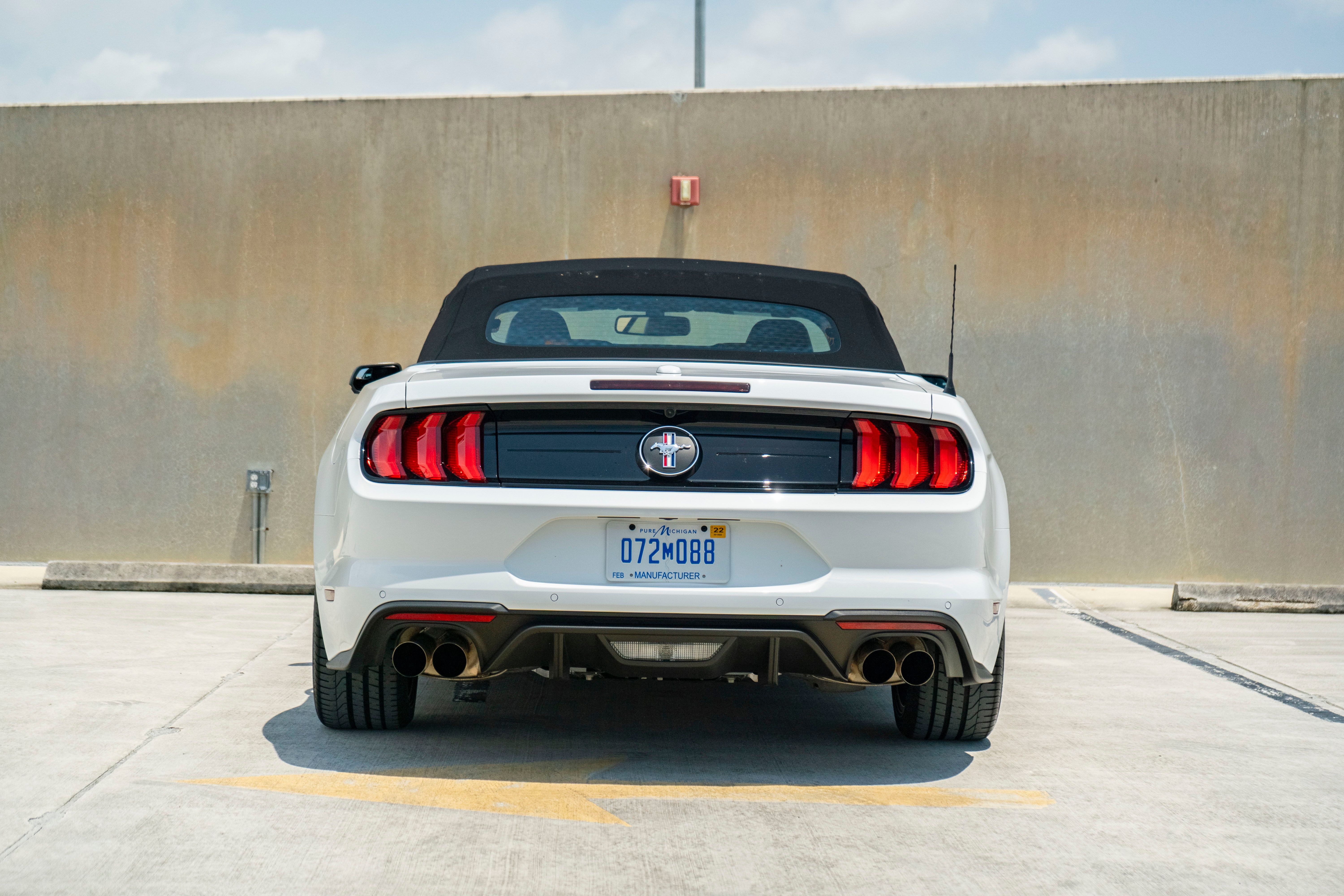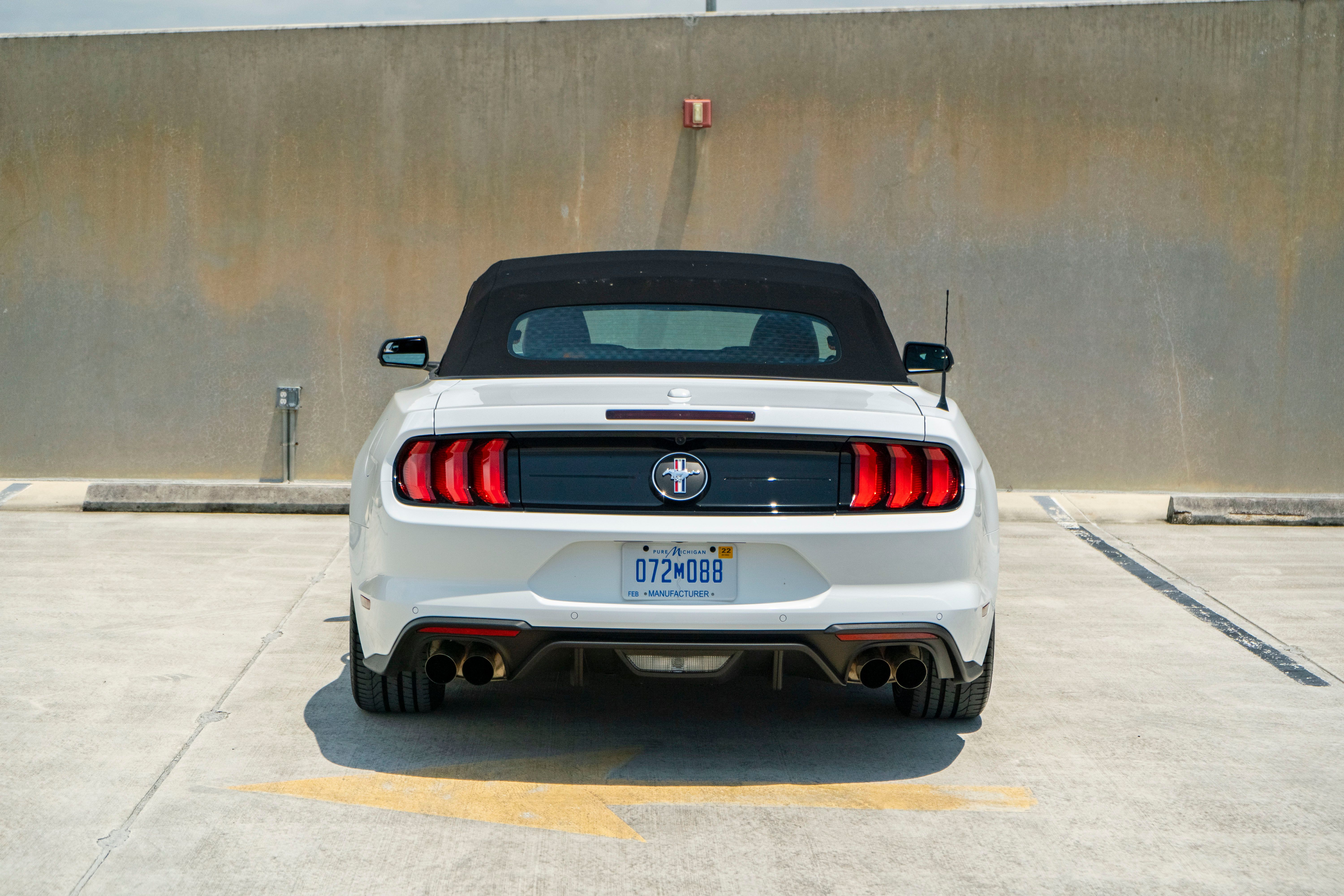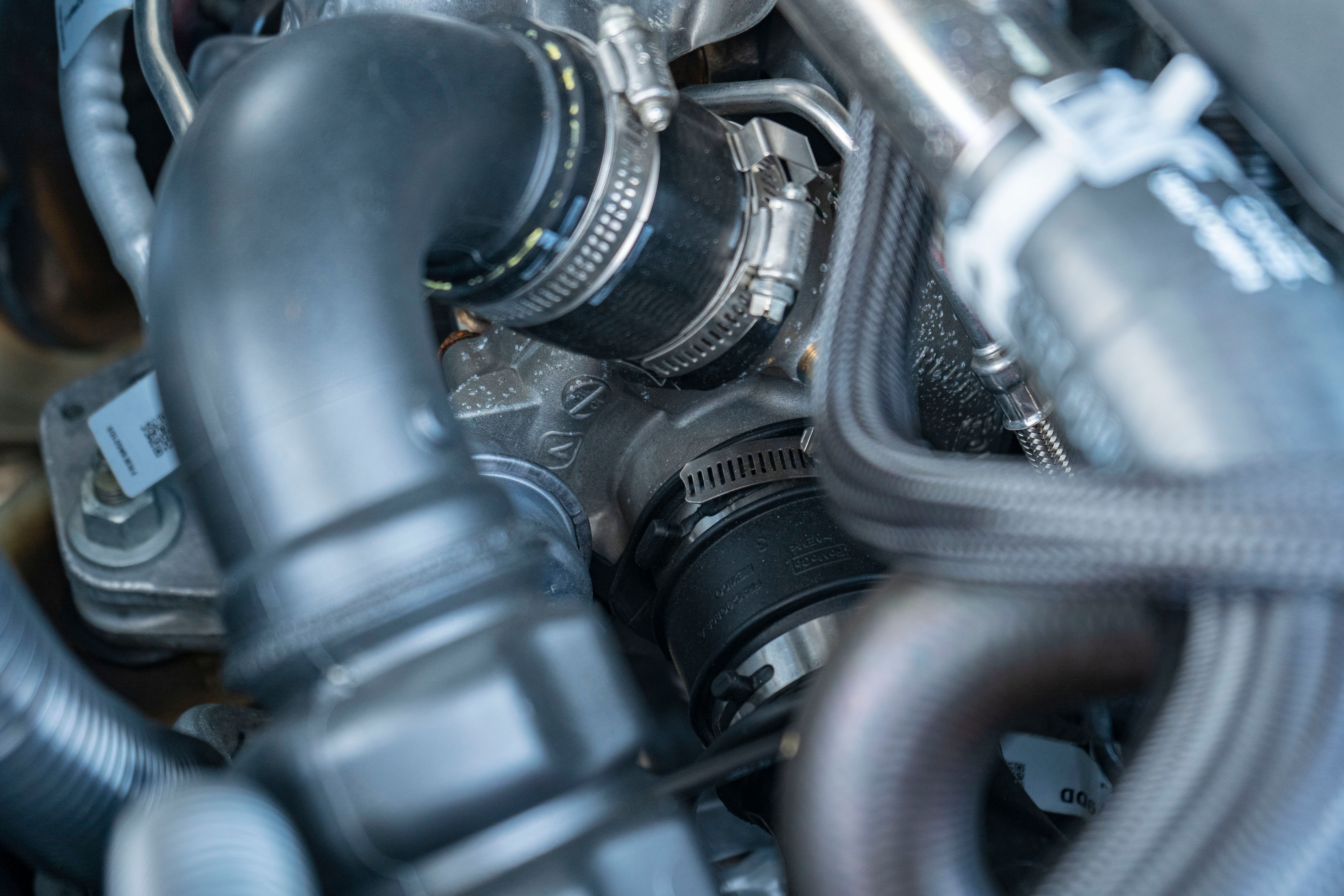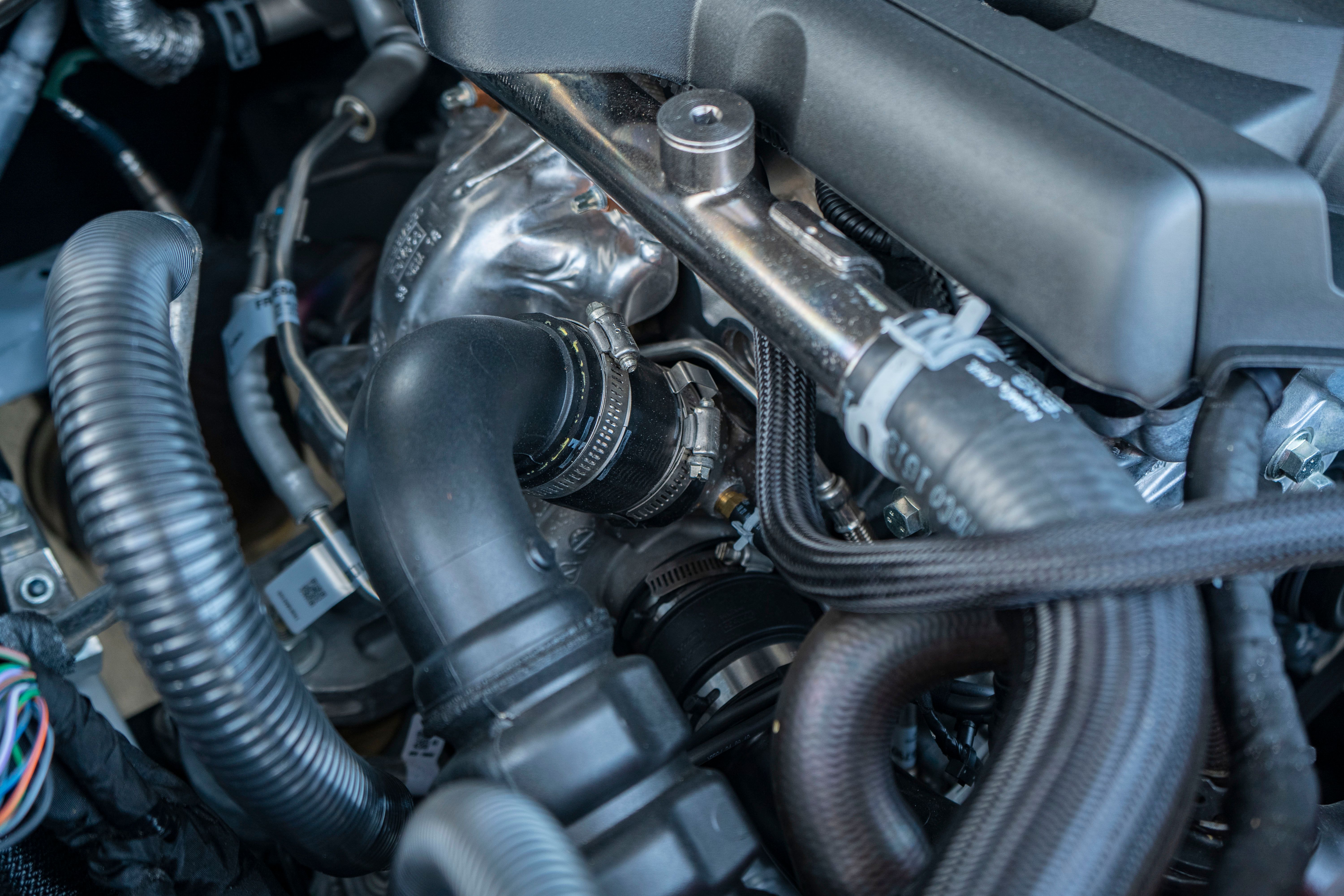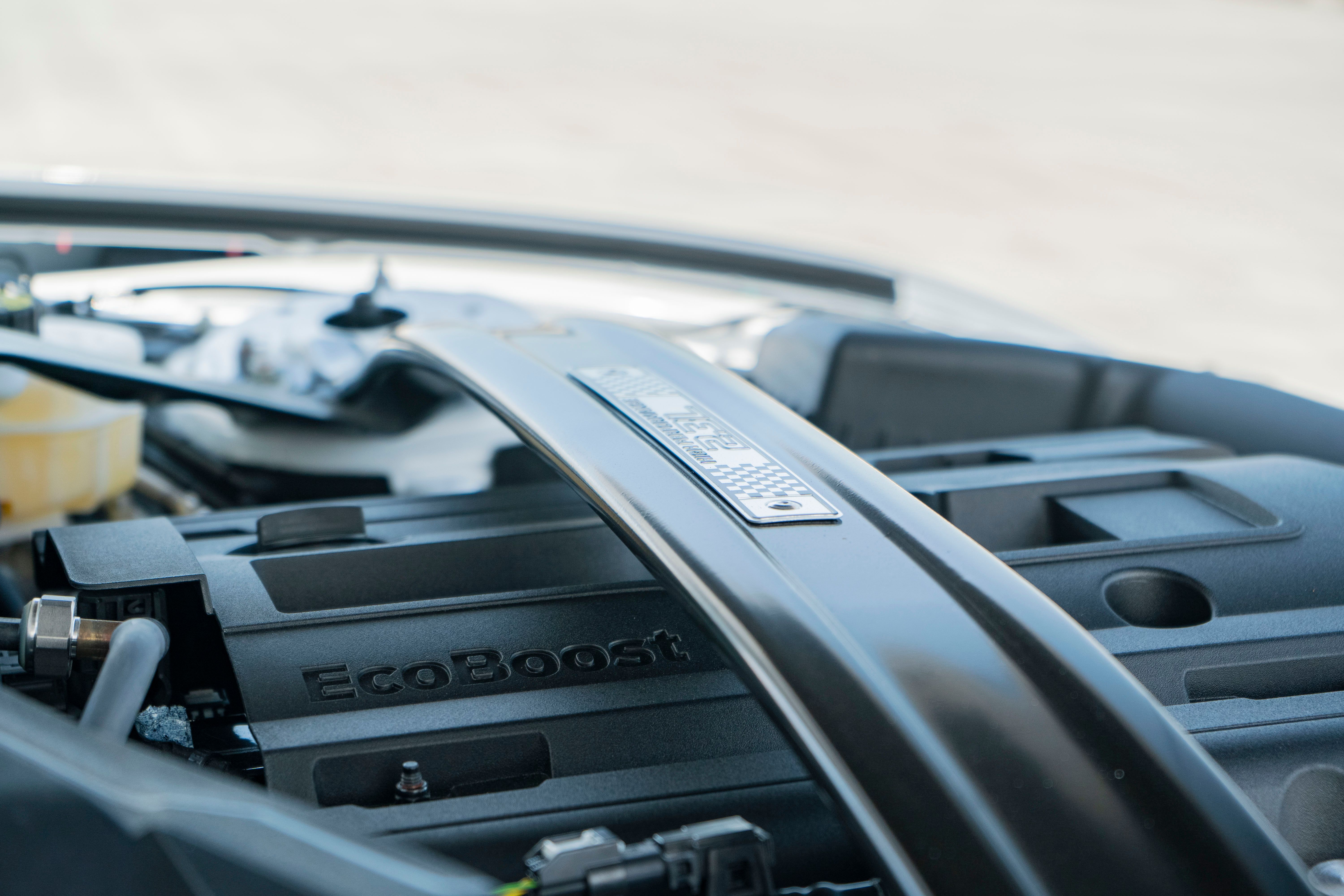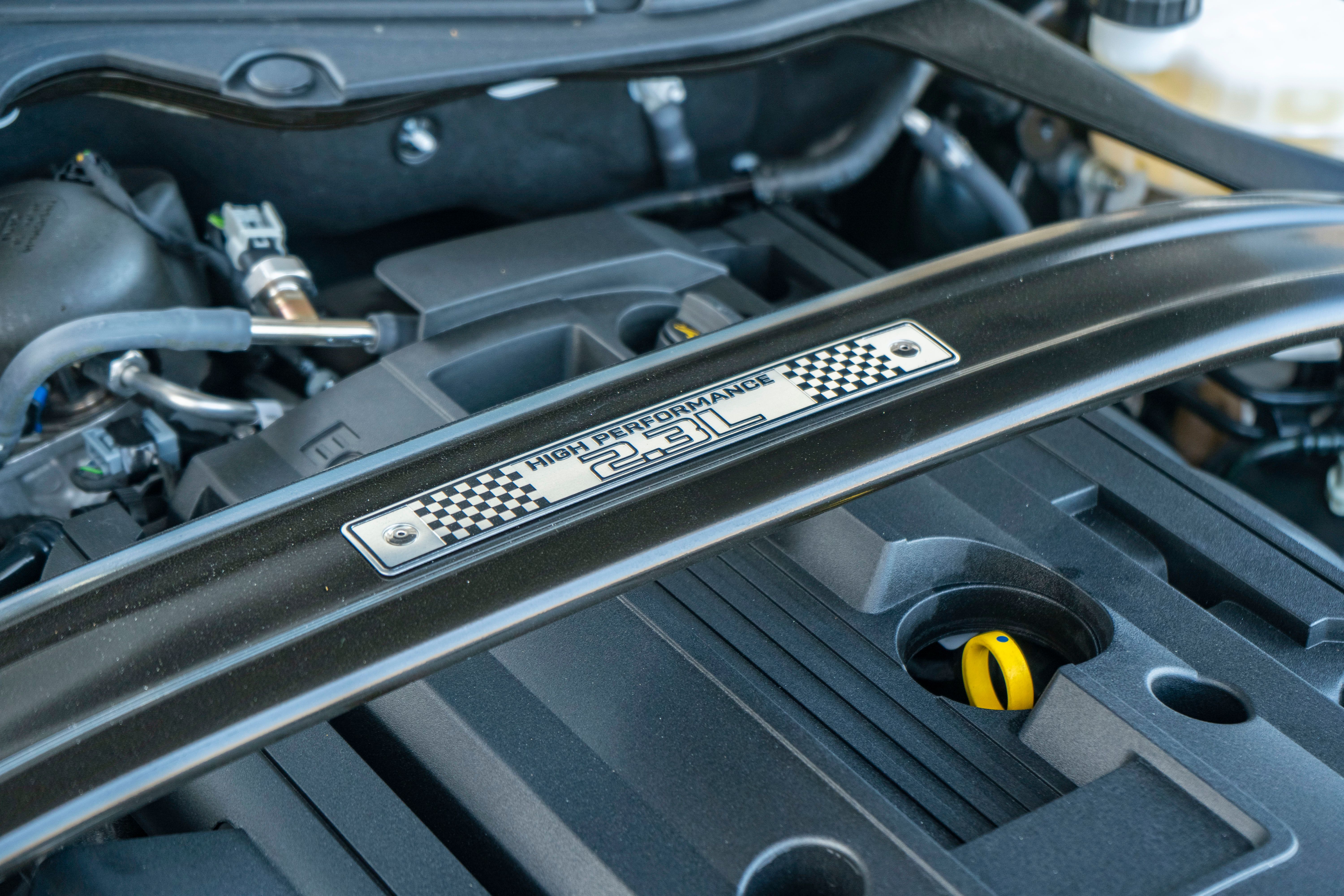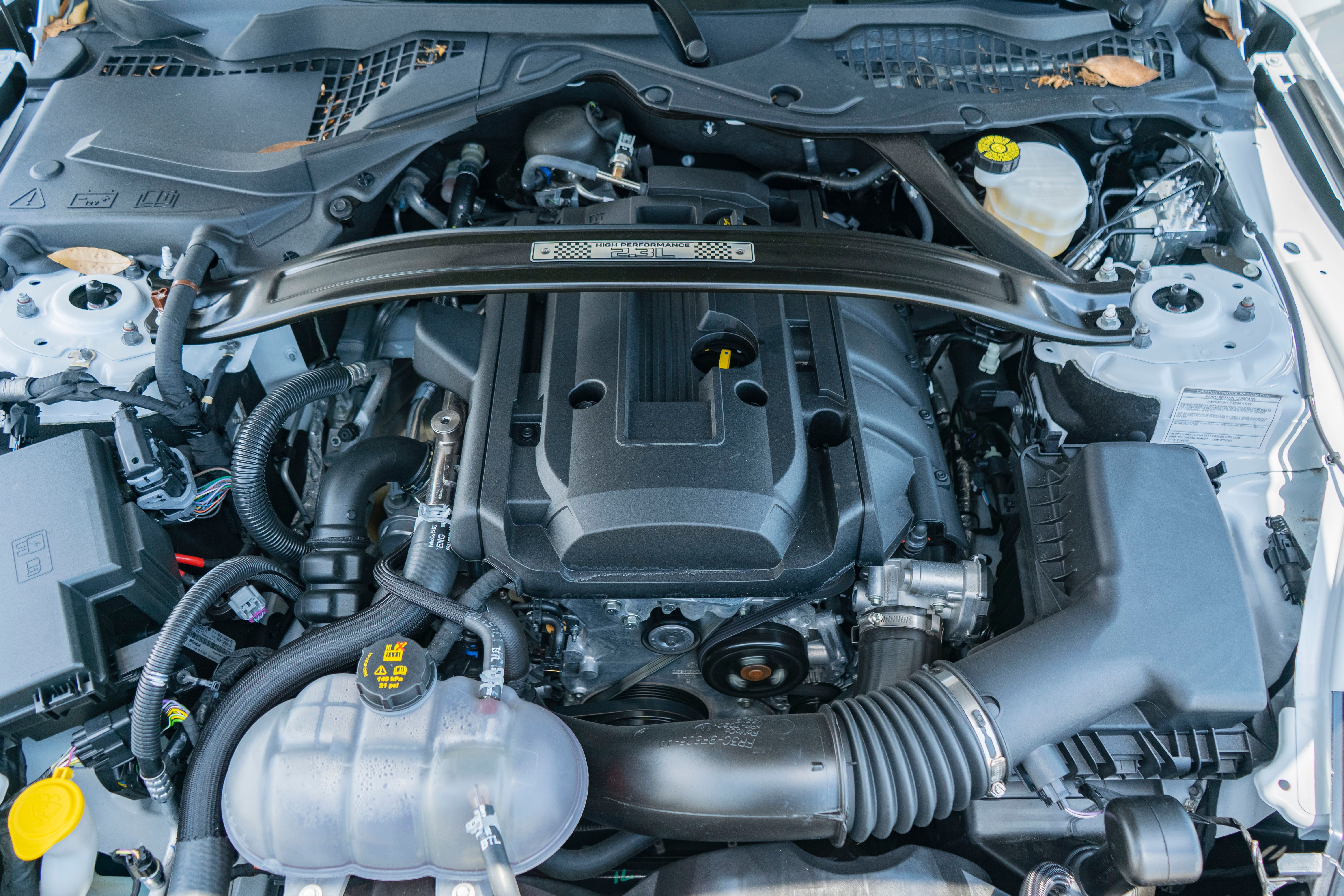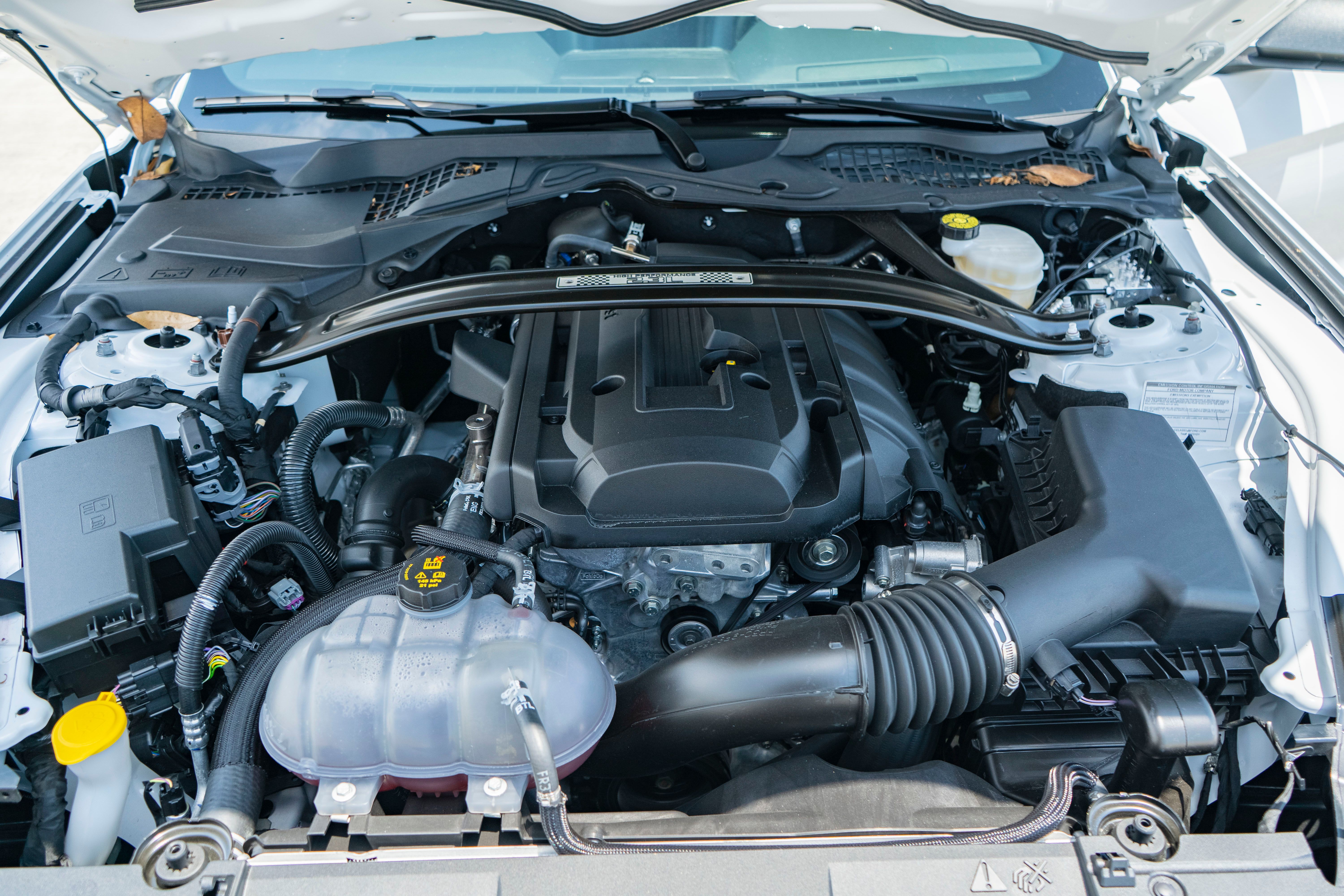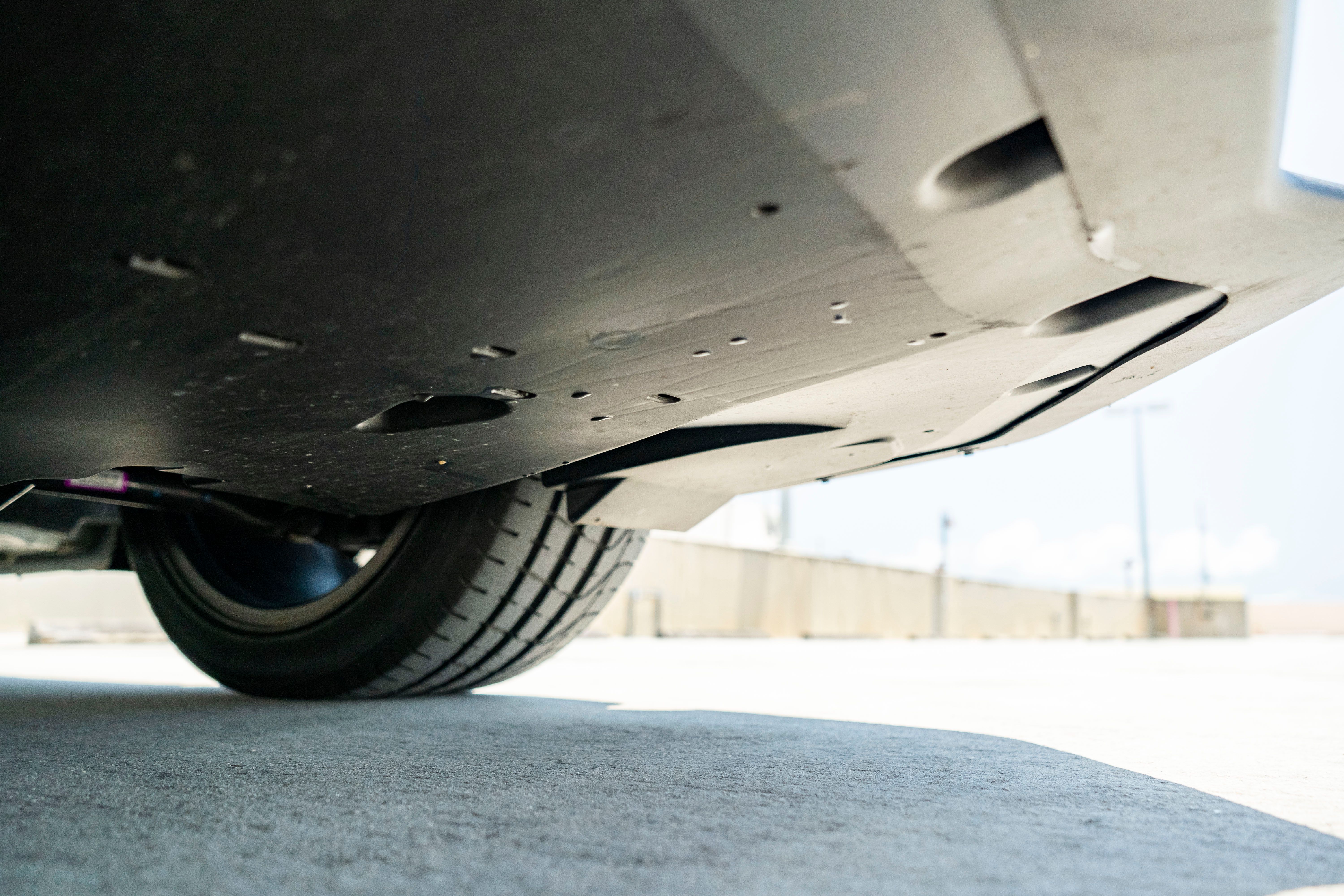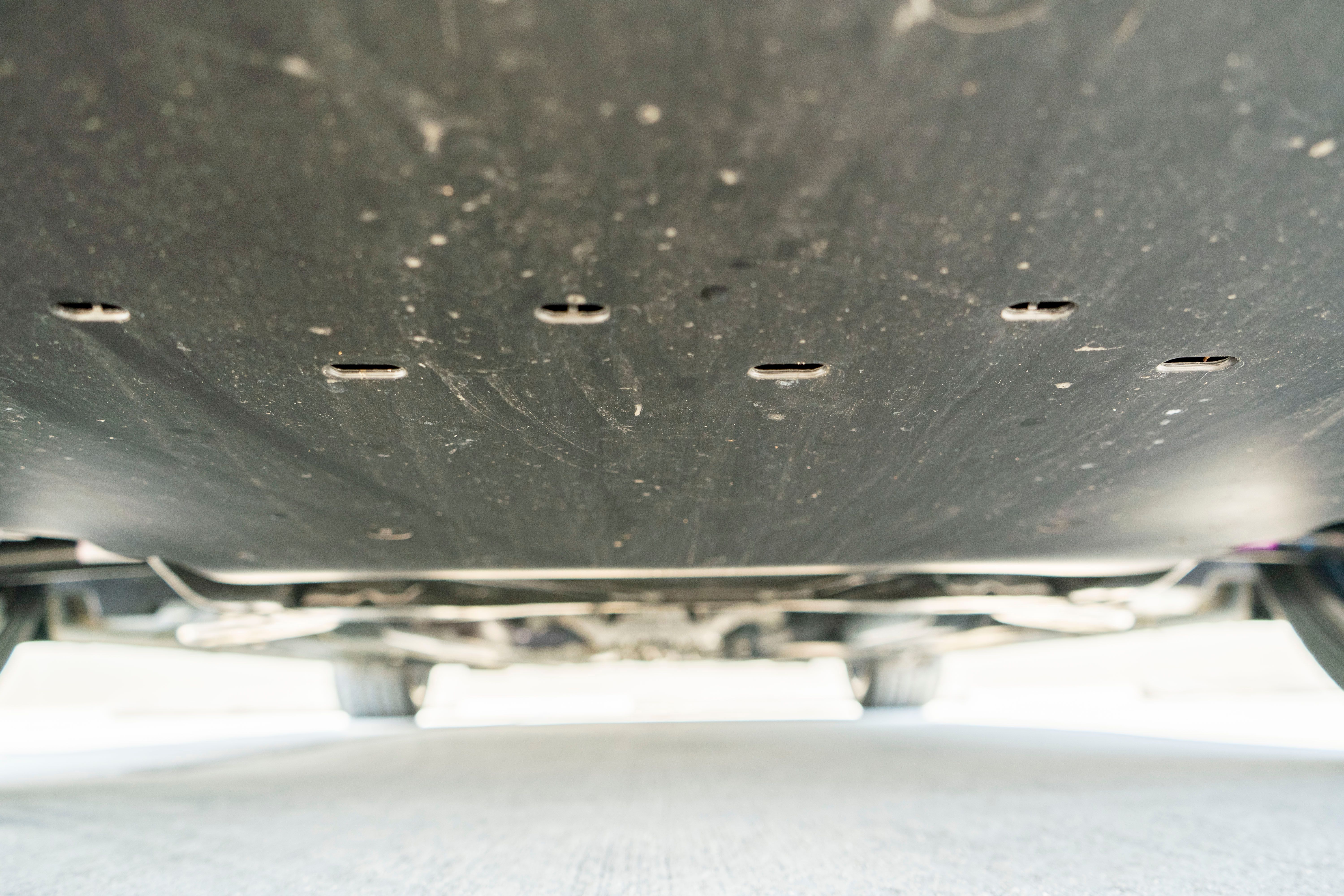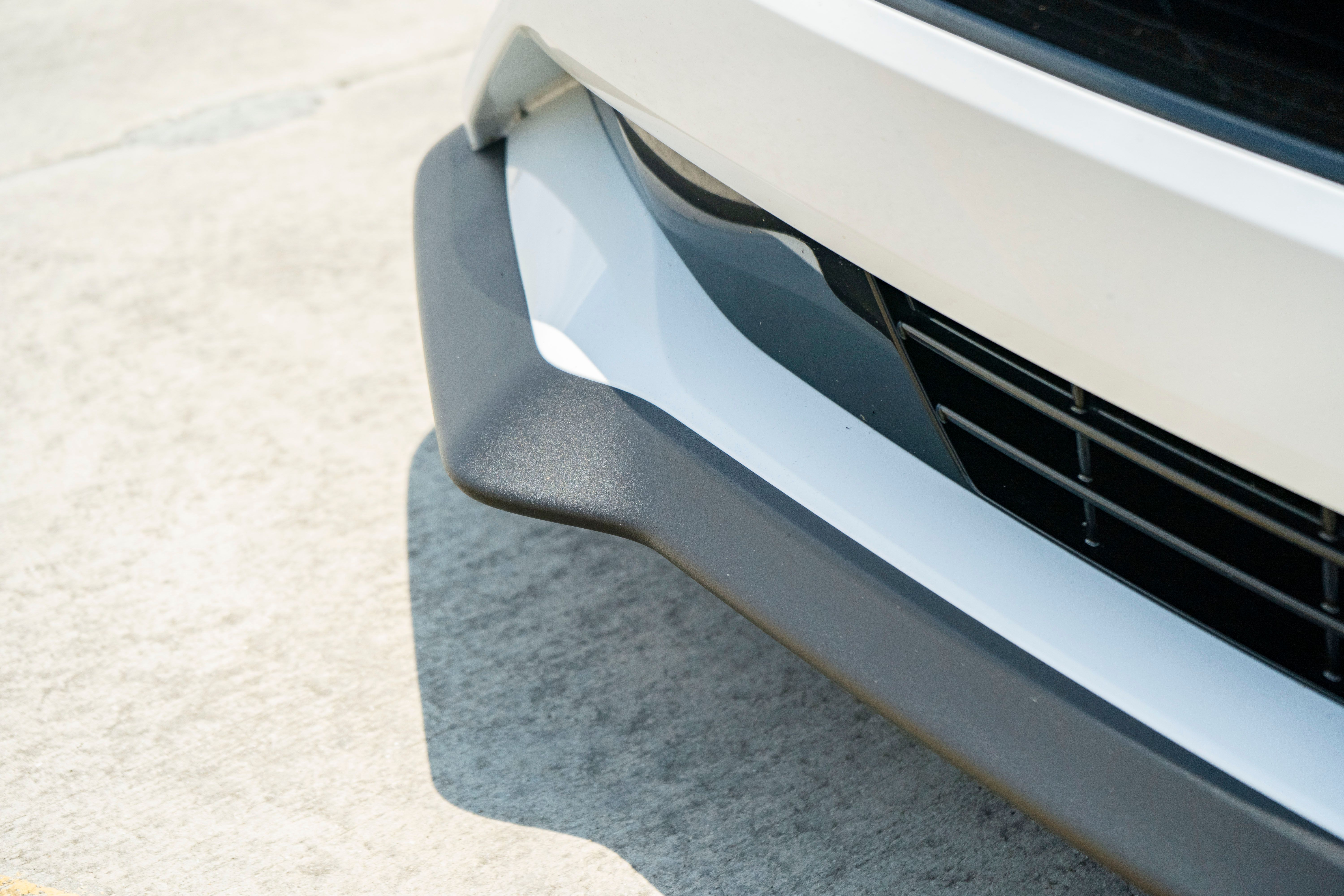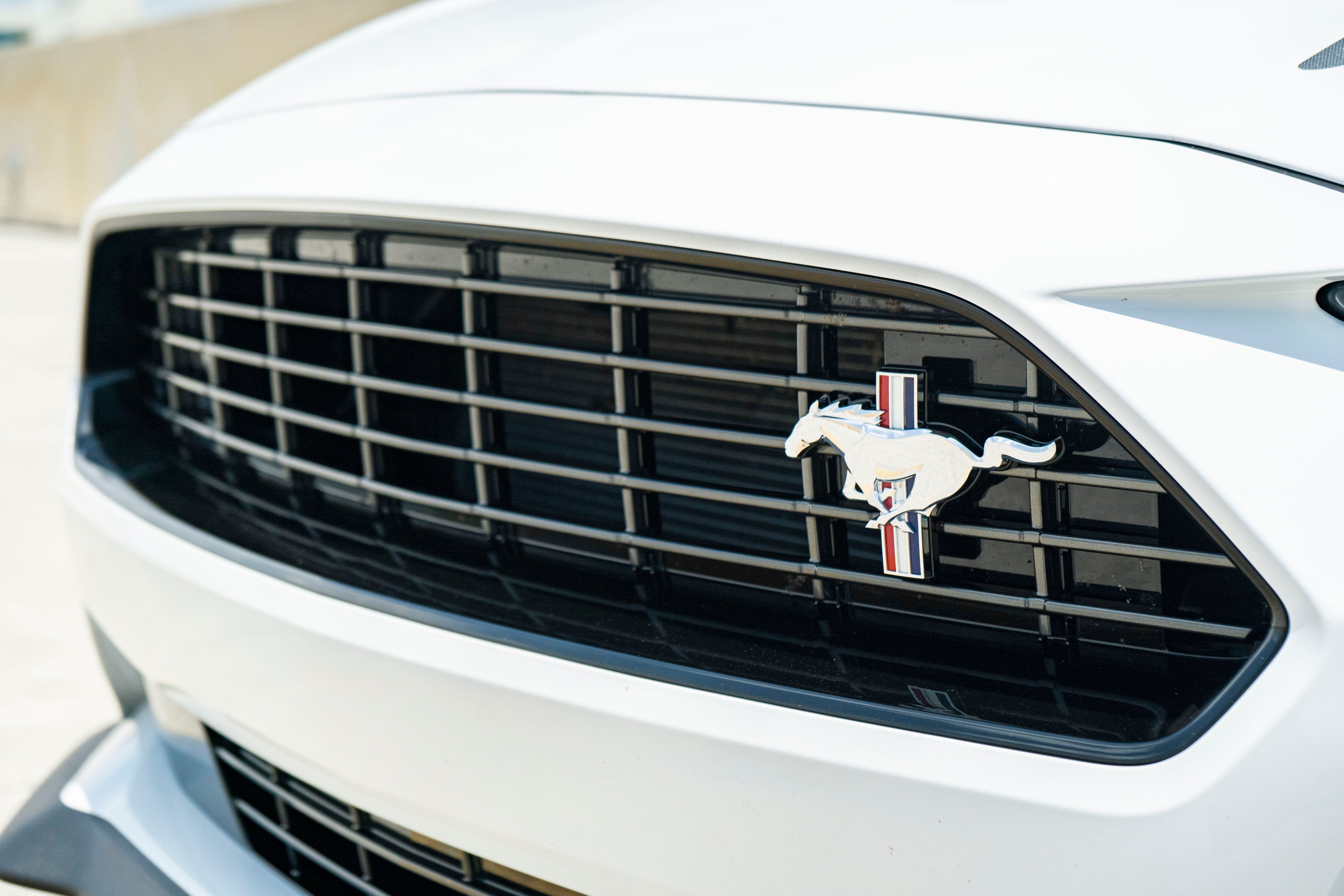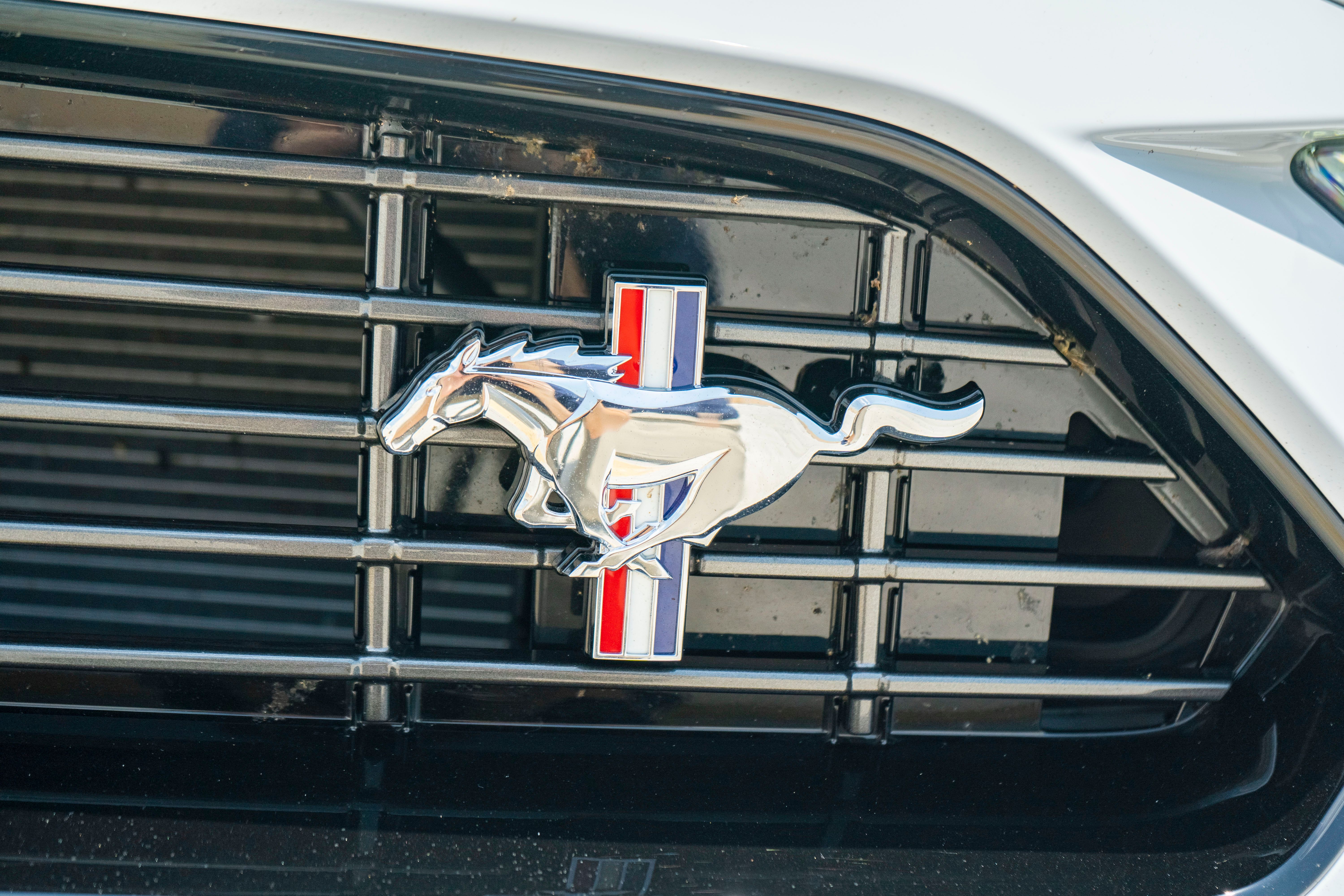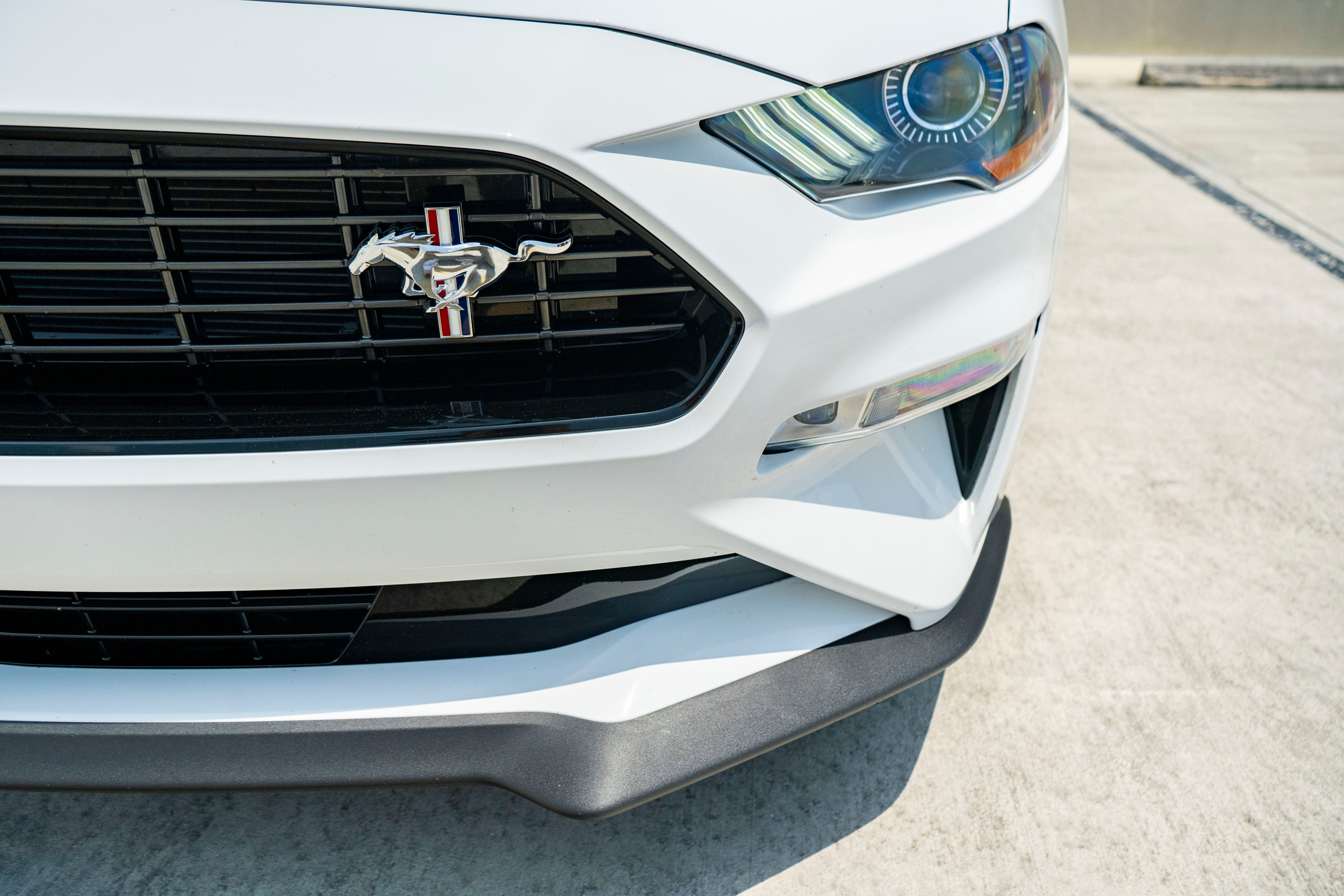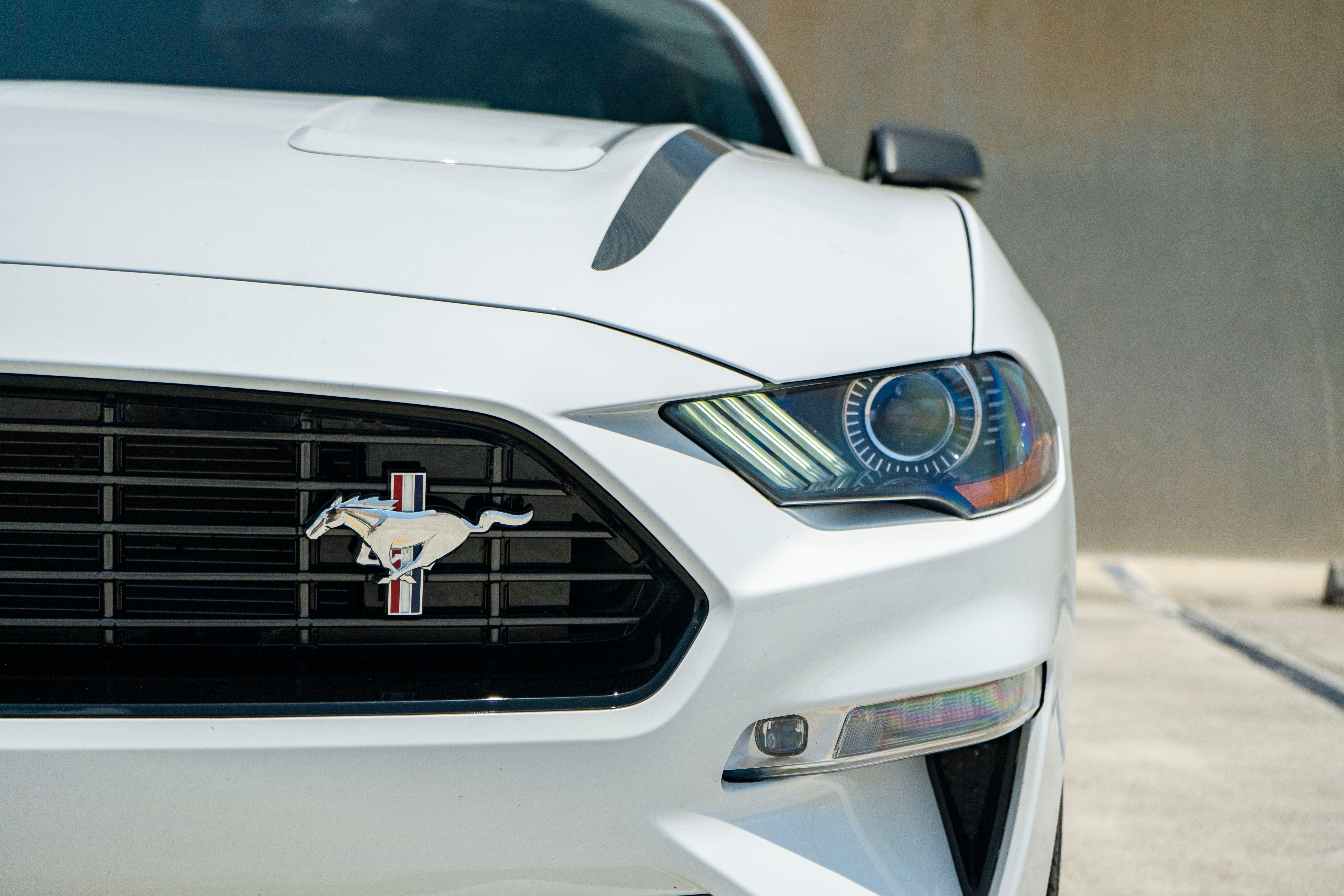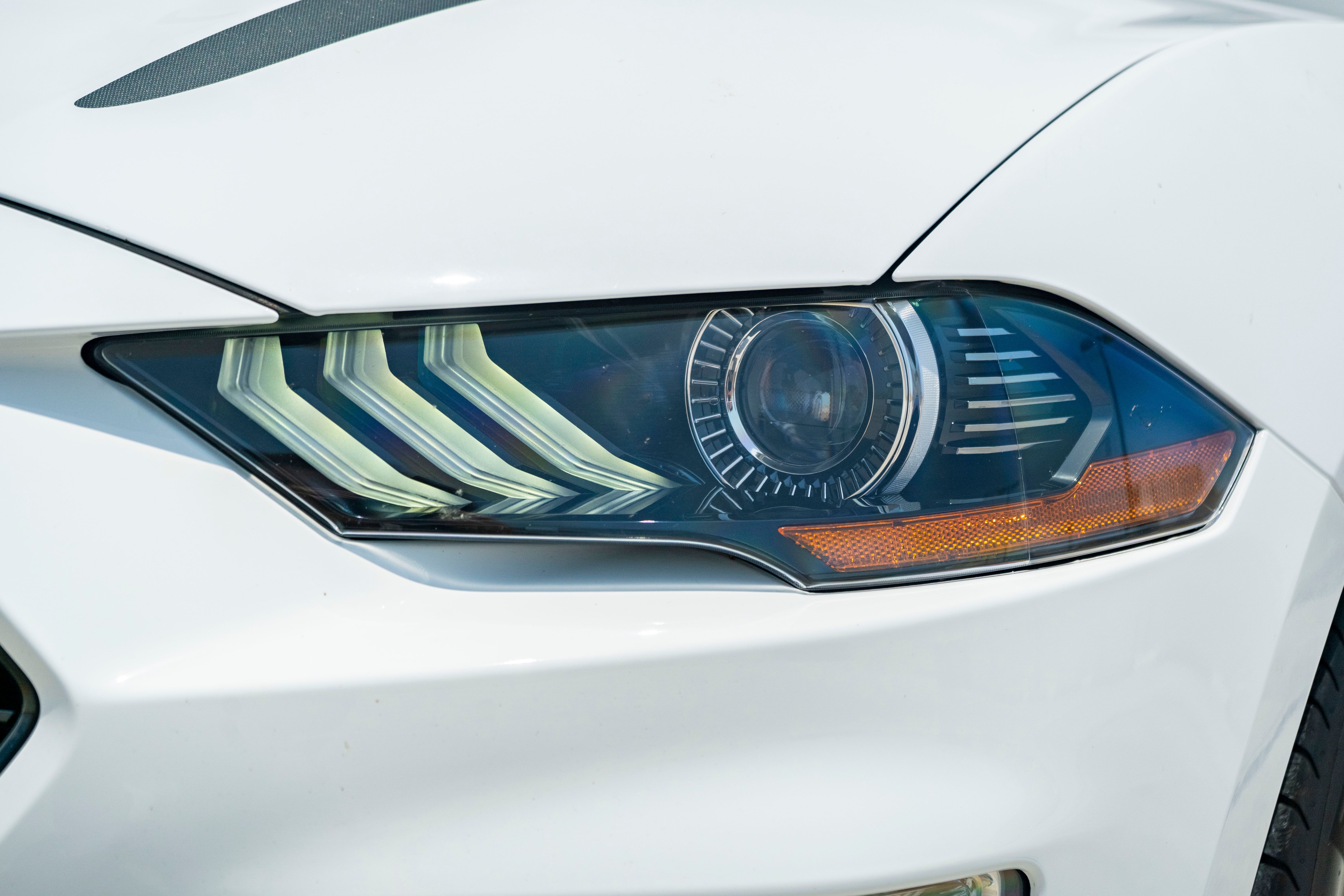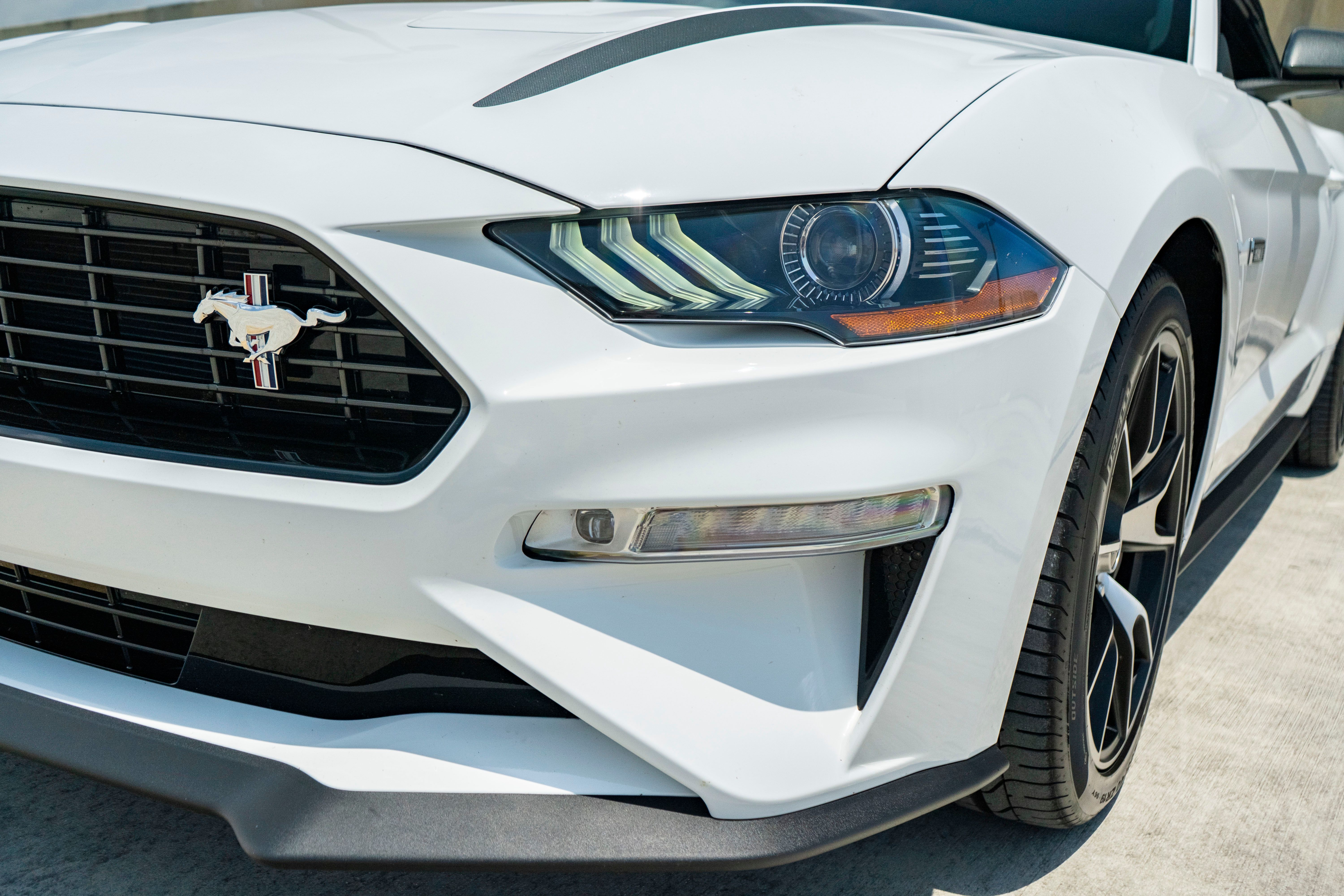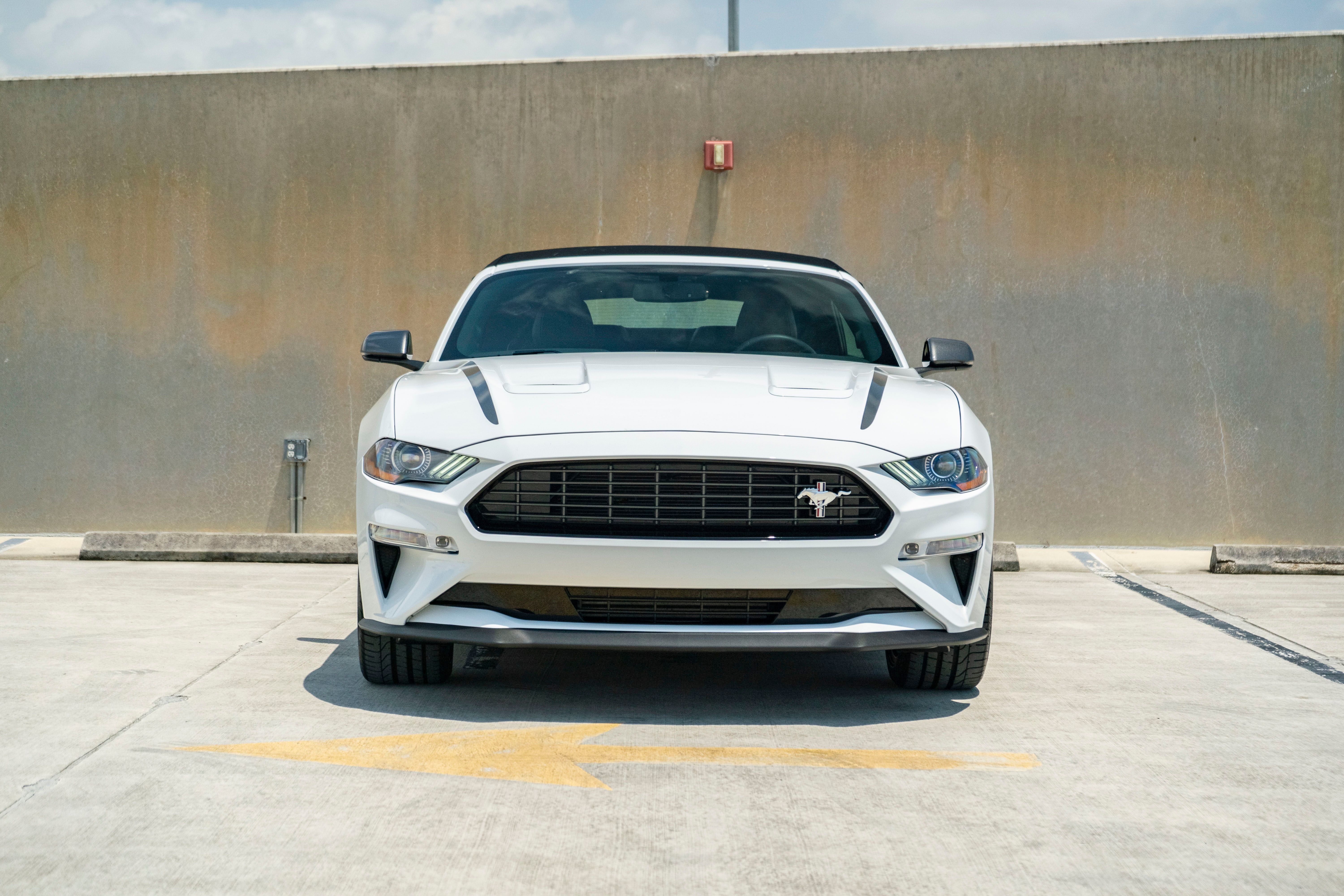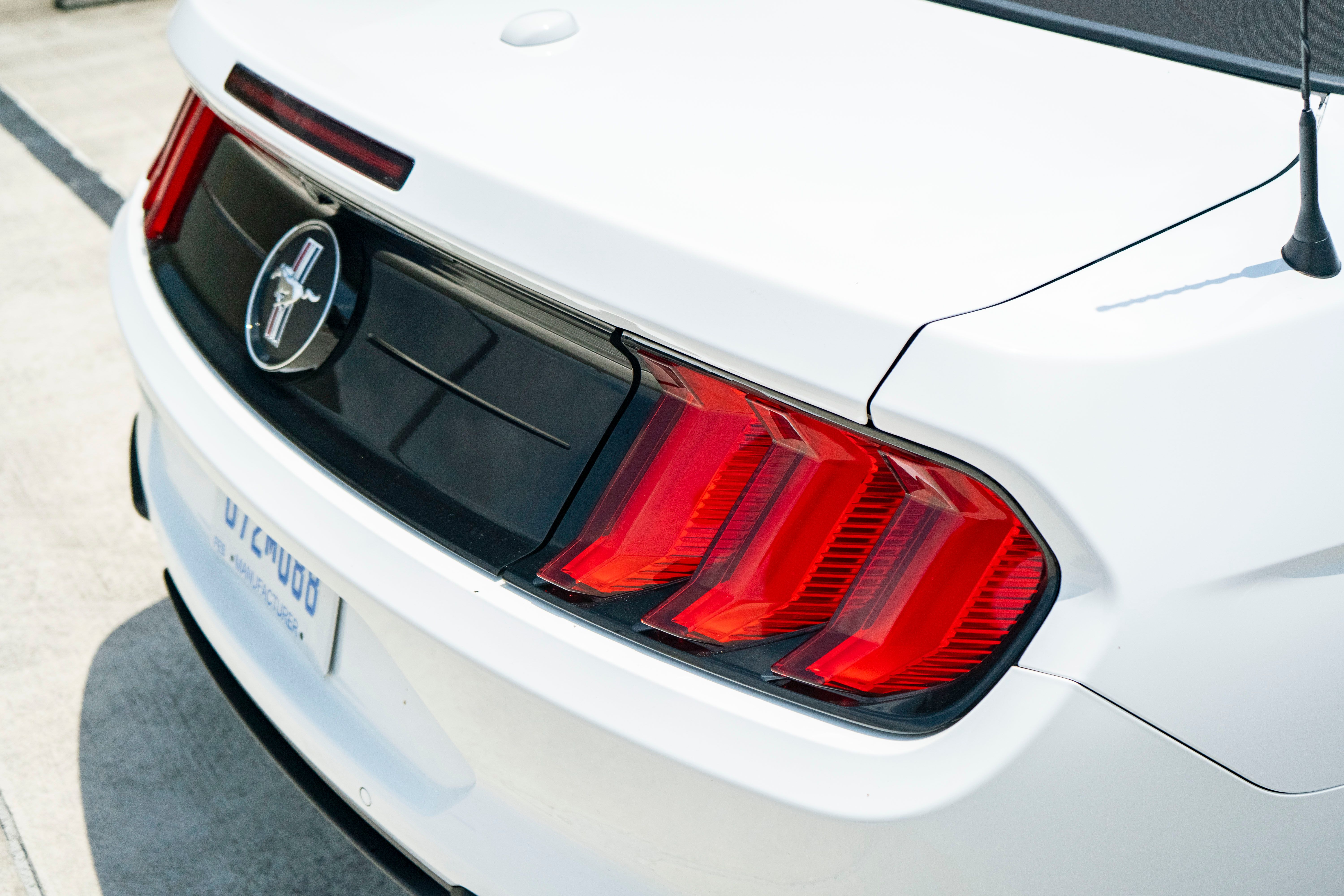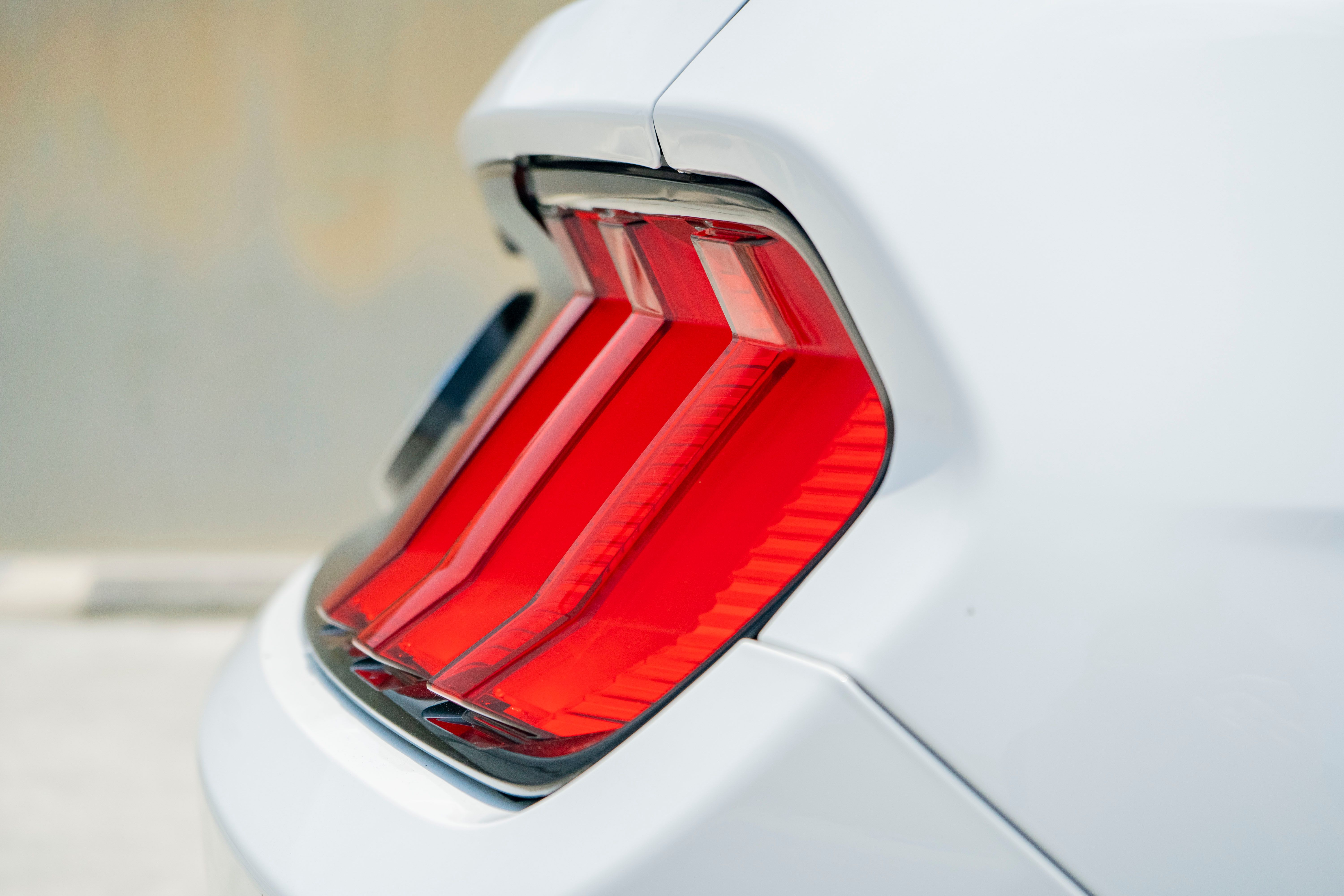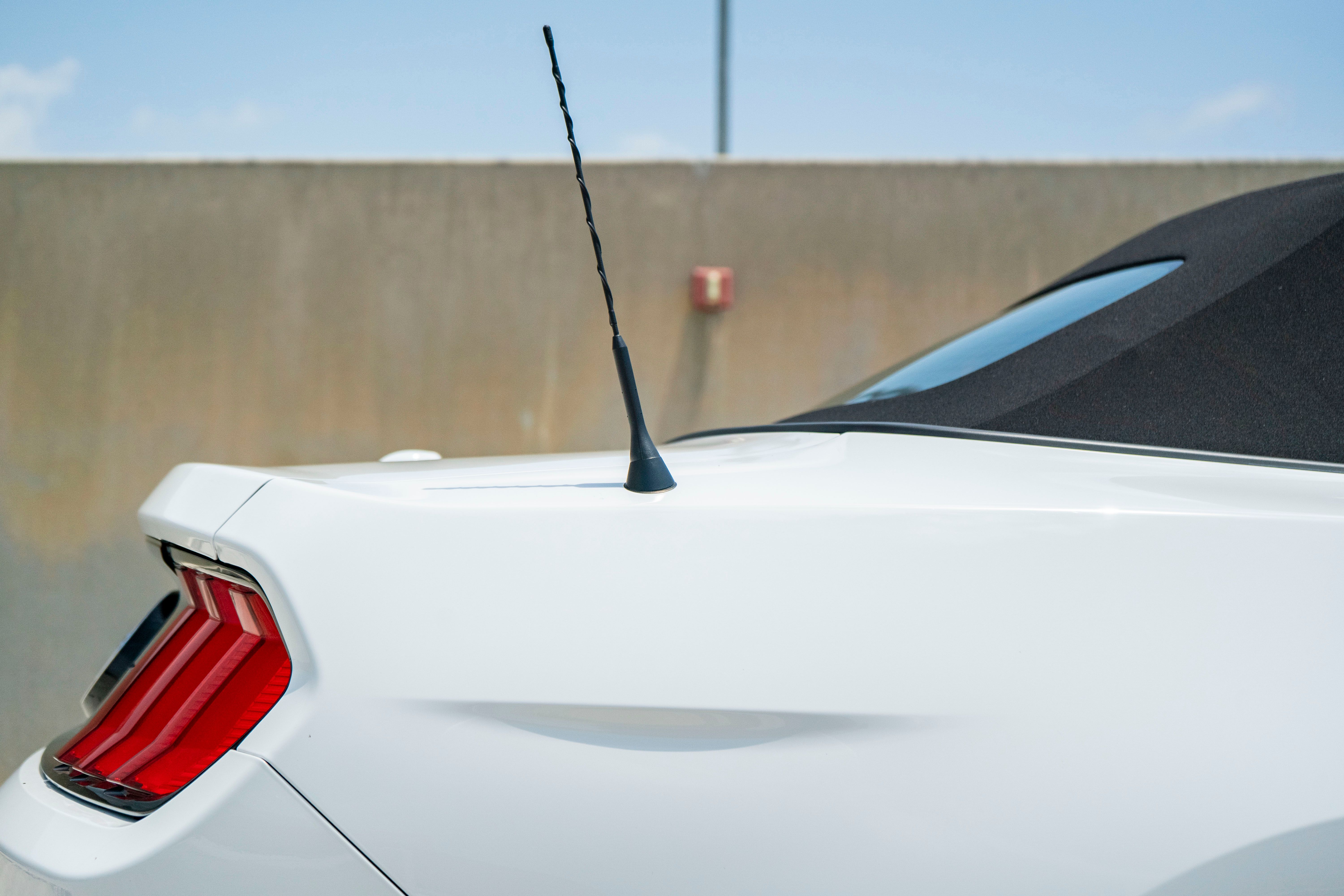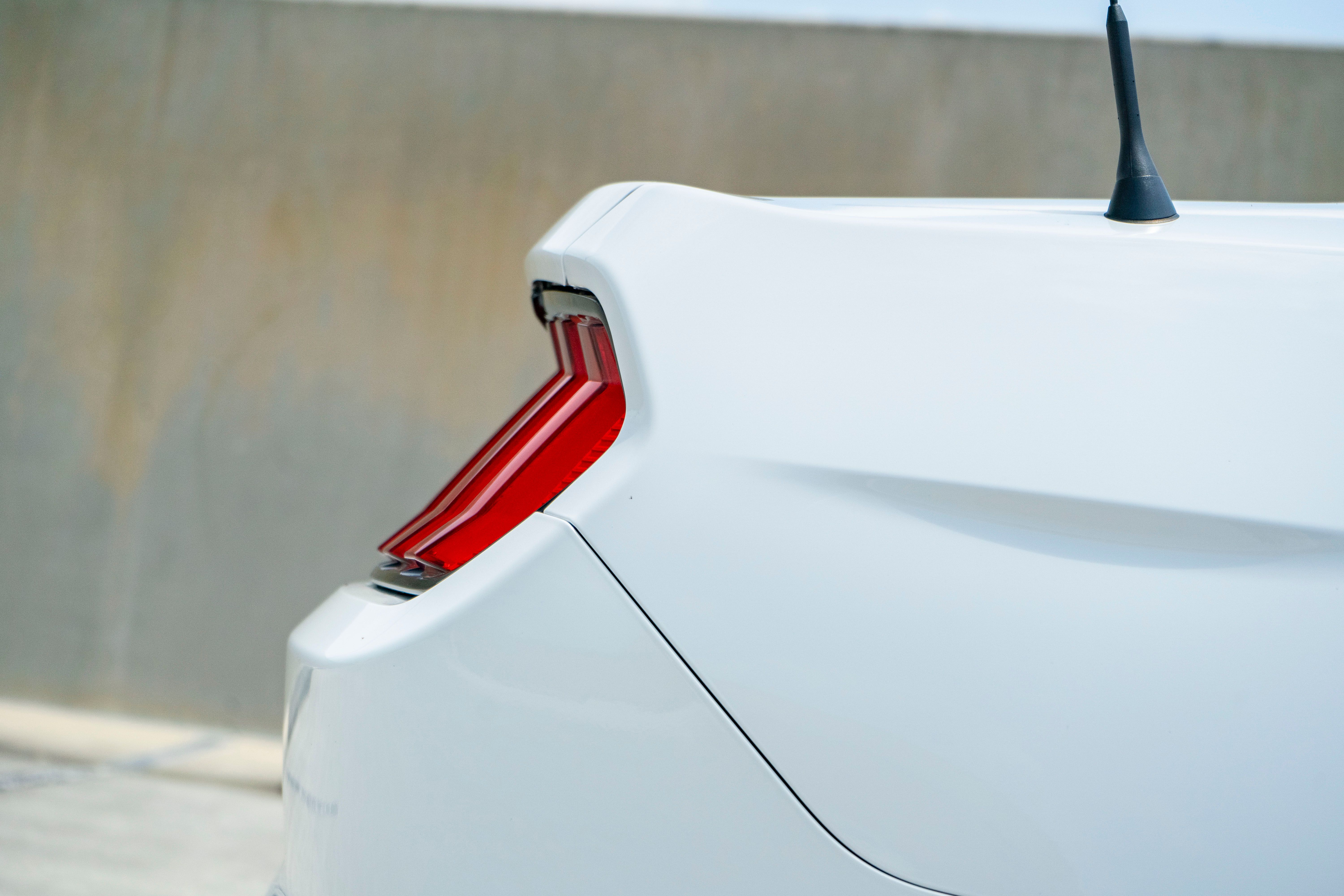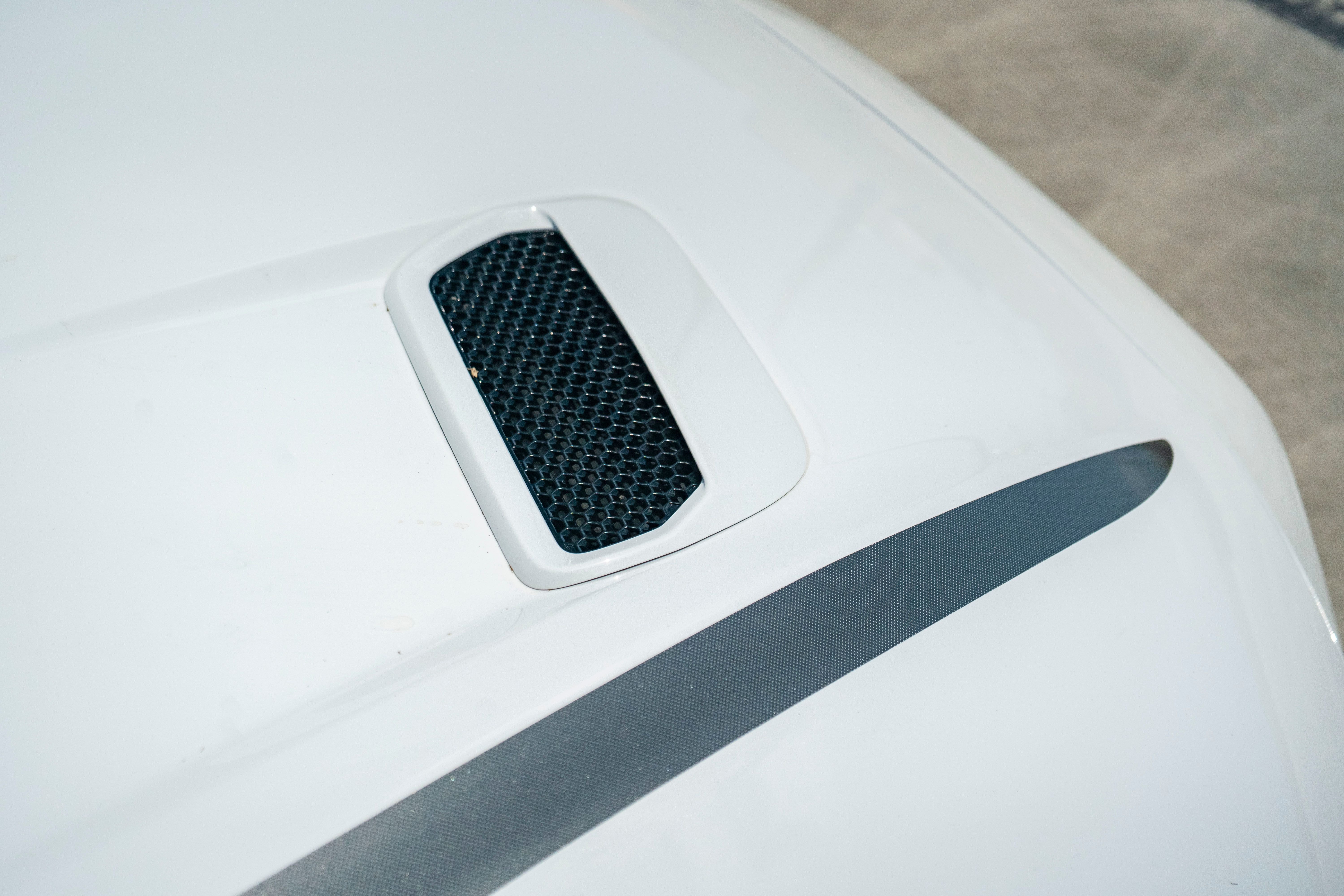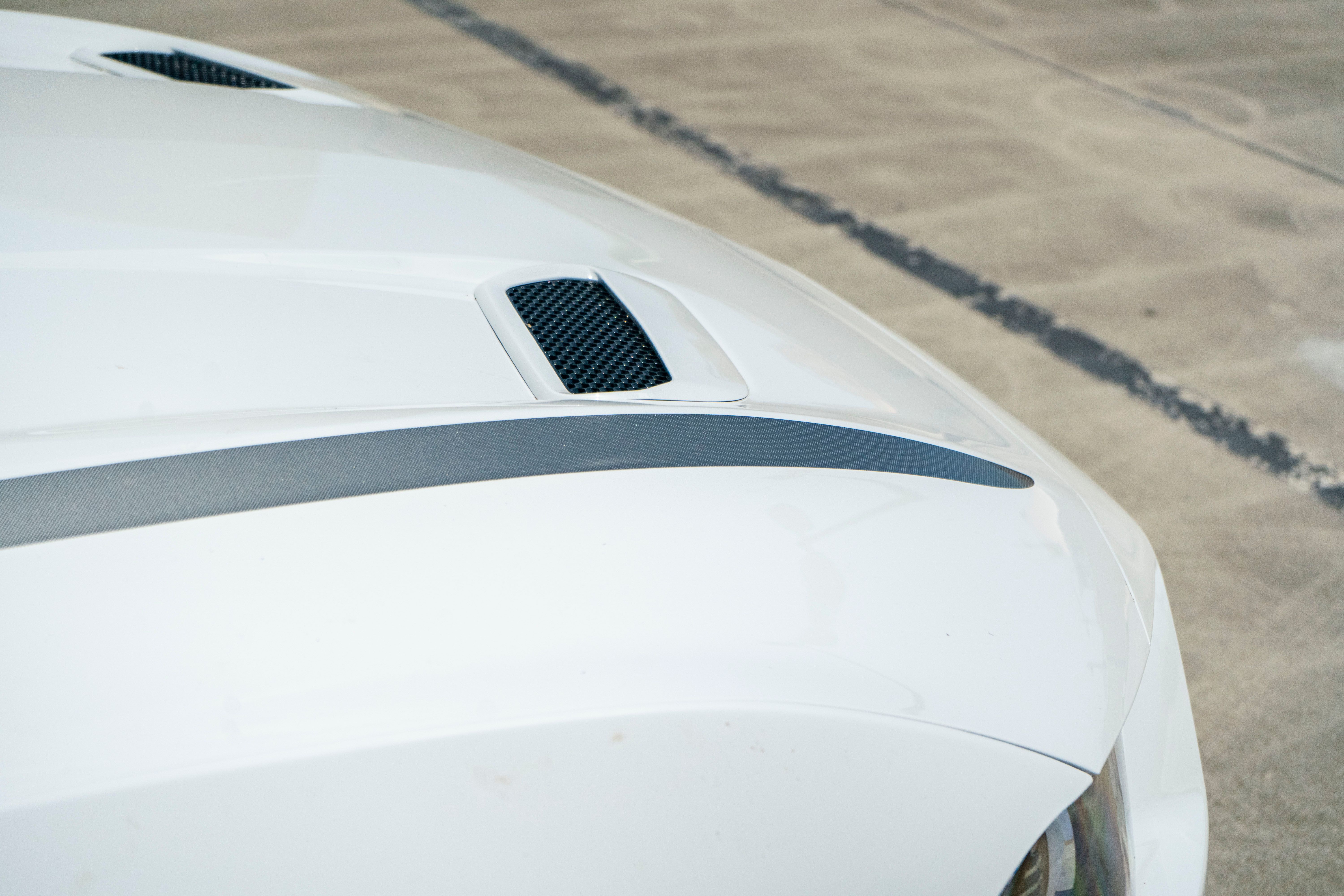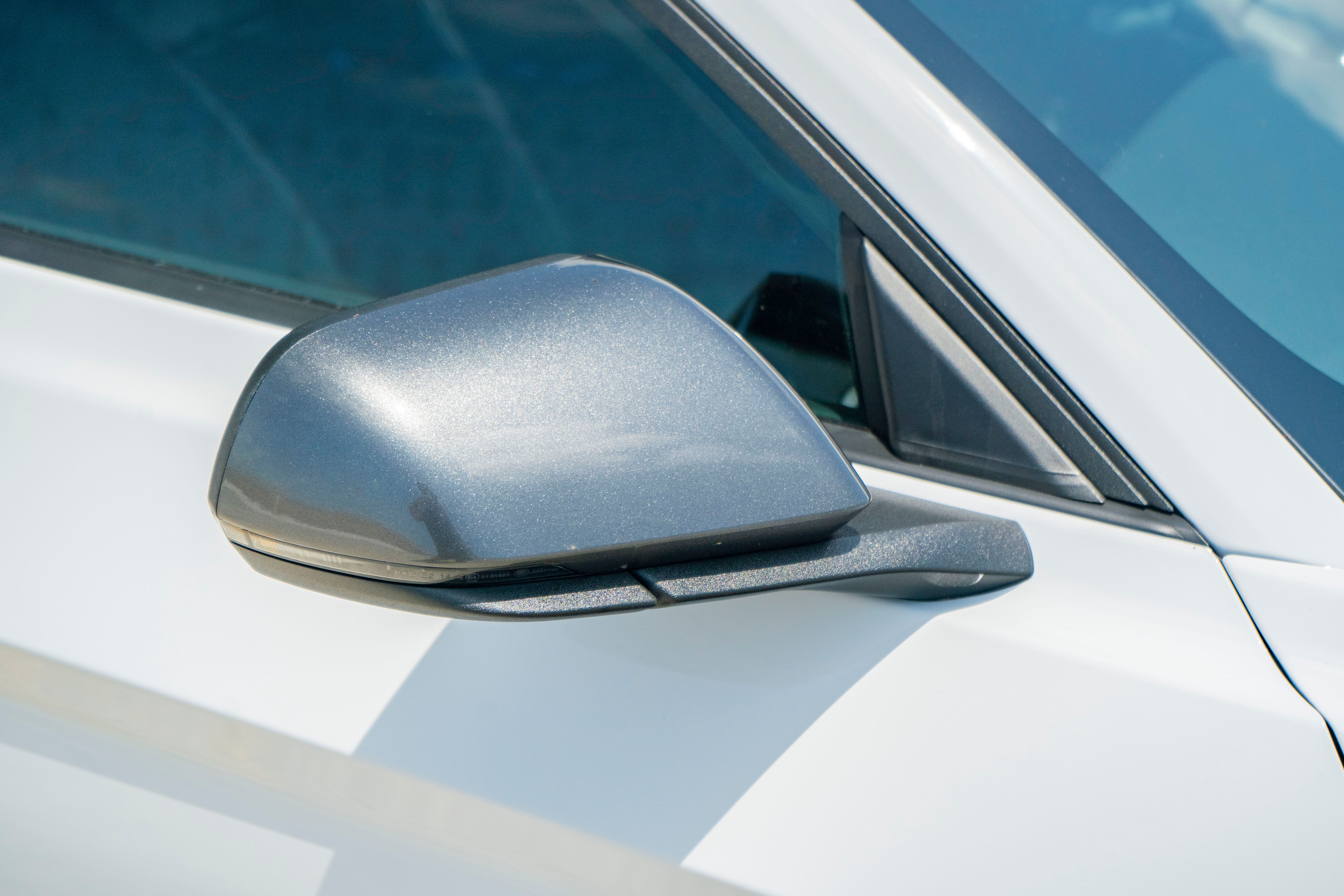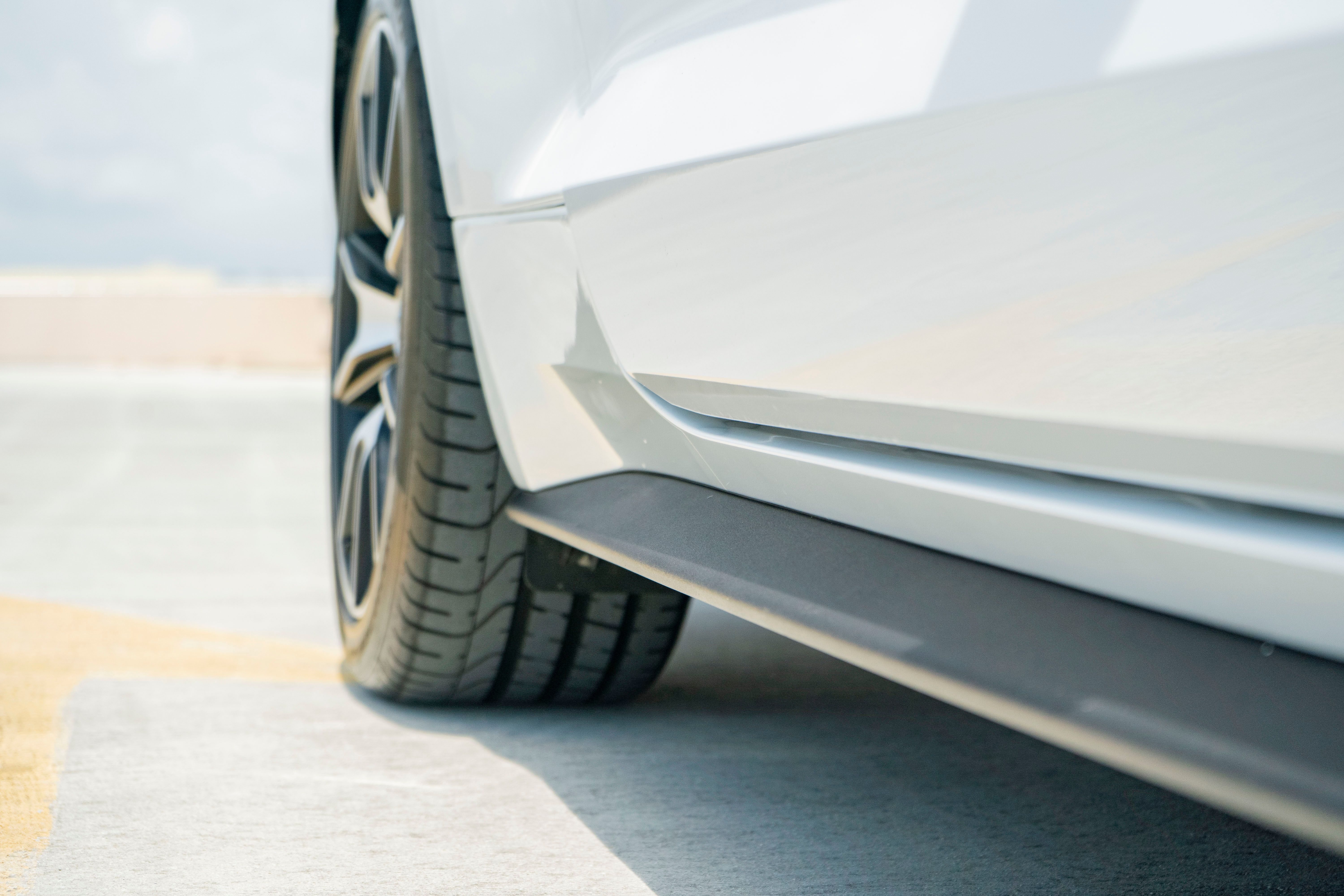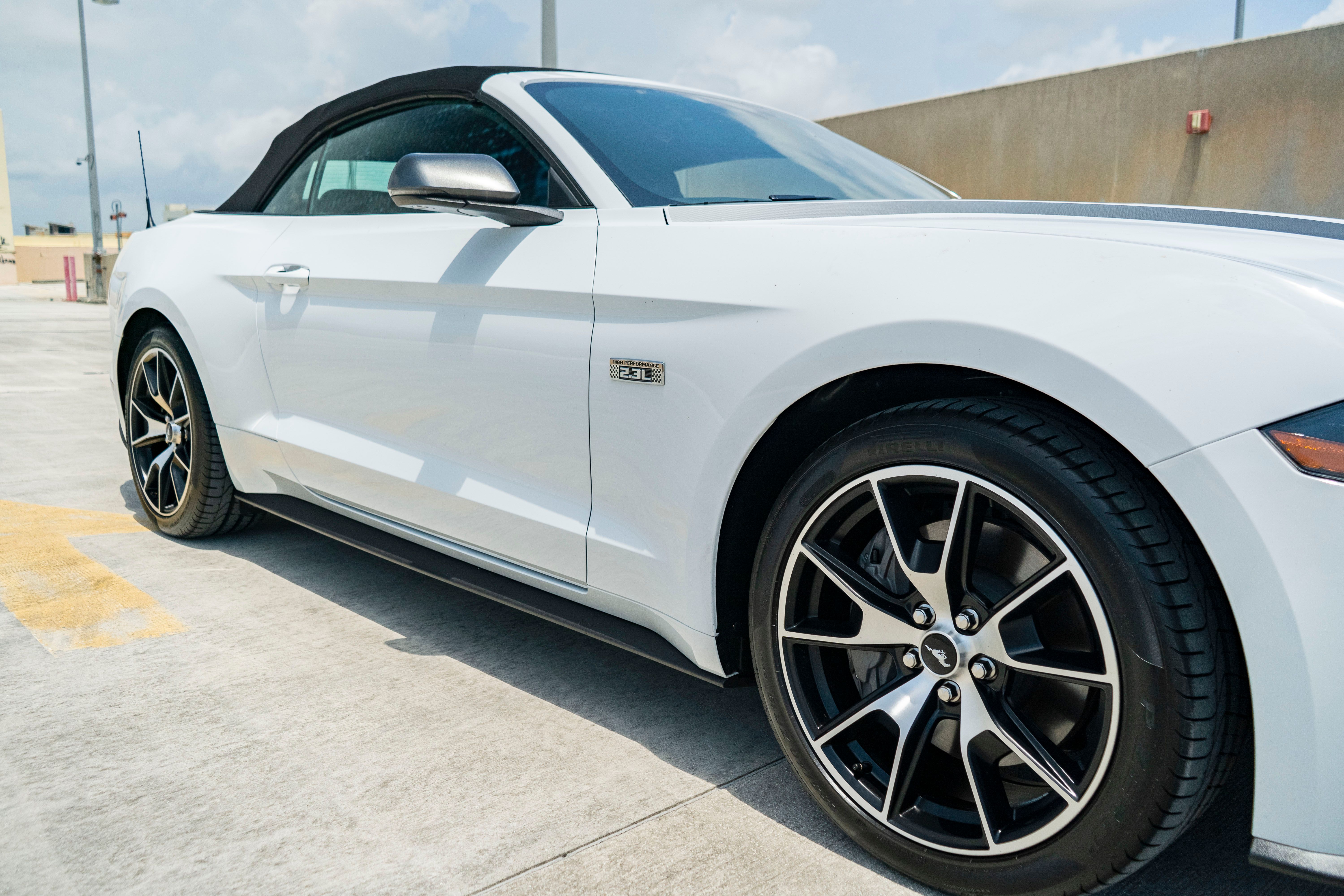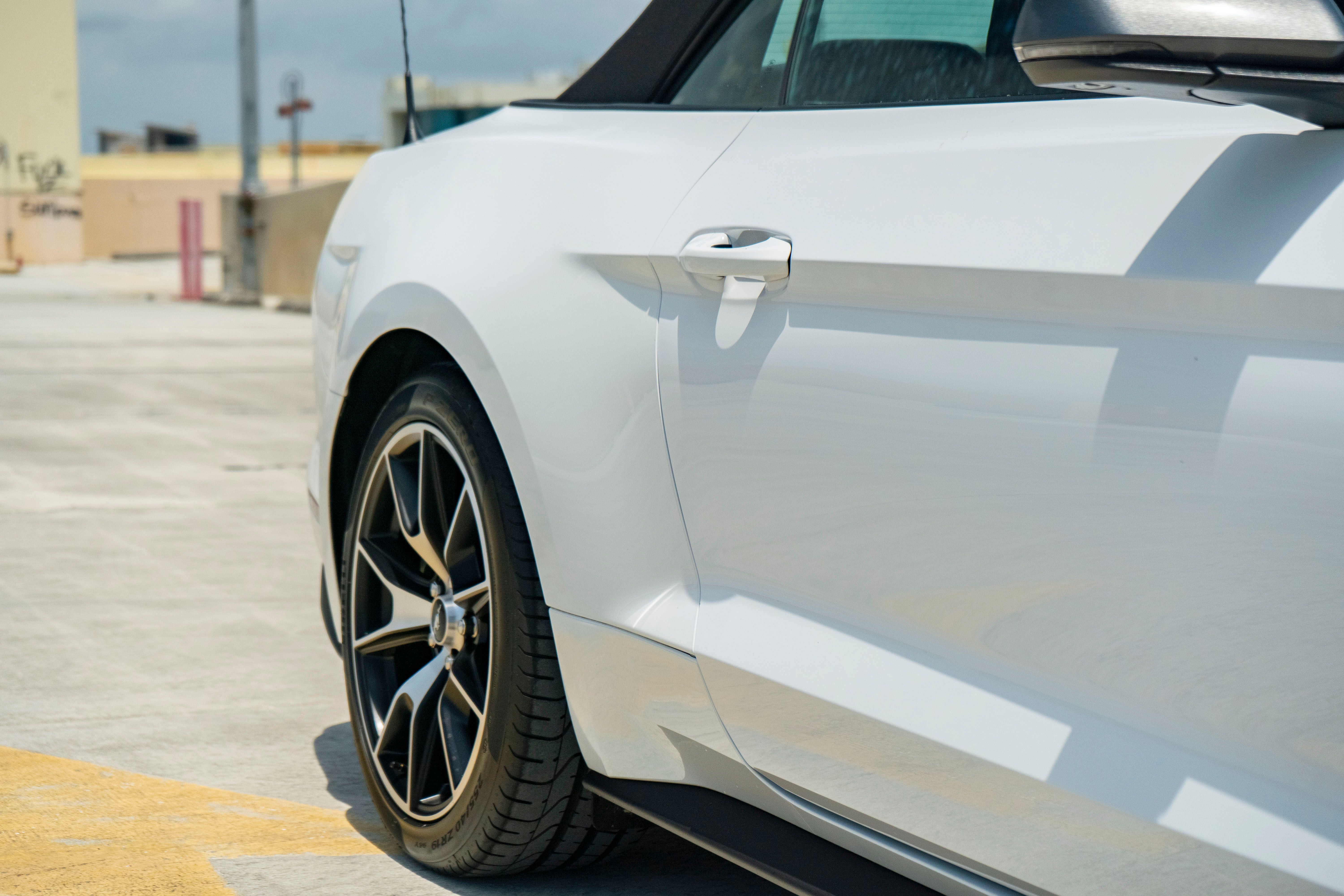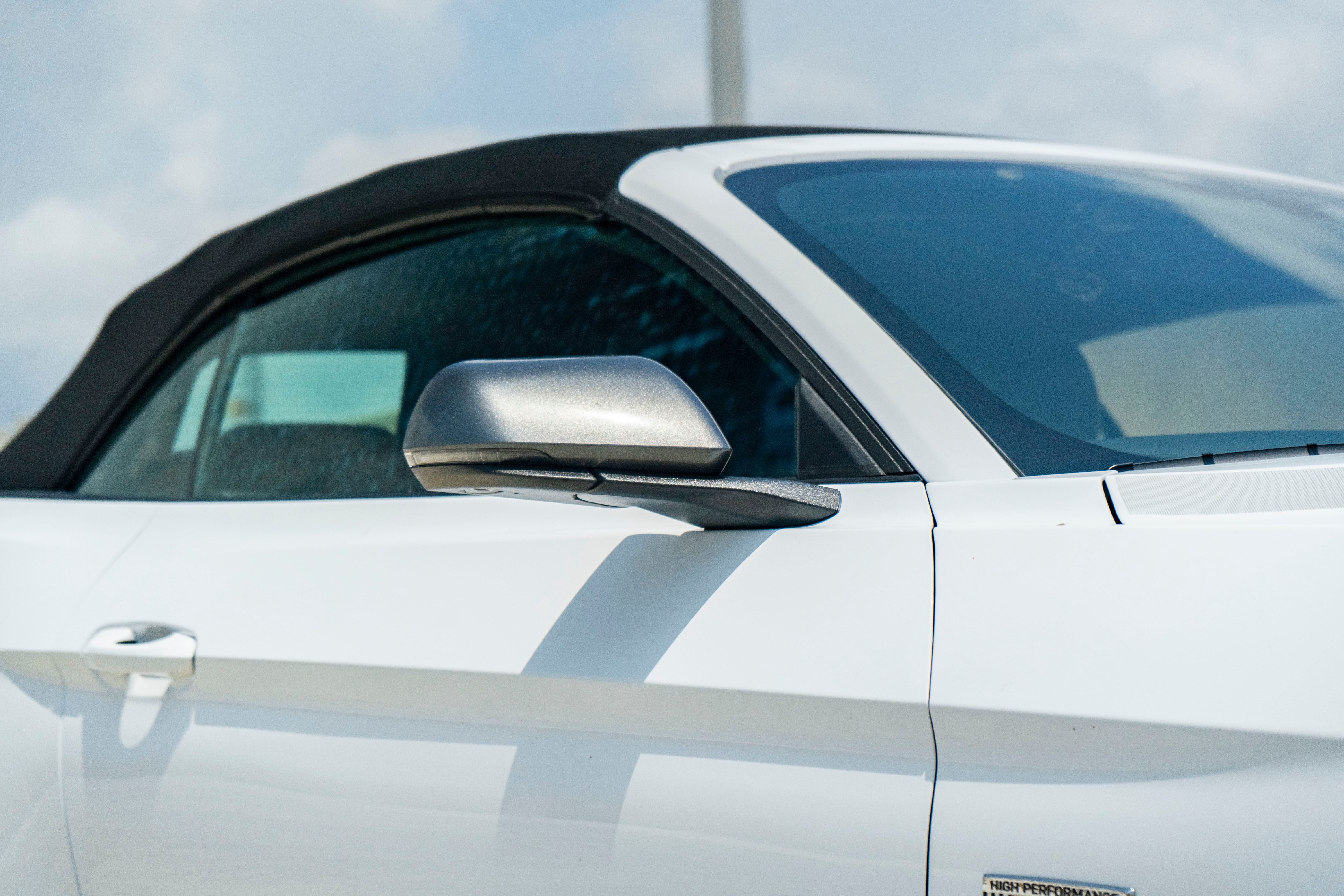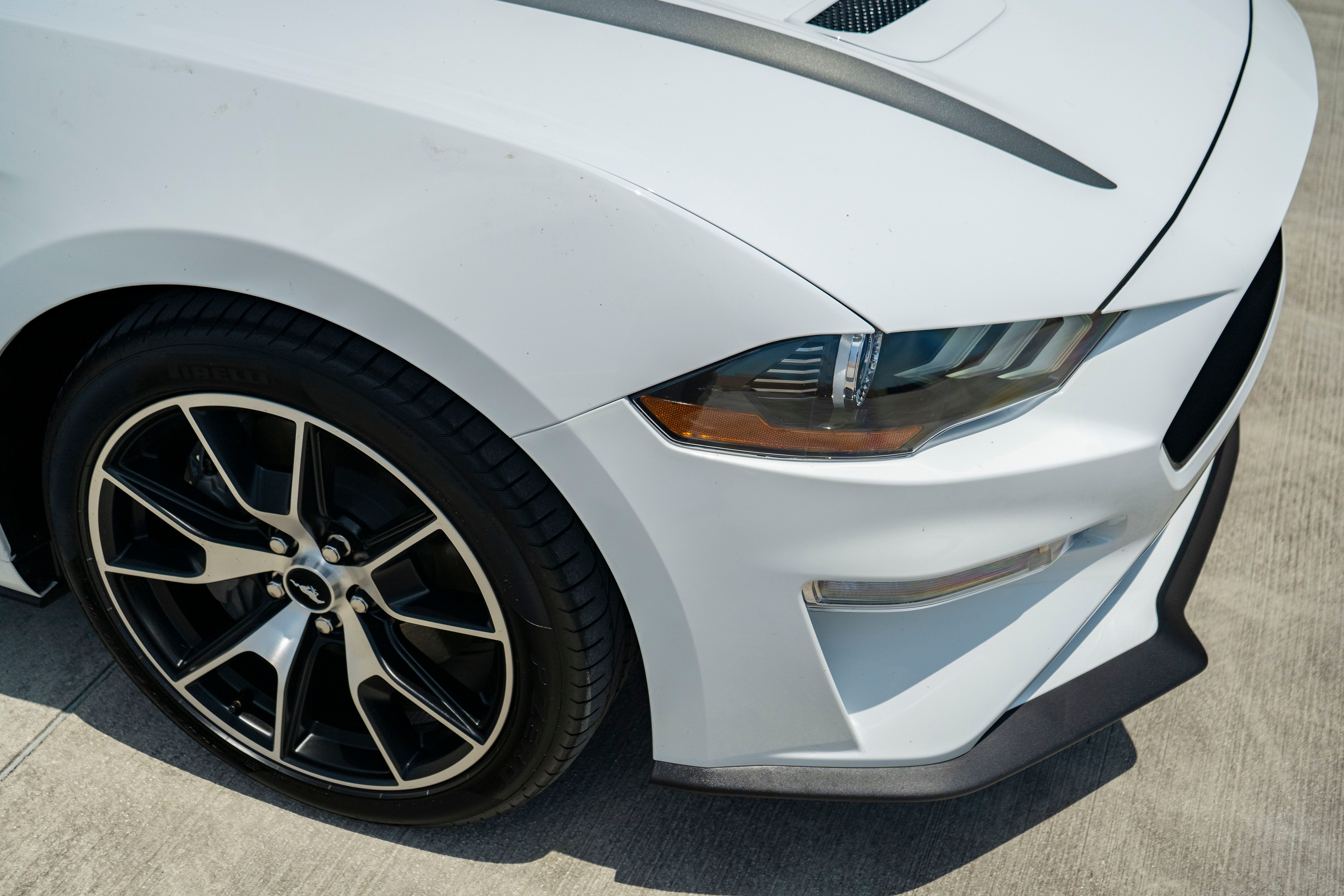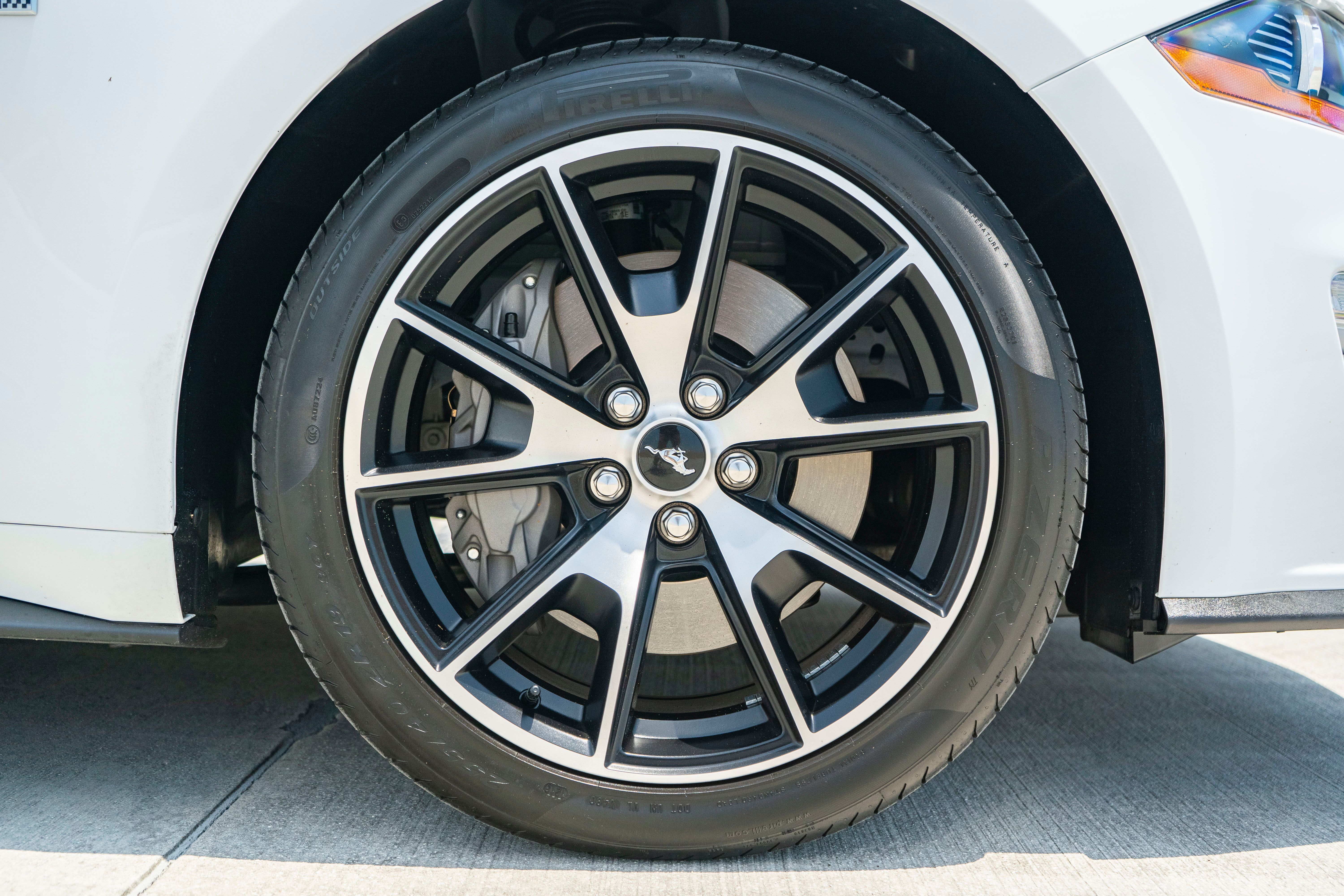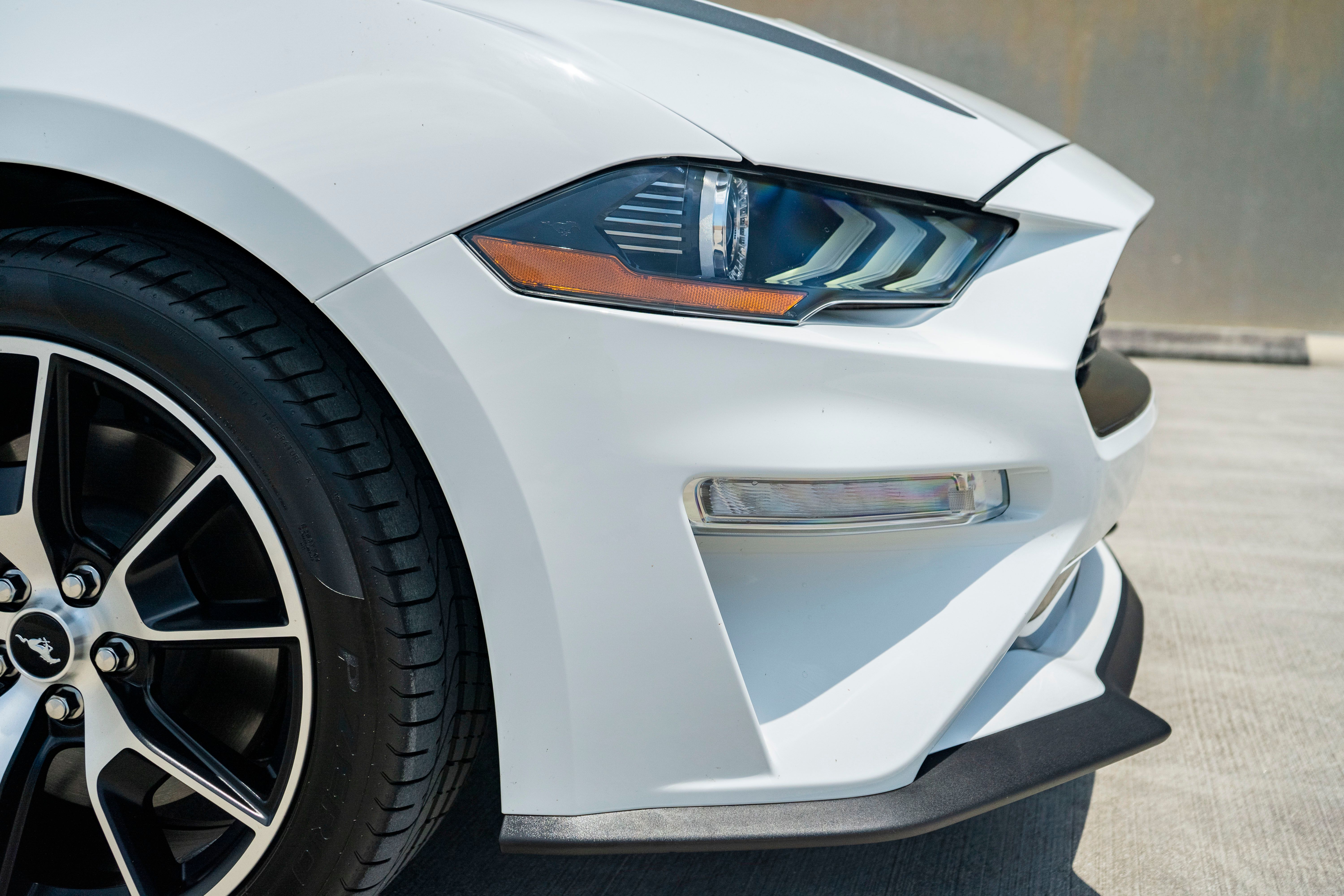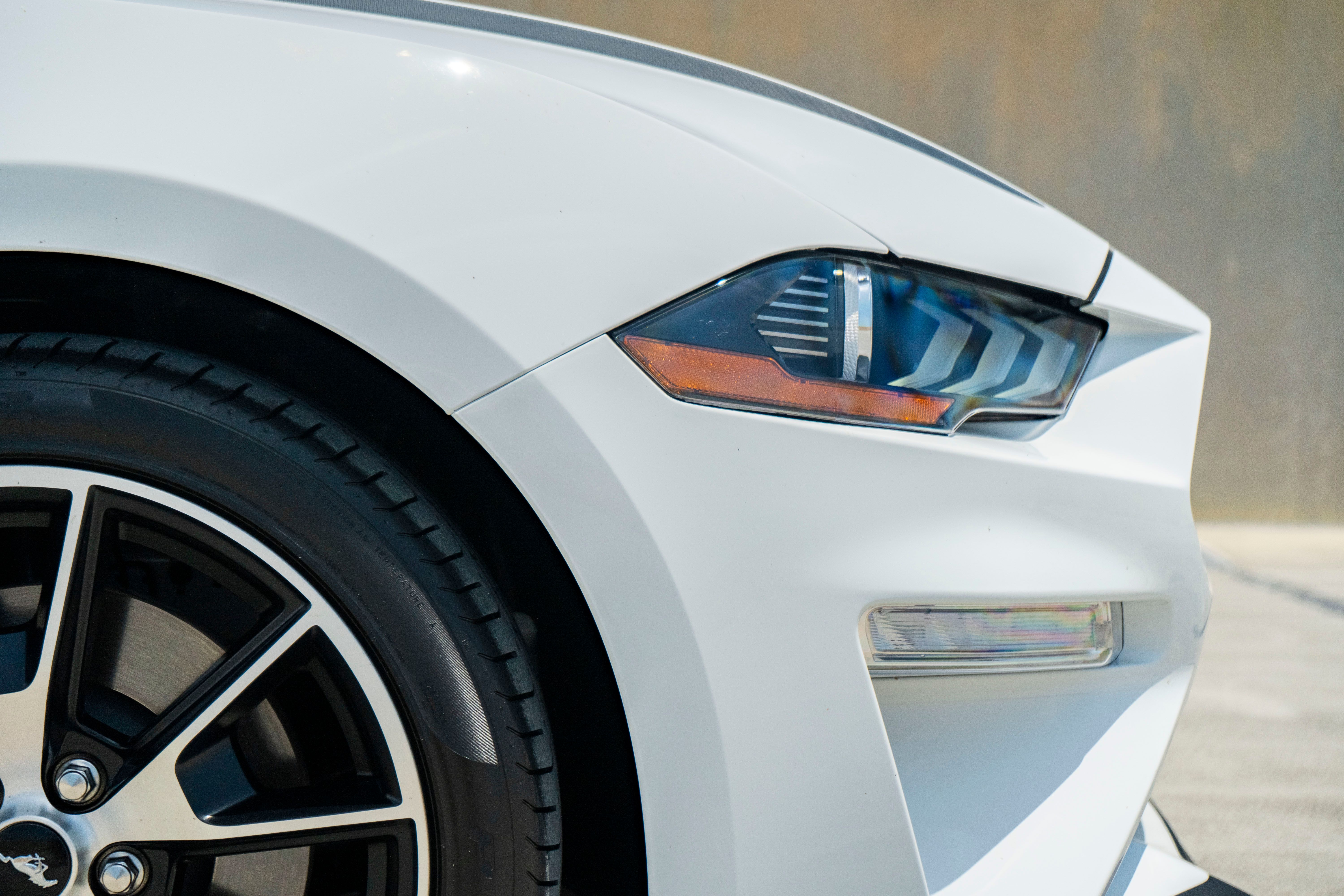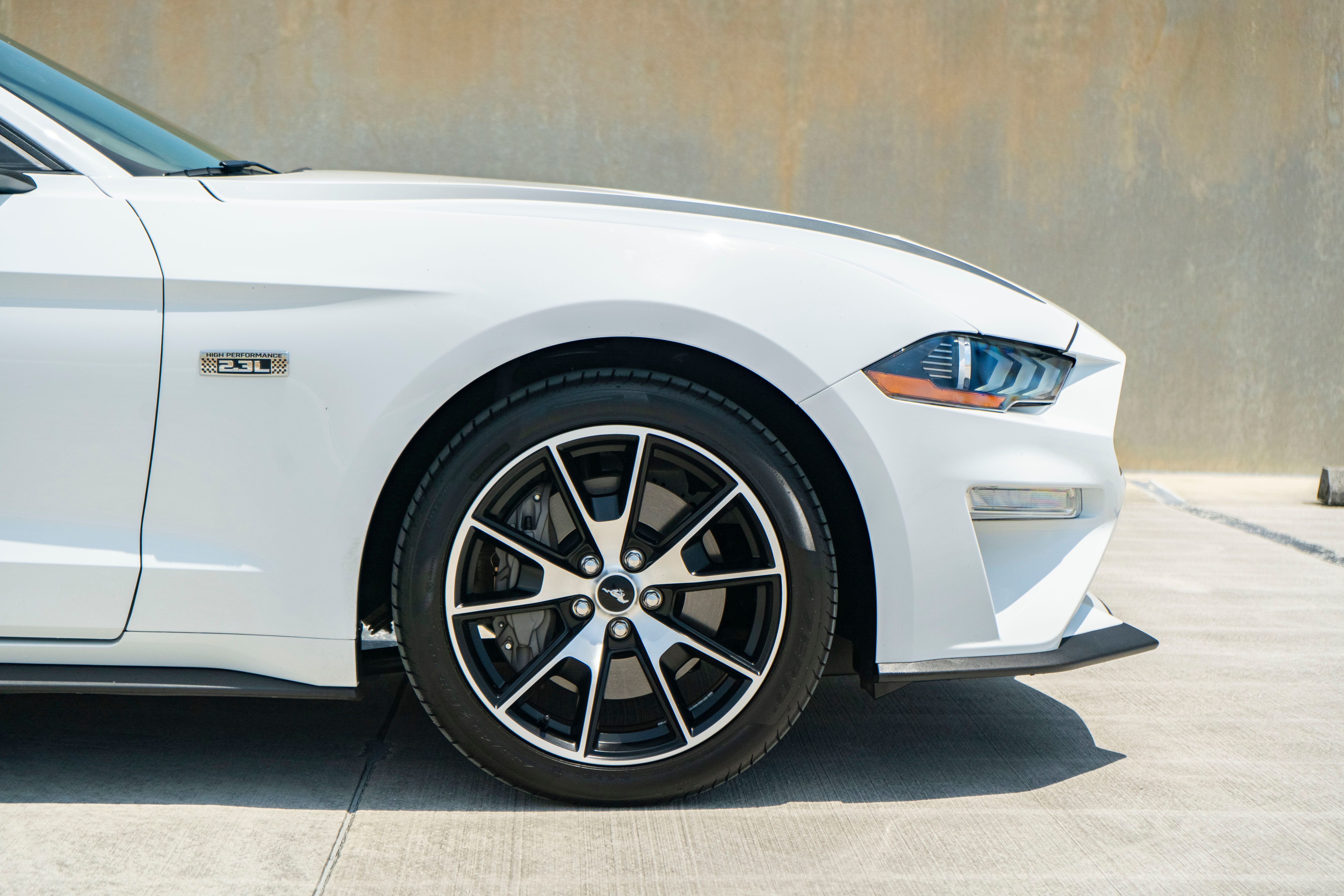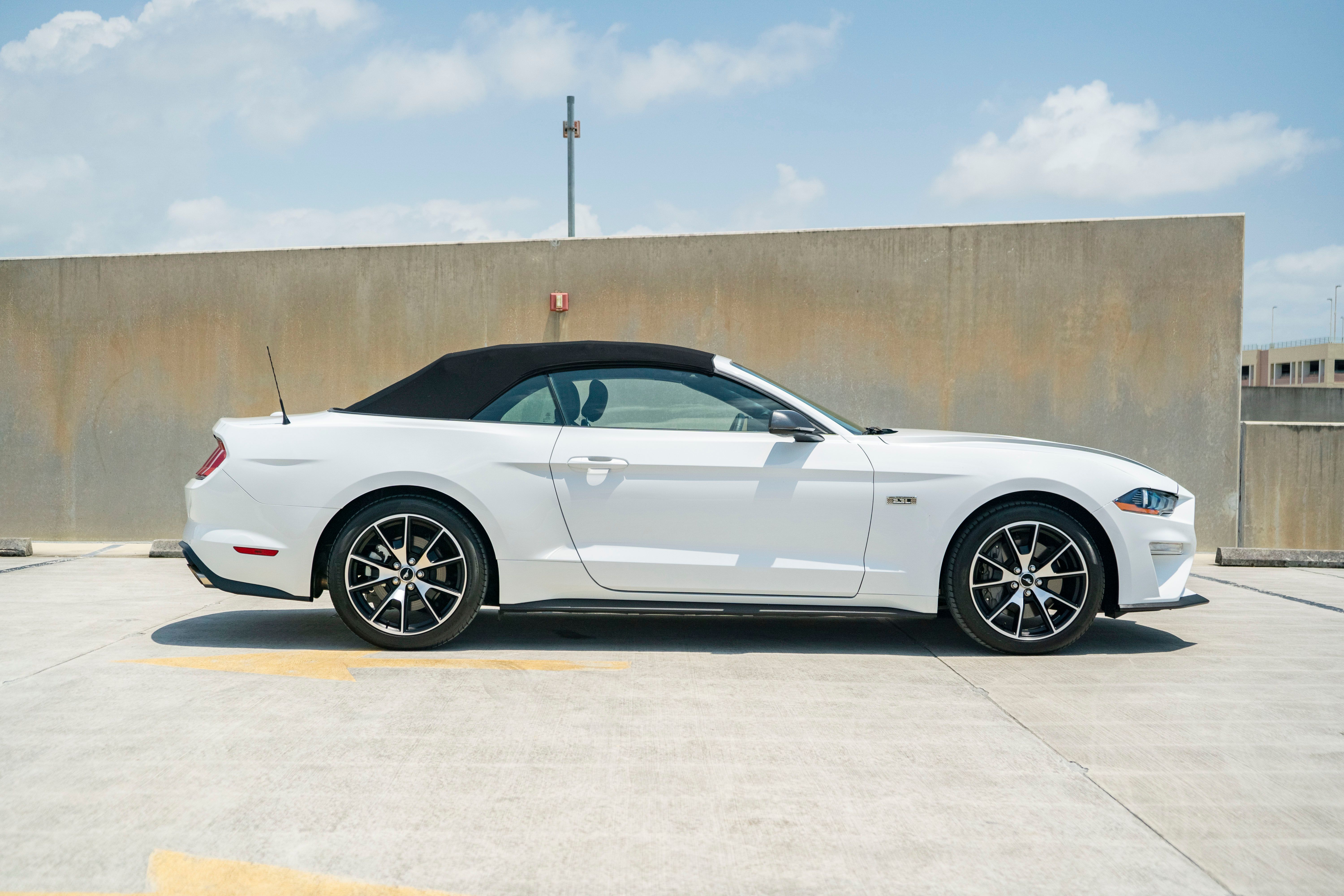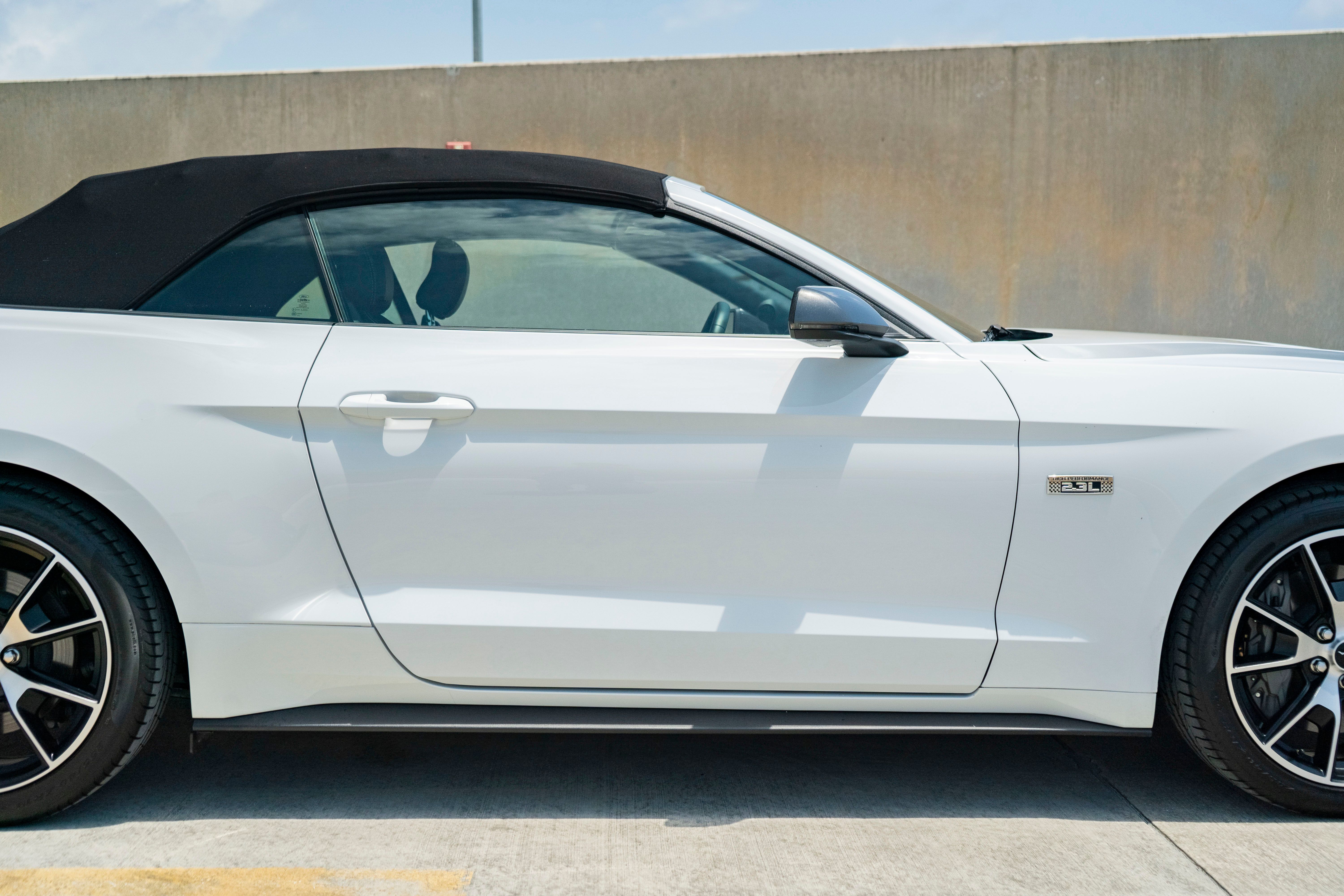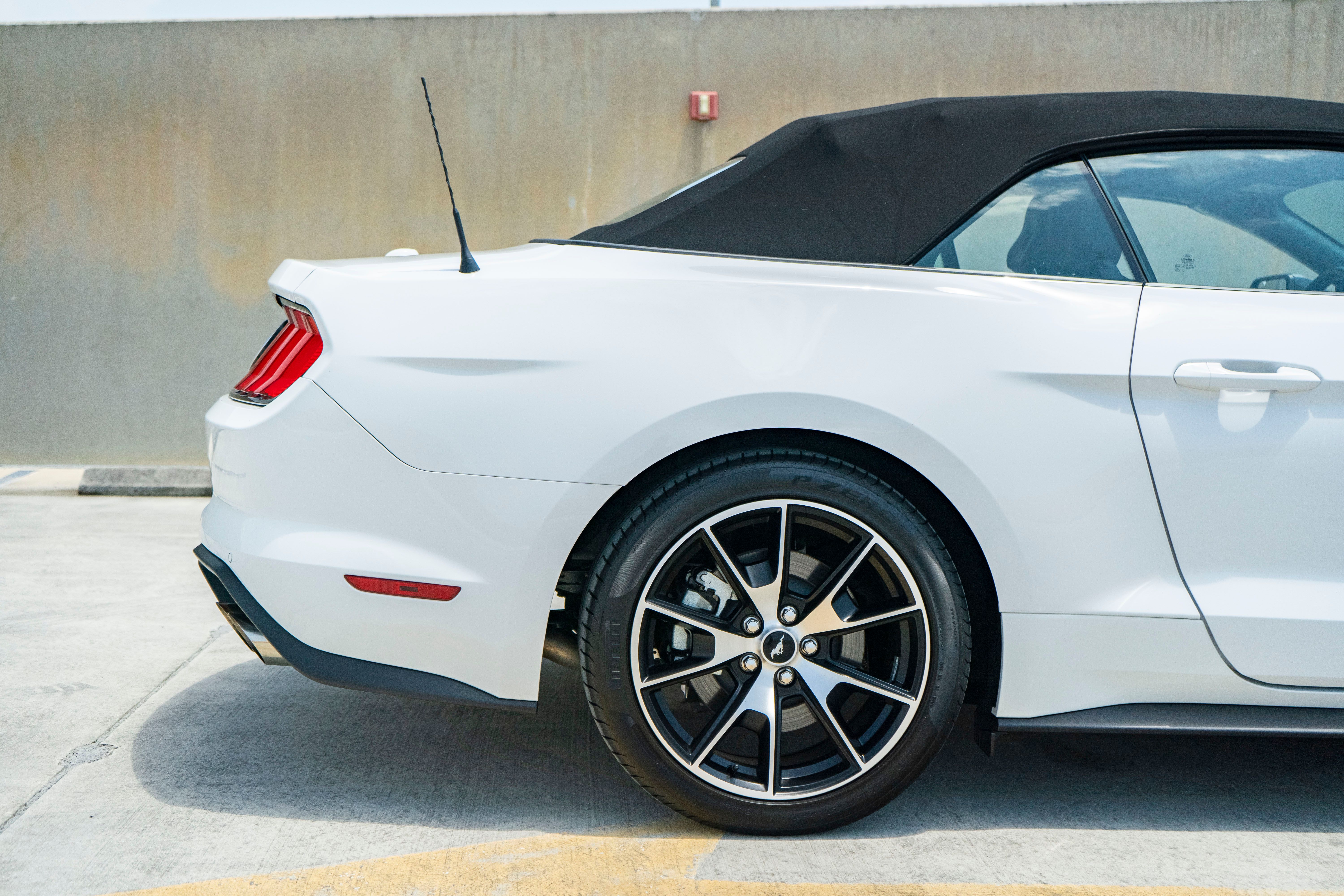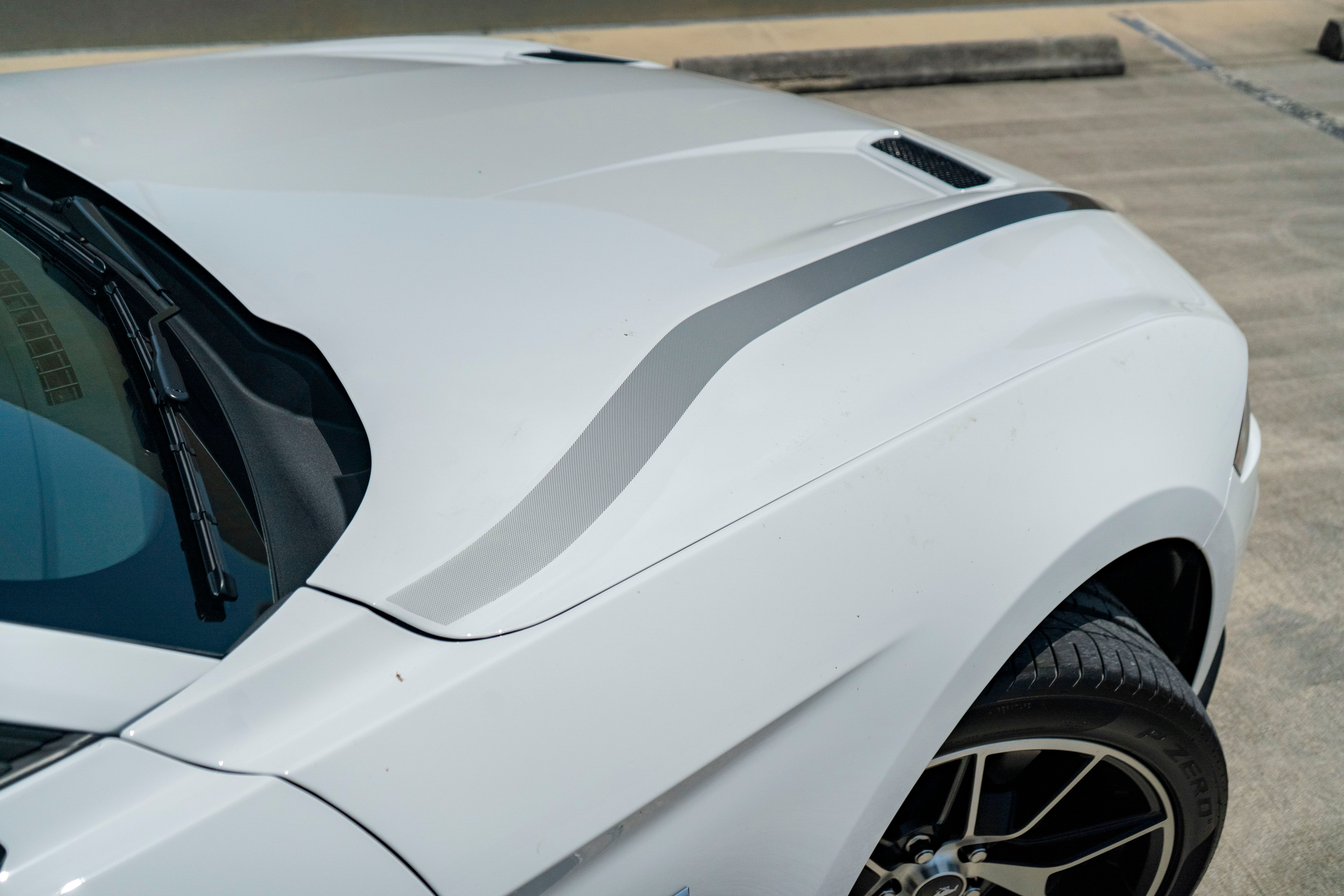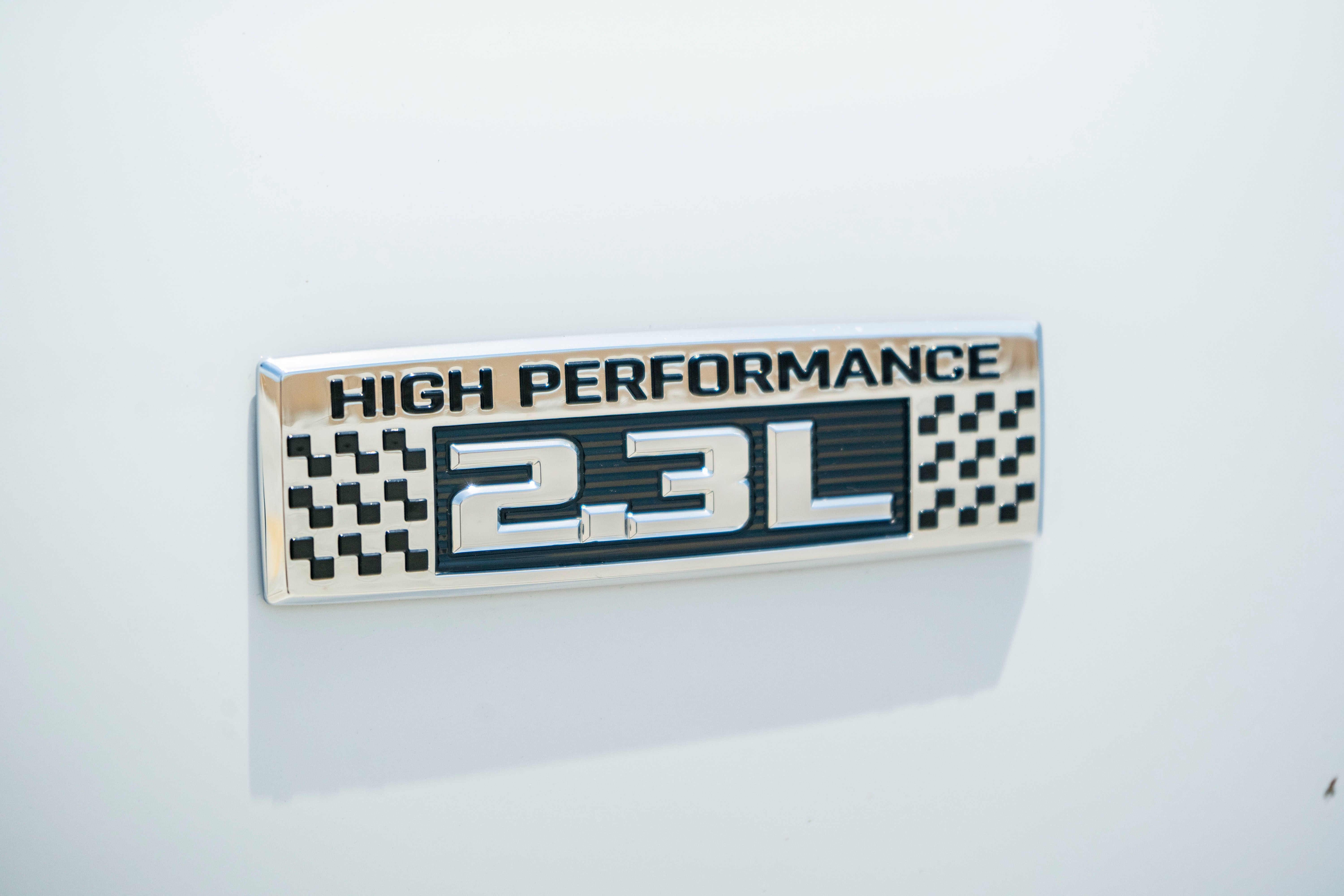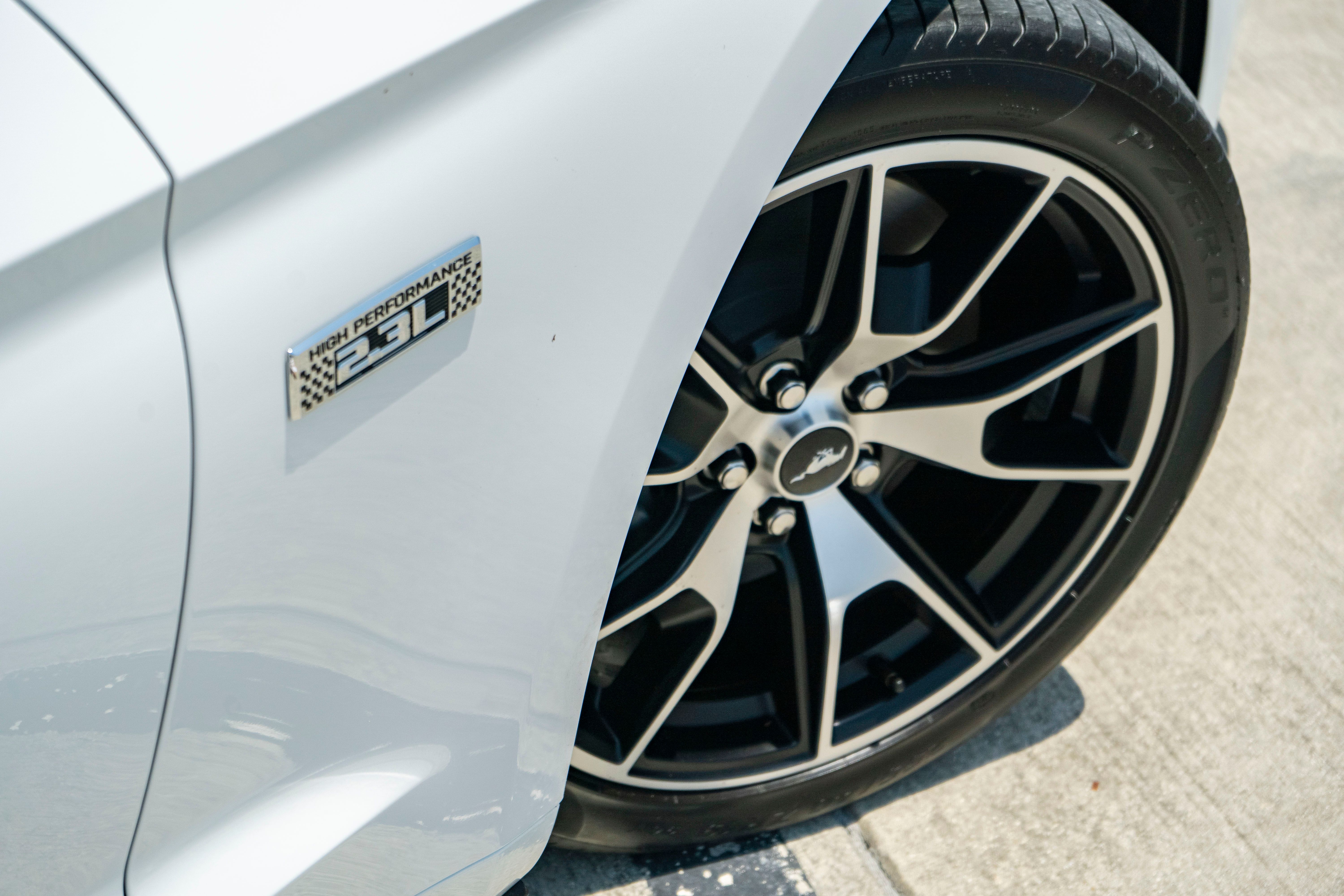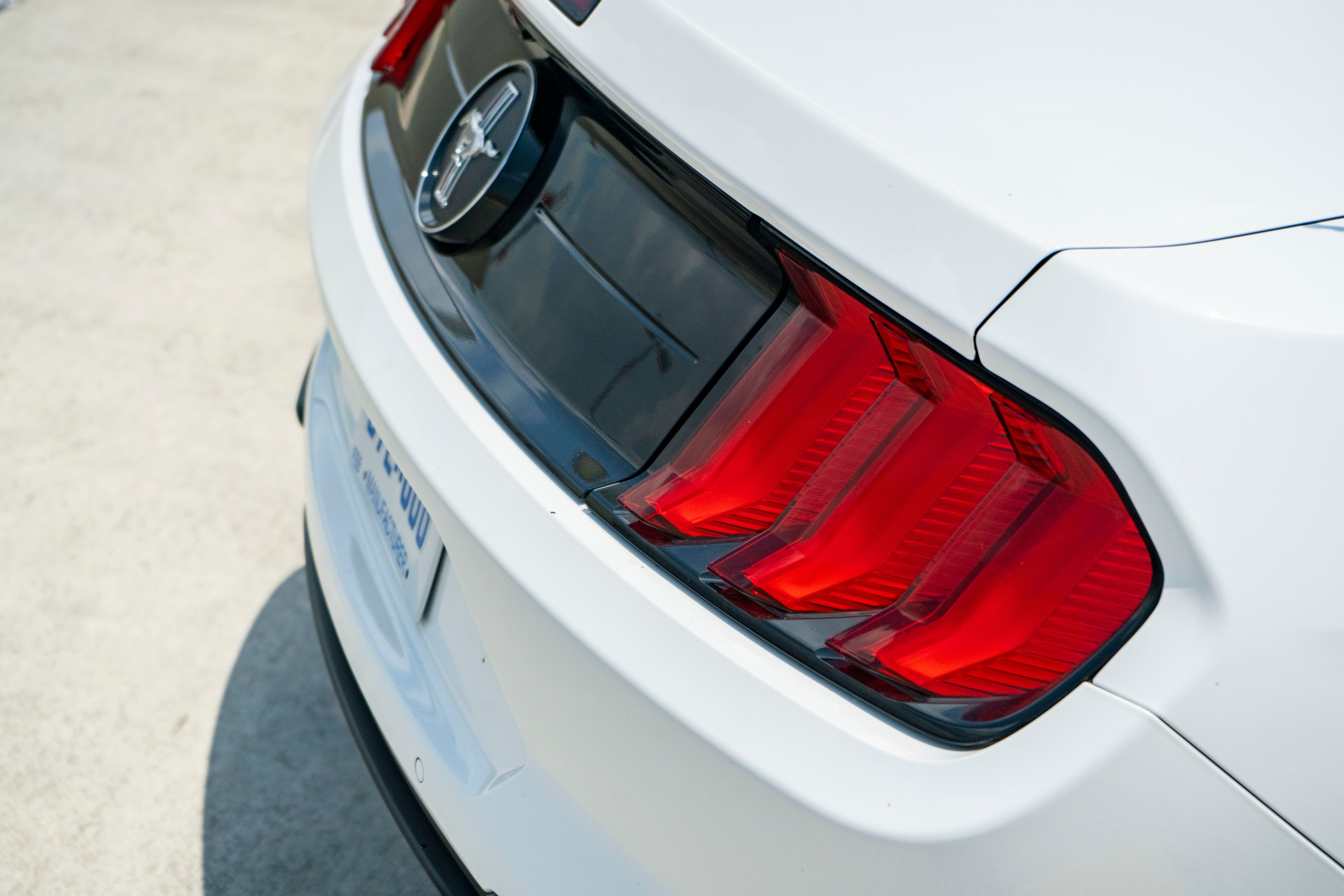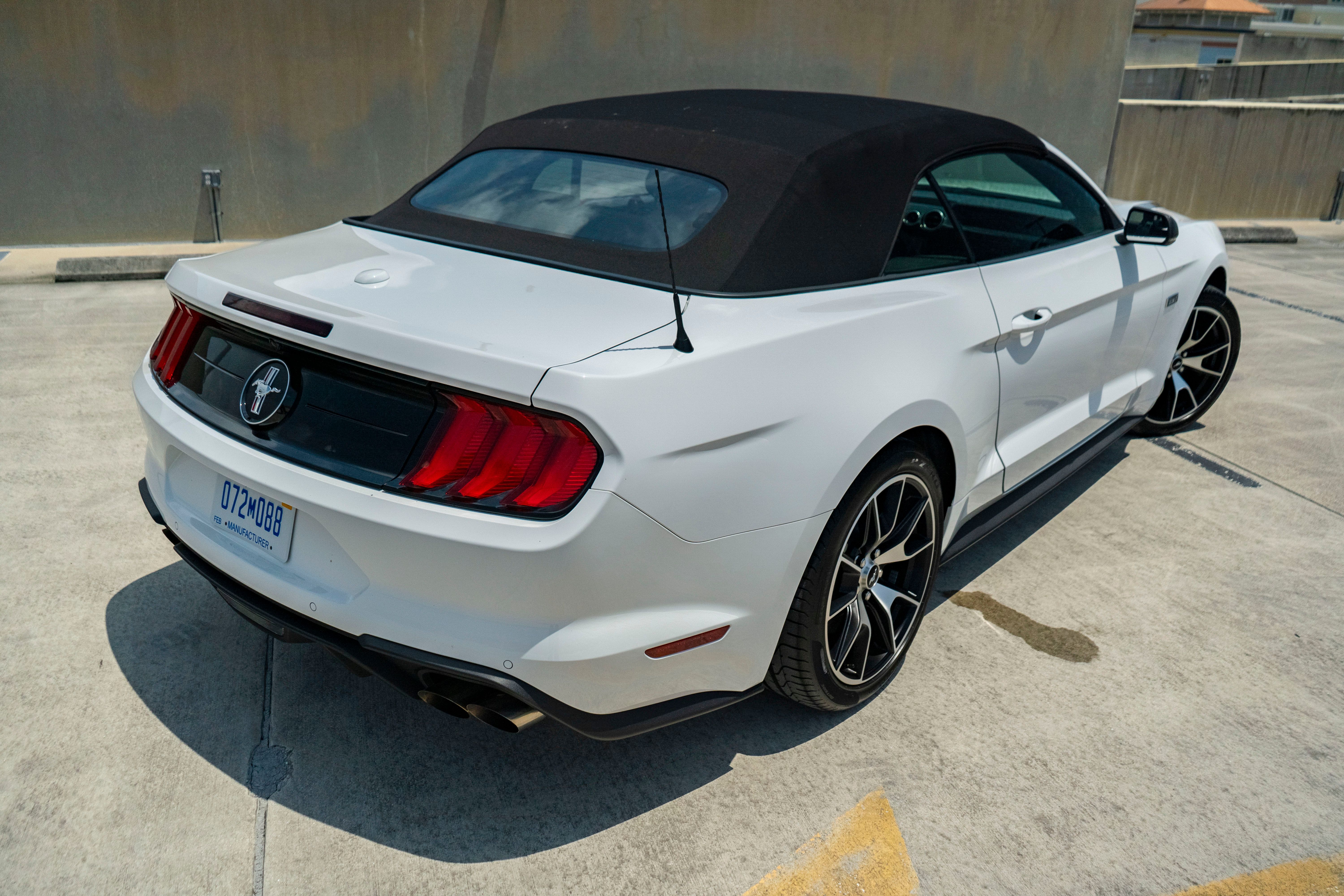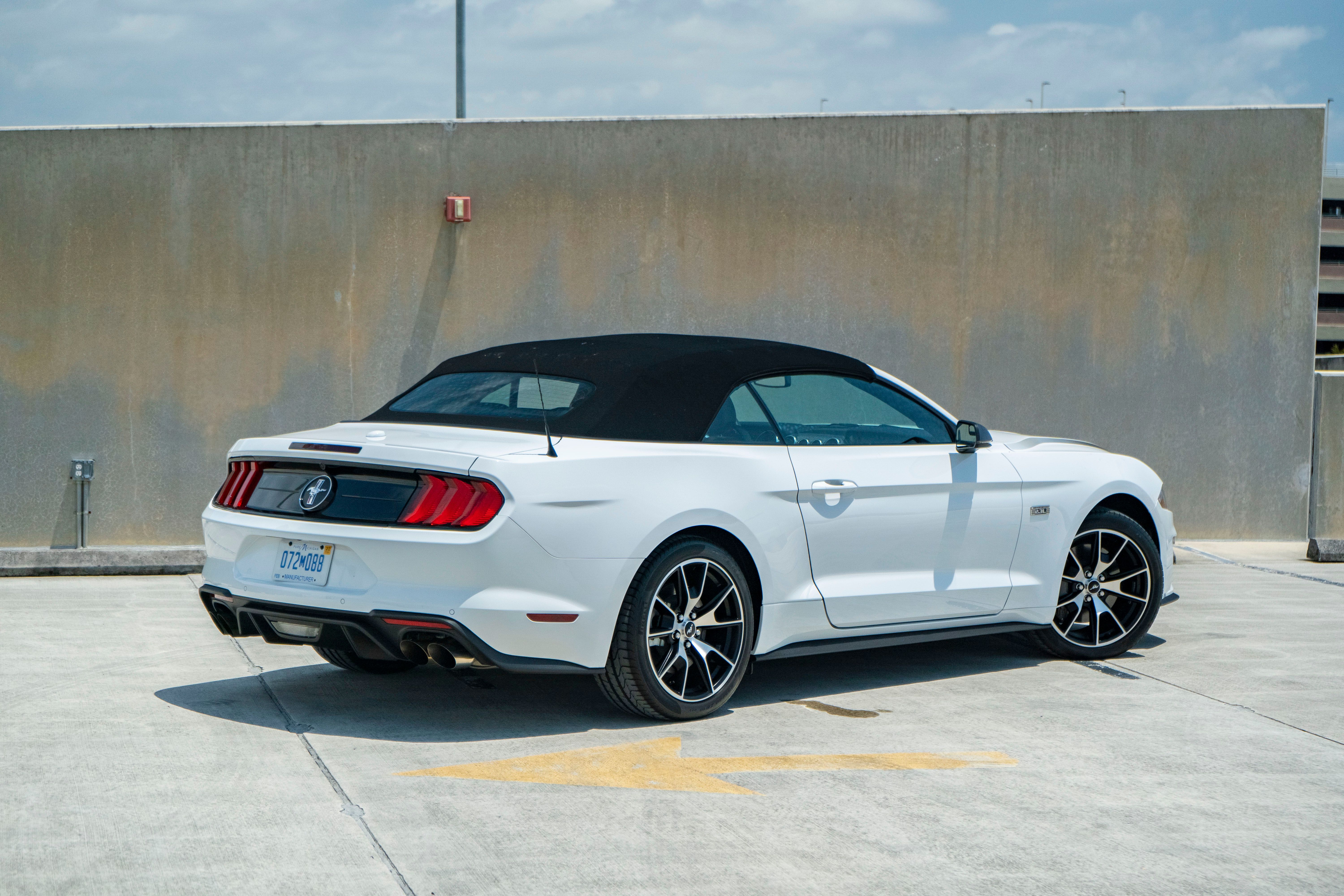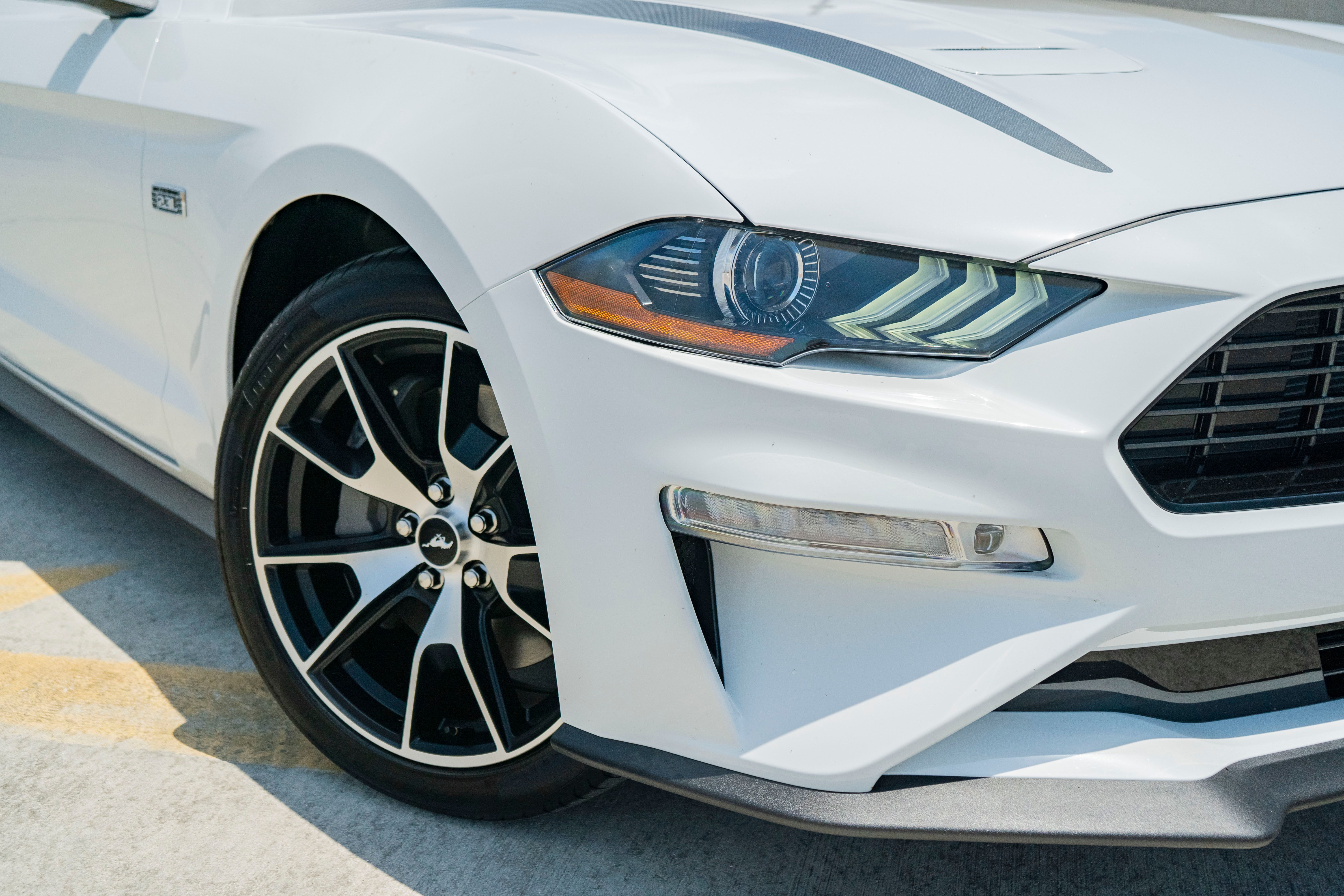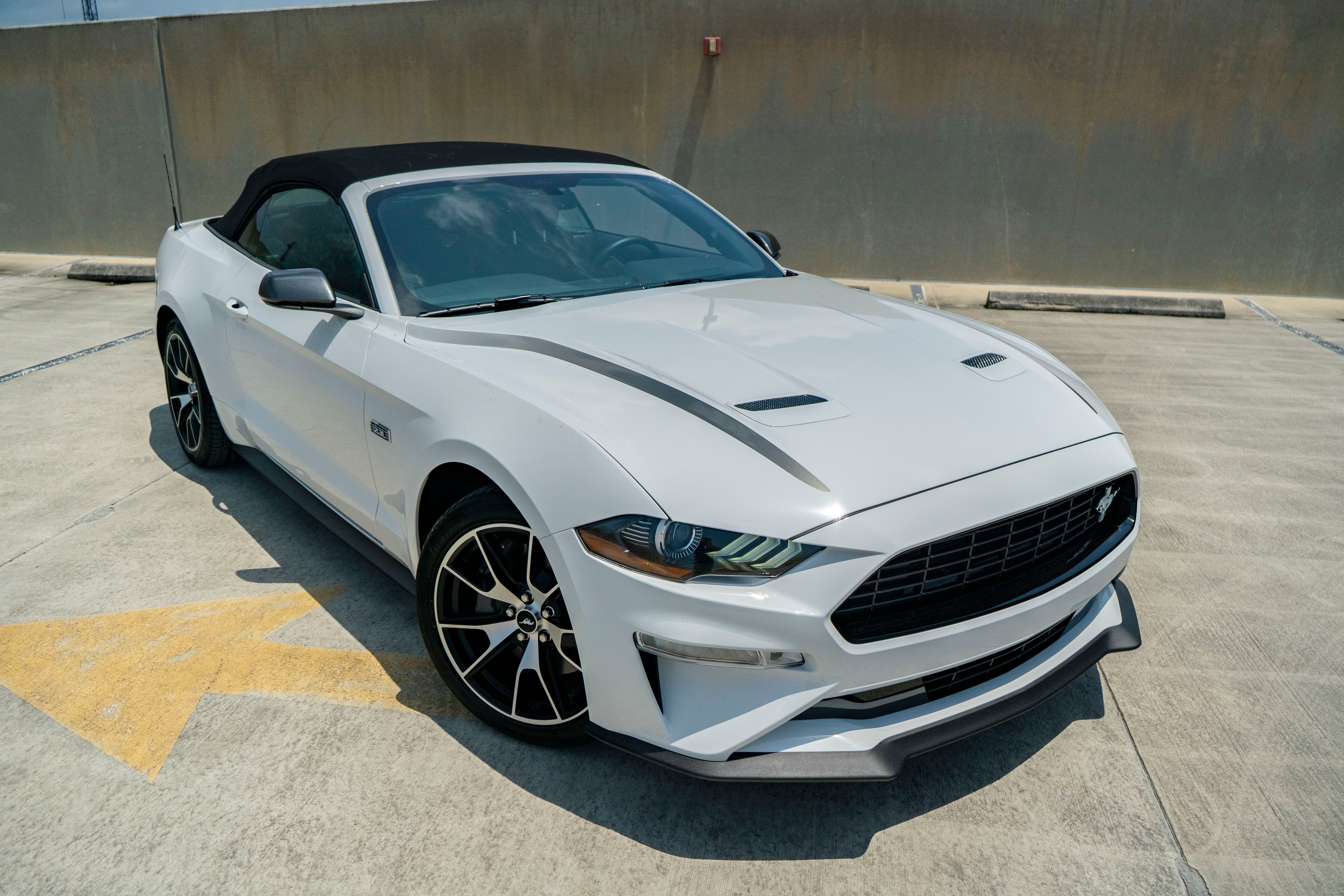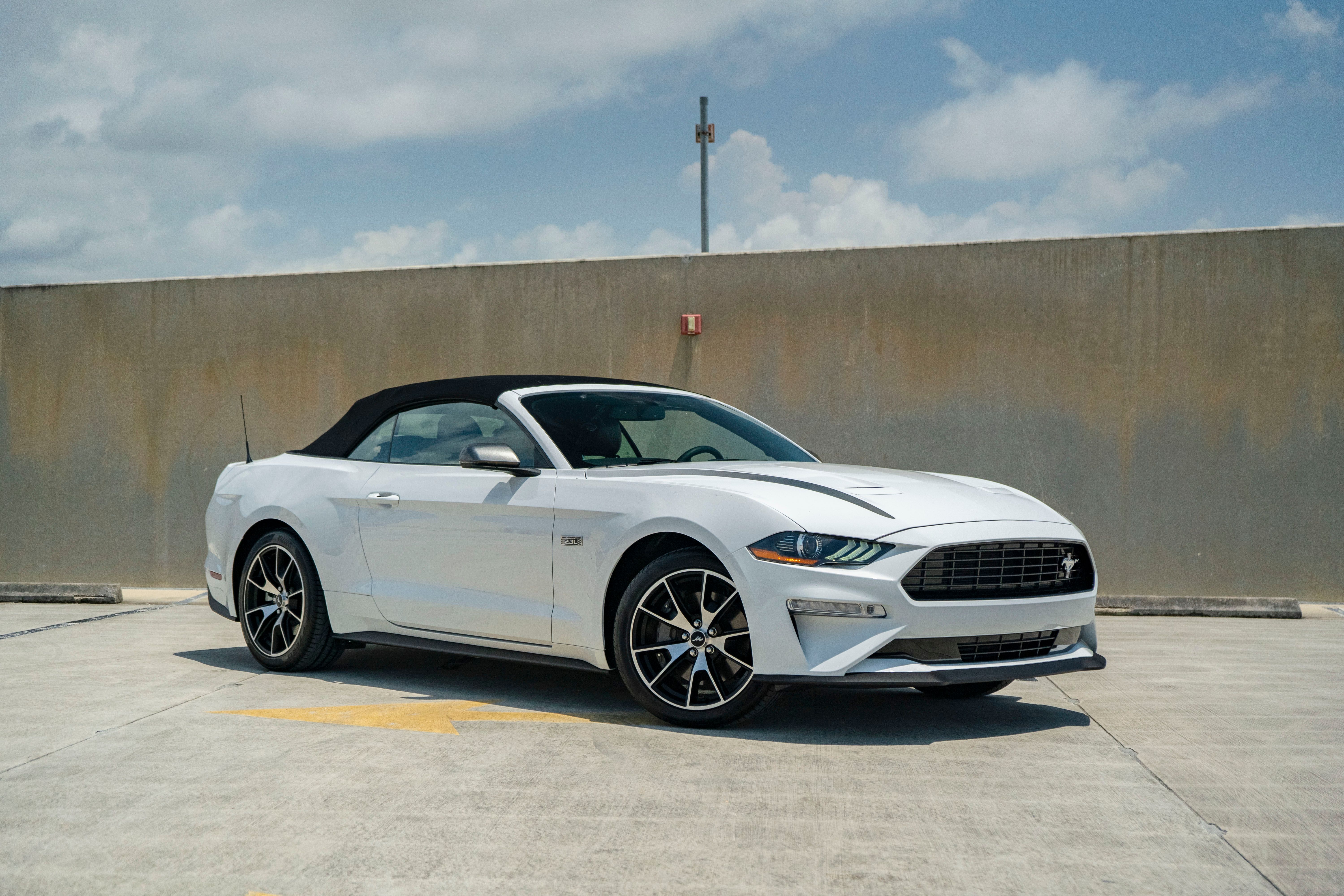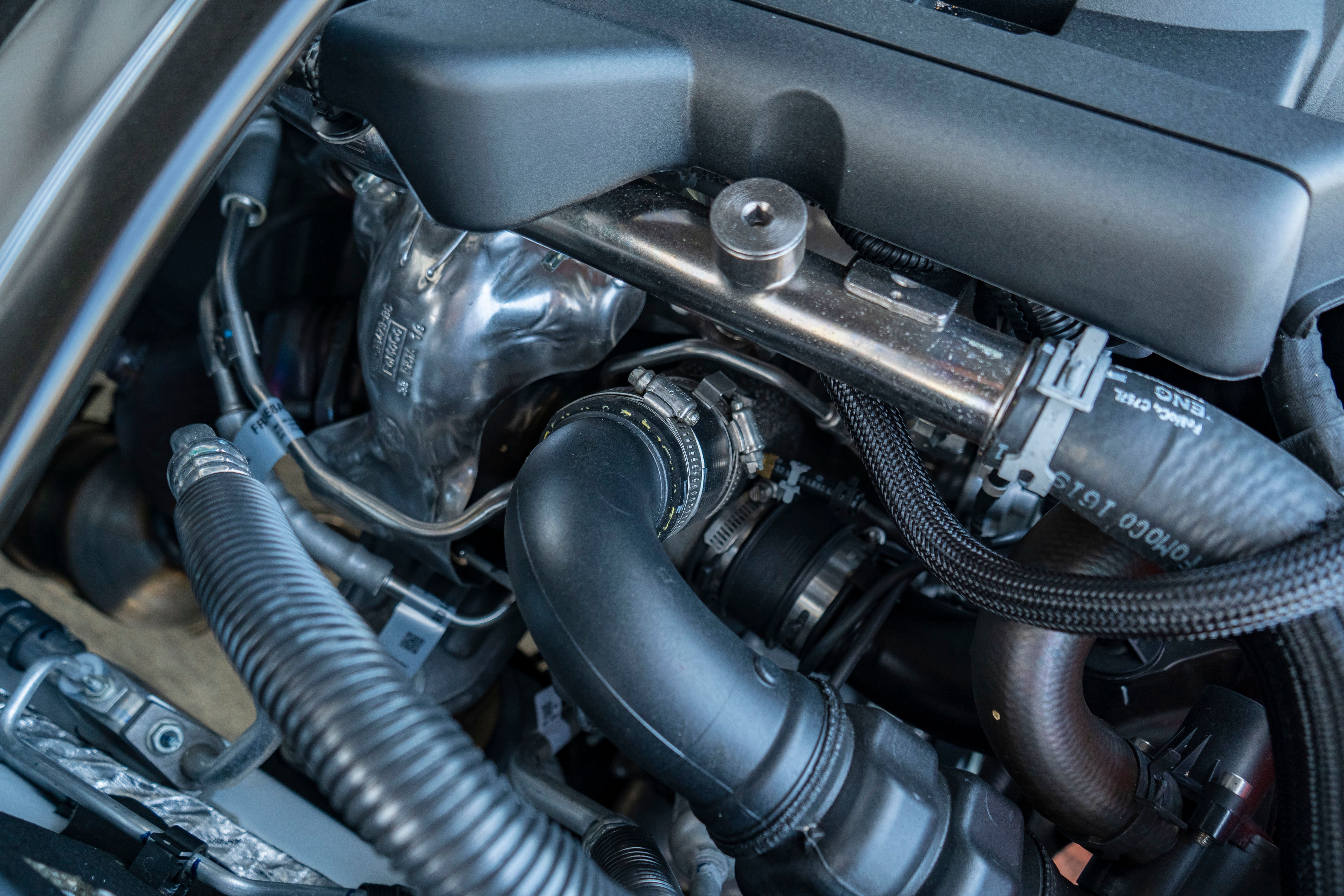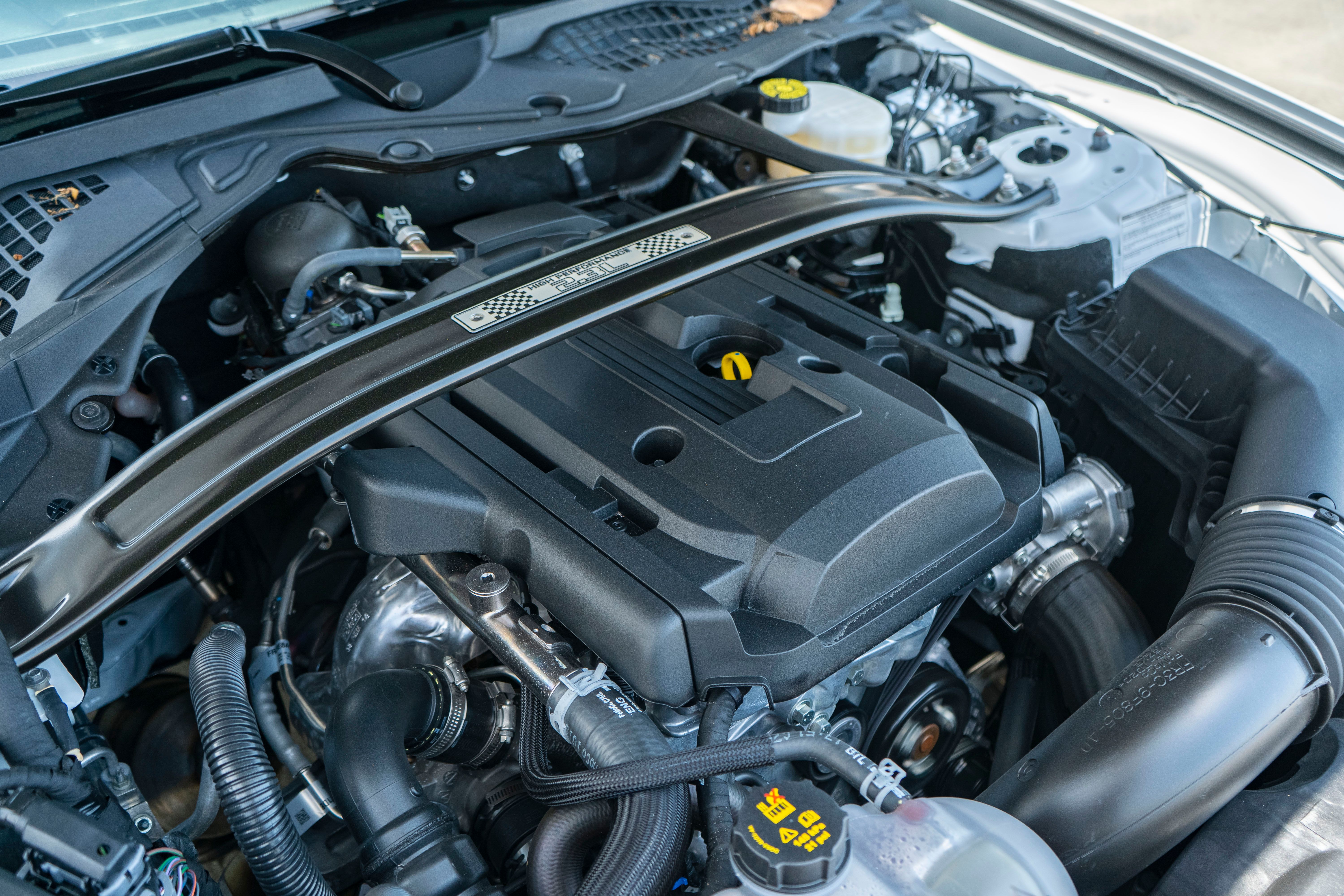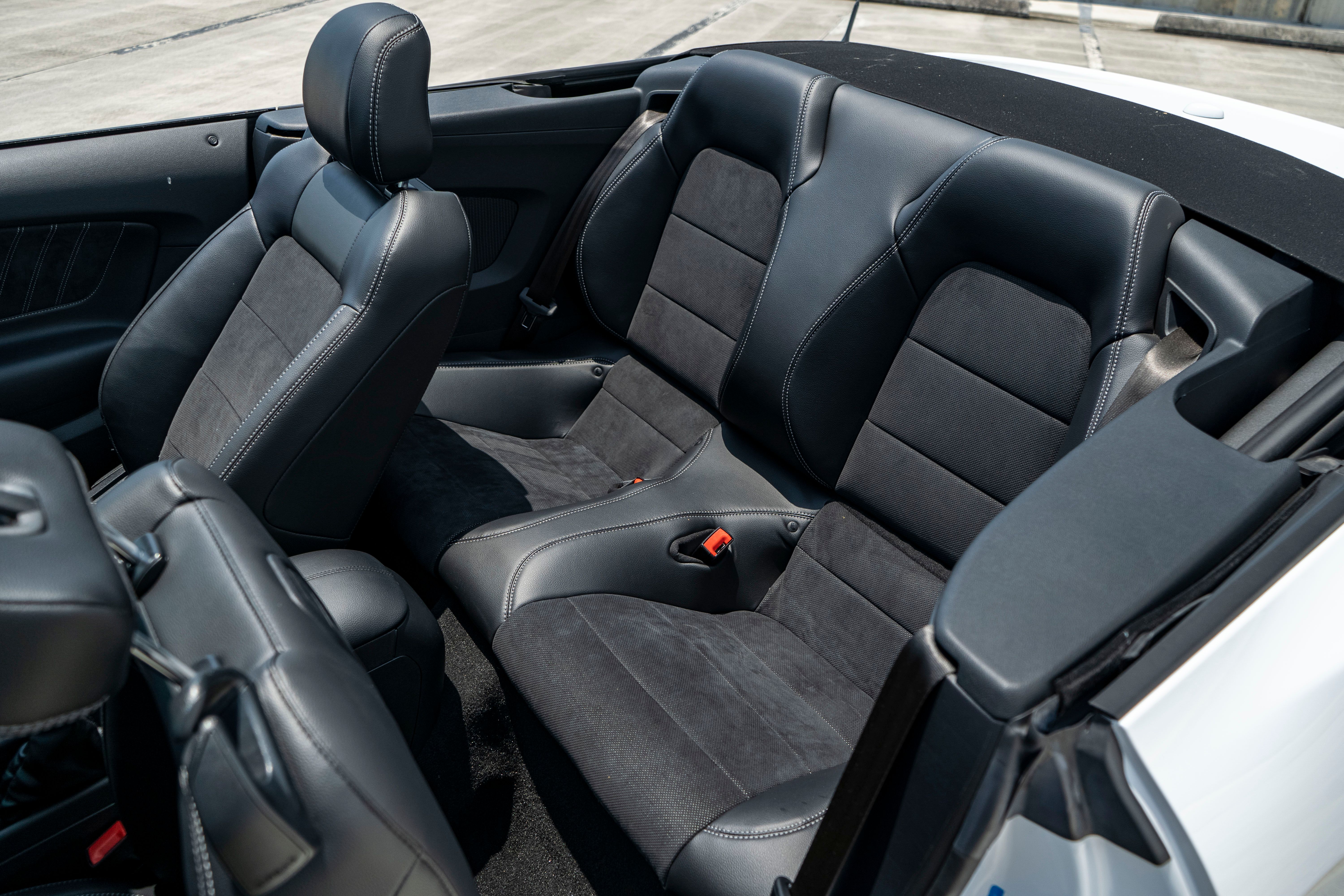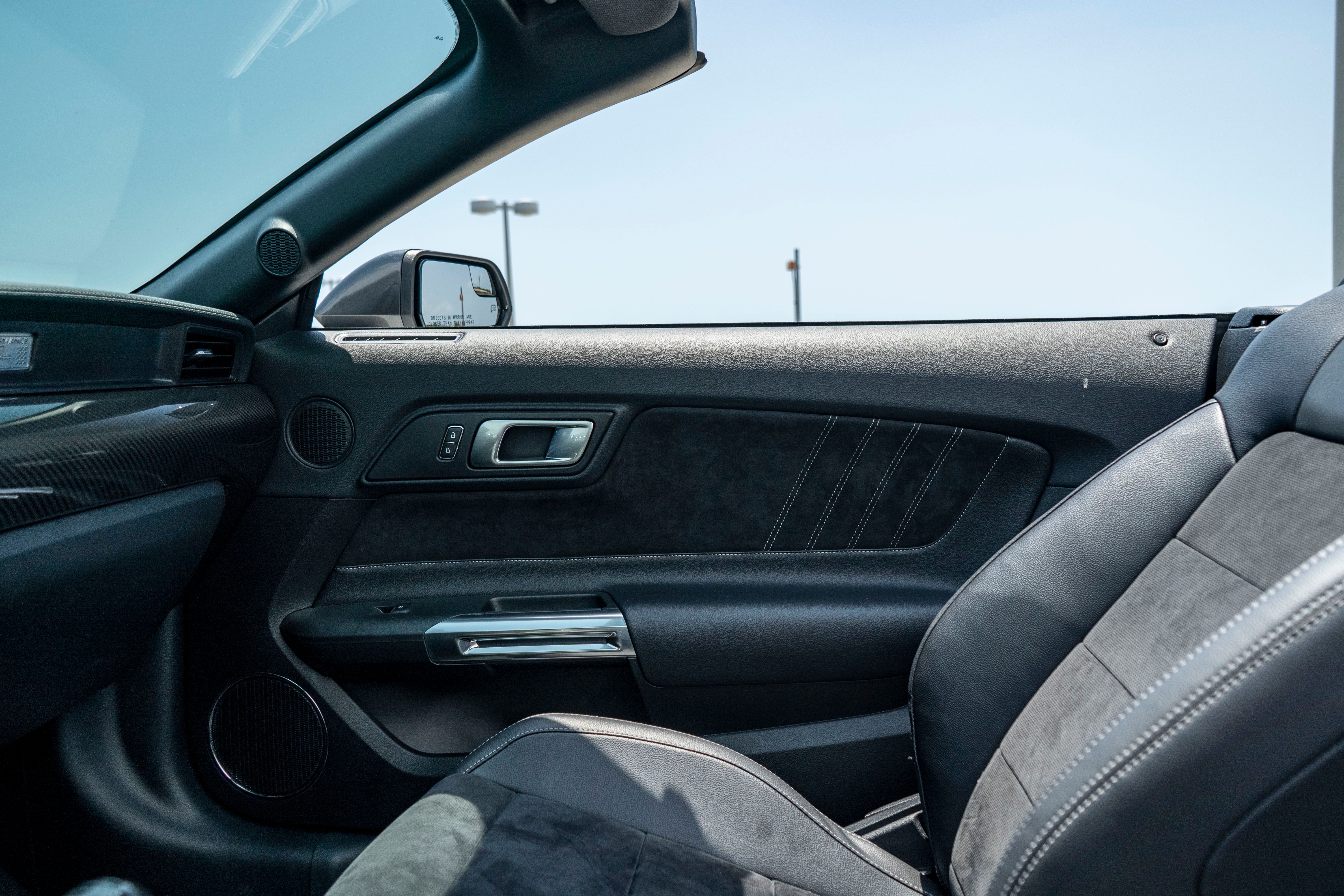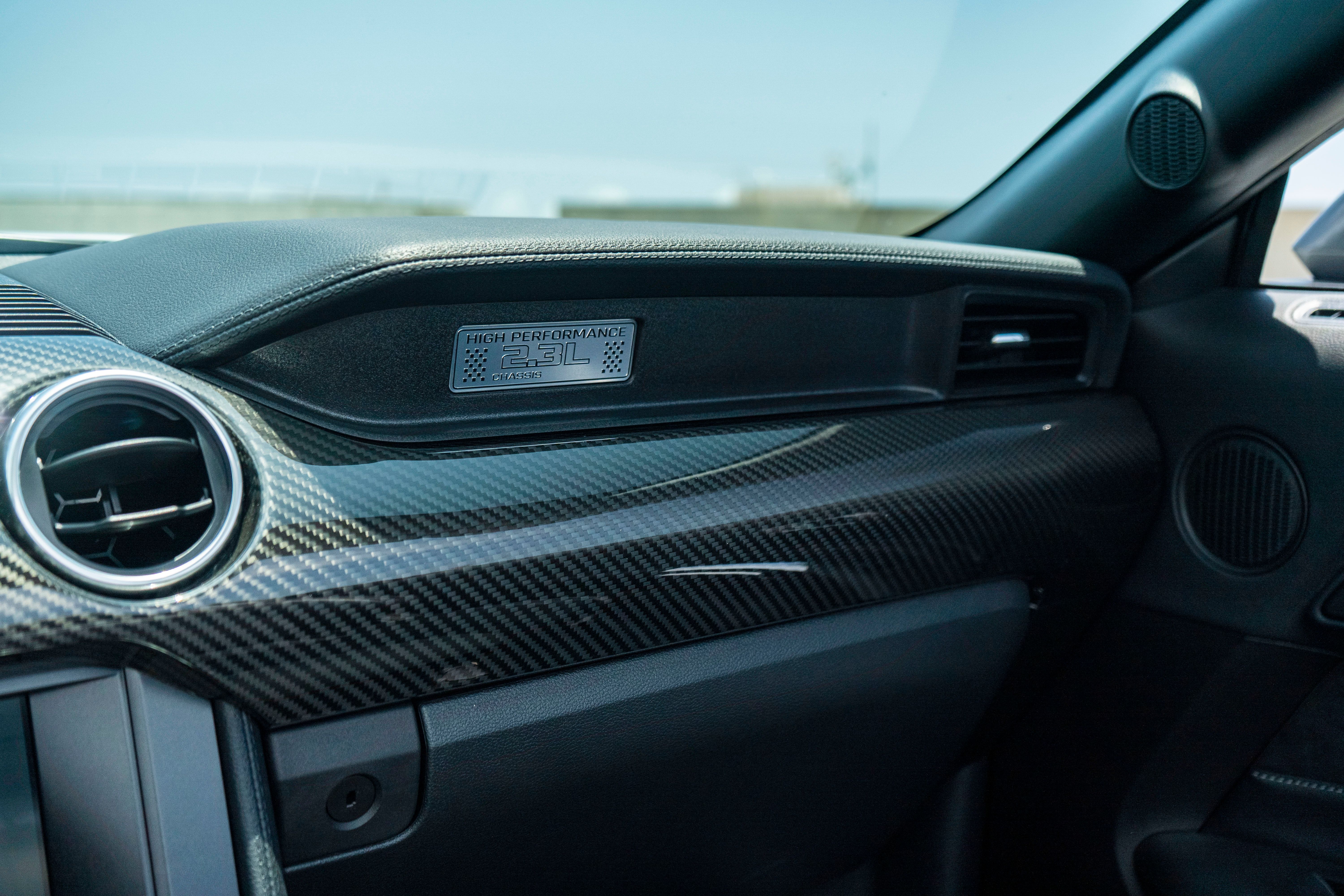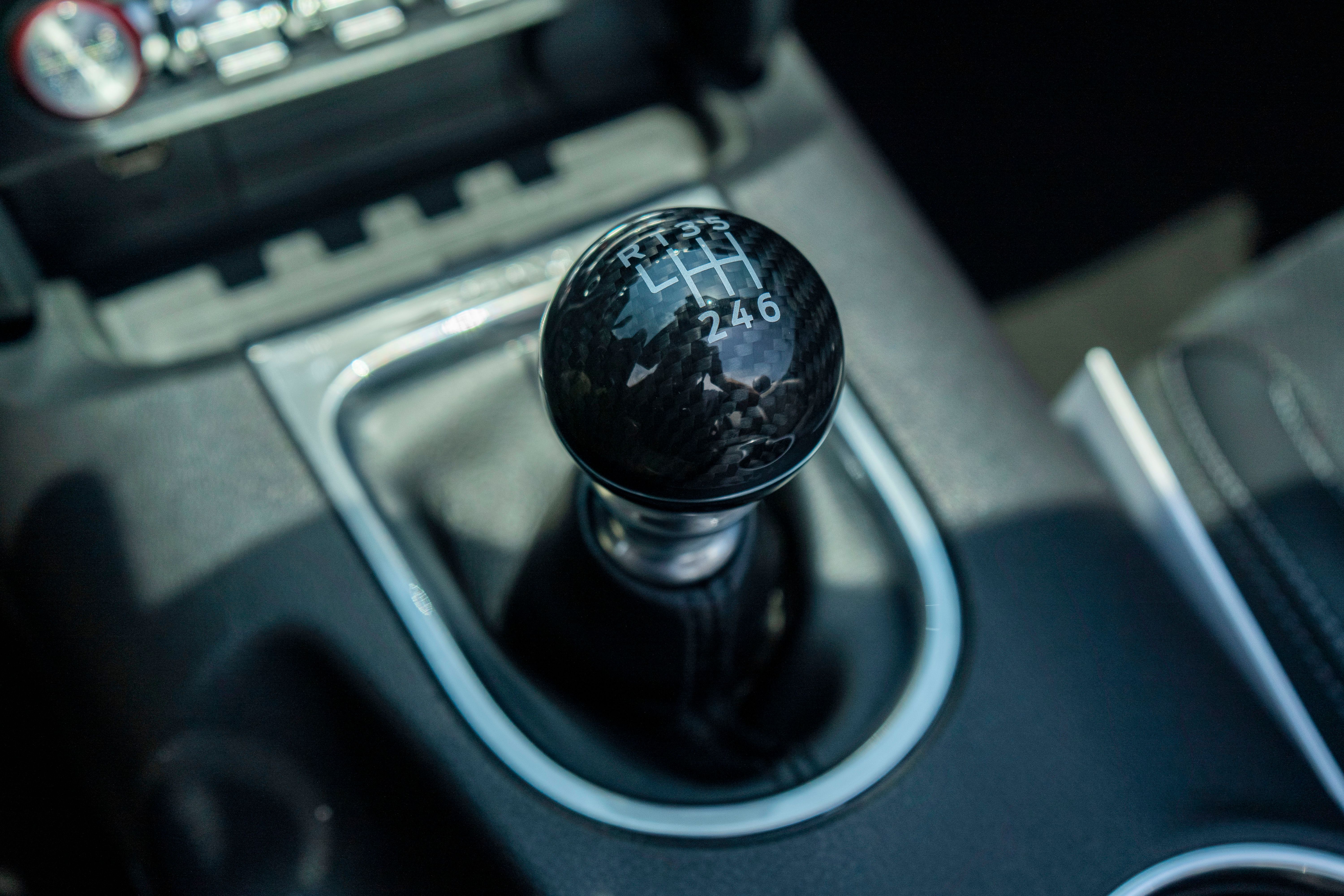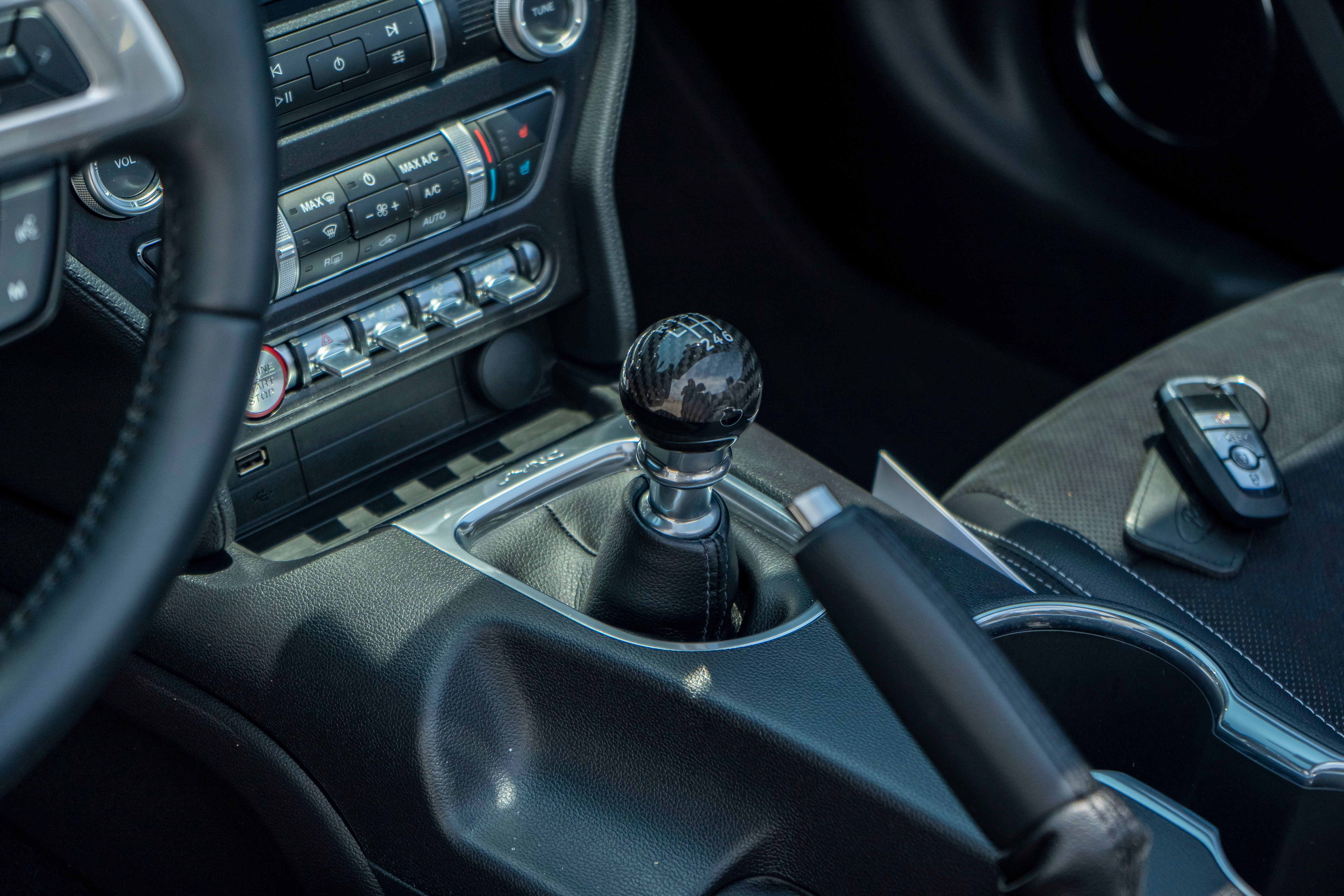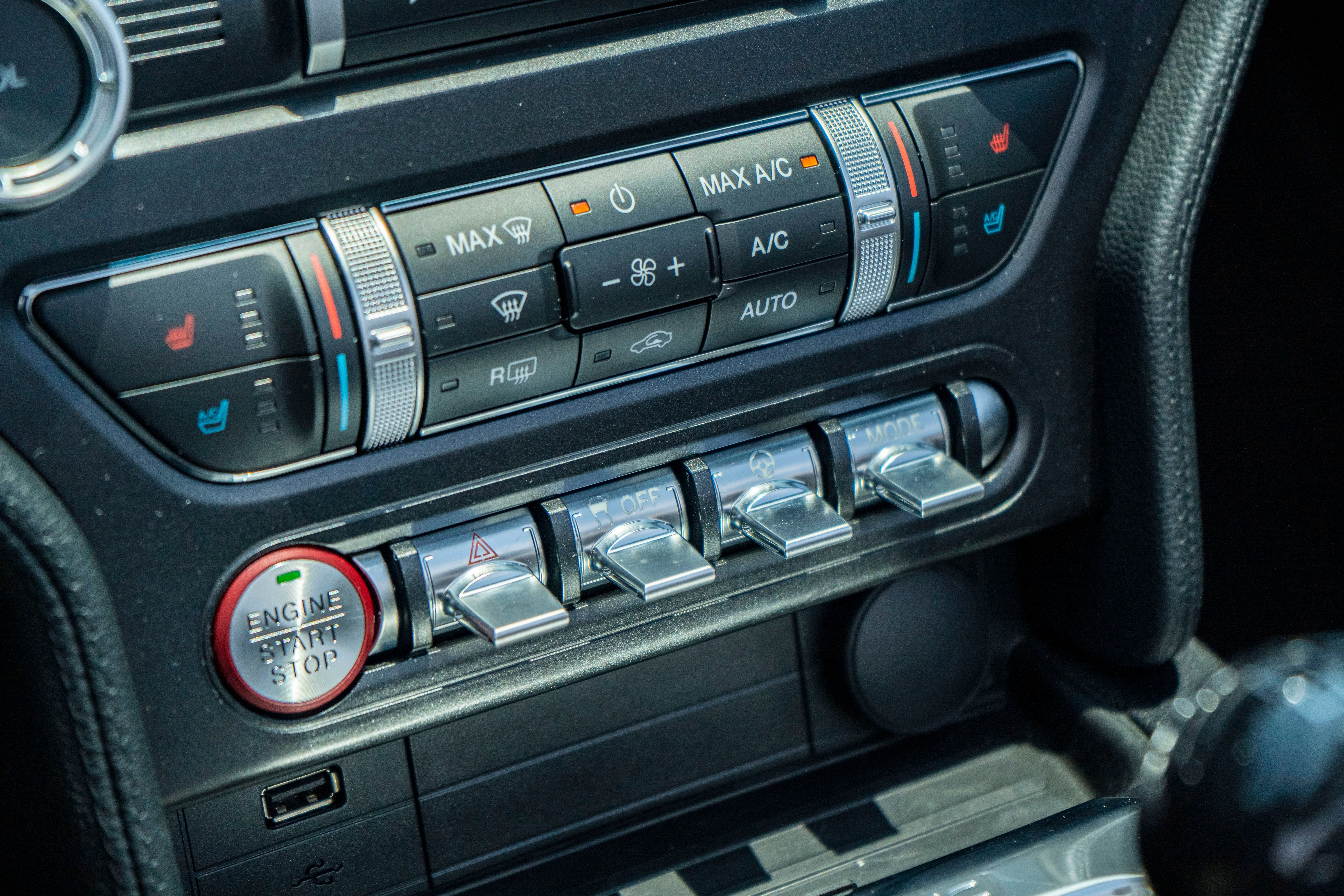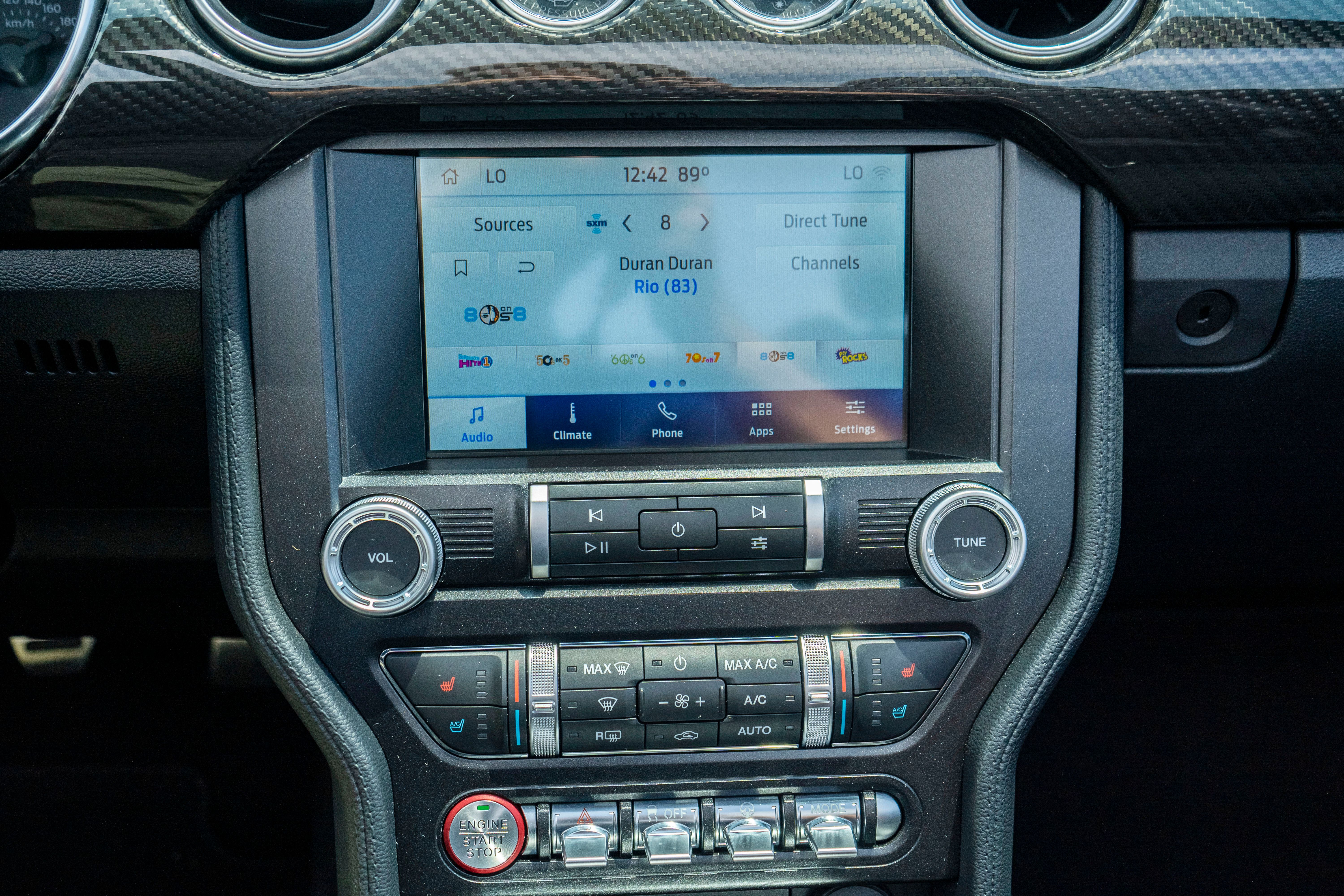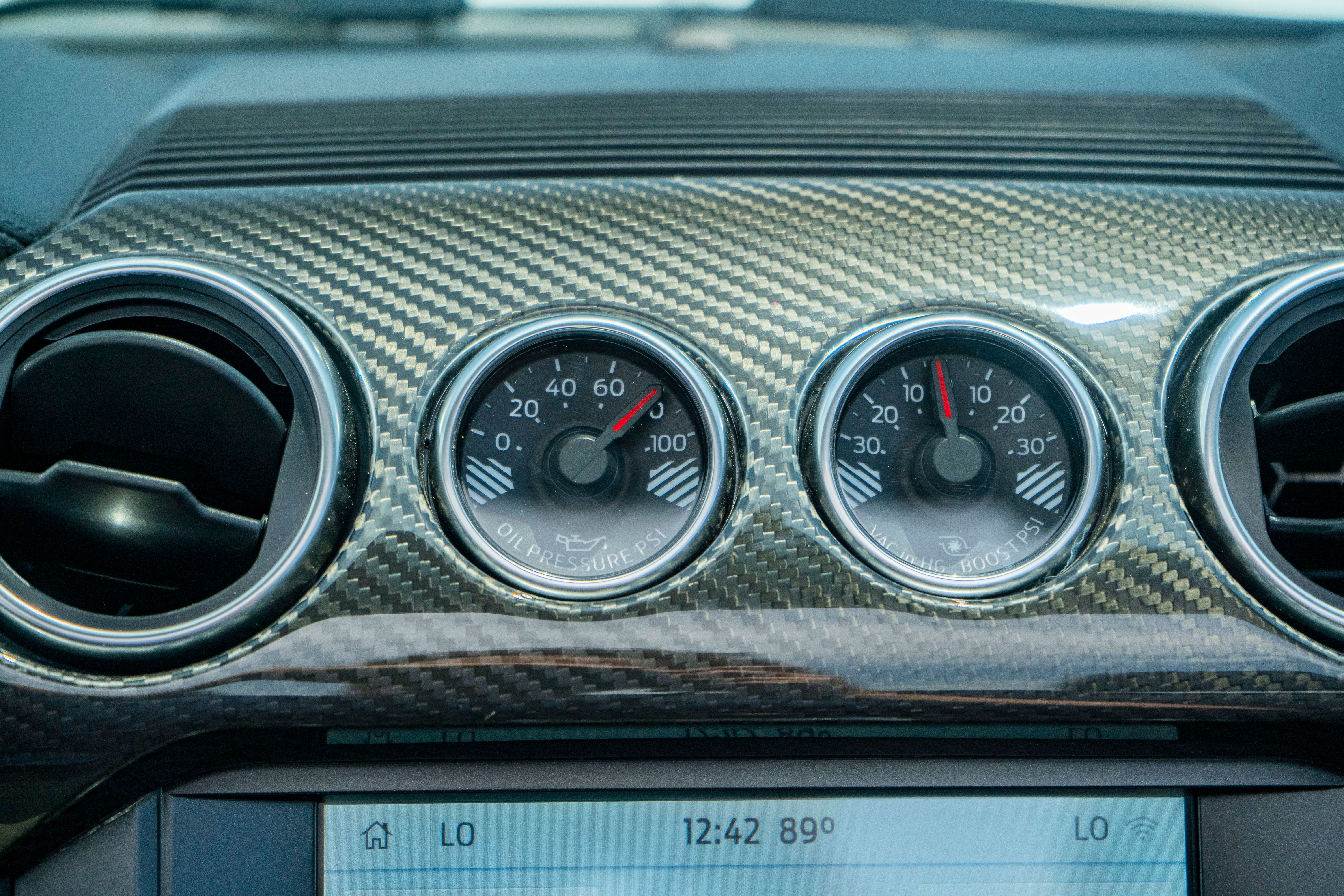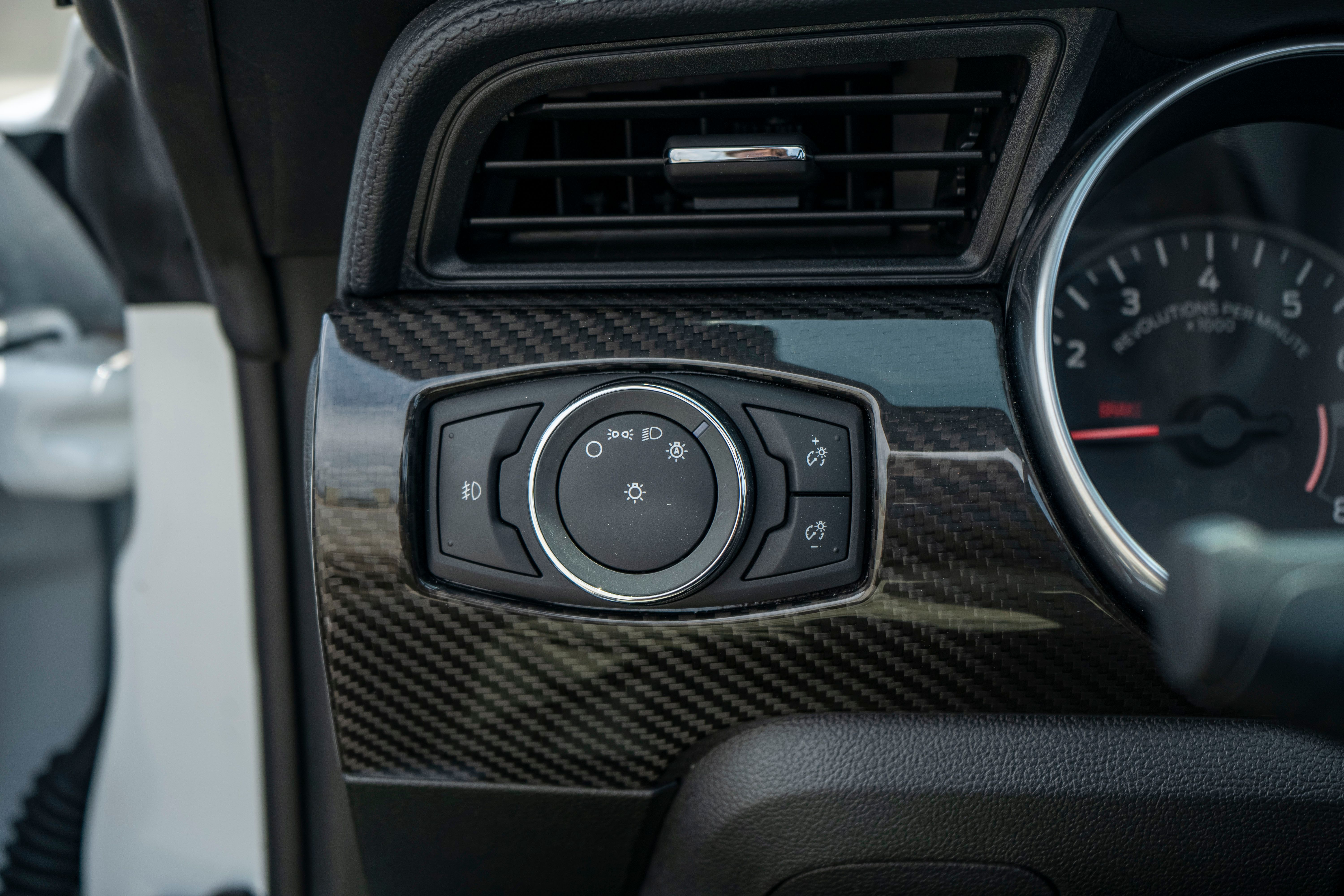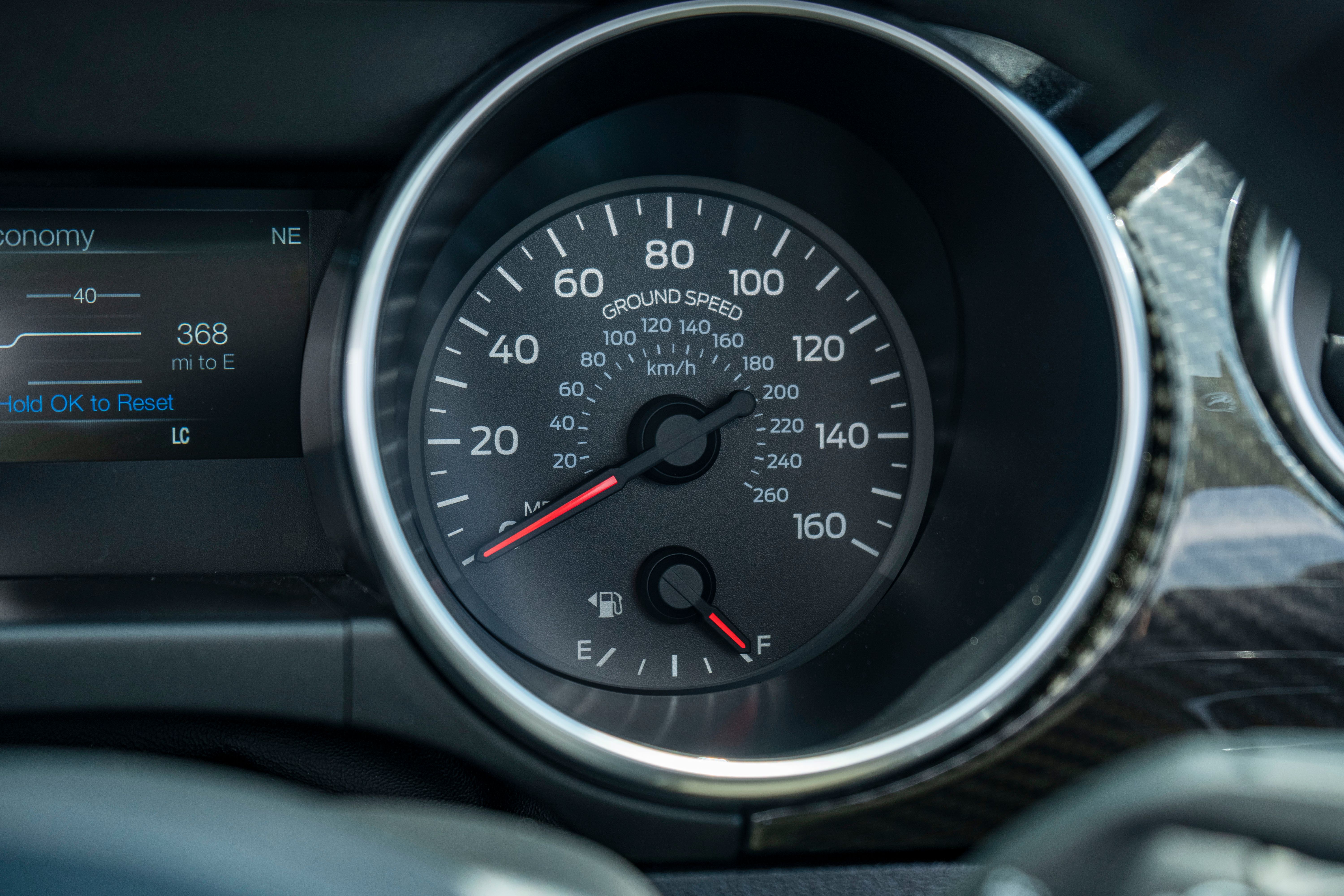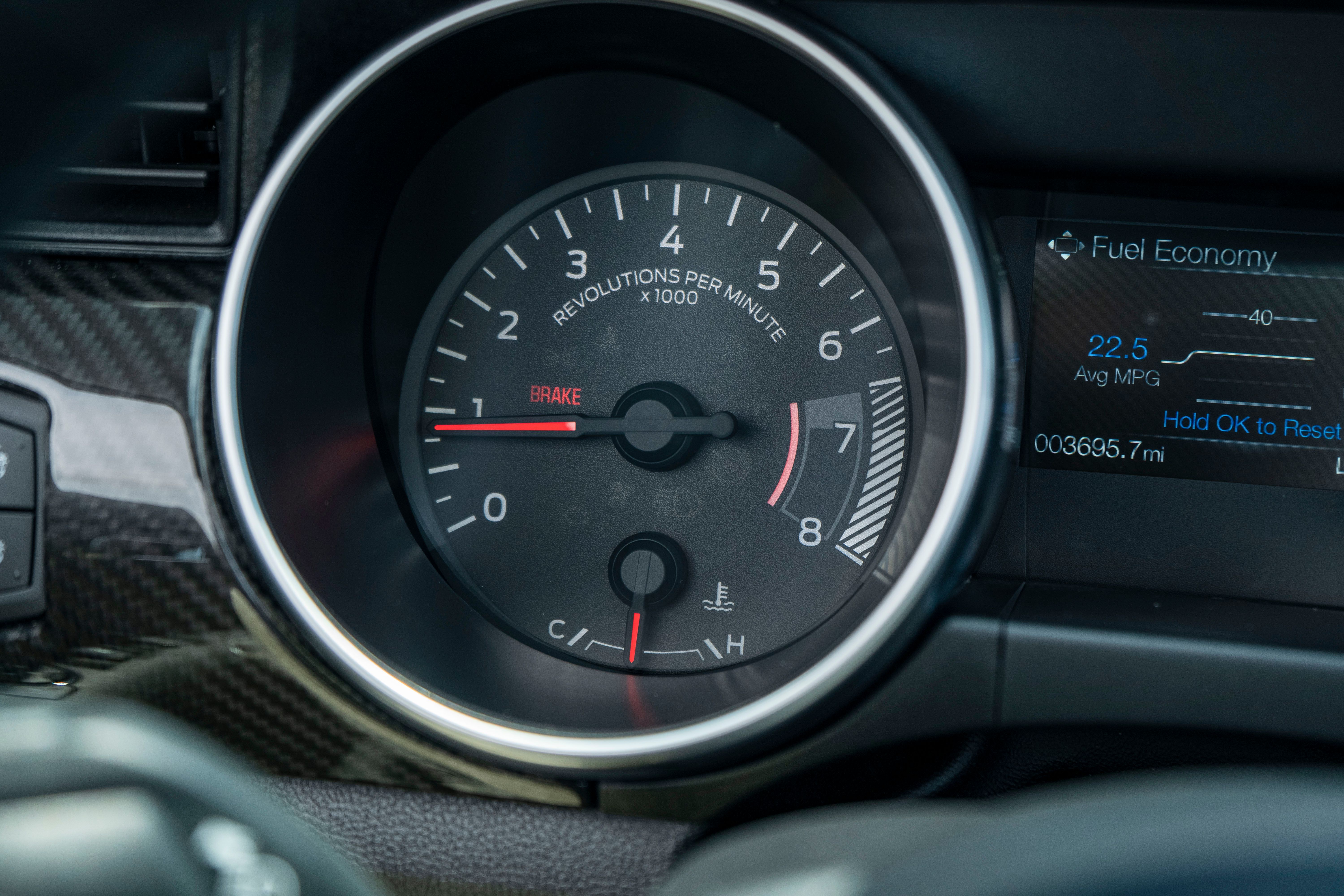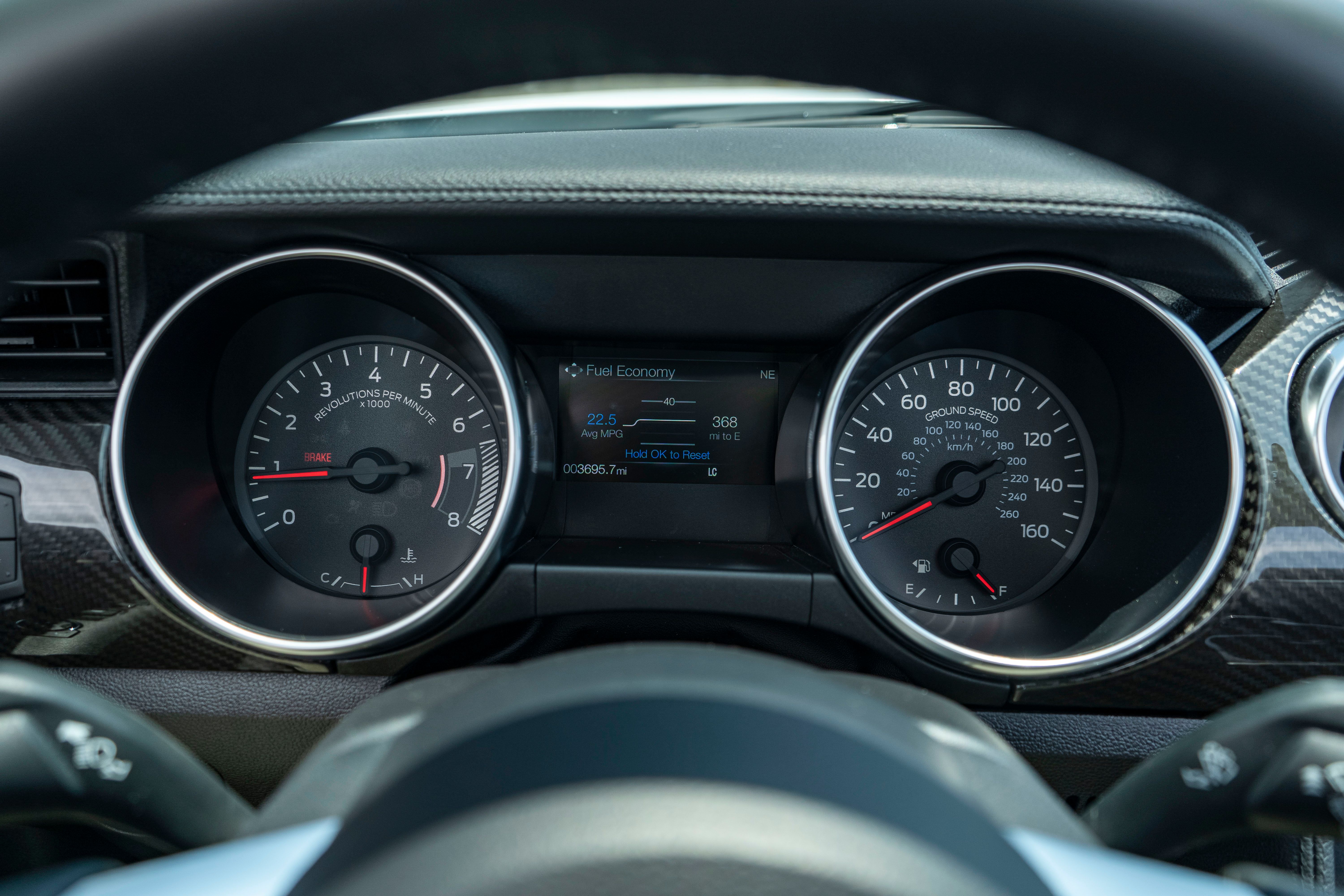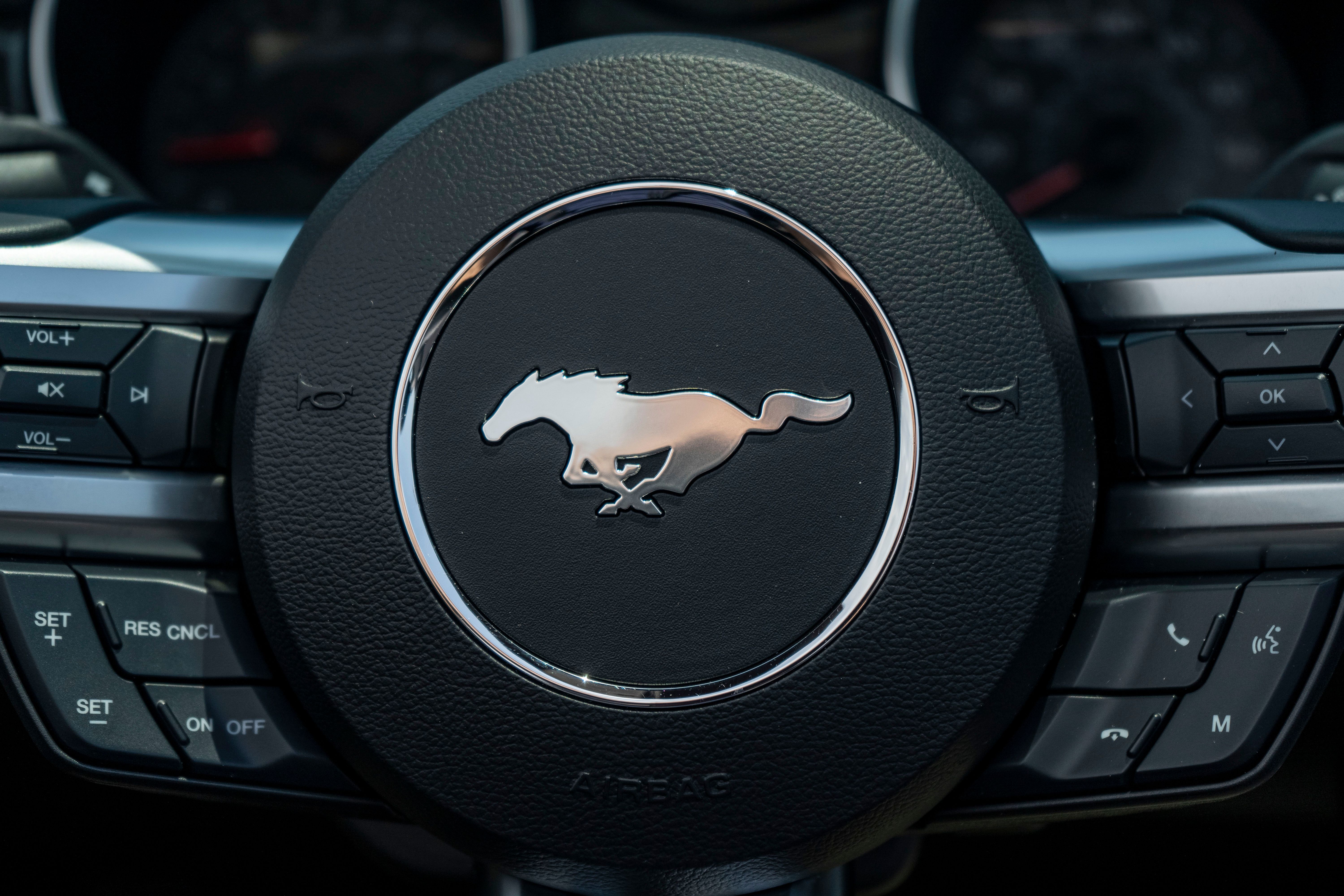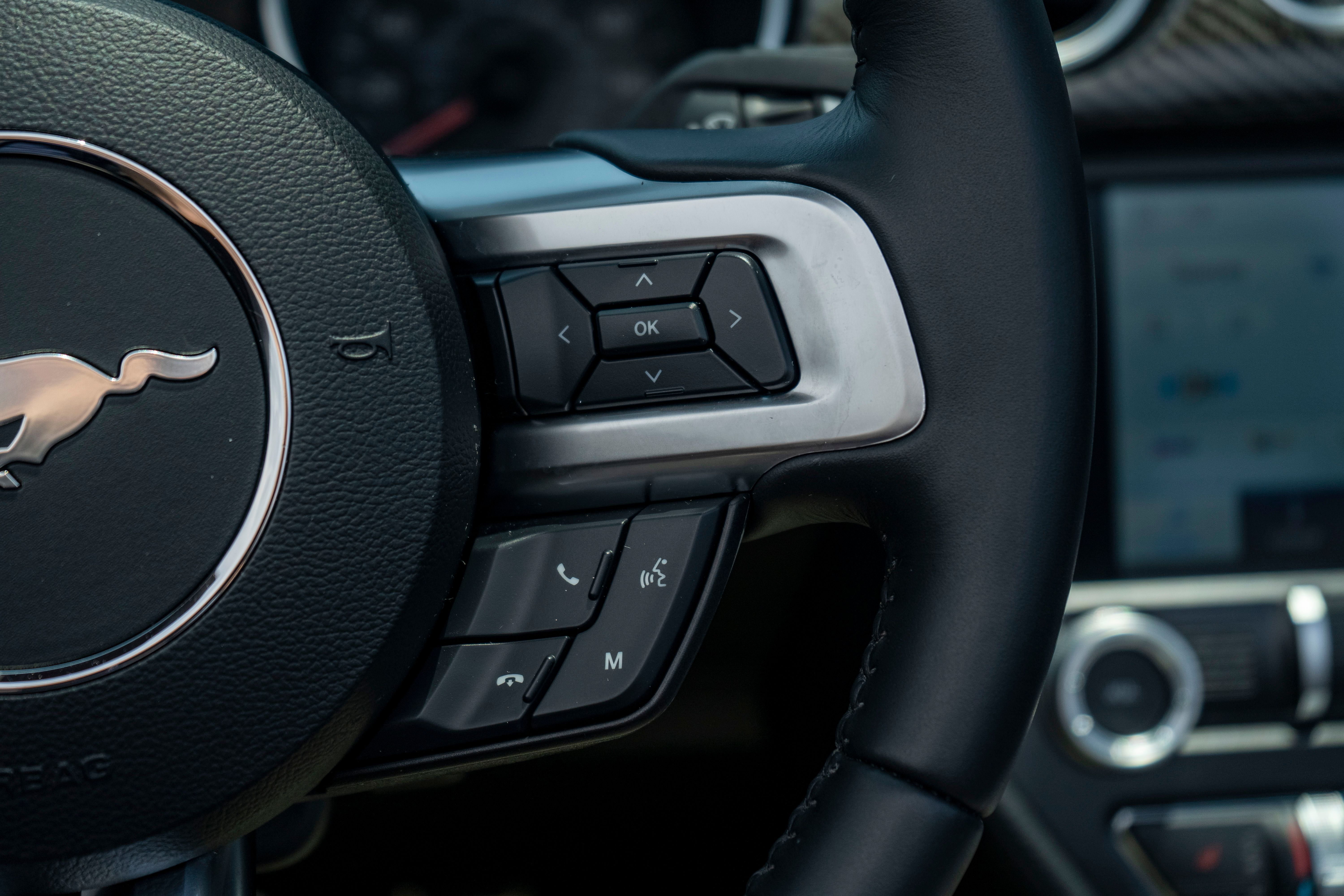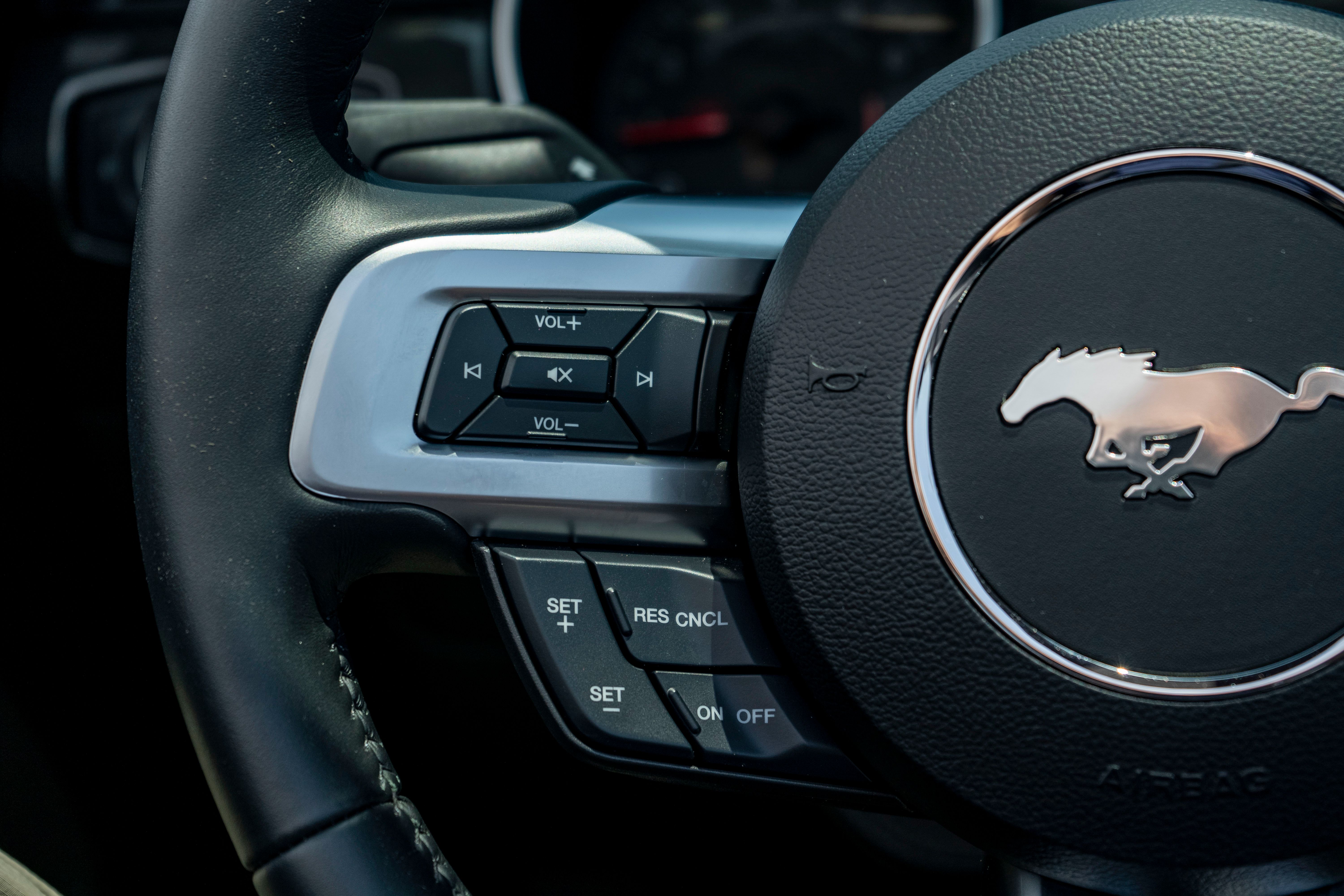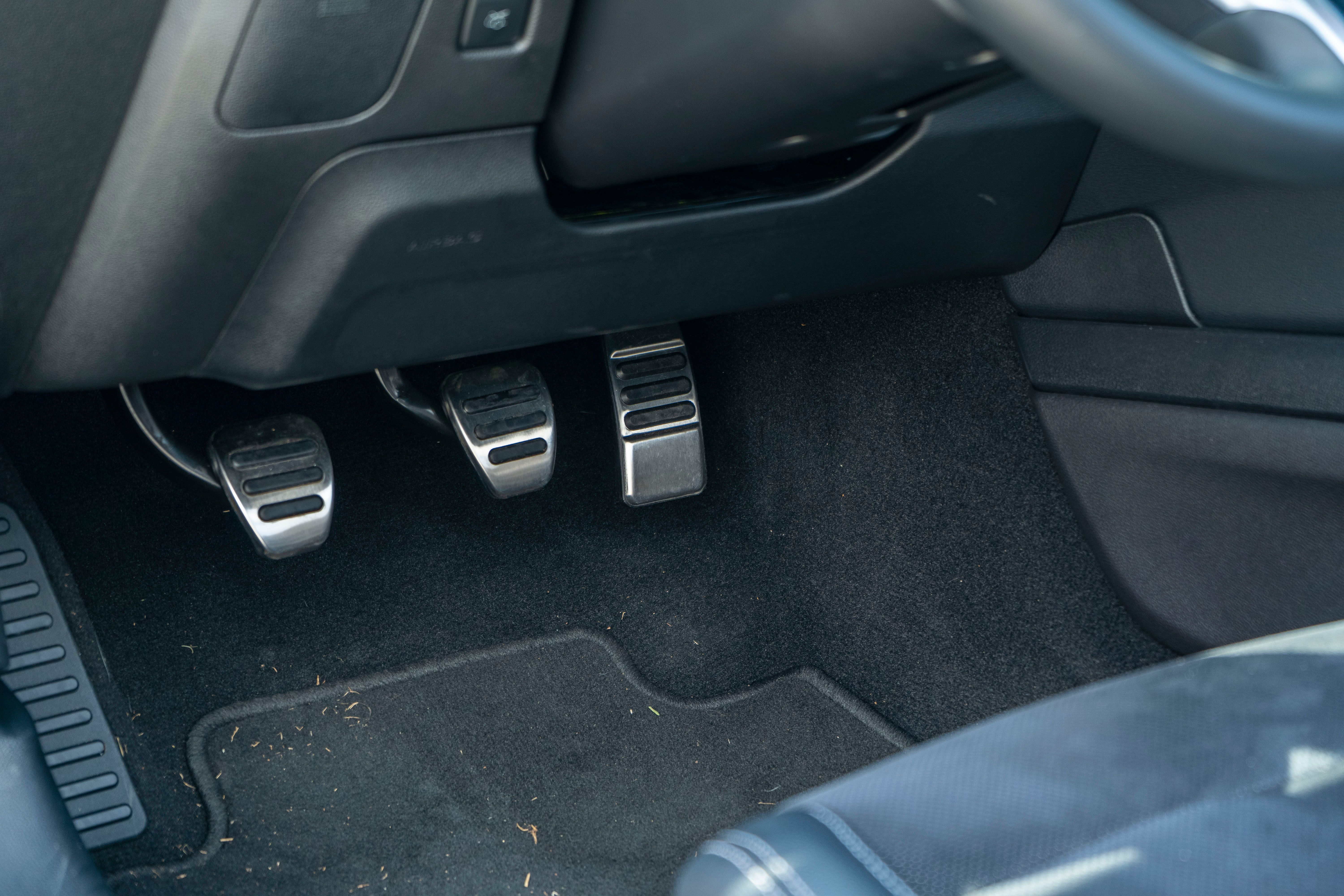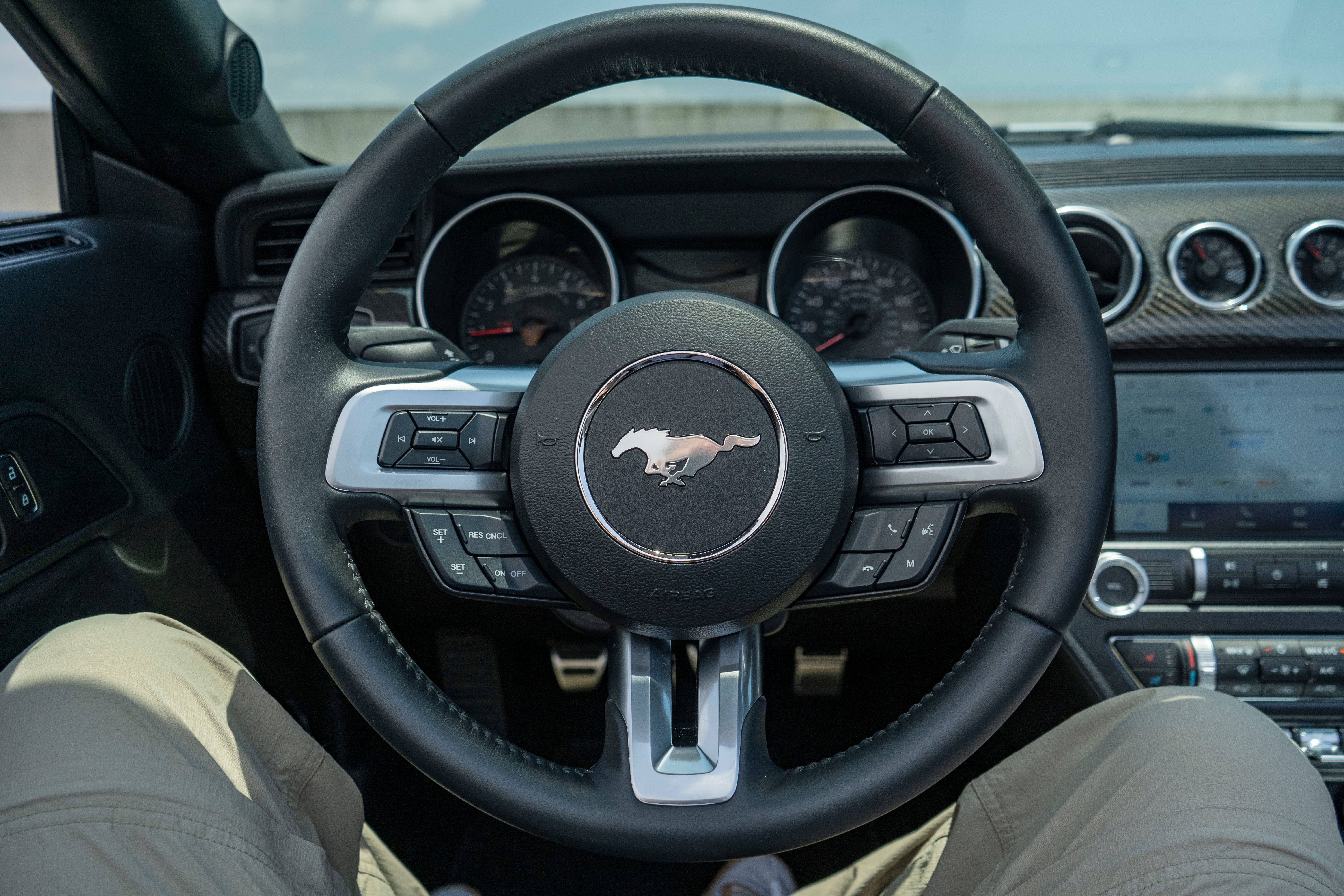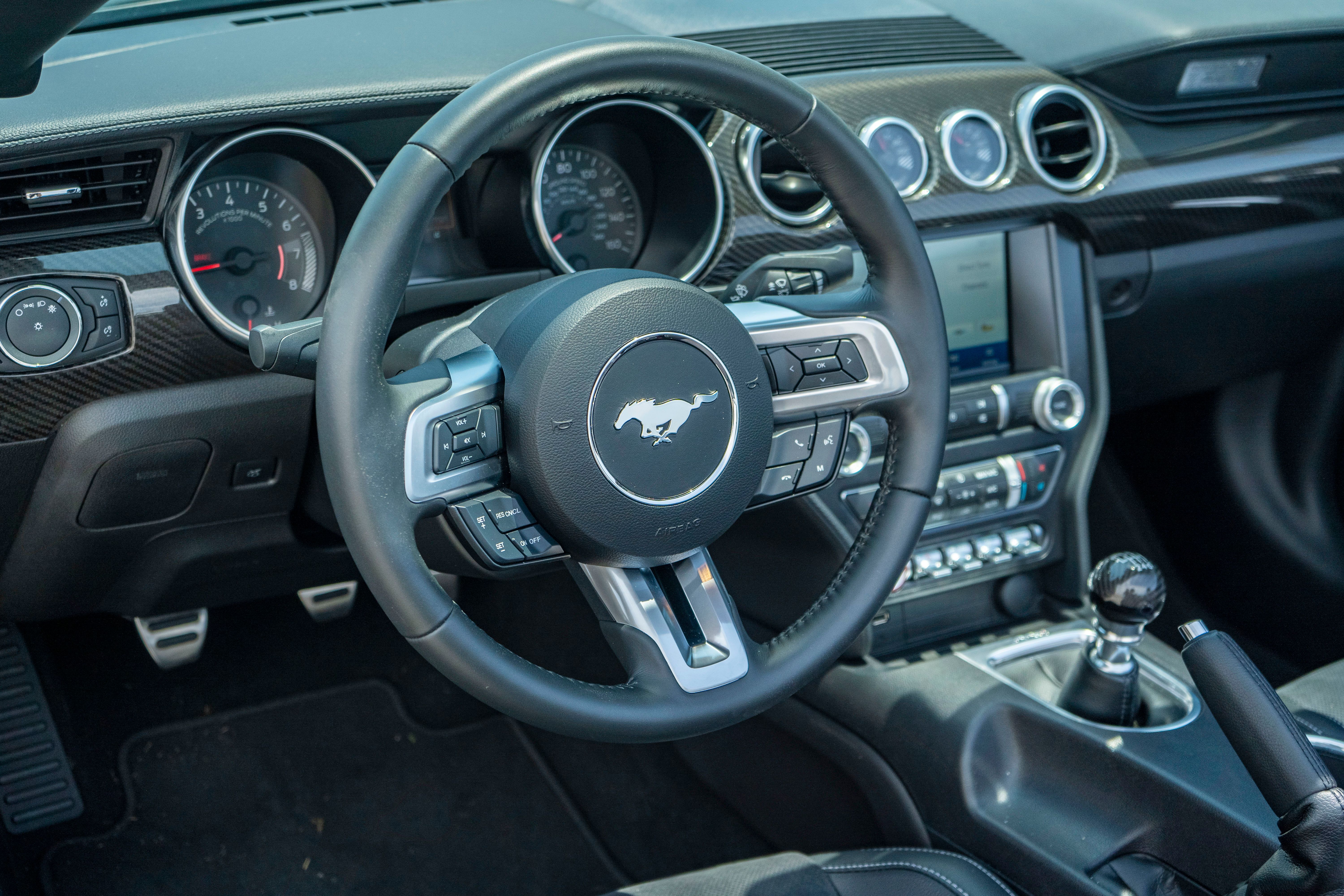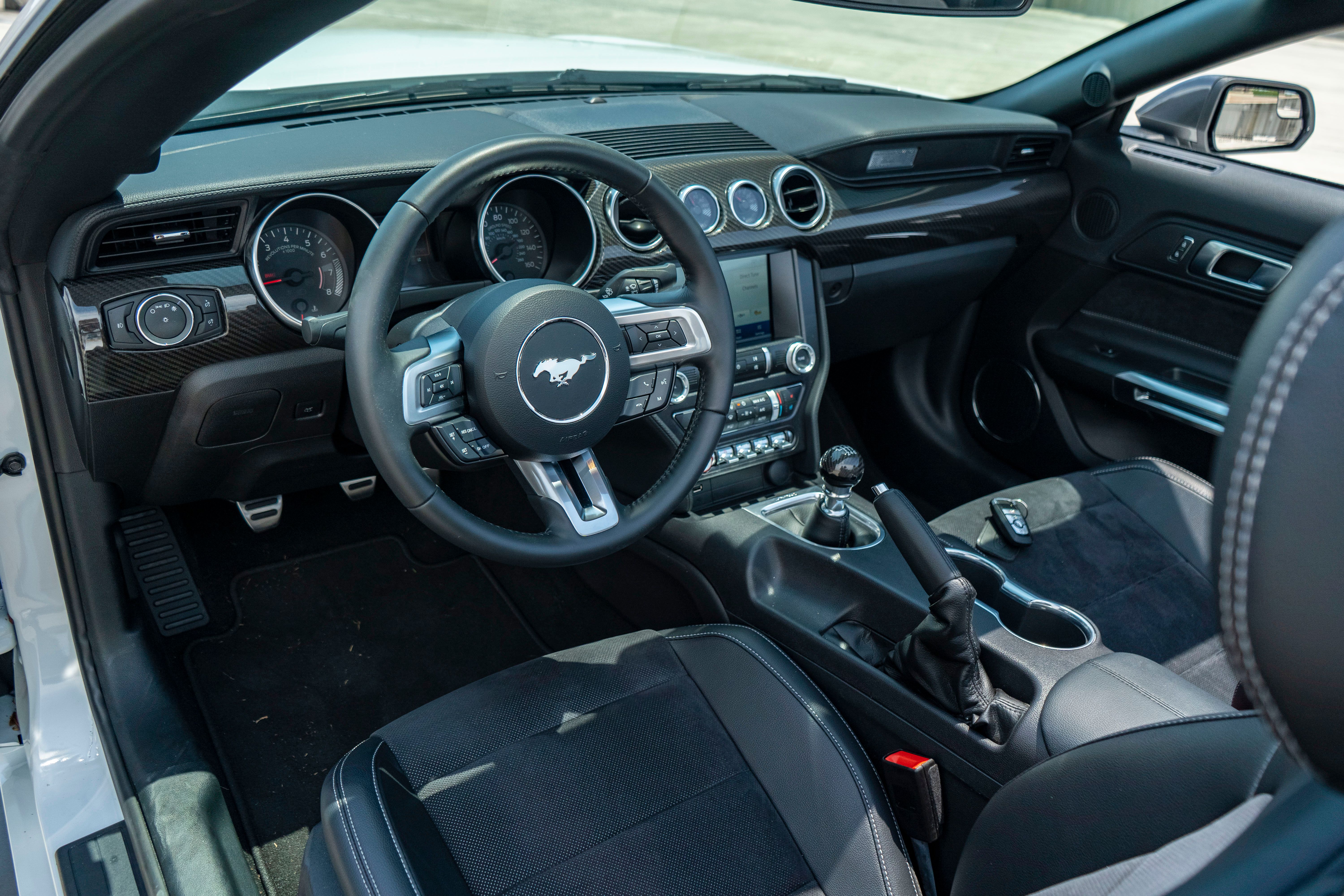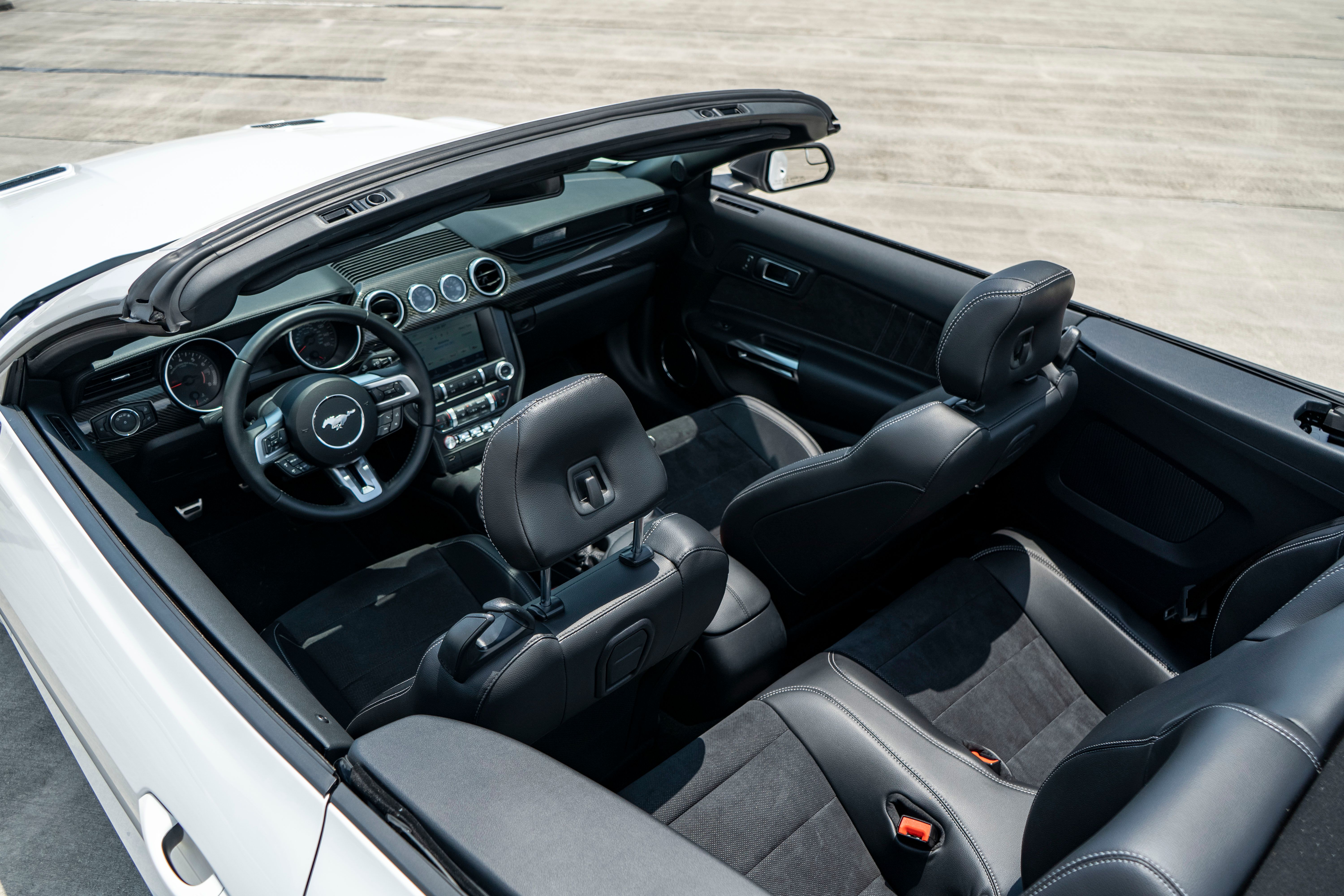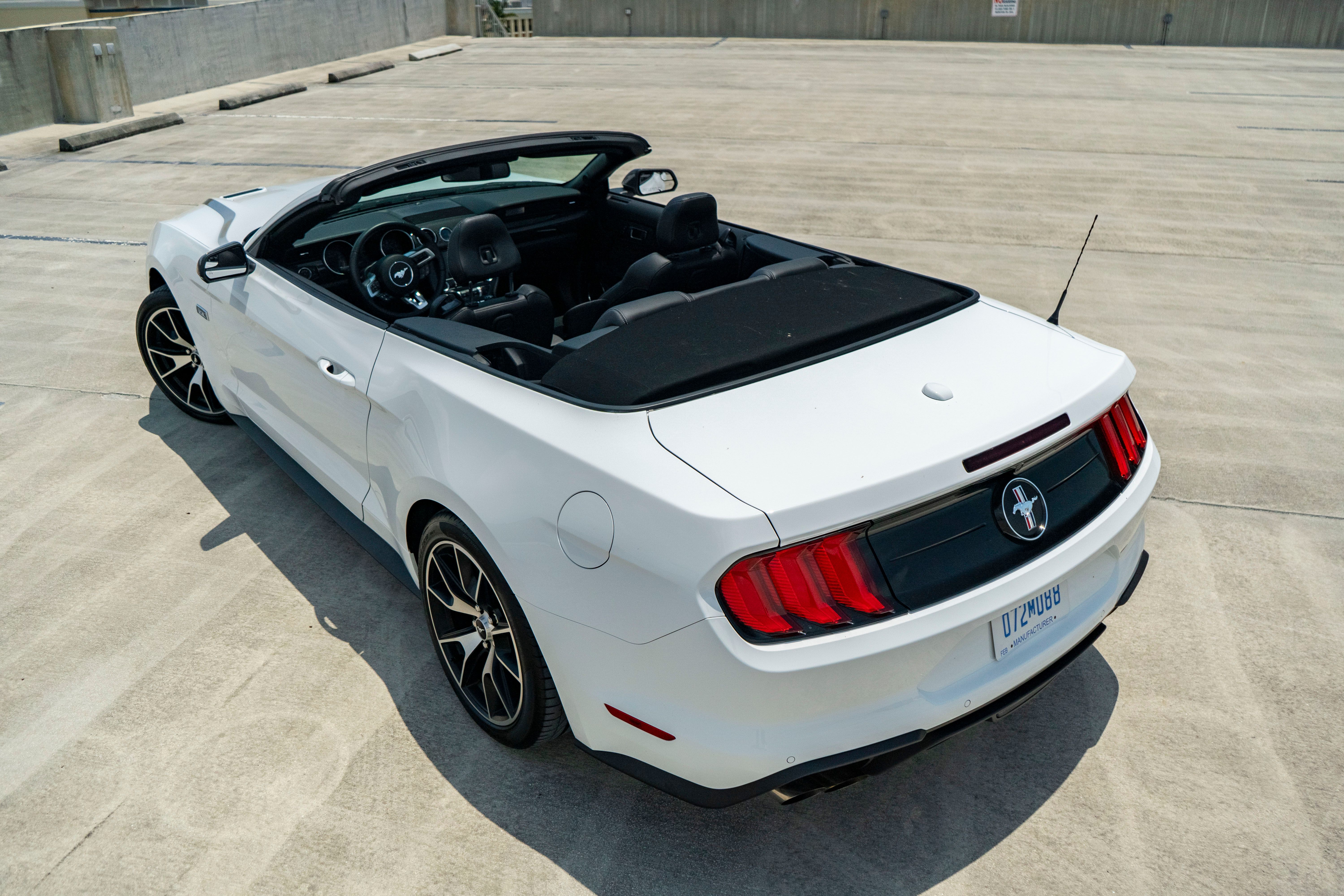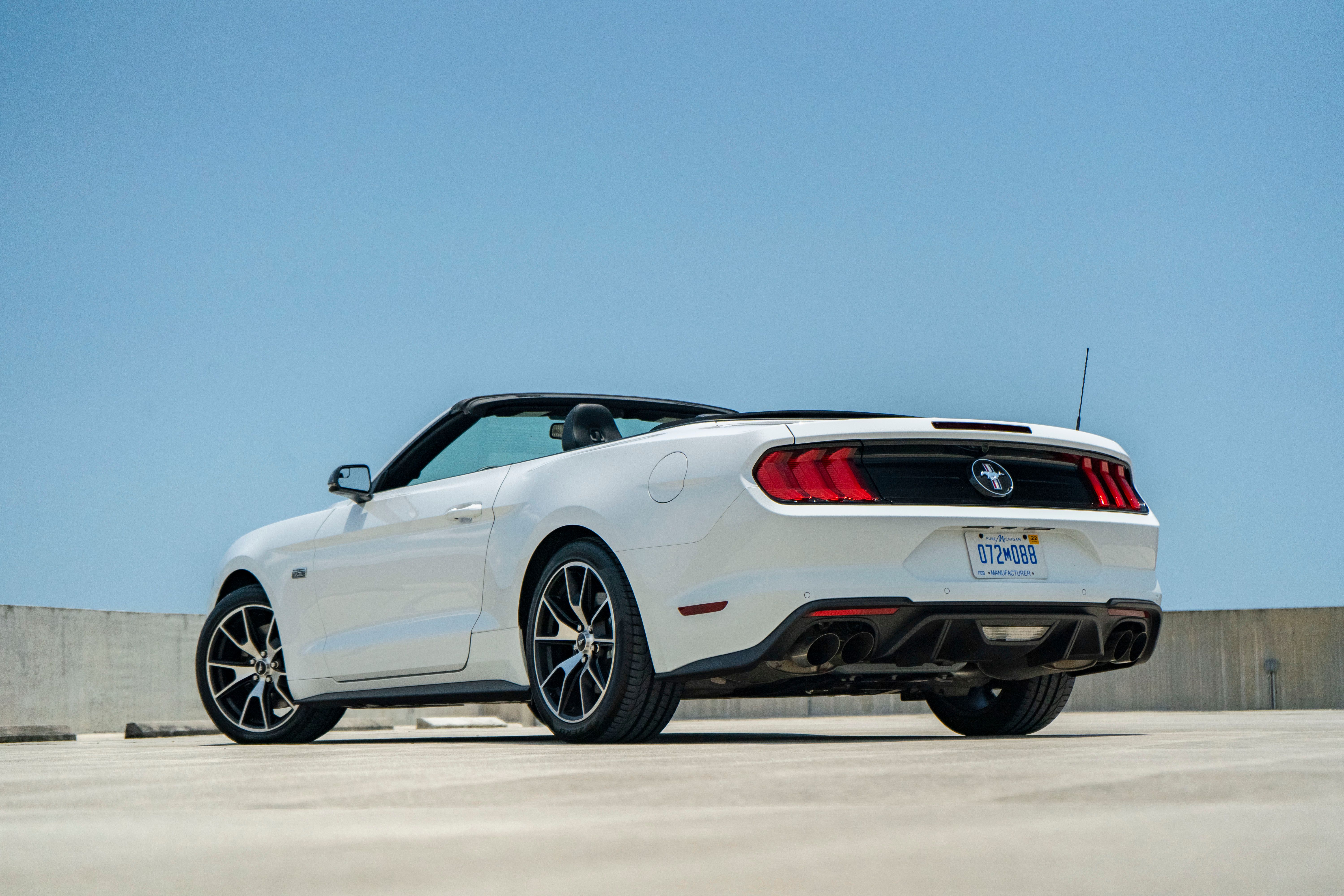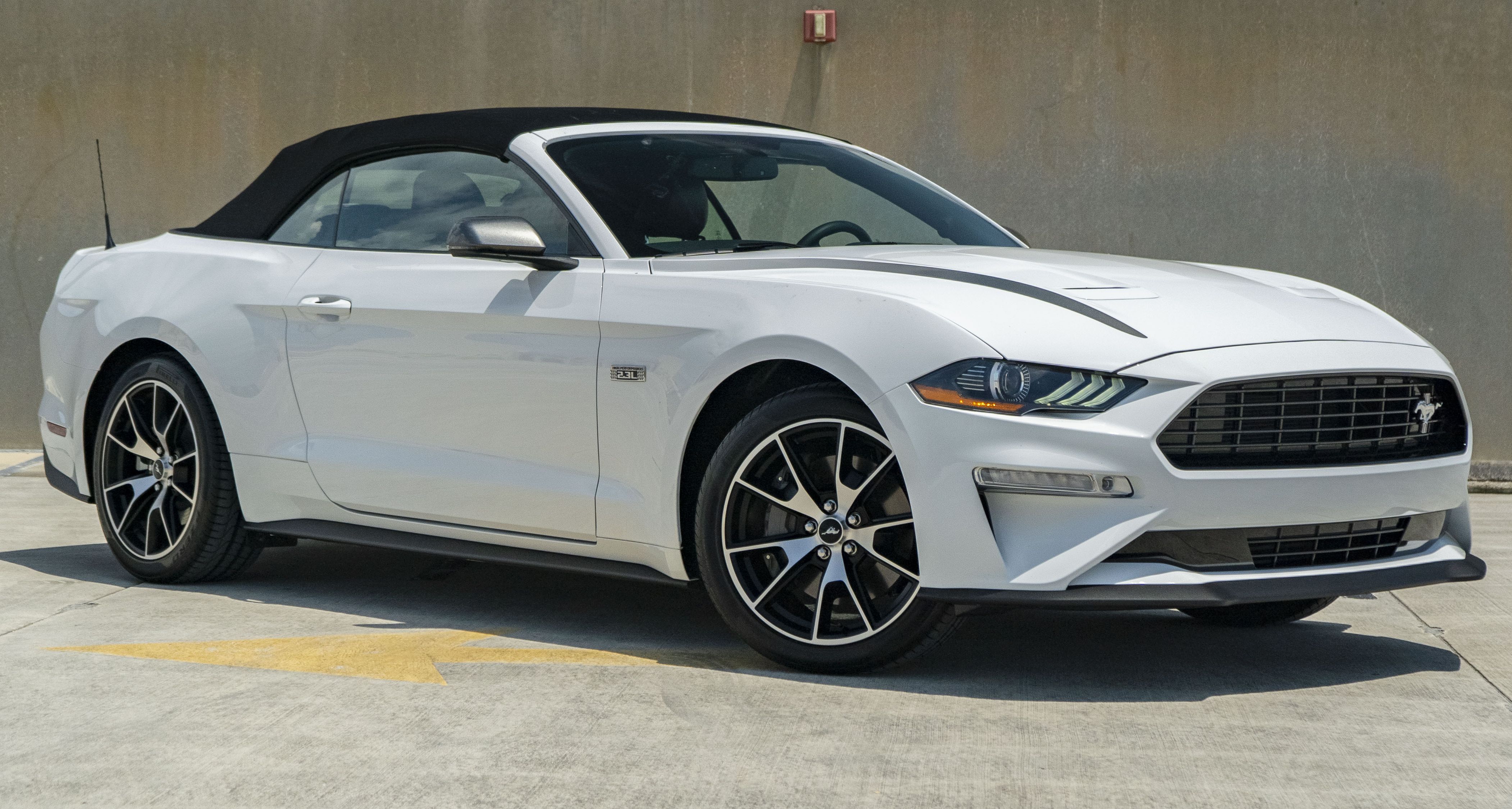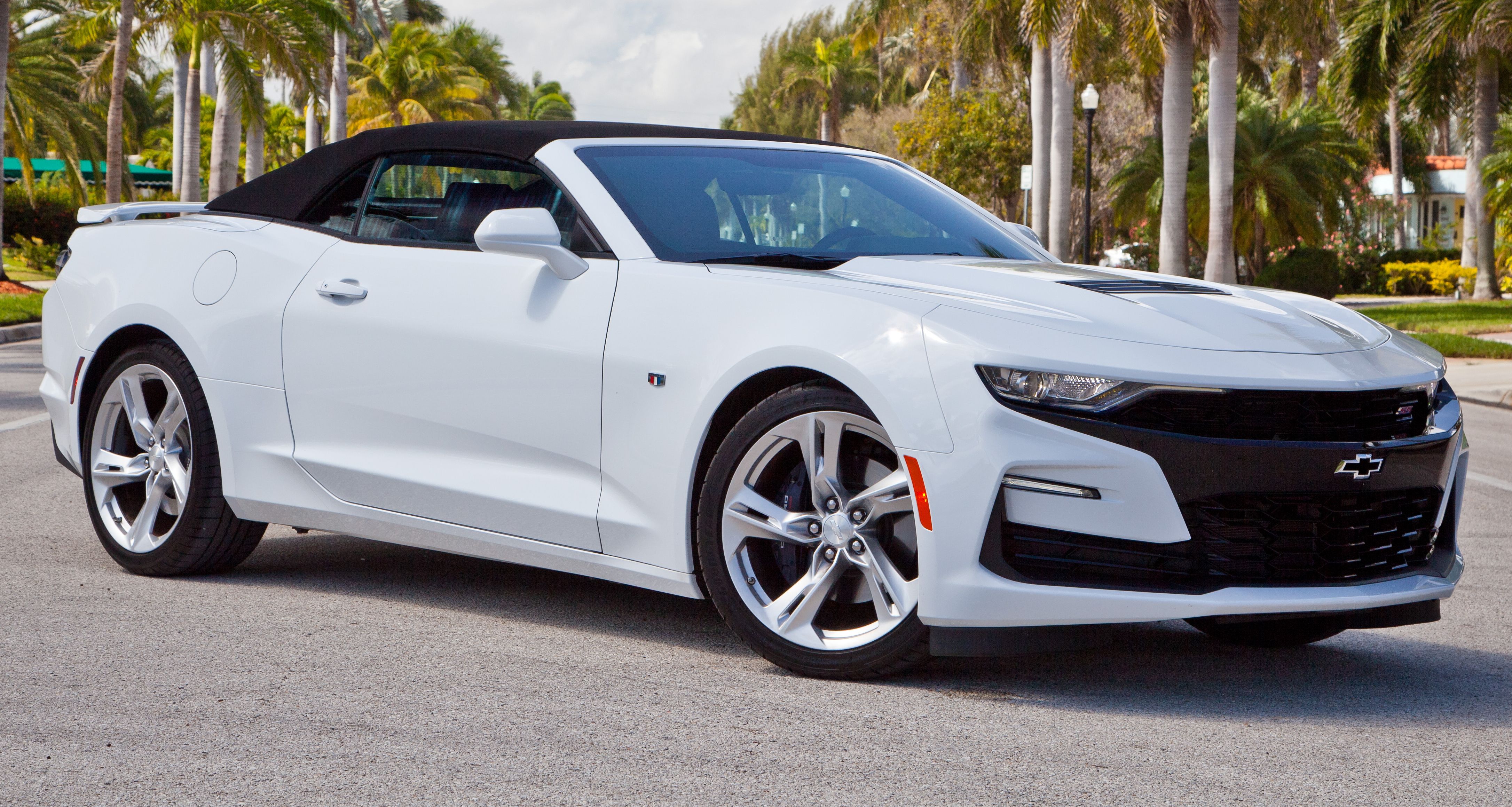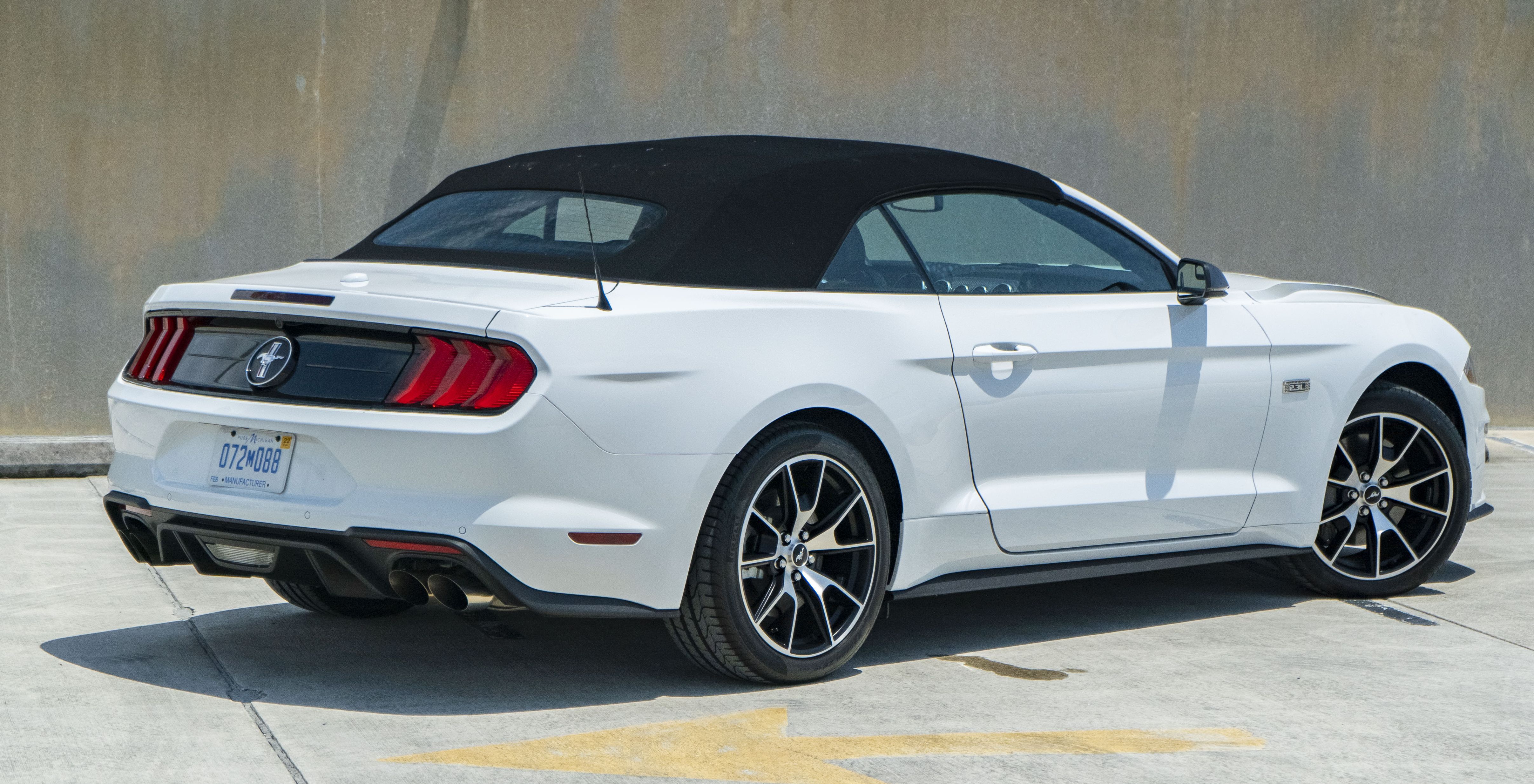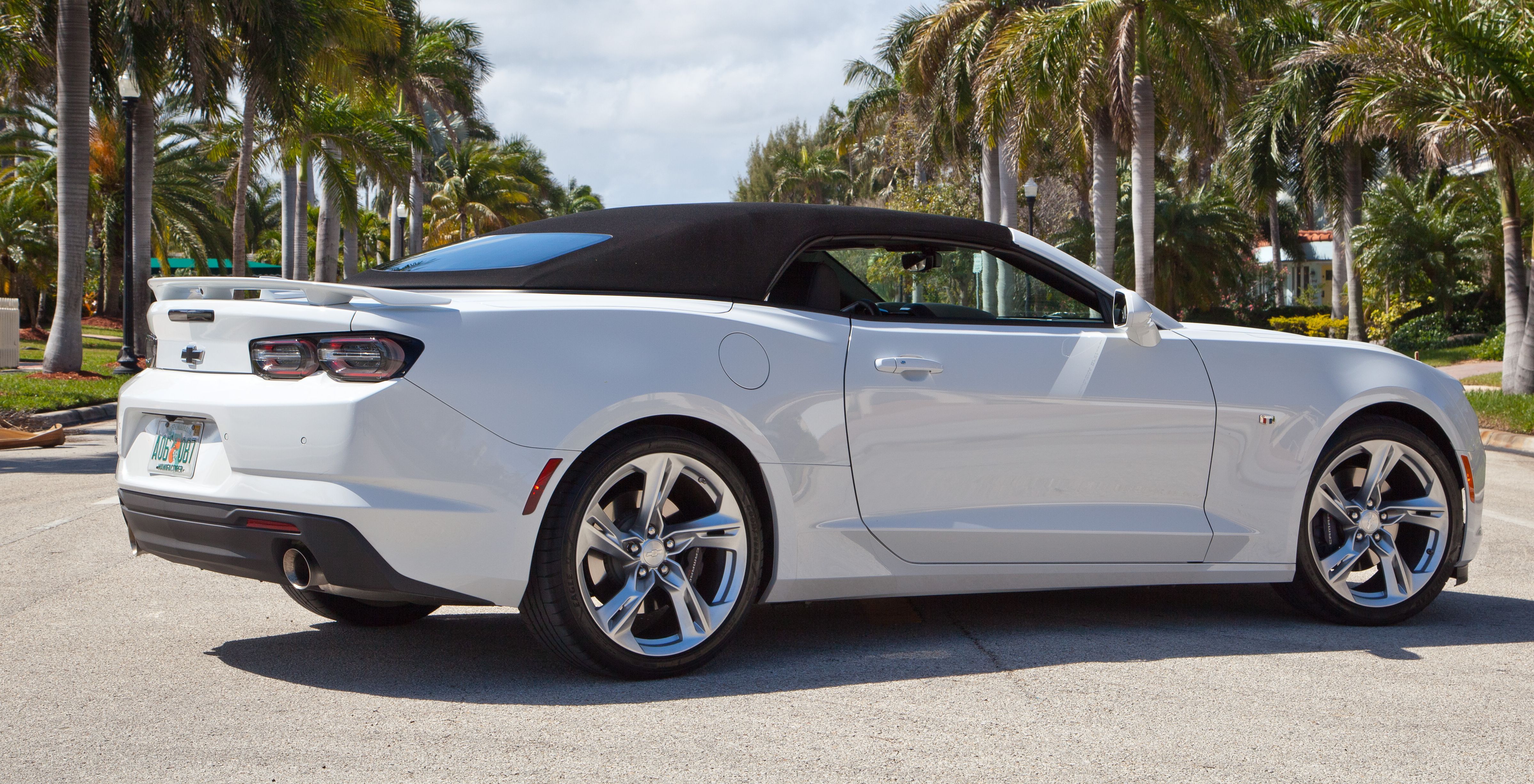In 2019, we got the chance to spend a week with the Ford Mustang GT Convertible,, and it was an absolute blast to drive. In fact, we even described it as presenting a “few reasons why you still need a V-8.” Ever since then, we’ve been wondering about the four-cylinder Mustang, aka the Mustang EcoBoost. Can a Mustang with a four-cylinder engine really live up to the name of a thoroughbred muscle car? Well, after months of asking, a 2020 Ford Mustang EcoBoost Convertible landed in the parking lot outside of TopSpeed HQ. That car was destined to spend the next week with us, and now we want to give you our impression of the beast with a little but dominating heart.
2020 Ford Mustang Four-Cylinder - Driven
- Make: Array
- Model: 2020 Ford Mustang Four-Cylinder - Driven
- Engine/Motor: inline-4
- Horsepower: 310
- [do not use] Vehicle Model: Array
Ford Mustang EcoBoost Convertible Driving Impressions
Even for a convertible, the EcoBoost’s cabin was pretty quiet. With the top up (which wasn’t often, mind you), the wind and road noise is subdued impressively well. You won’t mistake the car for a coupe, of course, but it’s not far off. With the top down at highway speeds, you’ll find you’re still comfortable, and the wind doesn’t beat you to death. Road noise and wind effects with the top down seem to be kept to a minimum. It’s unfortunate that you can’t enjoy the V-8 rumble of the GT, but it’s honestly a fair tradeoff for fuel economy.
We found the front seats to be impressively comfortable with great support. The climate controls are easy to access, and the HVAC vents are placed in a way that you can remain cool in traffic on a hot day with the top down. Once we set the automatic climate control to our personal settings, we didn’t find a need to mess with it again – something that we can’t say for a lot of products.
Overall, the EcoBoost Mustang is a lot of fun to drive, which is surprising for me to say given the four-cylinder under the hood. I have to admit that the performance and driving dynamics have made the idea of a four-cylinder muscle car a little more palatable. I would honestly still go for the V-8 model, but if fuel economy is important to you, you can’t go wrong with the Mustang EcoBoost.
Ford Mustang EcoBoost Convertible Powertrain and Performance
Like the rest of the world, we were quite skeptical when Ford decided to bring the four-cylinder back to the Mustang lineup. It had been a while since the Mustang boasted a four-cylinder and, suffice it to say, the last time the Mustang offered four-cylinder power, it wasn’t exactly noteworthy. That was an entirely different time altogether, though, and this time around, the Mustang EcoBoost is something worthy of discussion. Under that long muscular hood sits a small but powerful 2.3-liter four-cylinder that’s good for more than 300 horsepower and manages to return as much as 31 mpg with a light foot and extend highway driving.
The Mustang is RWD by nature, and it will – at least until a real electric Mustang comes along – stay that way. Our tester included three pedals and a six-speed manual, but an automatic is available if you don’t like to row your own. The Mustang isn’t a light car by any means, though, so we need to find out if that little four-banger can really hold its own under the hood of a big, heavy muscle car.
These are pretty admirable figures given the rather small 2.3-liter displacement, and it’s actually enough to put it near the top of the most powerful four-cylinder engines in production today. In comparison to the only real competitor in this segment – the four-cylinder Chevy Camaro – the Mustang is king, beating it out by 35 horsepower and 55 pound-feet of torque.
In comparison to other Mustangs, the EcoBoost engine isn’t all that bad. The Mustang GT, with a 5.0-liter V-8, is good for 460 horsepower and 420 pound-feet of torque while the Bullitt has the same engine, tuned to deliver 480 ponies and an equal amount of torque.
During our time with the Mustang Ecoboost convertible, we actually managed to hit the same sprint in 5.4 seconds routinely, but we also had perfect conditions, so don’t expect that to happen all of the time. As a frame of reference, the 275-horsepower Camaro is just a hair slower at 5.6 seconds to 60 mph, but Chevy has never published top speed numbers.
On the flip side, the Mustang GT Fastback (with 460 horsepower) can hit 60 mph in 3.9 seconds while the GT350 can get there in 4.2 Seconds. The Shelby GT500 will run the same sprint in as fast as 3.6 seconds, but that’s just a fun fact when you’re actually considering an EcoBoost Mustang.
Form Mustang EcoBoost Fuel Economy
Ford Mustang EcoBoost Suspension and Chassis
Part of what makes the Mustang agile, in general, is the four-wheel independent suspension. This is a common setup these days, but some cars at this price point still feature only front independent. This setup, in combination with rather stiff sway bars, keeps the Mustang planted fairly well. The steering doesn’t feel too heavy, either, and is electrically powered. Ford hasn’t released an official figure for the Mustang’s turning circle, but we’re guessing it’s somewhere in the area of about 37 feet from curb to curb. All told, the Mustang tips the scales at 3,542 pounds, which computes to about 11.42 pounds per horsepower. In contrast, the Camaro is a bit heavier at 3,627 pounds and carries around 13.18 pounds for every horsepower delivered.
Ford Mustang EcoBoost Interior Design
The Mustang offers about as much interior space as you’d expect for a midsize coupe or convertible. Front passengers benefit from 37.6 inches of headroom, 56.3 inches of shoulder room, 54.9 inches of hip room, and 45.1 inches of legroom. The Camaro is actually inferior in front space, with the exception of headroom, which comes in at 0.8-inches higher or 38.4 inches.
Ford Mustang vs Chevrolet Camaro - front interior dimensions
|
Front Headroom |
37.6 Inches |
38.4 Inches |
|---|---|---|
|
Front Shoulder Room |
56.3 Inches |
55.0 Inches |
|
Front Hip Room |
54.9 Inches |
54.5 Inches |
|
Front Leg Room |
45.1 Inches |
43.9 Inches |
In the rear, the Mustang offers up 34.8 inches of headroom, 52.2 inches of shoulder room, 47.4 inches of hip room, and 29 inches of legroom. Again, the Camaro only wins in one category, this time beating the MustangMustang by 0.9 inches of rear legroom with 29.9 inches total.
Ford Mustang vs Chevrolet Camaro - rear interior dimensions
|
Rear Head Room |
34.8 Inches |
33.4 Inches |
|---|---|---|
|
Rear Shoulder Room |
52.2 Inches |
50.3 Inches |
|
Rear Hip Room |
47.4 Inches |
45.7 Inches |
|
Rear Leg Room |
29.0 Inches |
29.9 Inches |
How Much Cargo Room does the Ford Mustang Convertible Have?
Due to the need to store the convertible top, the Mustang Convertible, in all trim levels, offers up just 11.4 cubic-feet of cargo room. That figure comes in 2.1 cubic-feet less than the Mustang coupe’s rating of 13.5 cubic-feet. The Camaro, on the other hand, falls painfully short at just 7.3 cubic-feet, so if you’re someone who carries around more than a few bags of groceries and you want a convertible muscle car, you better go for the Mustang.
Ford Mustang Infotainment System and Technology
The Mustang Ecoboost (in coupe and convertible form) comes with the basic Ford Sync infotainment system. Sync 3 is merely an option that you’ll probably want to pay up for. Standard features include a six-speaker audio system, the FordPass App, and FordPass Connect. If you want Ford’s Co-Pilot360 navigation, you’ll also have to pony up for yet another option. Two, smart-charging USB ports come as standard equipment.
That said, the base system in our tester performed well for what it was. In our experience, the Sync 3 system is beyond marginally better, but for basic use, the standard Sync system will do the job. It’s as responsive as you’d expect, and the few menus available are easy to navigate and understand.
Other standard tech includes:
-* Autolights with wiper activation
-* Intelligent access with push-button start
-* MyKey App
-* Track Apps
-* Rear View Camera
-*Active Noise Cancellation
-*Electronic Locking Center console
Optional features include
-* Adaptive Cruise Control
-* Rain Sensing Wipers
-* Pre-collision assist
-* Pedestrian Detection
-* Auto Emergency Braking
-* Forward Collision Warning
-* Lane Keep Assist
-* Reverse Sensing System
-* Sync 3 Infotainment System
-* Voice-Activated Navigation
-* Sirius XM Radio
Ford Mustang Ecoboost Convertible Exterior Design
Some automakers make it a habit to intentionally tone down lesser models and make higher-end models look better. Ford, on the other hand, doesn’t play those kinds of politics.
What’s more notable about the Mustang Convertible, though, is how well ford managed to keep the muscular look when adding in all the convertible bits. Even with the convertible top down, the car still looks like a proper muscle car. If you were looking at it in the dark with the top up, you’d be hard-pressed to determine whether it’s a coupe or convertible. Needless to say, the Mustang is a looker regardless of whether it carries the coupe or convertible nomenclature.
How Big is the Ford Mustang?[/q[
It also rides on a 107.1-inch wheelbase and sits just 5.1 inches off the ground. Front wheel track comes in at 62.3 inches while the rear wheels carry a 64.9-inch track. In terms of garaging, the Mustang will fit in most garages; however, if you have a small one-car garage, you might want to take some measurements as the Mustang might take up a little more space than you actually expect. A 1.5-car garage would definitely be the minimum ideal garage setting.
In comparison, the Mustang is larger than the Camaro in every regard, but the Camaro has a 110.7-inch wheelbase, an extra 2.8 inches over that of the Mustang.
Ford Mustang vs Chevrolet Camaro - exterior dimensions
|
Length |
188.5 Inches |
188.3 Inches |
|---|---|---|
|
Width |
75.4 Inches |
74.7 Inches |
|
Height |
54.3 Inches |
52.9 Inches |
|
Wheelbase |
107.1 Inches |
110.7 Inches |
|
Front Track |
62.3 Inches |
63.0 Inches |
|
Rear Track |
64.9 Inches |
62.9 Inches |
|
Curb Weight |
3,542 Pounds |
3,627 Pounds |
Is the Ford Mustang EcoBoost Convertible Better Than the Chevy Camaro Convertible?
|
|
ids=918611,918612 |
no_overlay=false |
before_label=2020 Ford Mustang |
after_label=2020 Chevrolet Camaro> |
Comparing the Mustang Convertible to the Camaro convertible isn’t as simple as it sounds. Usually, GM cars are plastered with cheap plastic, lackluster materials, and, well, not the best technology. The 2020 Camaro, however, even in base trim, feels a little more upscale than the Mustang Ecoboost. It features a small infotainment display, but it’s definitely more modern feeling and advanced than the basic Ford Sync system. In our experience, the seats were also a bit more comfortable. In terms of exterior design, the Camaro comes off as just a little more aggressive, almost to the point of looking like it’s trying too hard for something hiding a sub-300-horsepower four-banger under the hood.
|
|
ids=918613,918614 |
no_overlay=false |
before_label=2020 Ford Mustang |
after_label=2020 Chevrolet Camaro> |
Speaking of that four-banger, the Camaro’s 2.0-liter is good for 275 horsepower and 295 pound-feet of torque. That’s 35 horsepower and 55 pound-feet shy of the Mustang EcoBoost, but the Camaro still holds its own with a 5.6-second sprint to 60 mph. It also features a four-wheel independent suspension system, electronic power steering with a 38.1-foot turning circle, and 18-inch wheels, which are actually larger than what the Mustang offers without looking too gaudy. Fuel economy comes in just shy of the Mustang at 20 mpg in the city, 30 mpg on the highway, and 23 mpg combined – not a deal-breaker unless fuel economy is extremely important to you. The Camaro’s biggest selling point is that the 1LT four-cylinder Convertible commands $31,500 as opposed to the Mustang’s sticker price of $32,170.
Ford Mustang vs Chevrolet Camaro specifications
|
Ford Mustang EcoBoost |
Chevy Camaro |
Engine |
2.3-Liter Inline-Four |
2.0-Liter Inline-Four |
|
|---|---|---|---|---|---|
|
Transmission |
6MT |
6MT |
|||
|
Horsepower |
310 HP |
275 HP |
|||
|
Torque |
350 LB-FT |
295 LB-FT |
|||
|
Driveline |
RWD |
RWD |
|||
|
Fuel |
Premium |
Premium |
|||
|
Fuel Economy |
21/31/25 |
20/30/23 |
|||
|
Fuel Capaciy |
15.5 Gal |
19.0 Gal |
|||
|
Suspension |
Four-Wheel Independent |
Four-Wheel Independent |
|||
|
Steering |
Electric |
Electric |
|||
|
Turning Circle |
TBA |
38.1 Feet |
|||
|
Front Tire Size |
P235/55R17 |
P245/50R18 |
|||
|
Rear Tire Size |
P235/55R17 |
P245/50R18 |
|||
|
0-60 MPH |
5.5 Seconds |
5.6 Seconds |
|||
|
Top Speed |
155 MPH |
TBA |
|||
|
Power-to-Weight |
11.42 LBS Per HP |
13.18 LBS Per HP |
FAQ
Q: How Powerful is the Ford EcoBoost Mustang?
The Ford Mustang EcoBoost delivers 310 horsepower and 350 pound-feet of torque
Q: How Fast is the Ford Mustang EcoBoost?
The four-cylinder Mustang EcoBoost can deliver a 5.5-second sprint to 60 mph and tops out at around 155 mph.
Q: How Much Interior Space Does the Mustang Offer?
The Ford Mustang measures 188.5 inches long, 75.4 inches wide, and 54.3 inches tall.
Q: How Much Cargo Room does the Ford Mustang Convertible Have?
Q: How Big is the Ford Mustang?[/q[}1} <doc913239|center> [a]The Ford Mustang measures 188.5 inches long, 75.4 inches wide, and 54.3 inches tall.[/a] It also rides on a 107.1-inch wheelbase and sits just 5.1 inches off the ground. Front wheel track comes in at 62.3 inches while the rear wheels carry a 64.9-inch track. In terms of garaging, the Mustang will fit in most garages; however, if you have a small one-car garage, you might want to take some measurements as the Mustang might take up a little more space than you actually expect. A 1.5-car garage would definitely be the minimum ideal garage setting. In comparison, the Mustang is larger than the Camaro in every regard, but the Camaro has a 110.7-inch wheelbase, an extra 2.8 inches over that of the Mustang. <table918607> {0{Is the Ford Mustang EcoBoost Convertible Better Than the Chevy Camaro Convertible?}0} <split|ids=918611,918612|no_overlay=false|before_label=2020 Ford Mustang|after_label=2020 Chevrolet Camaro> Comparing the Mustang Convertible to the Camaro convertible isn’t as simple as it sounds. Usually, GM cars are plastered with cheap plastic, lackluster materials, and, well, not the best technology. The 2020 Camaro, however, even in base trim, feels a little more upscale than the Mustang Ecoboost. It features a small infotainment display, but it’s definitely more modern feeling and advanced than the basic Ford Sync system. In our experience, the seats were also a bit more comfortable. In terms of exterior design, the Camaro comes off as just a little more aggressive, almost to the point of looking like it’s trying too hard for something hiding a sub-300-horsepower four-banger under the hood. <split|ids=918613,918614|no_overlay=false|before_label=2020 Ford Mustang|after_label=2020 Chevrolet Camaro> Speaking of that four-banger, the Camaro’s 2.0-liter is good for 275 horsepower and 295 pound-feet of torque. That’s 35 horsepower and 55 pound-feet shy of the Mustang EcoBoost, but the Camaro still holds its own with a 5.6-second sprint to 60 mph. It also features a four-wheel independent suspension system, electronic power steering with a 38.1-foot turning circle, and 18-inch wheels, which are actually larger than what the Mustang offers without looking too gaudy. Fuel economy comes in just shy of the Mustang at 20 mpg in the city, 30 mpg on the highway, and 23 mpg combined – not a deal-breaker unless fuel economy is extremely important to you. The Camaro’s biggest selling point is that the 1LT four-cylinder Convertible commands $31,500 as opposed to the Mustang’s sticker price of $32,170. <table918608>

